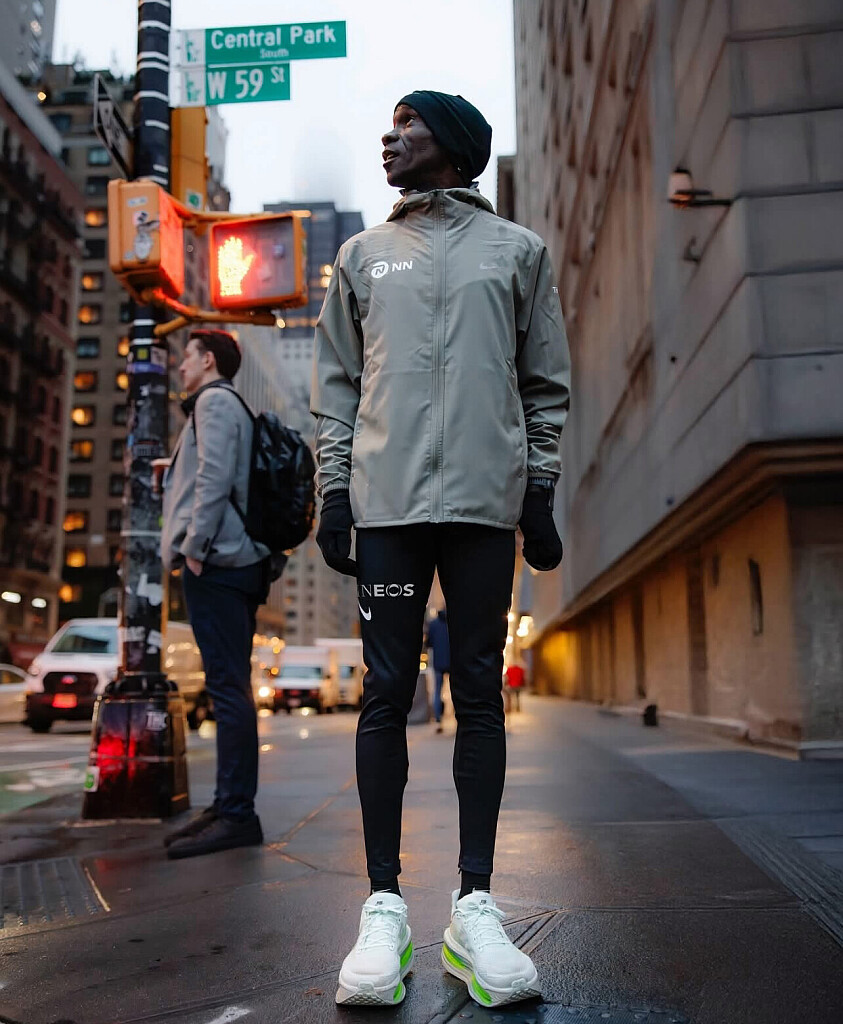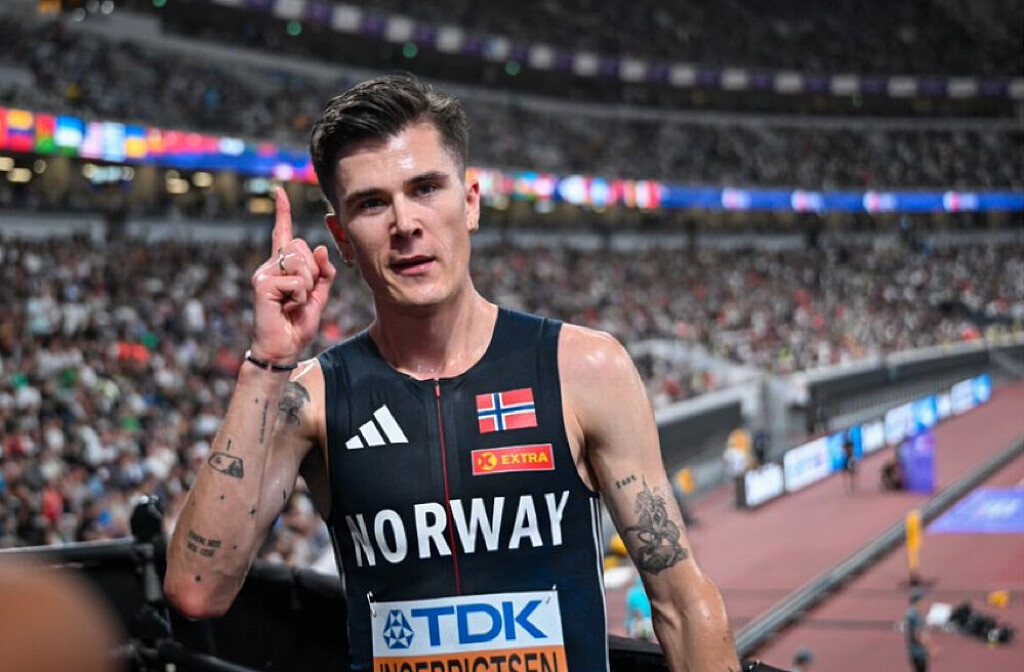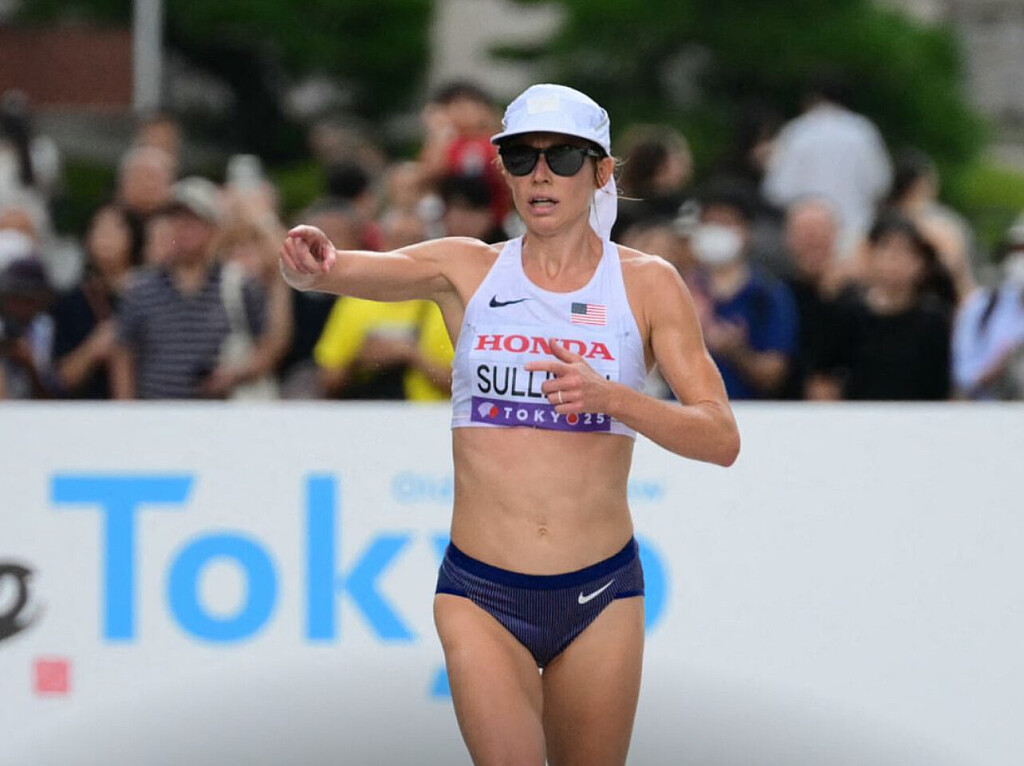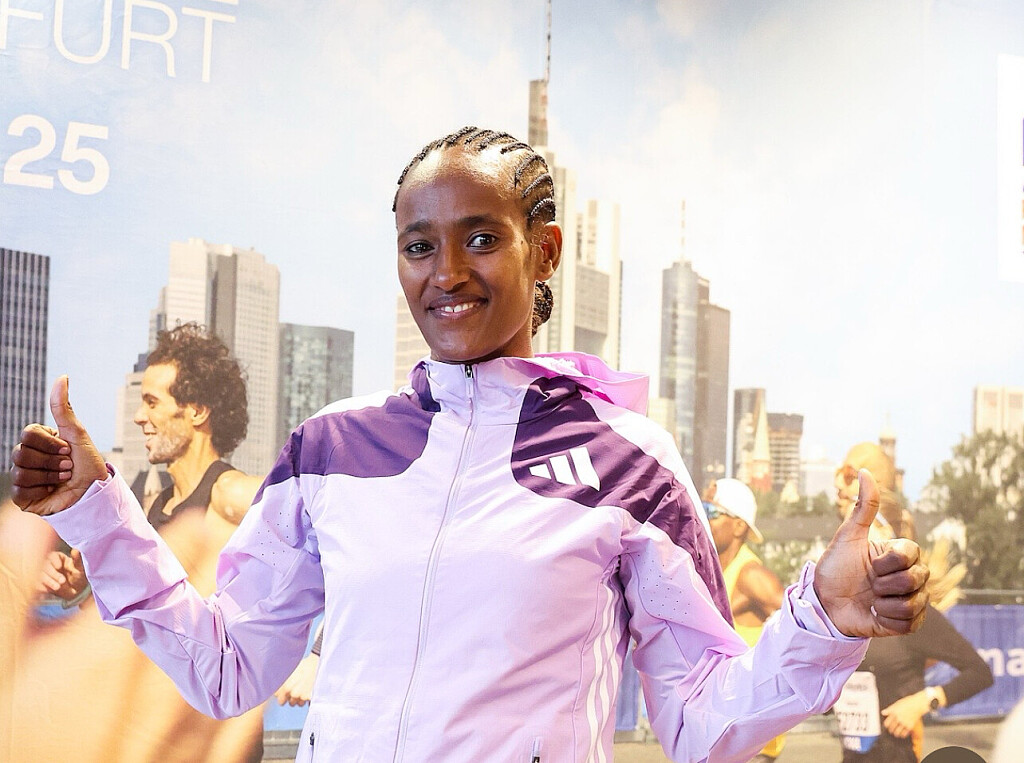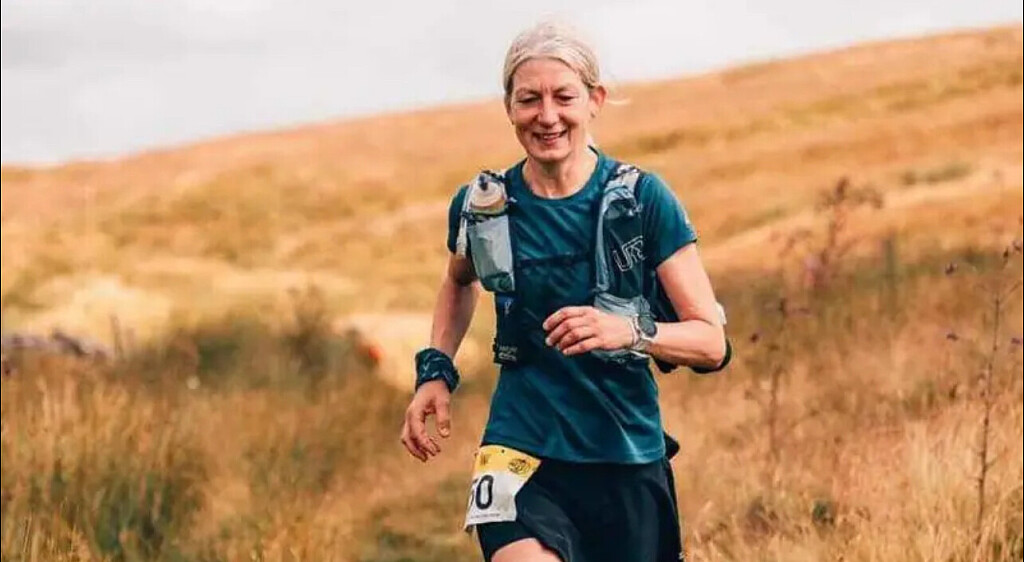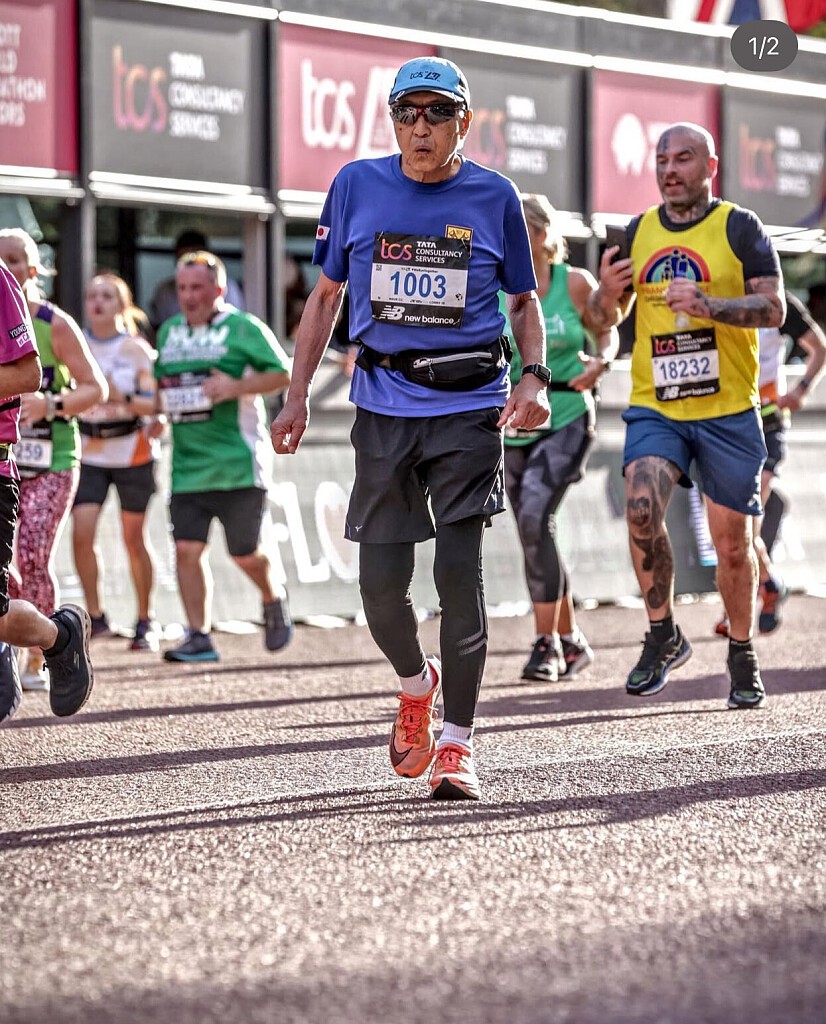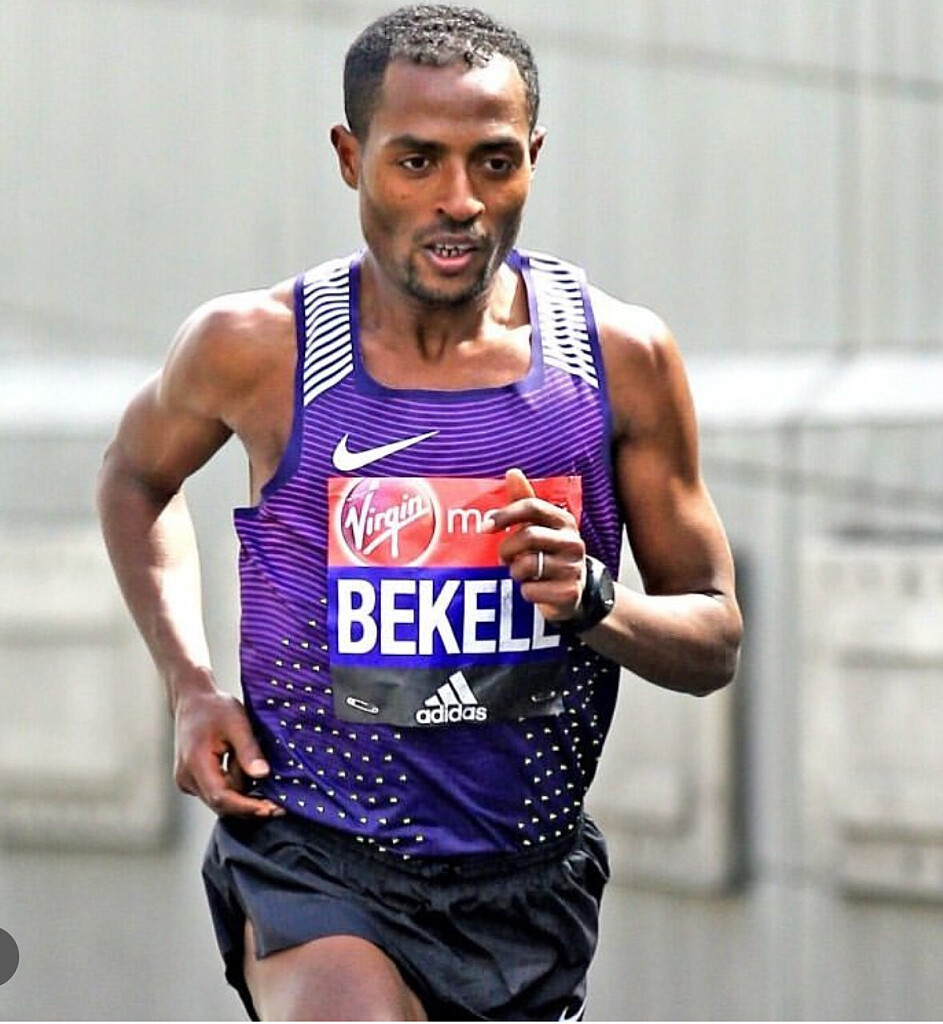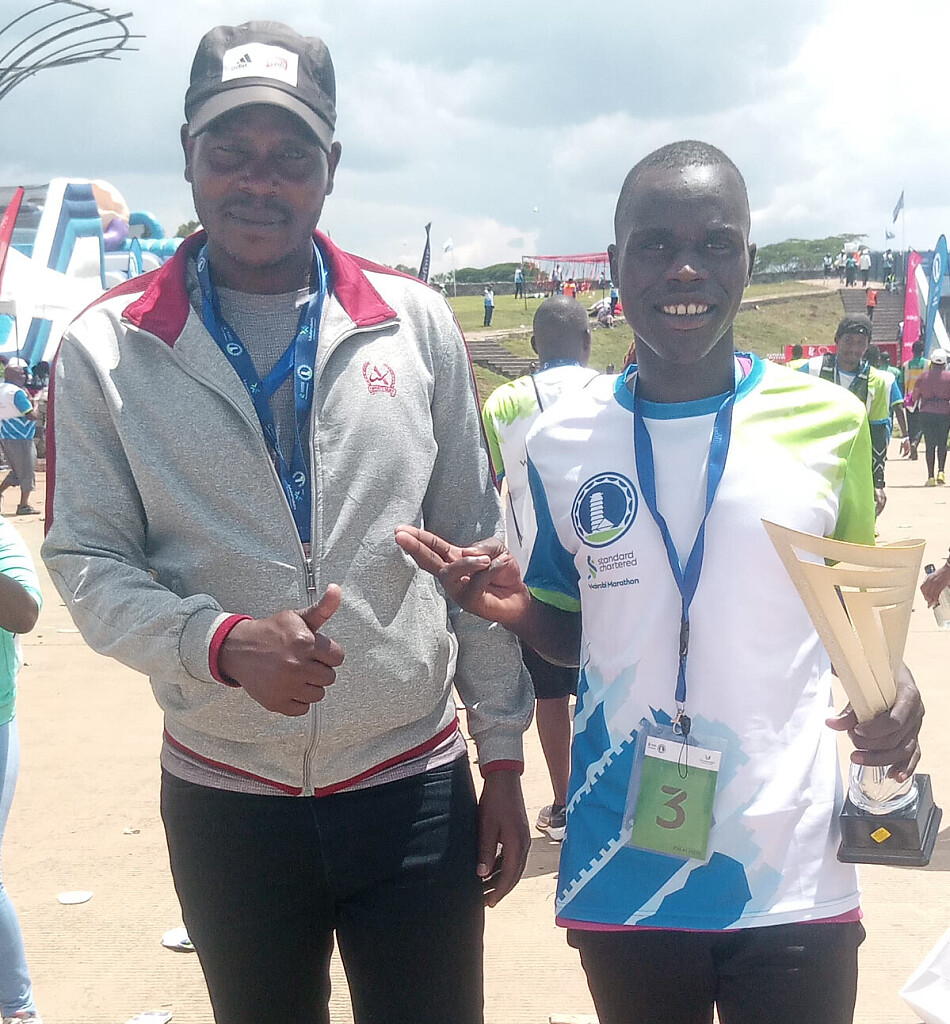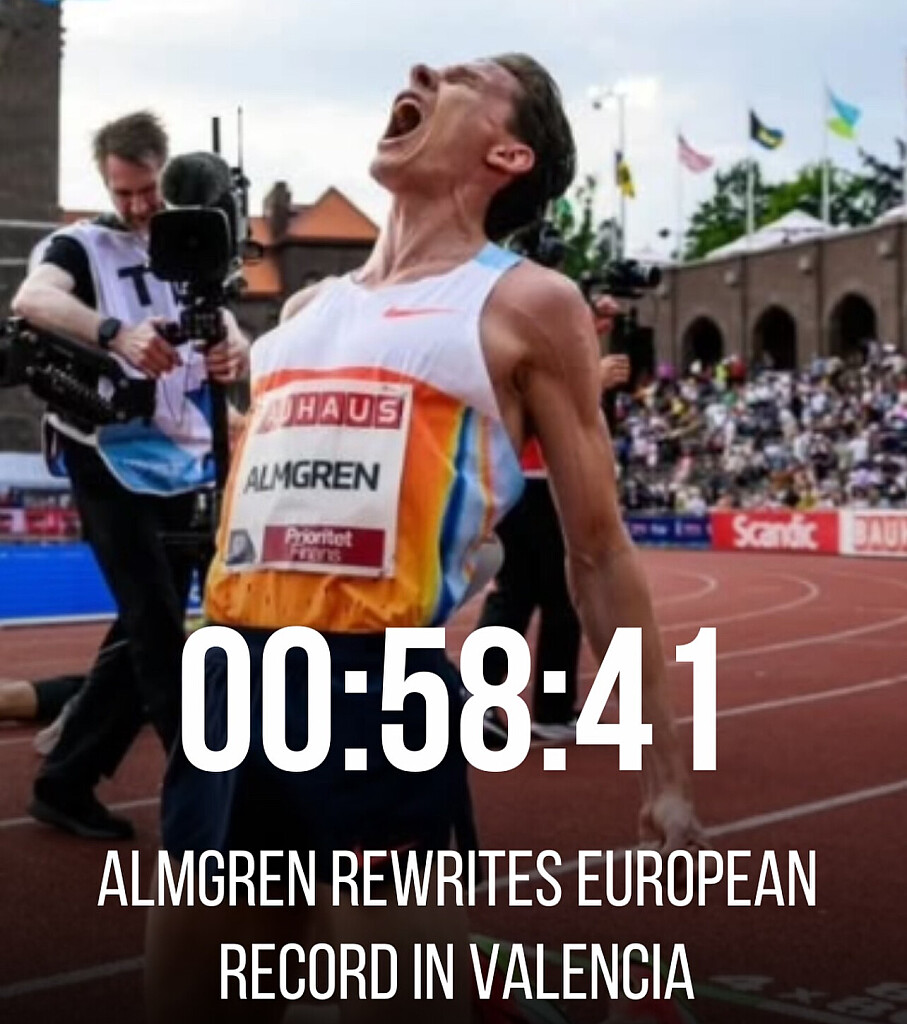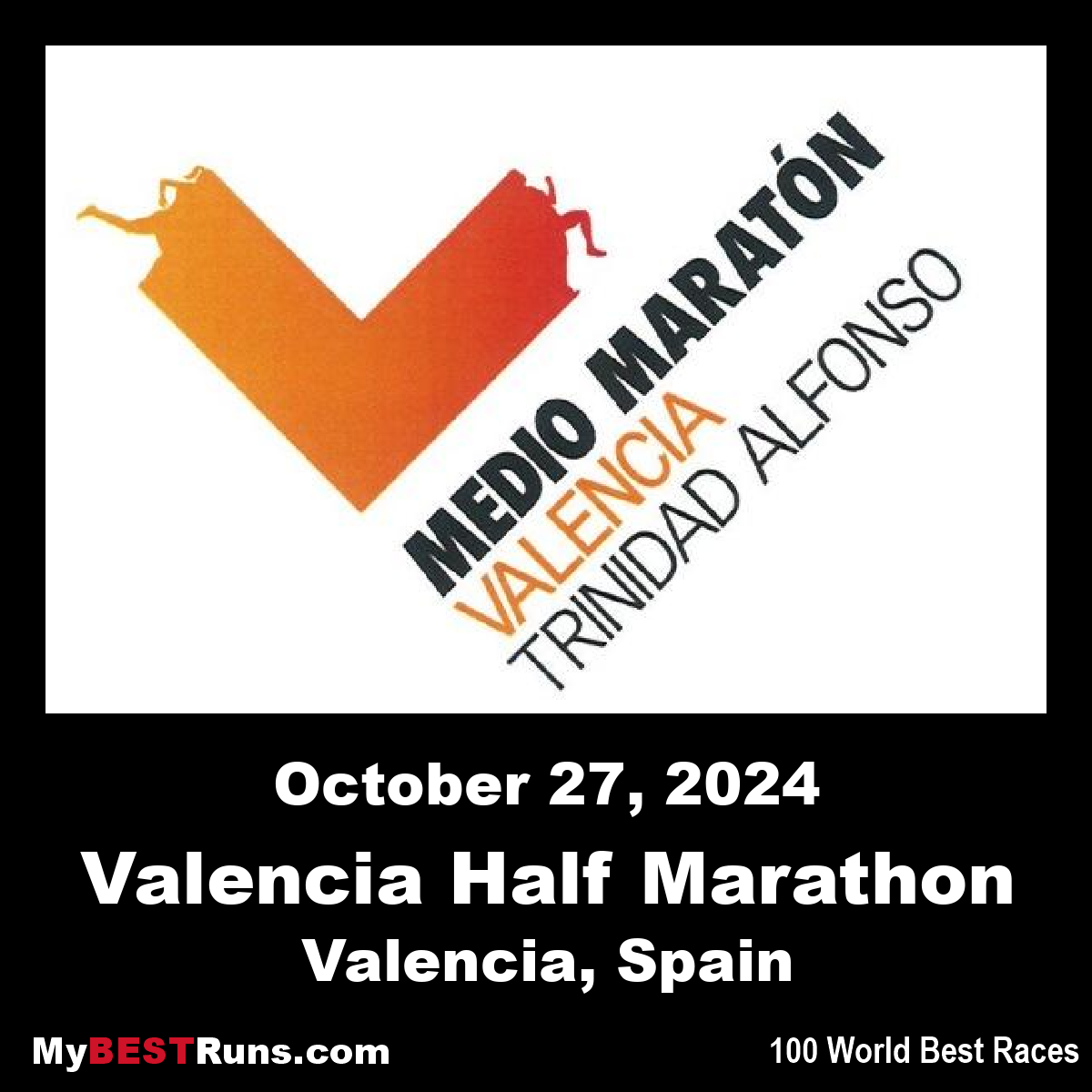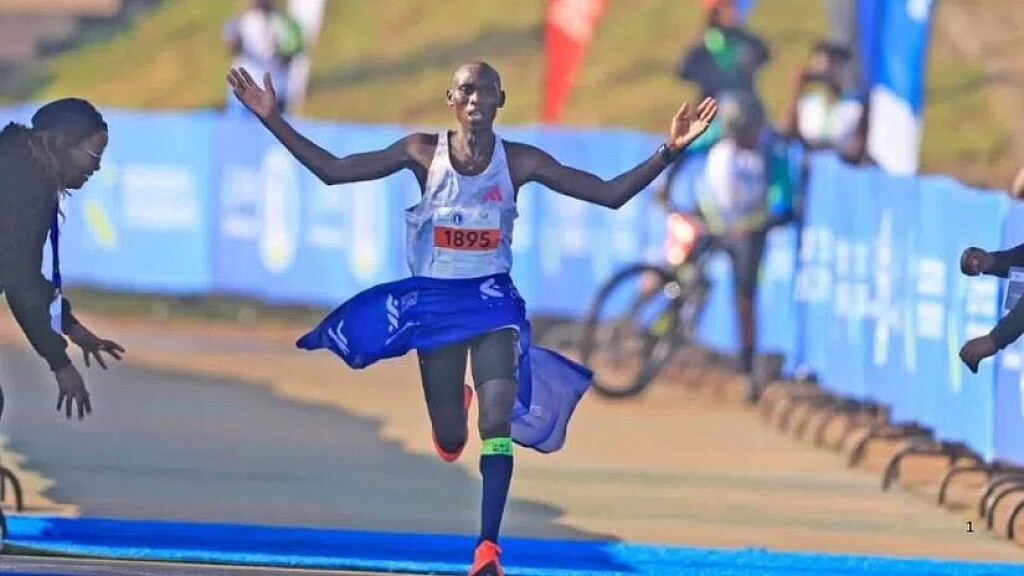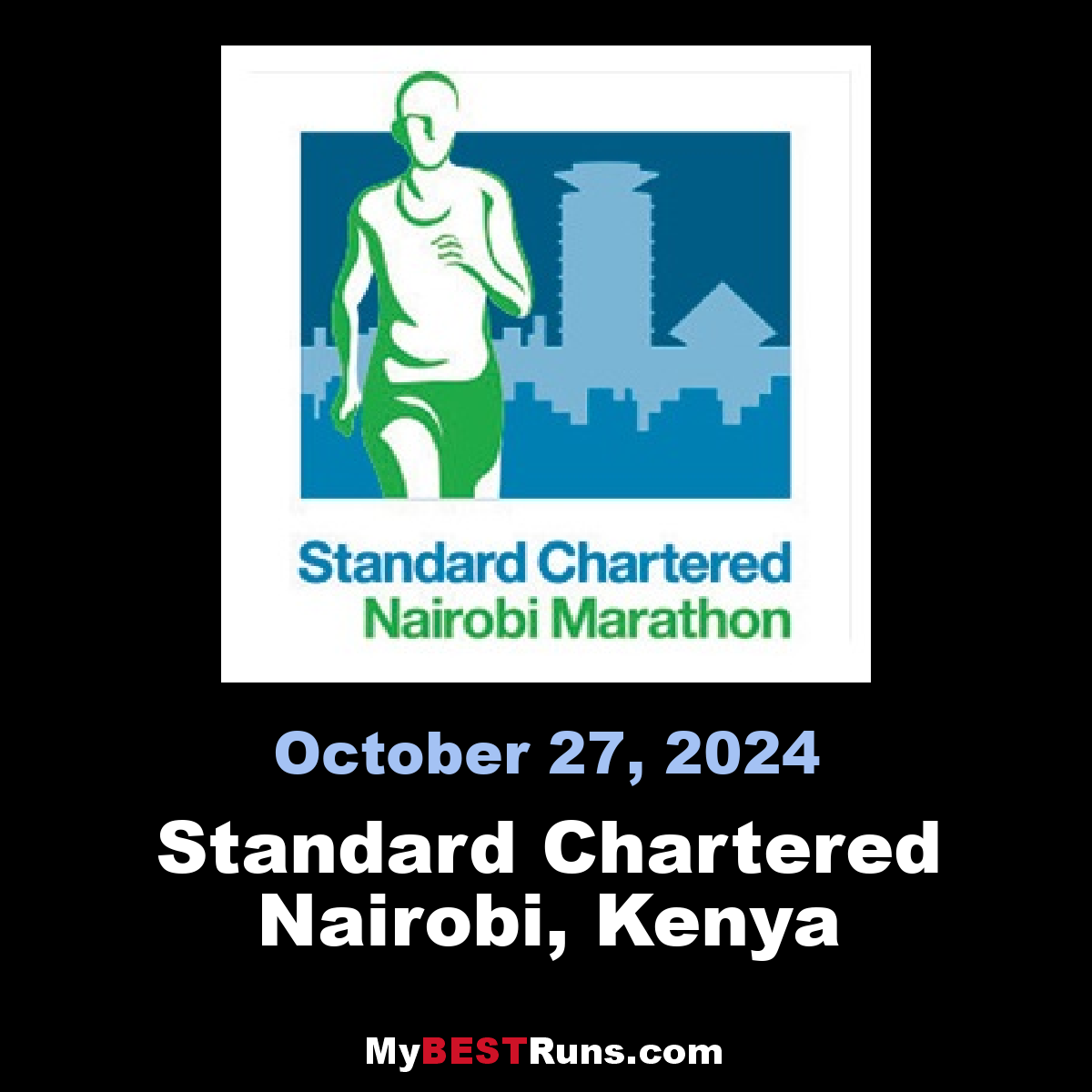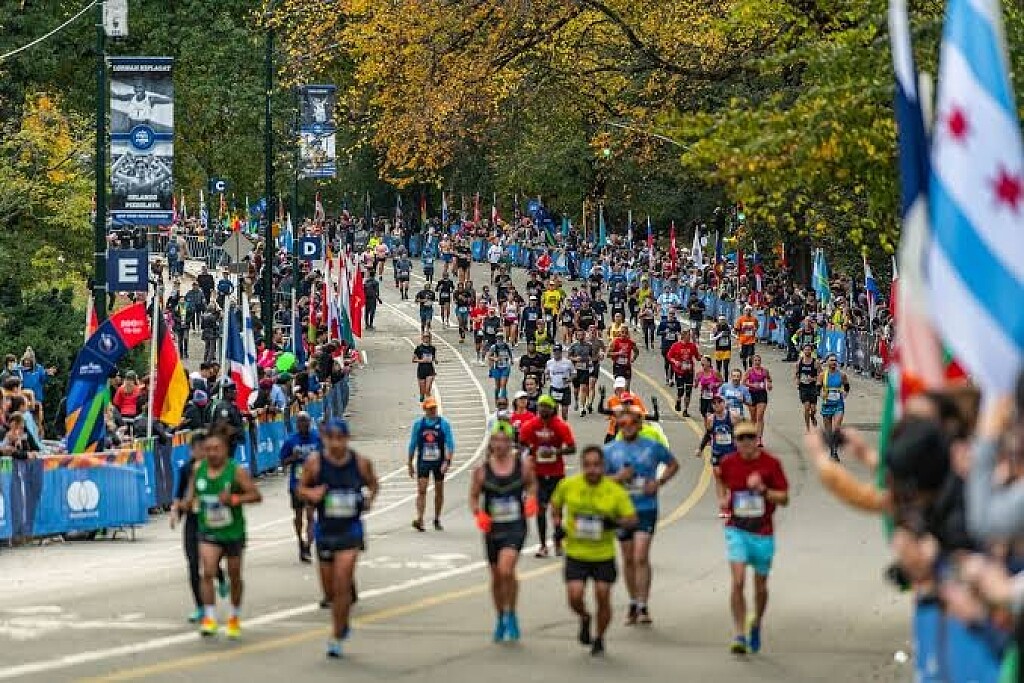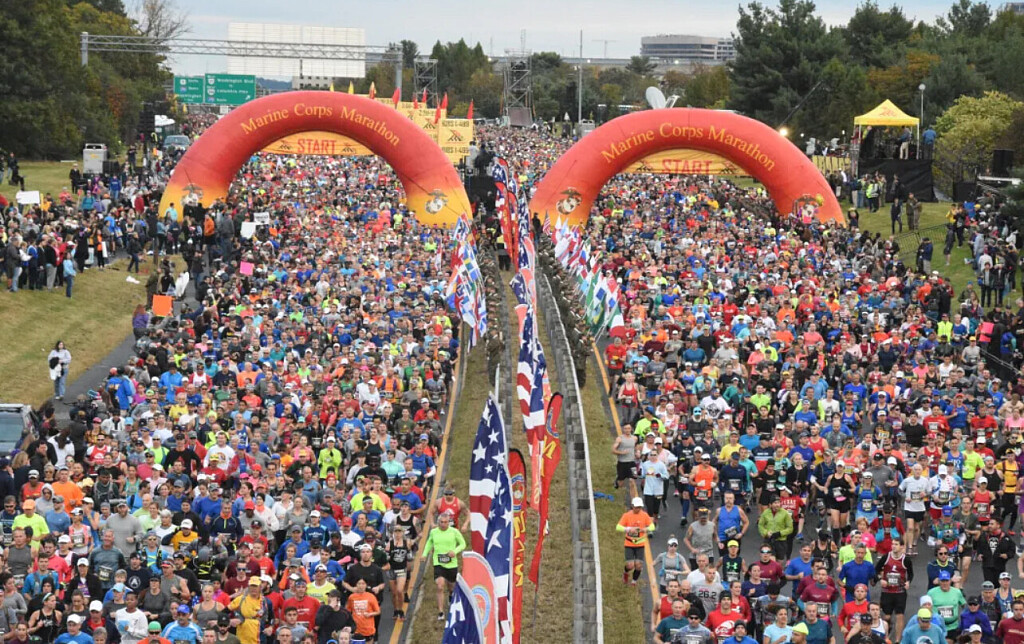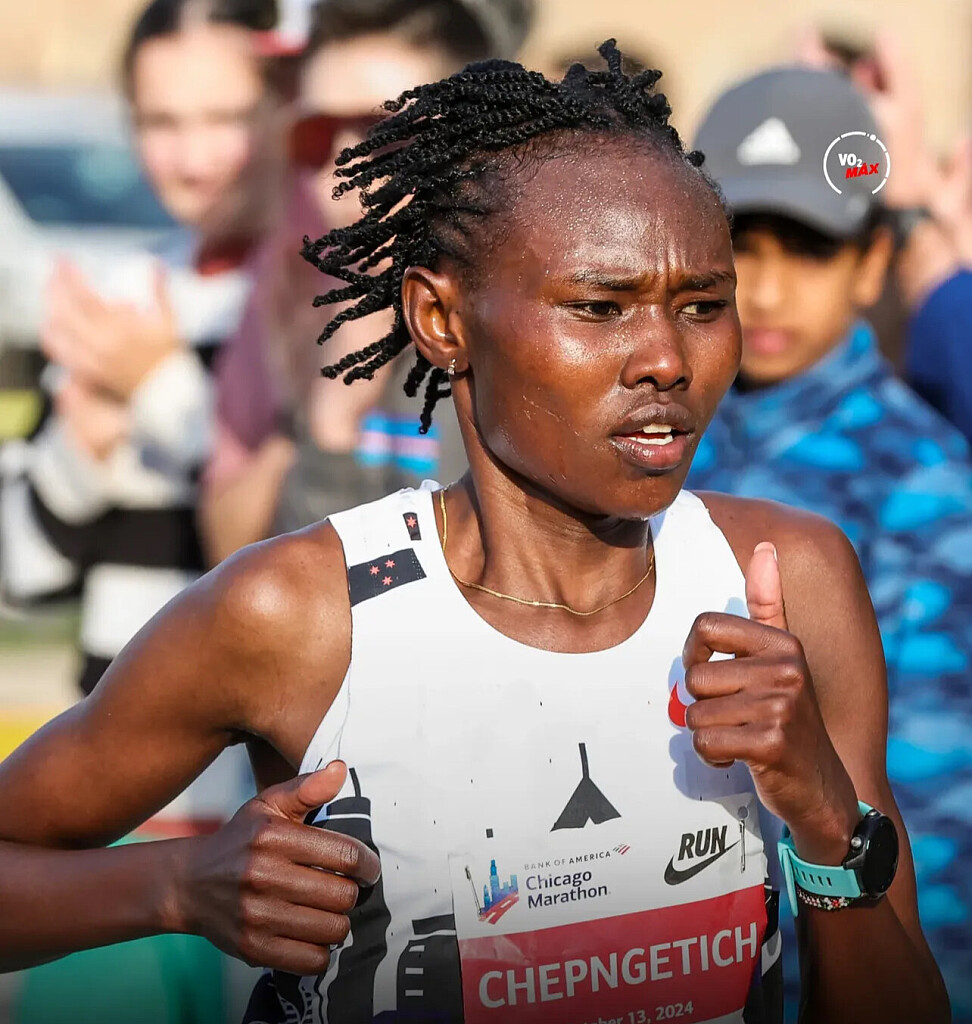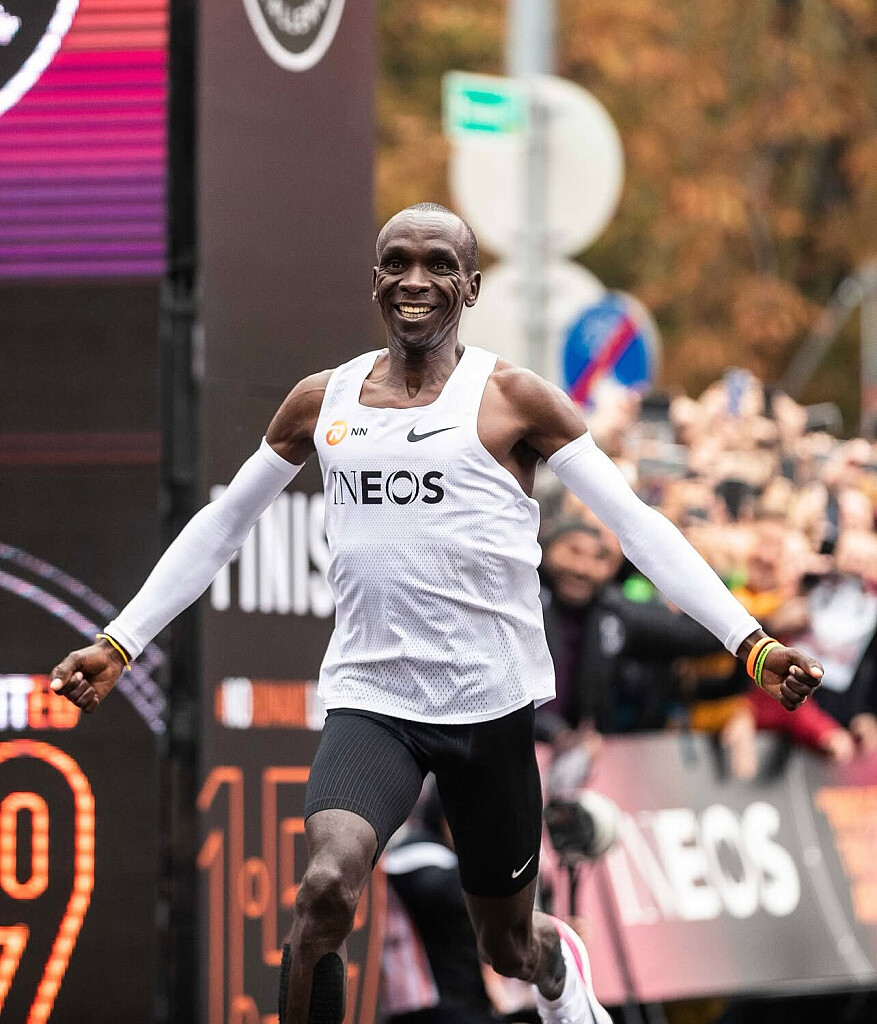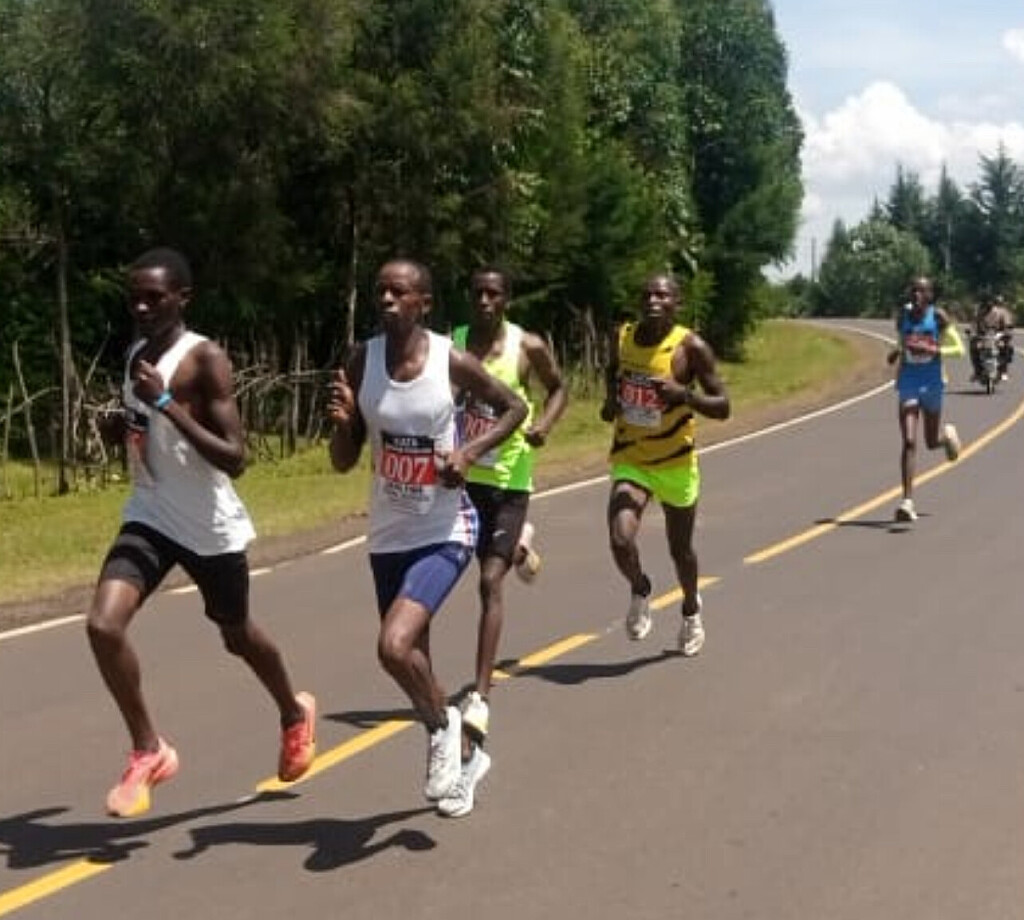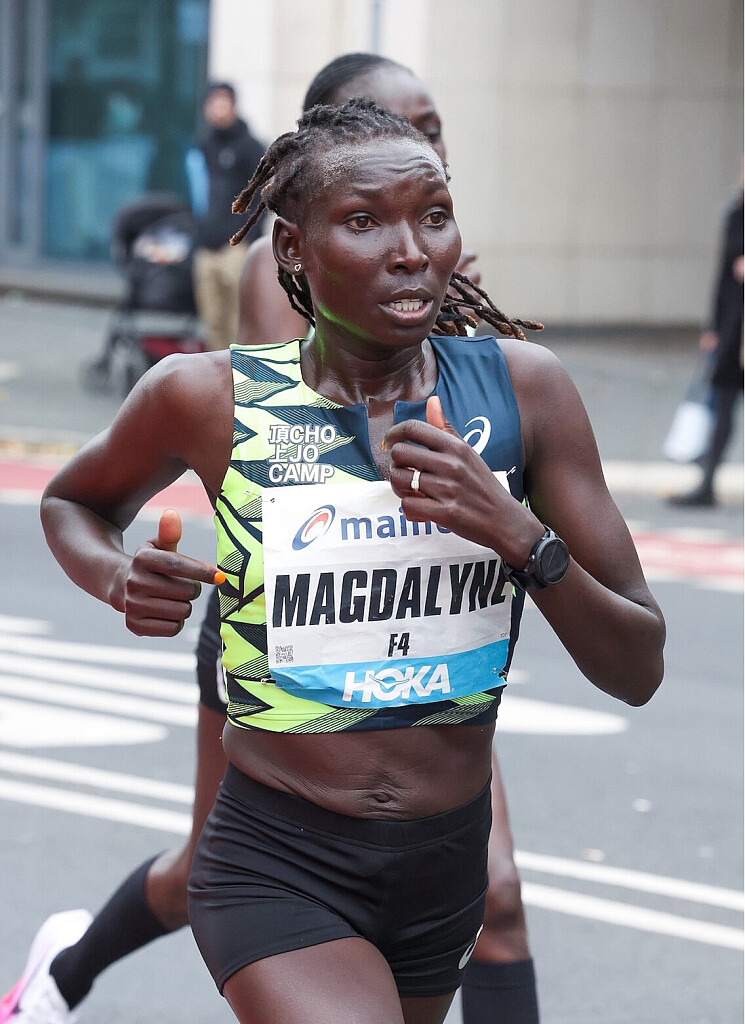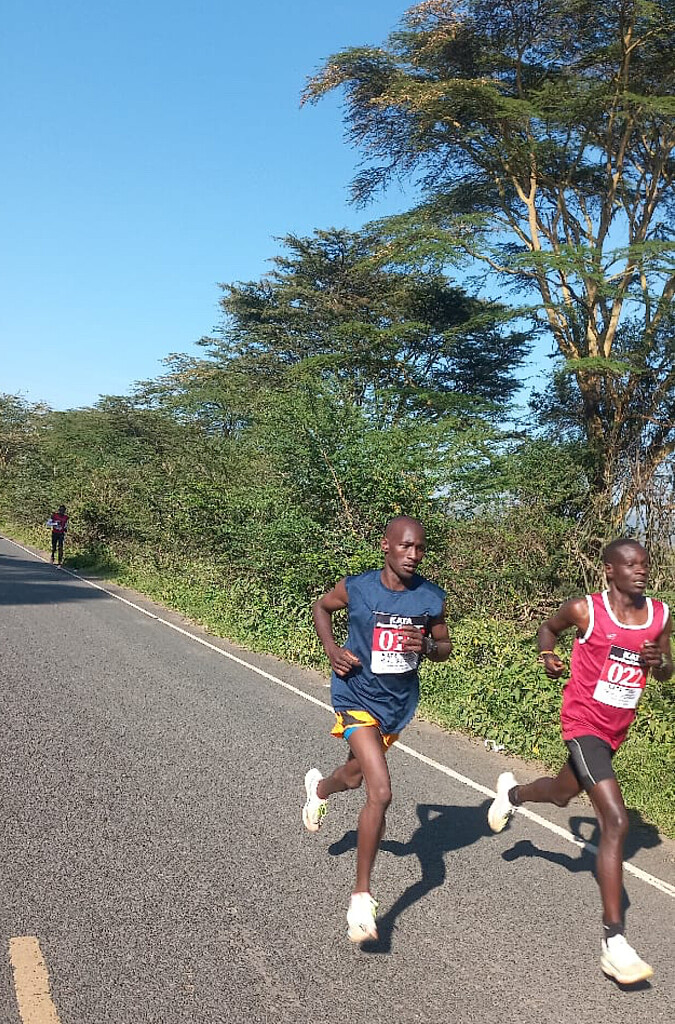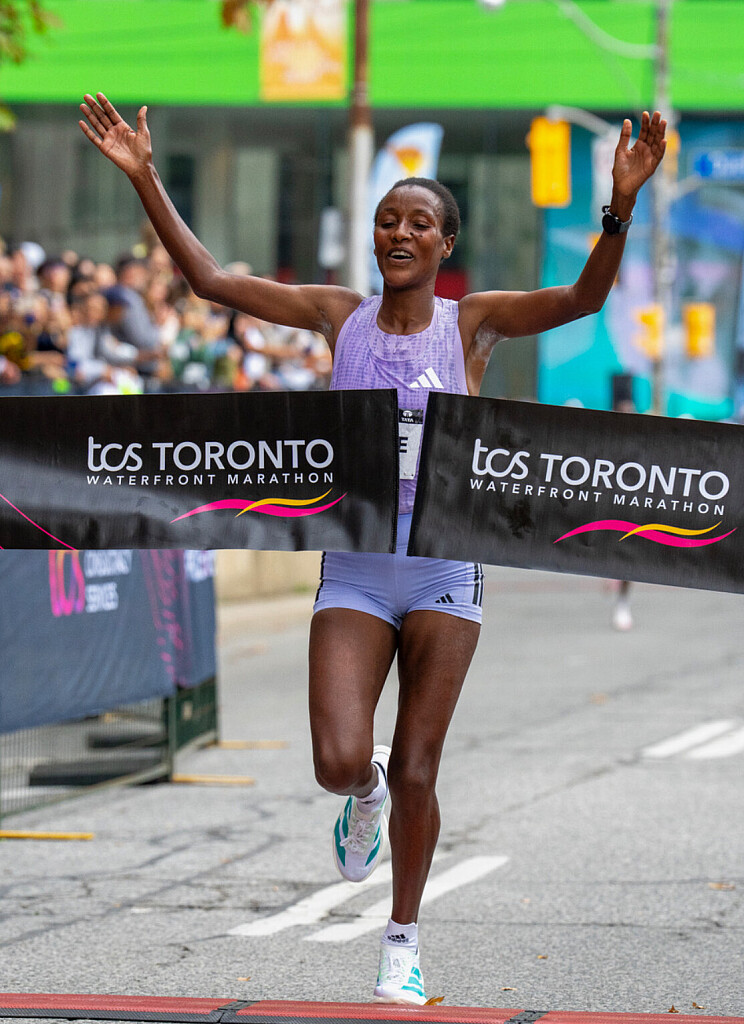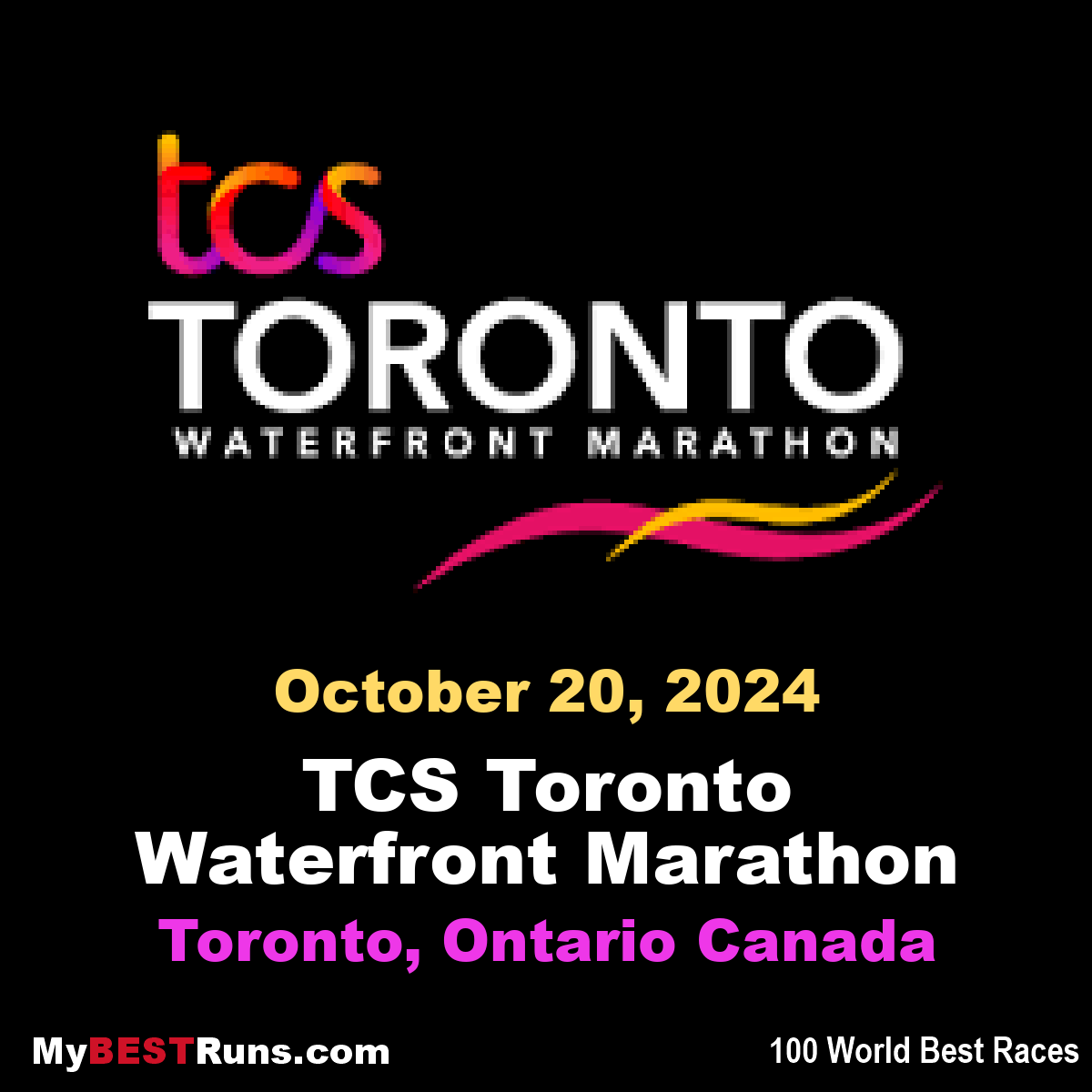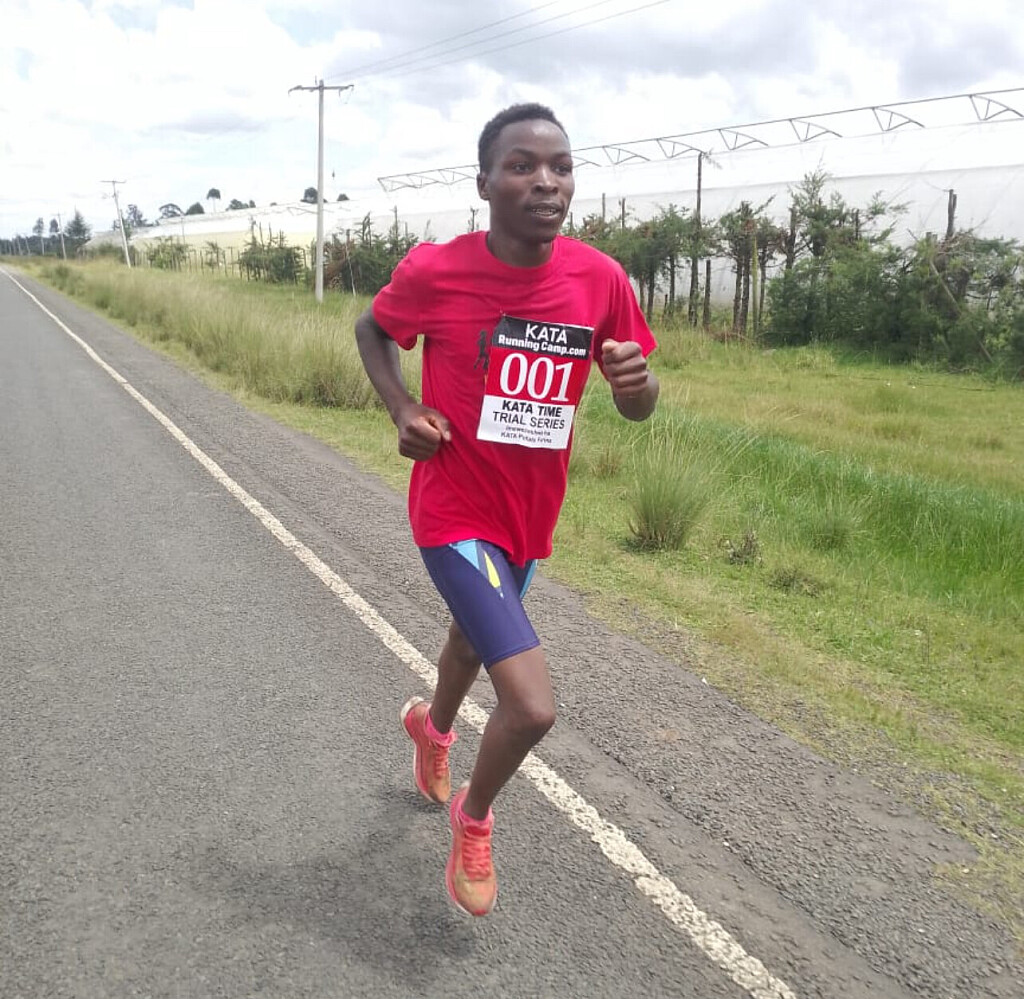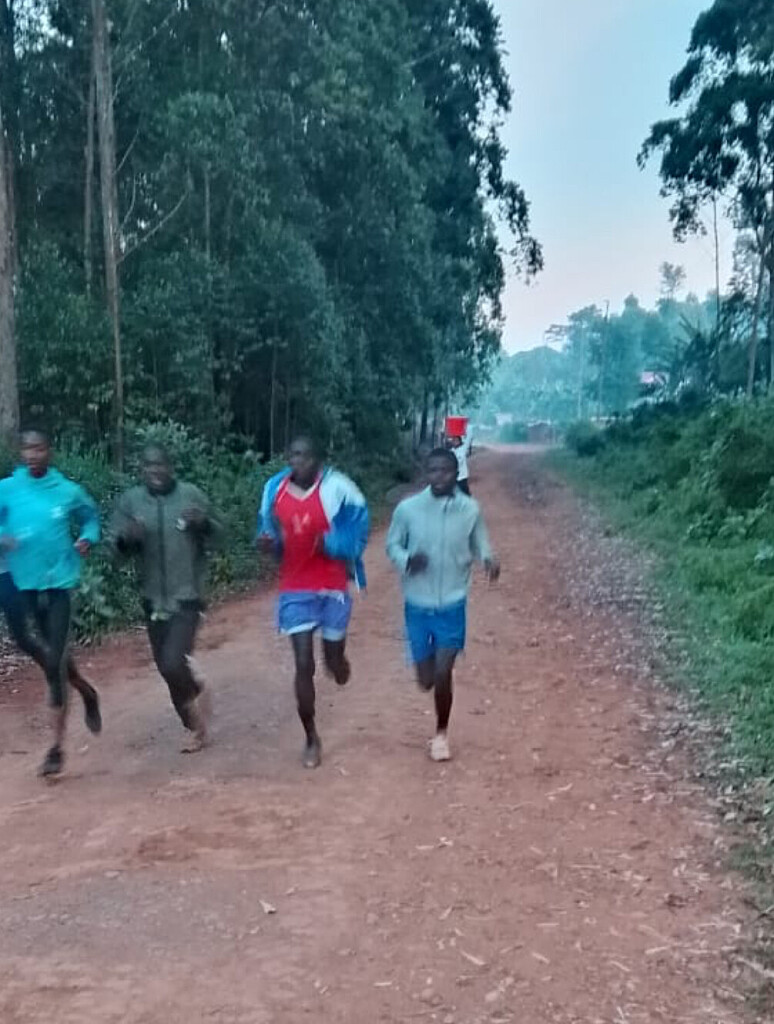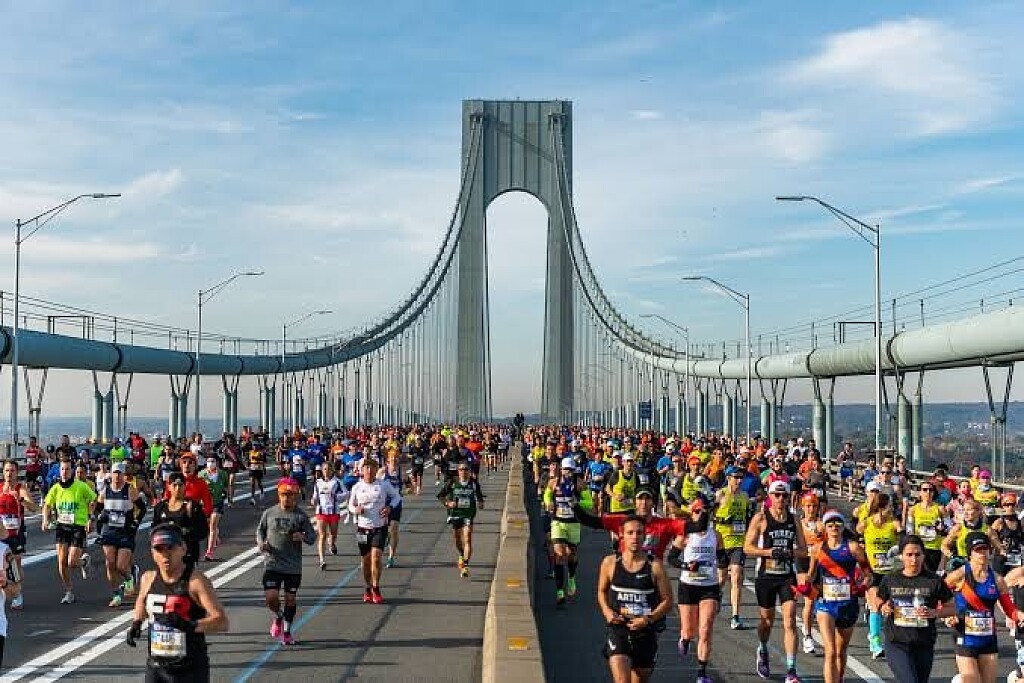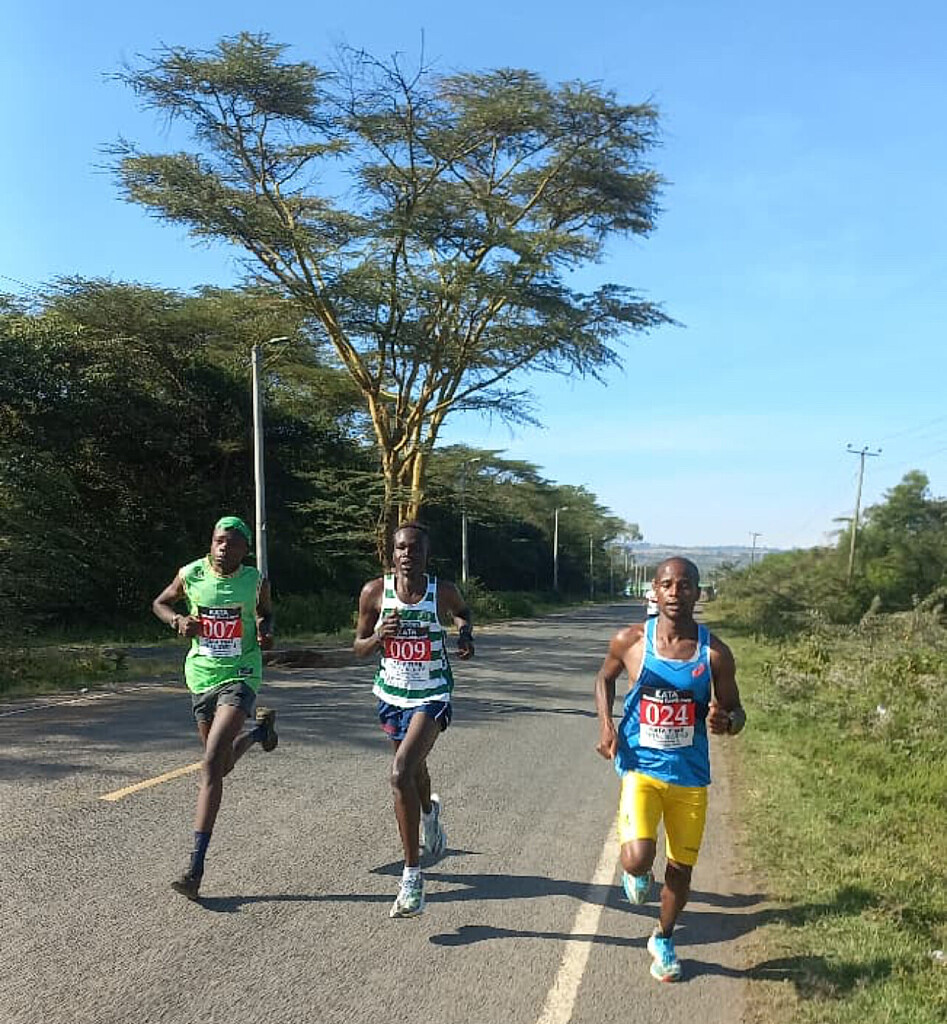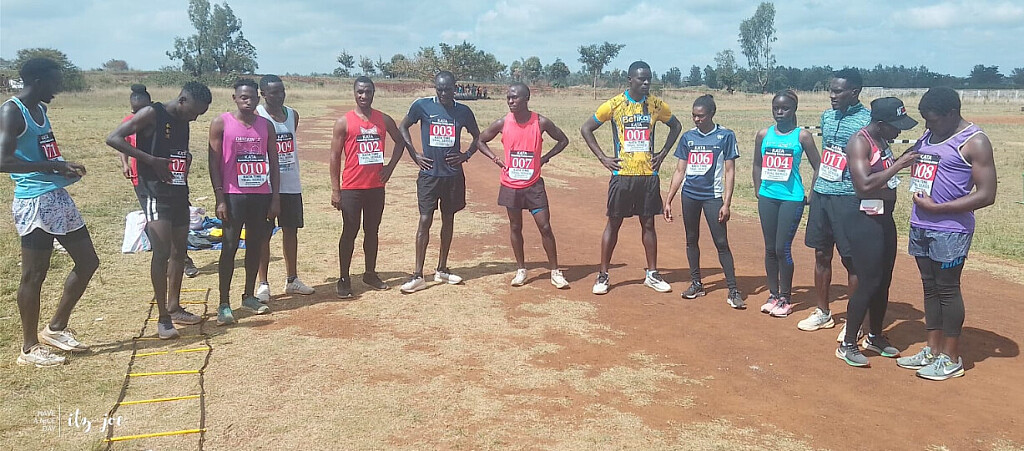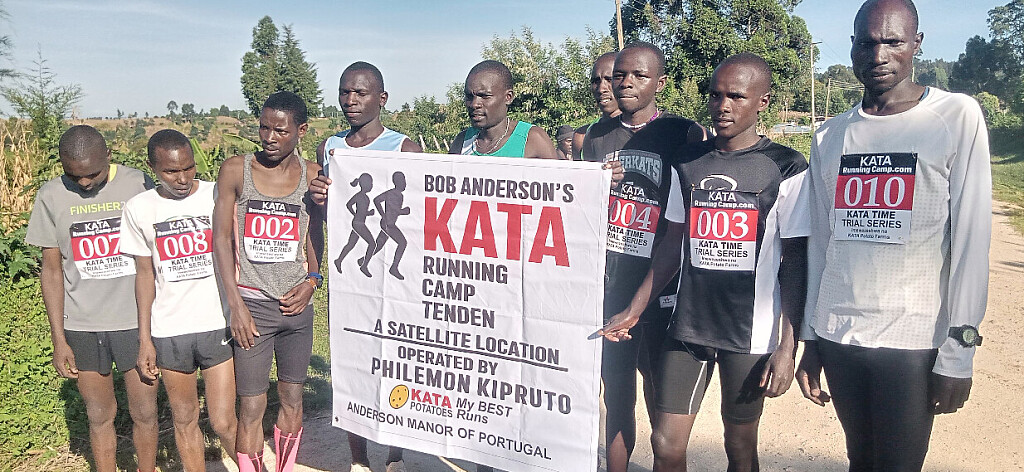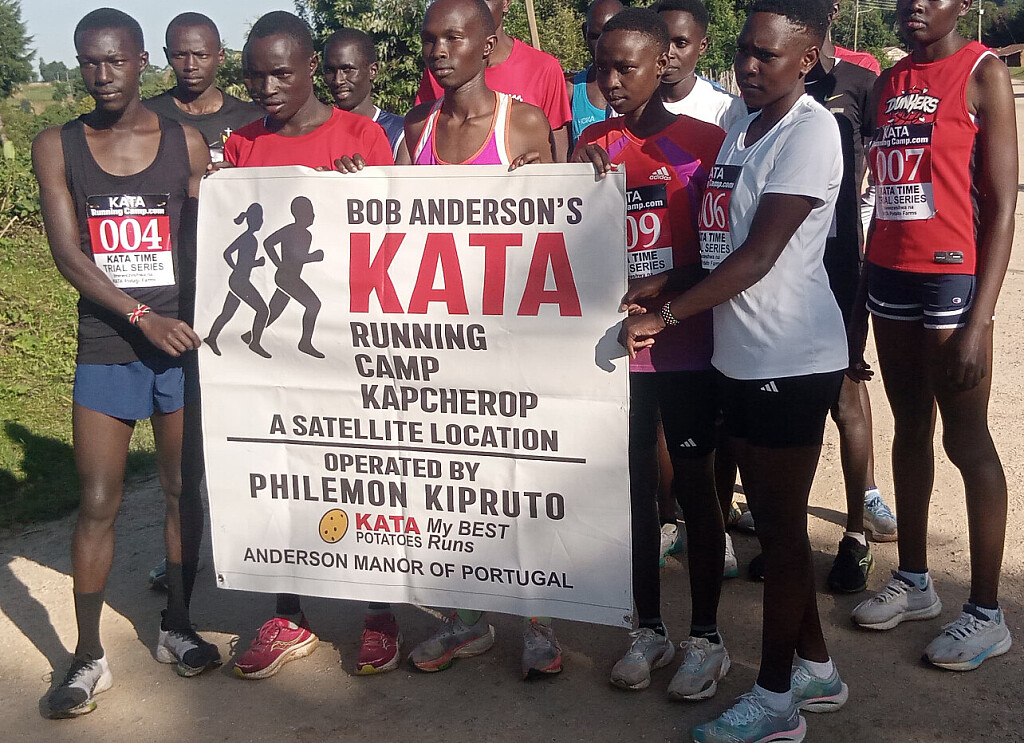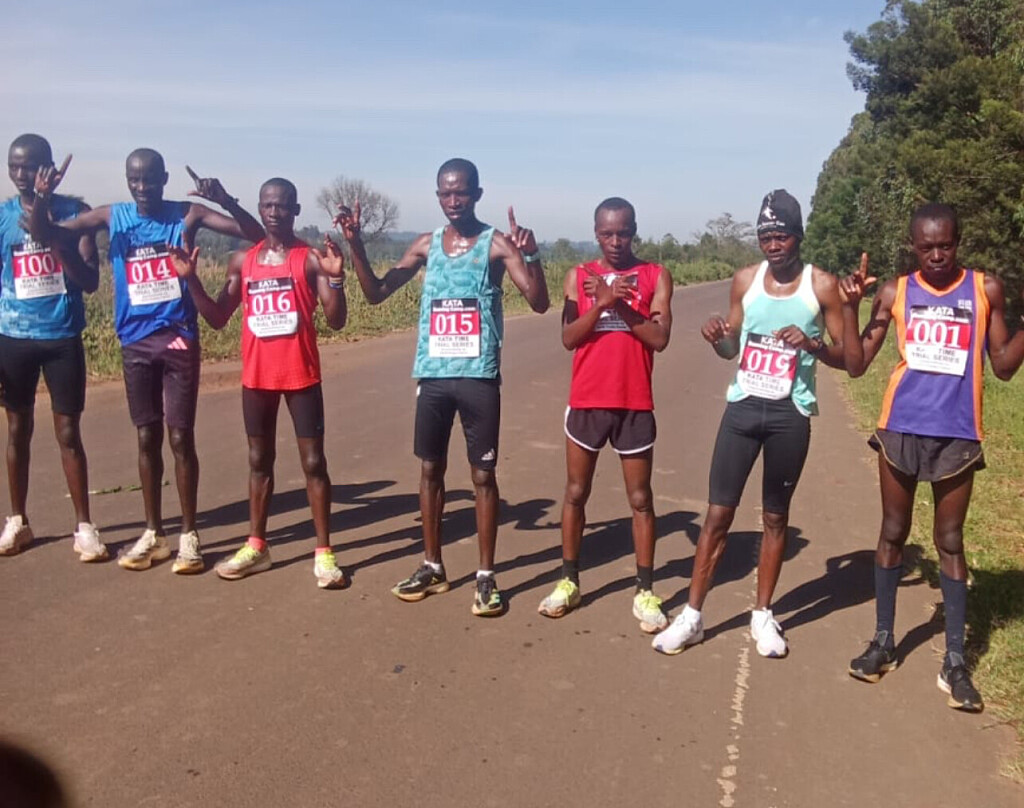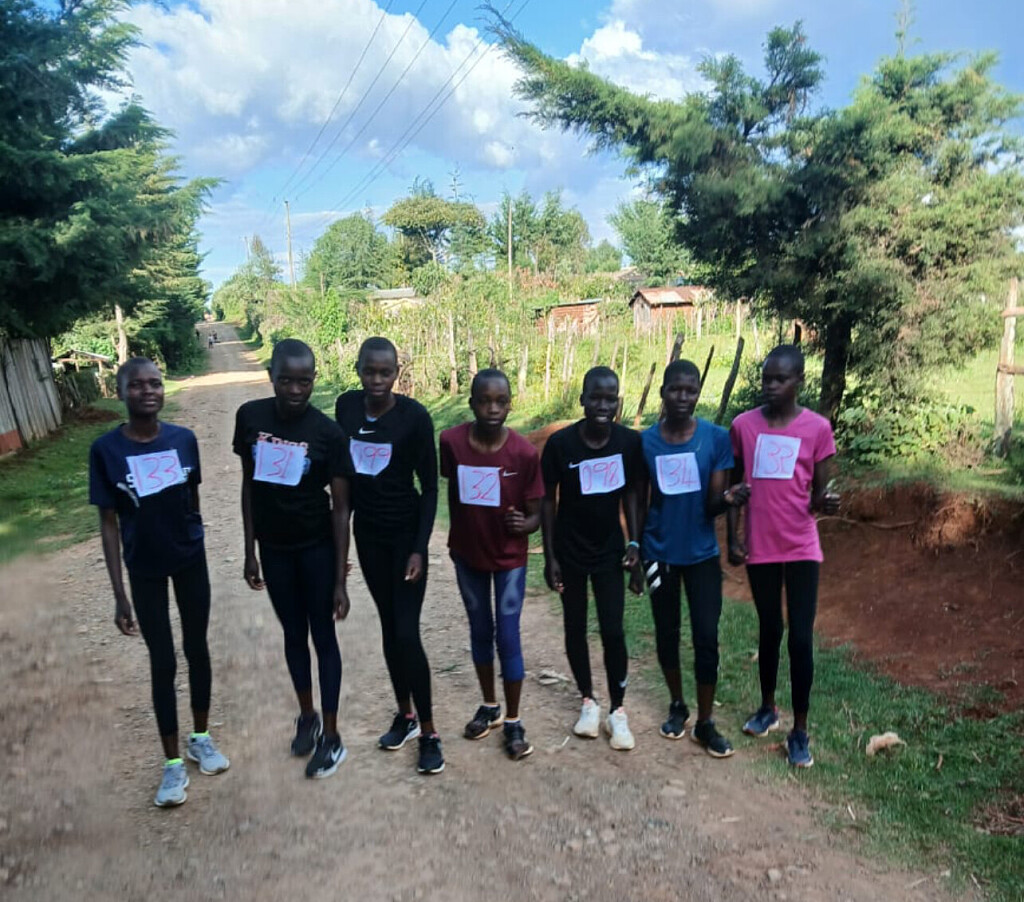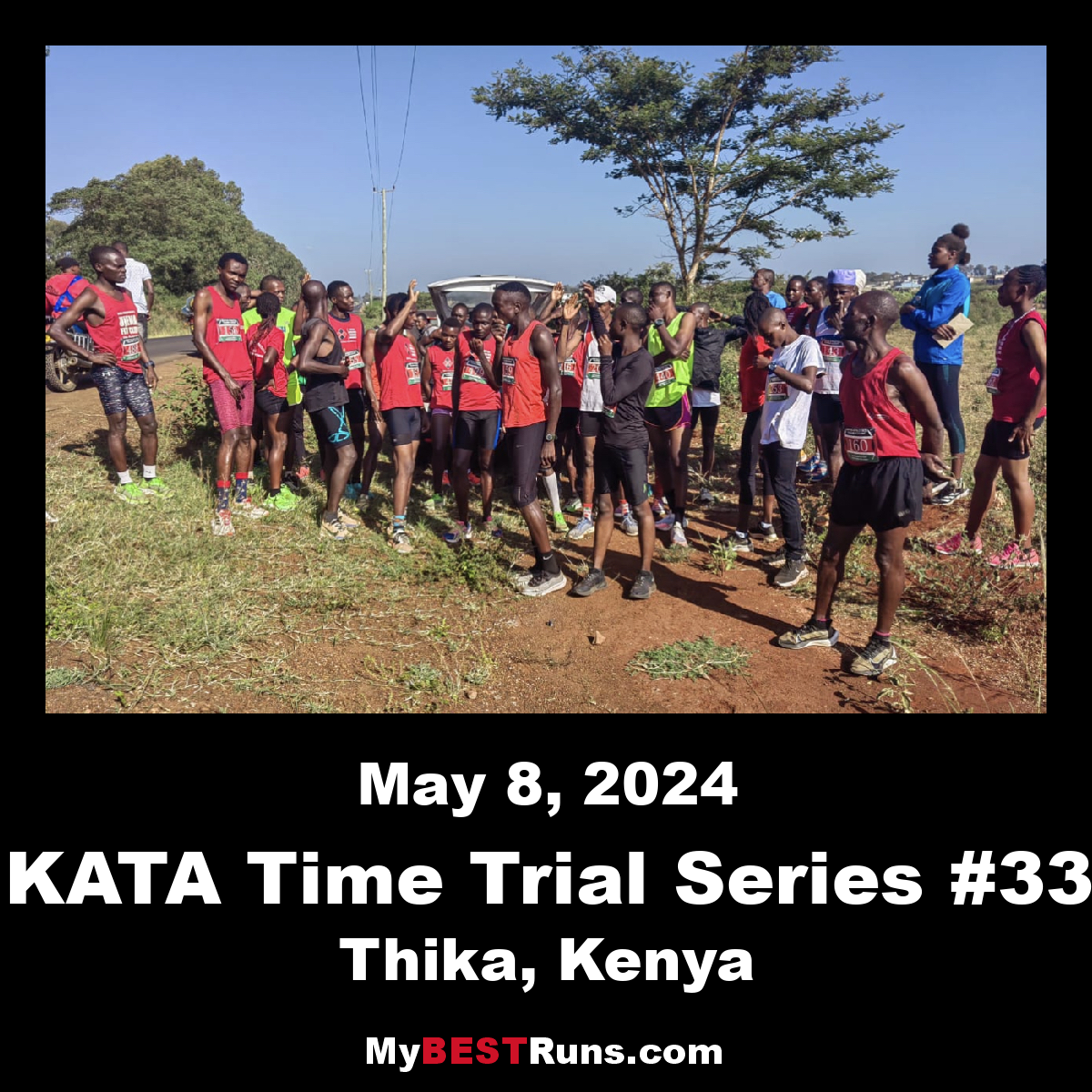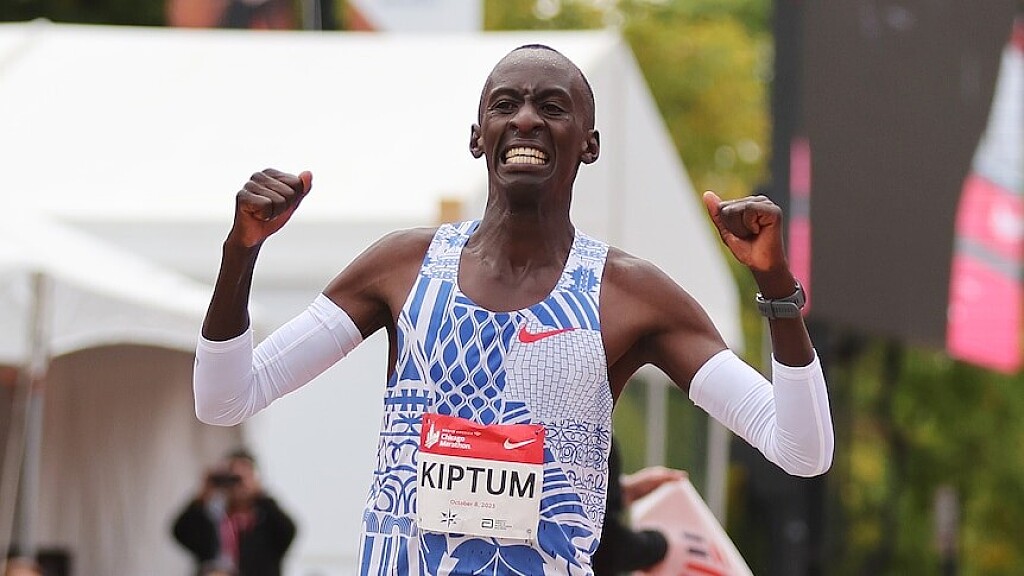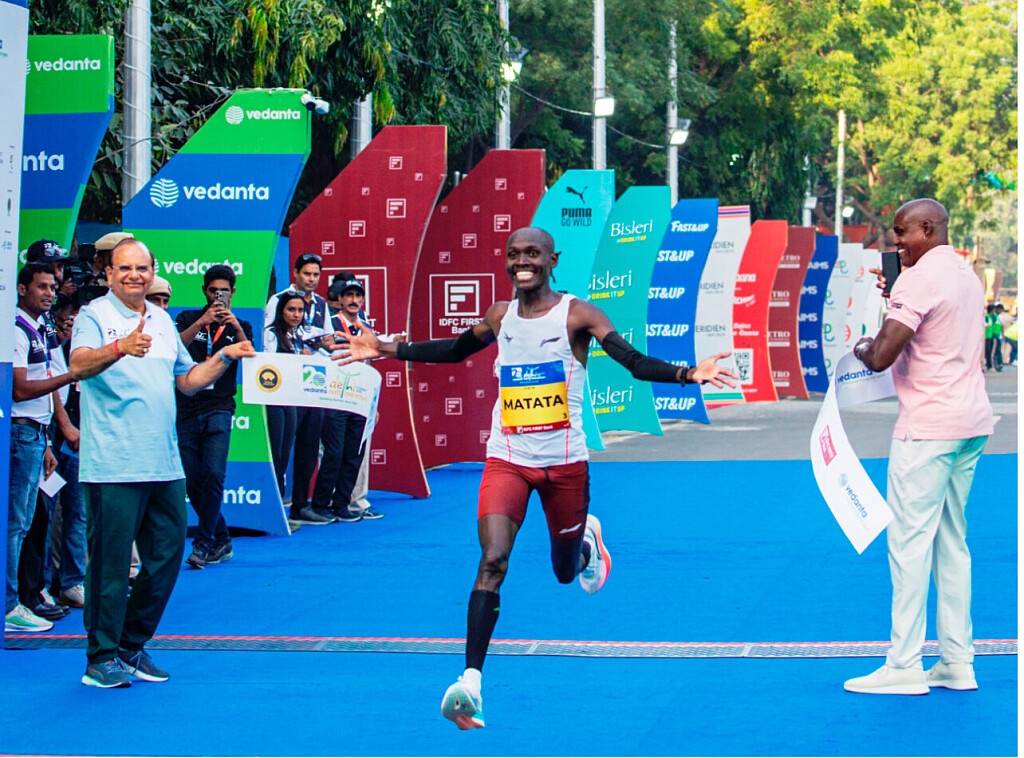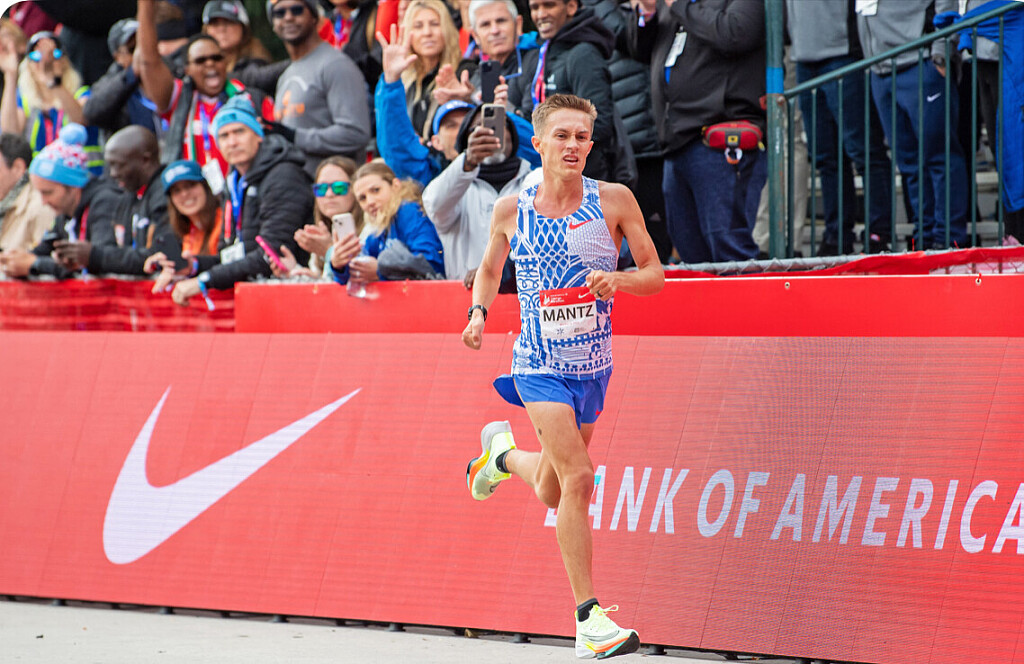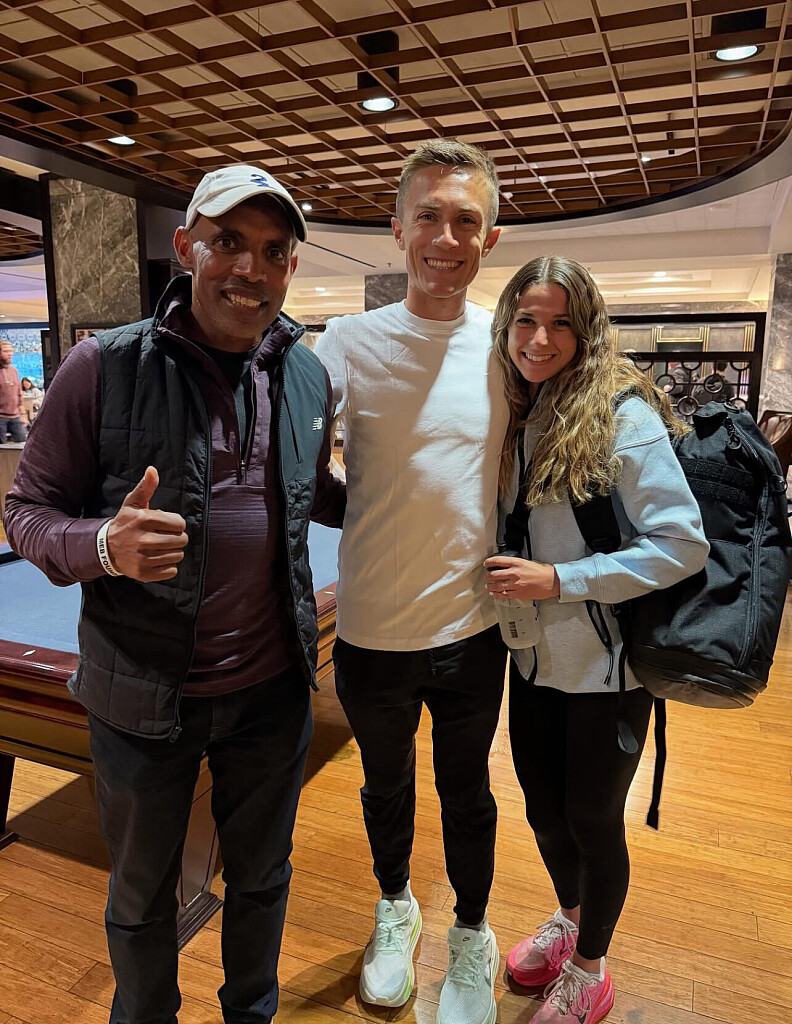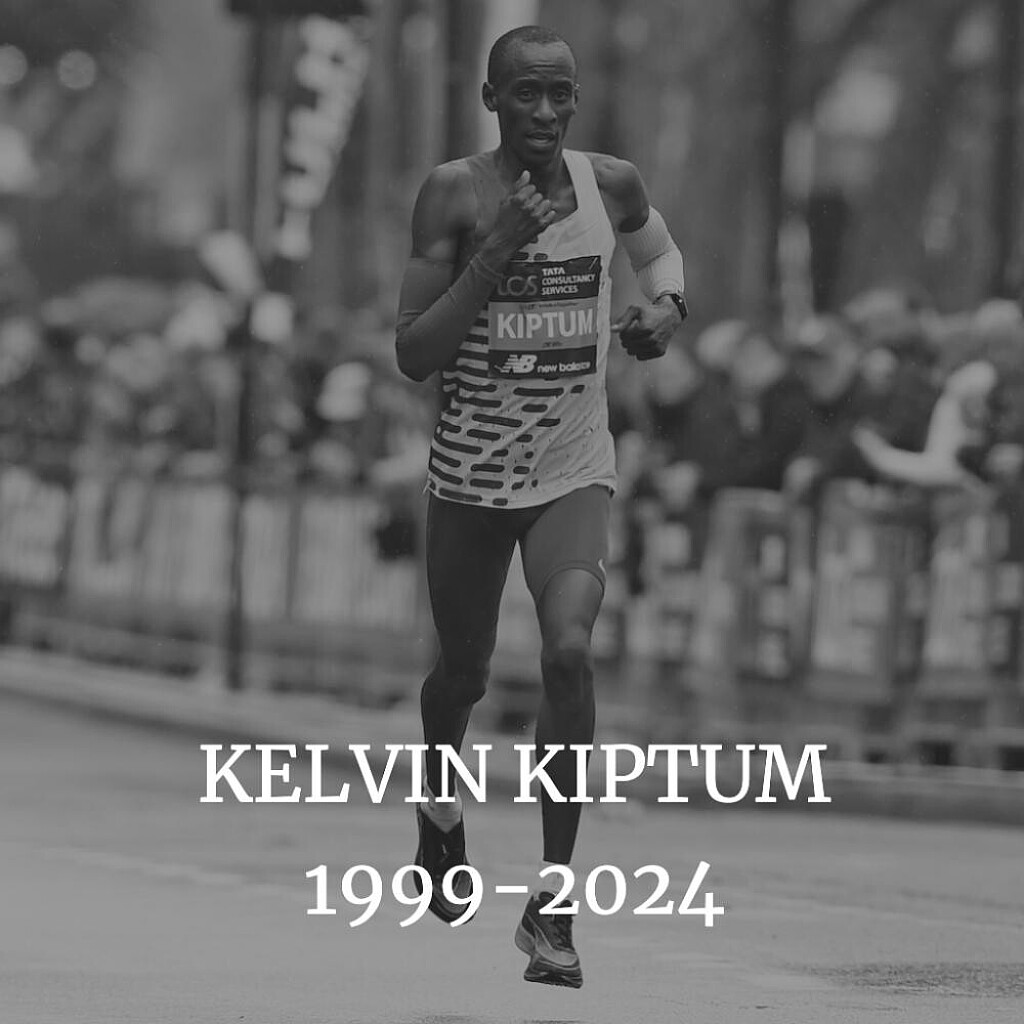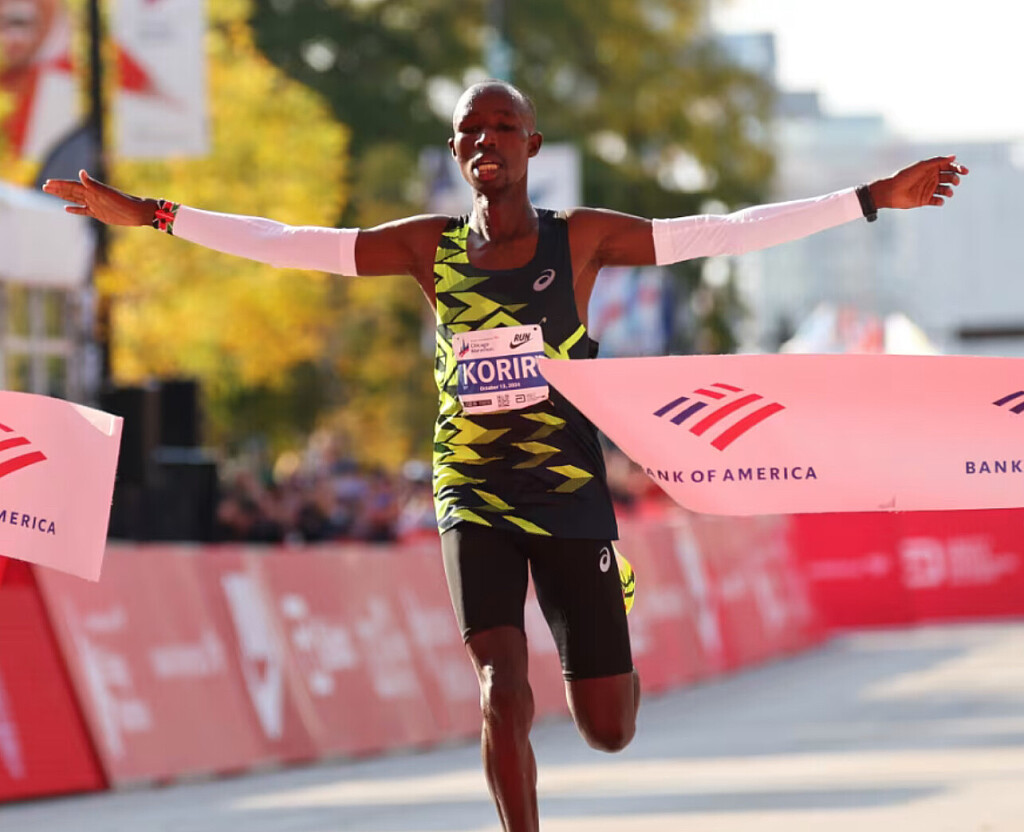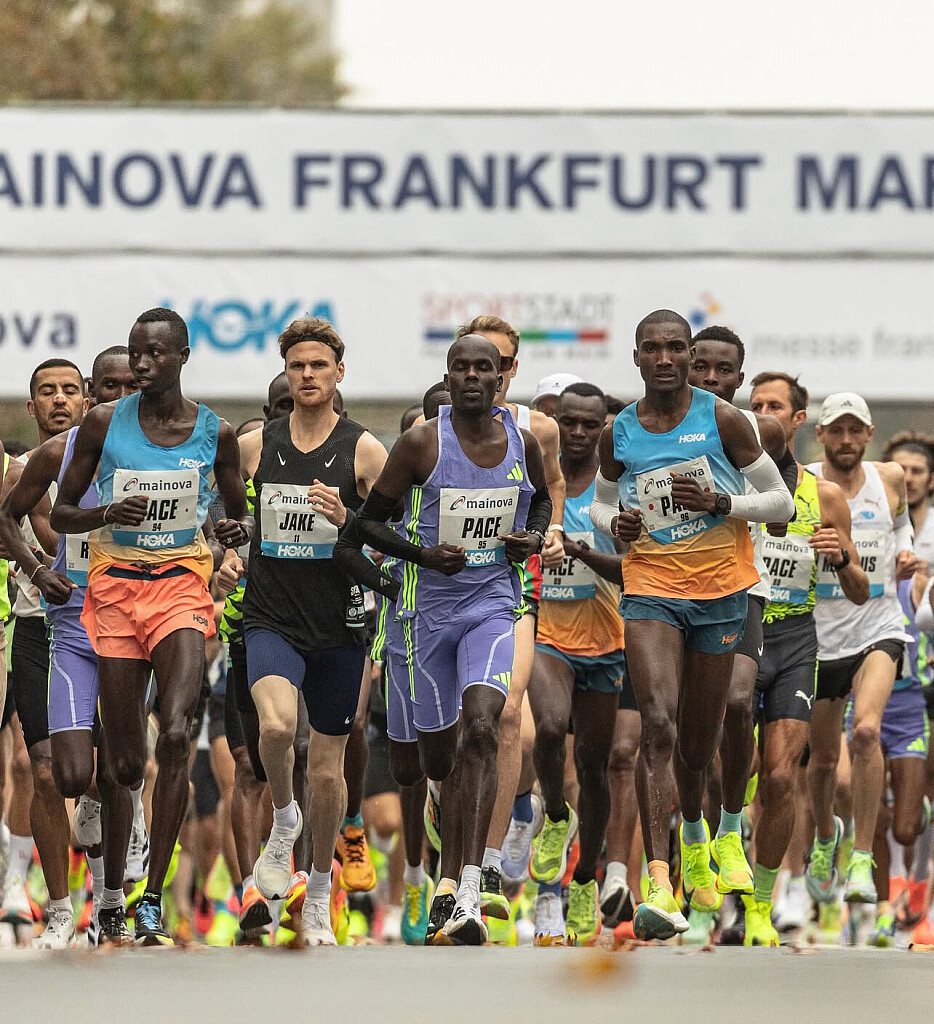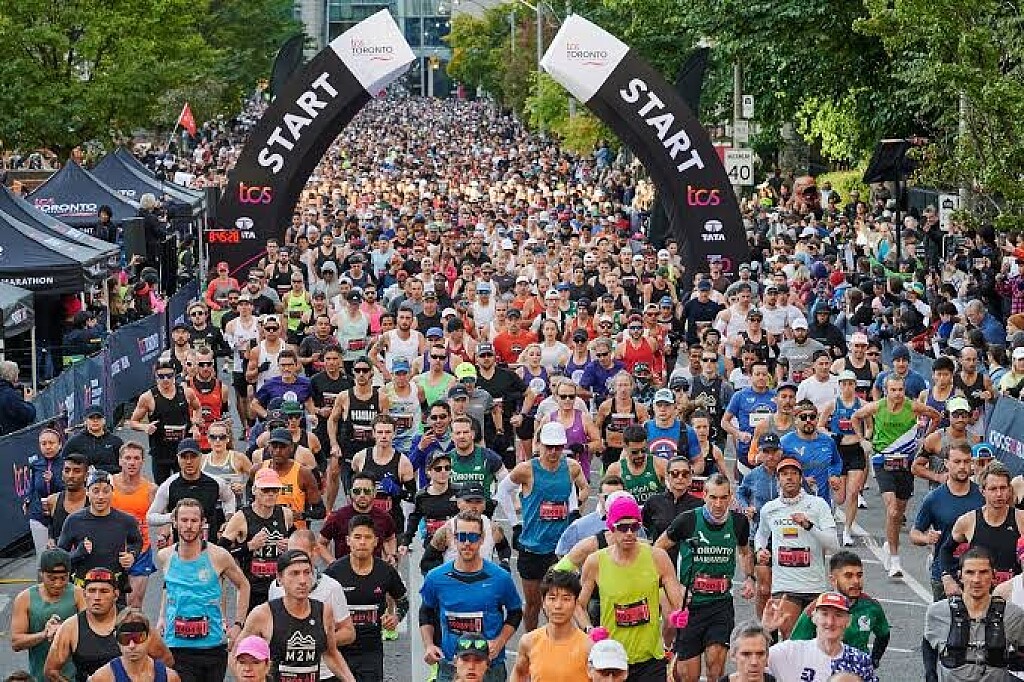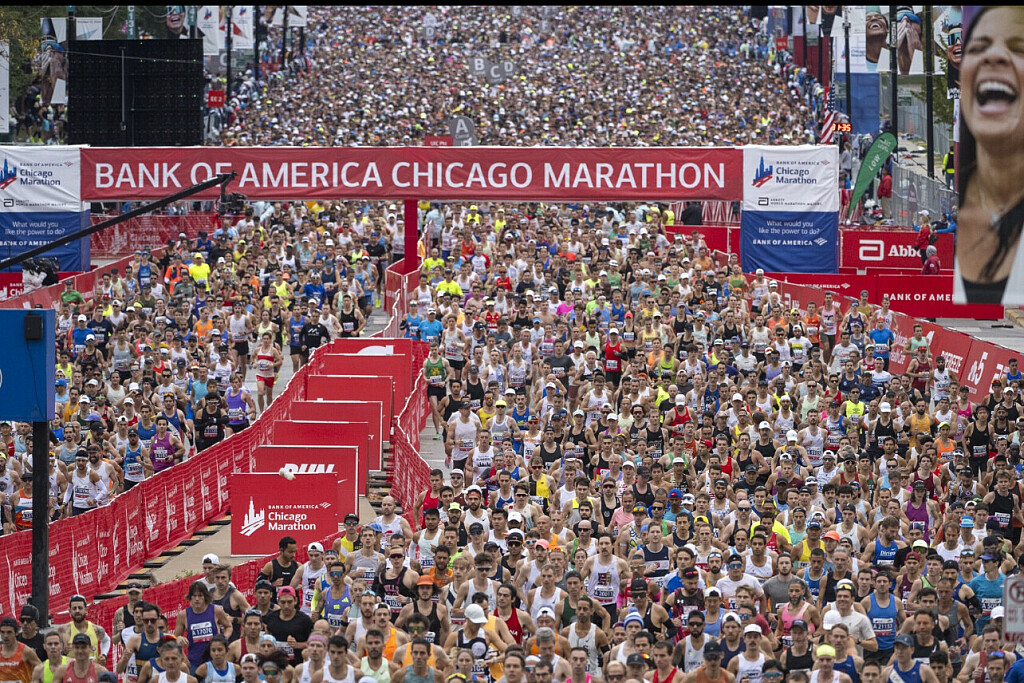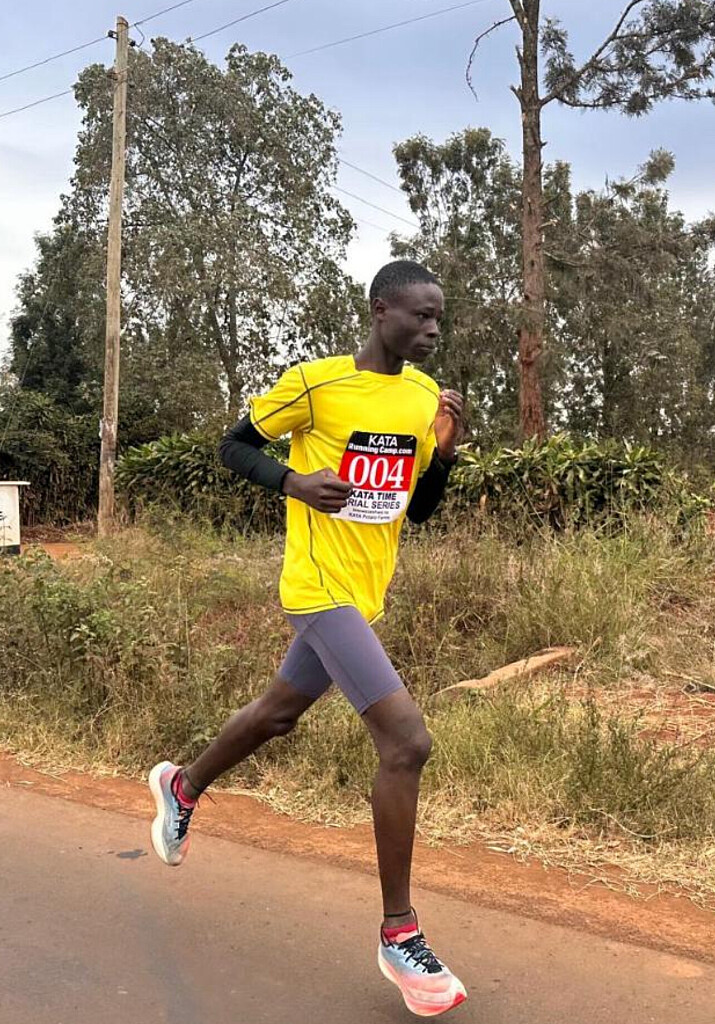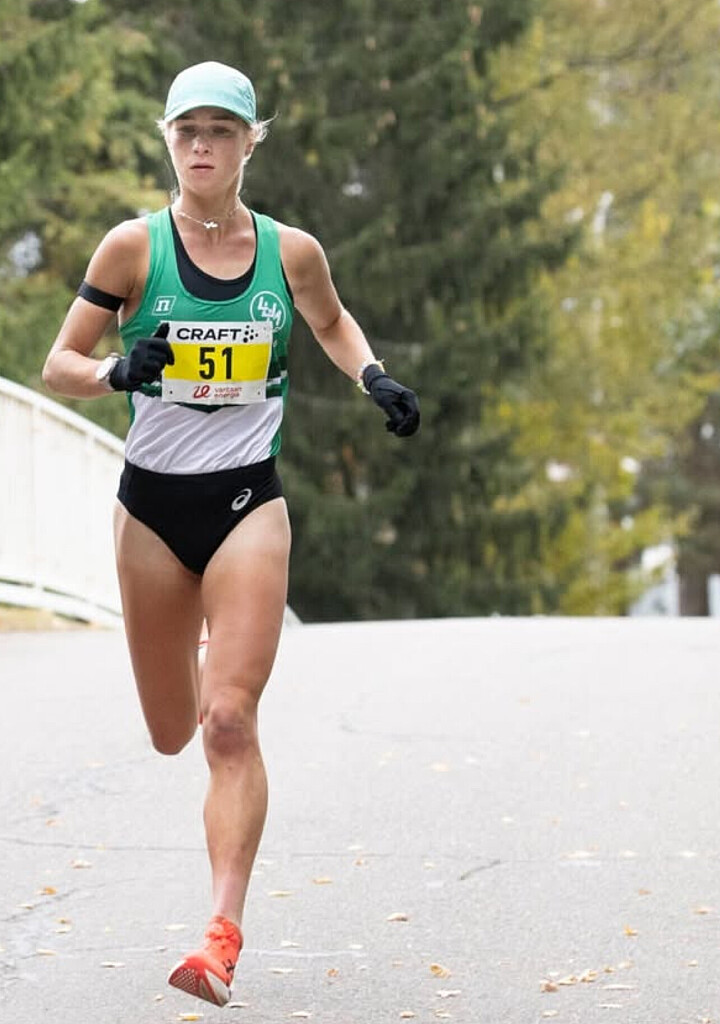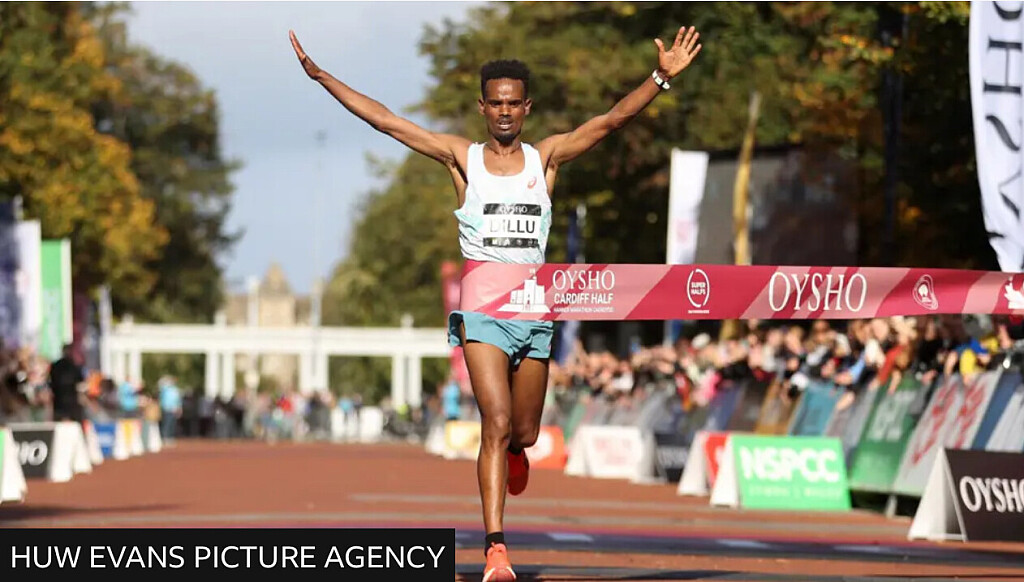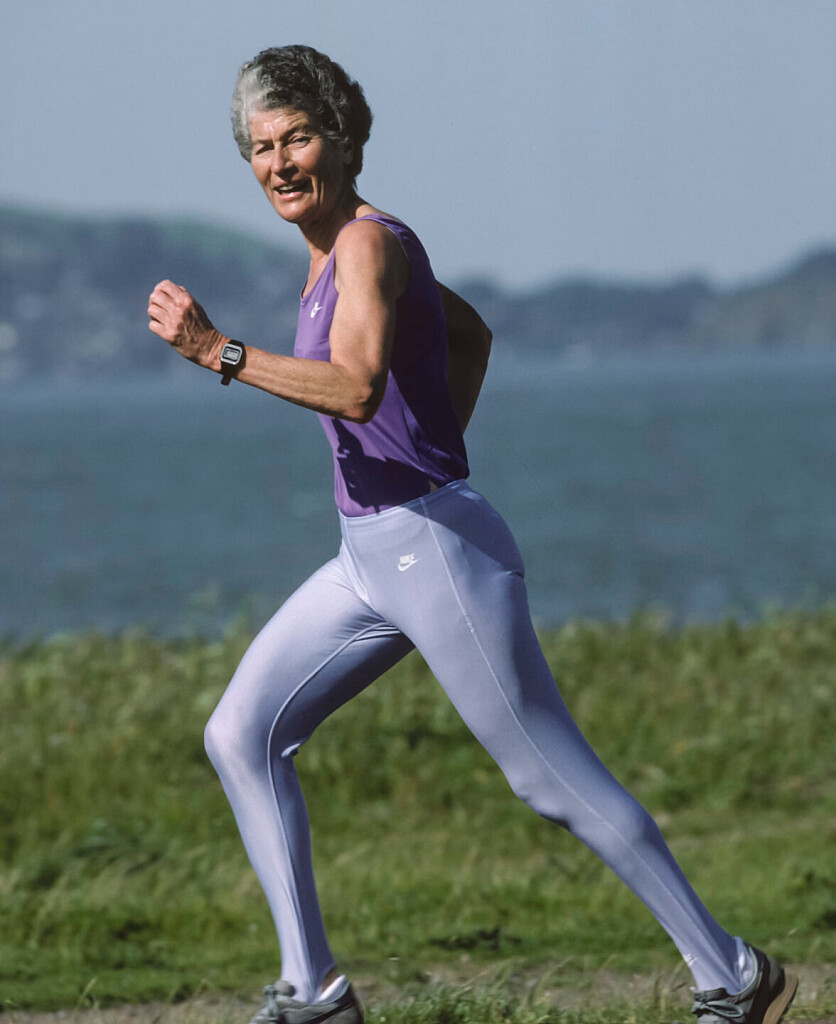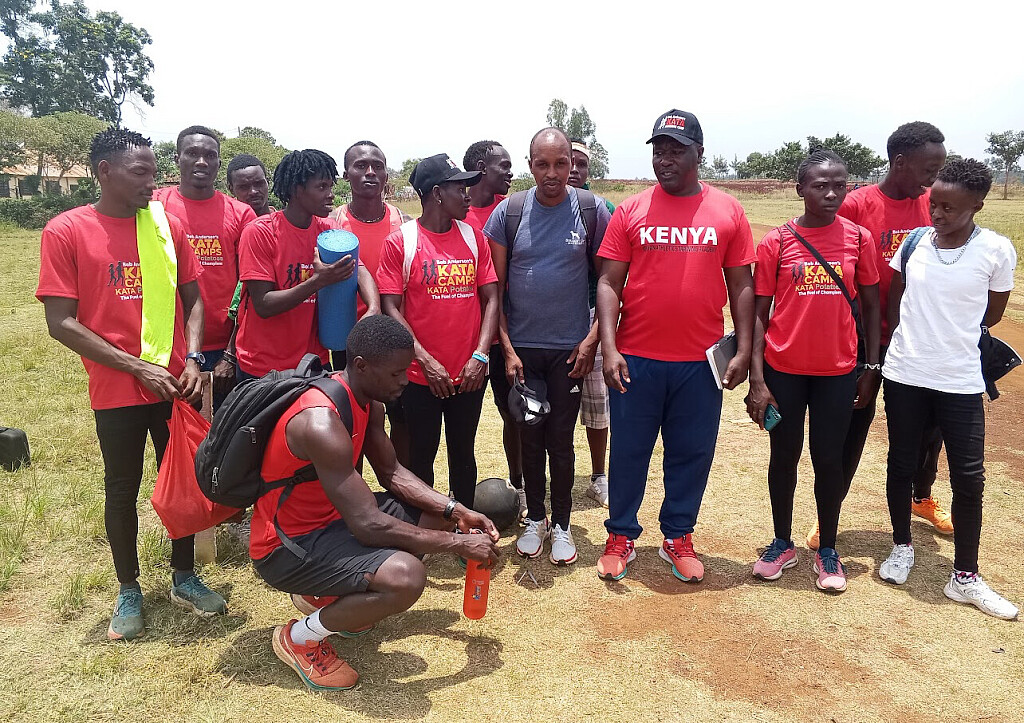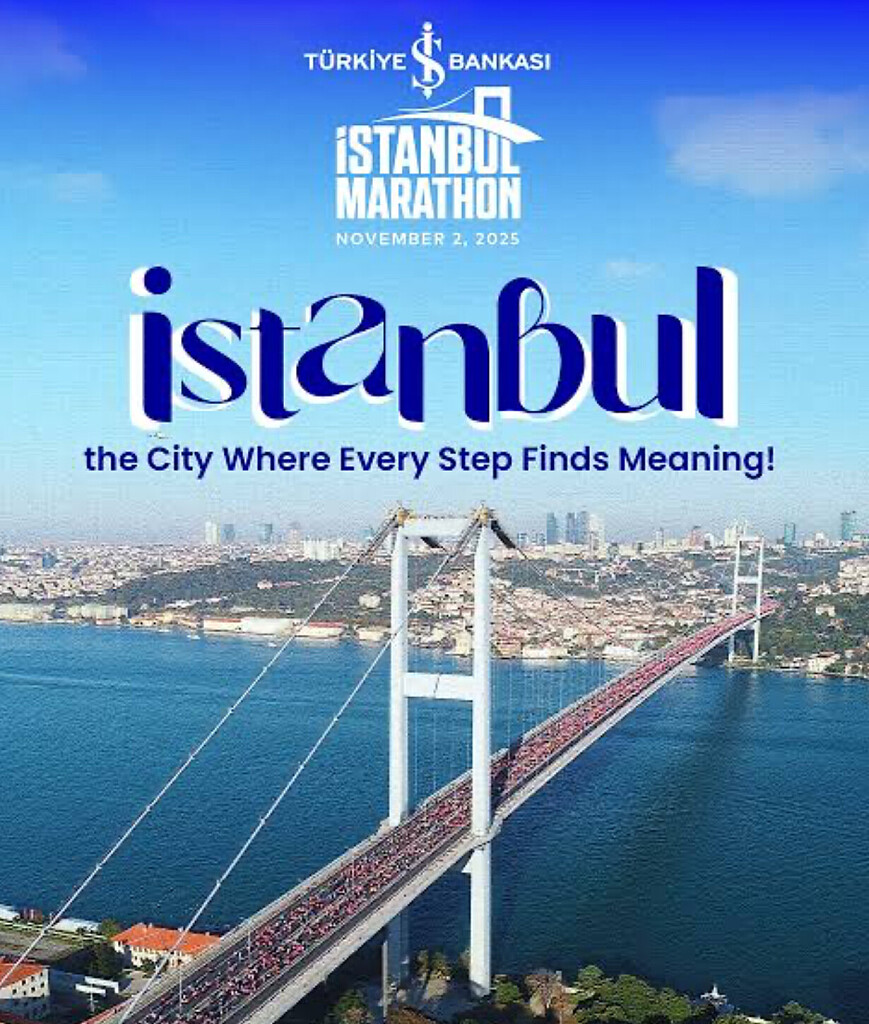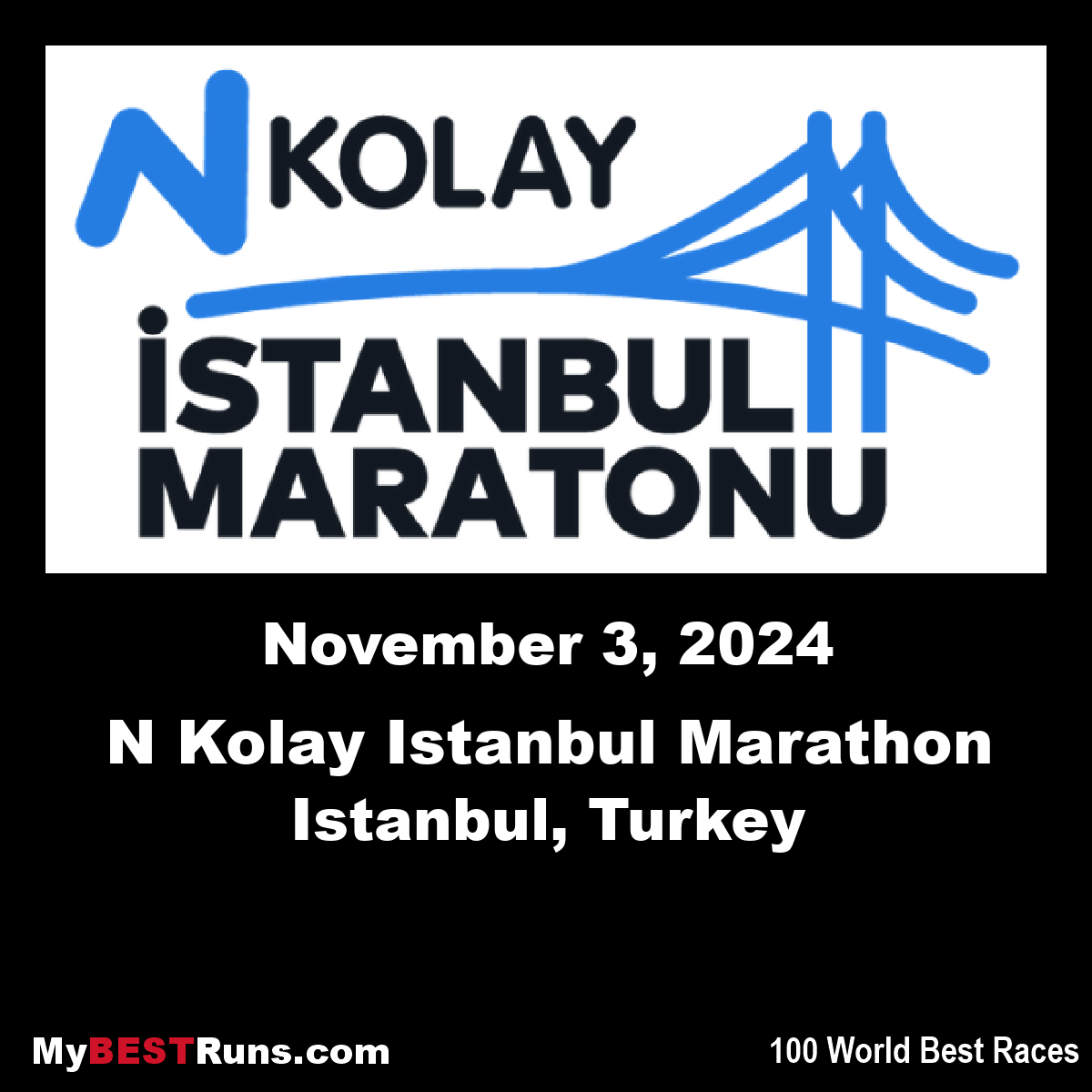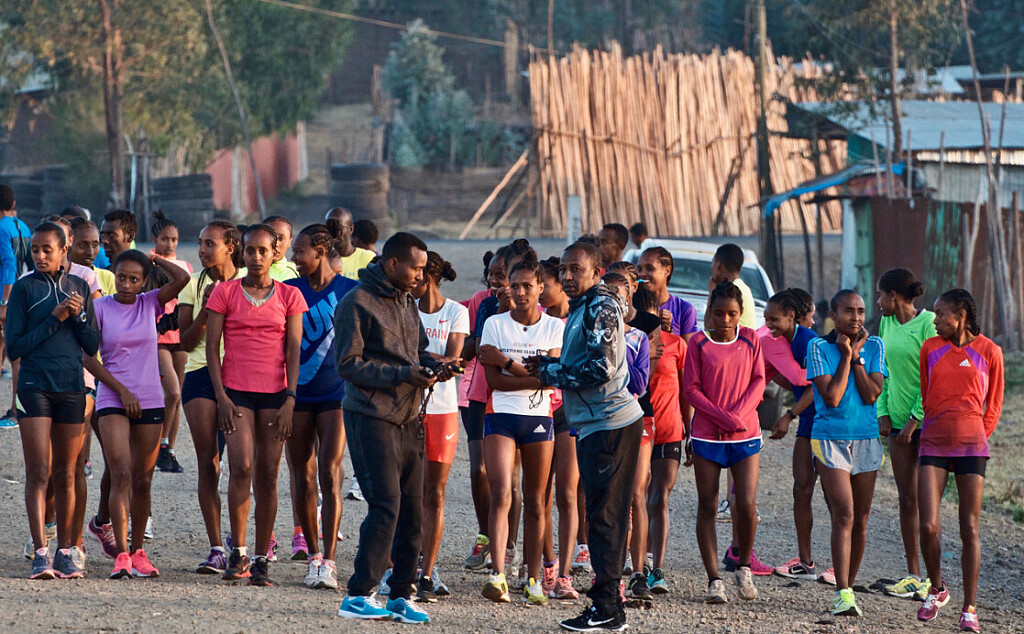Running News Daily
Running News Daily is edited by Bob Anderson. Send your news items to bob@mybestruns.com Advertising opportunities available. Train the Kenyan Way at KATA Kenya and Portugal owned and operated by Bob Anderson. Be sure to catch our movie A Long Run the movie KATA Running Camps and KATA Potato Farms - 31 now open in Kenya! https://kata.ke/
Index to Daily Posts · Sign Up For Updates · Run The World Feed
Eliud Kipchoge Chases One Final Milestone as He Makes His New York City Marathon Debut This Sunday
One of the most anticipated starts in marathon history arrives this Sunday as Eliud Kipchoge, the two-time Olympic marathon champion and widely regarded as the greatest marathoner of all time, makes his debut at the TCS New York City Marathon (NYC Marathon).
The Big Picture
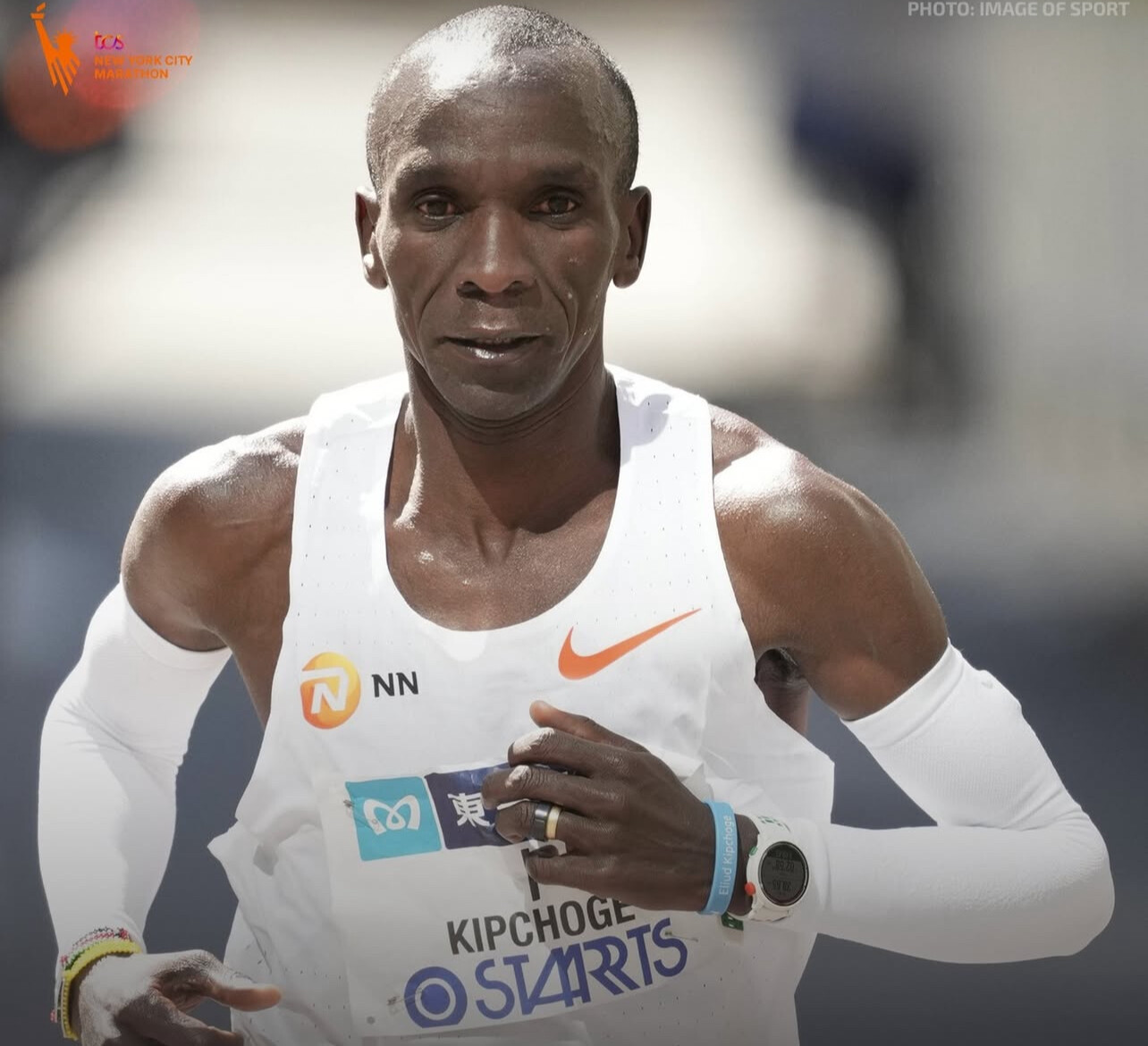
At 40 years old, Kipchoge has already built an extraordinary legacy: Olympic gold medals in 2016 (Rio) and 2020 (Tokyo), a world-record marathon time of 2:01:09 in Berlin 2022, and a historic sub-2-hour marathon effort in Vienna 2019 (1:59:40 – though not ratified).
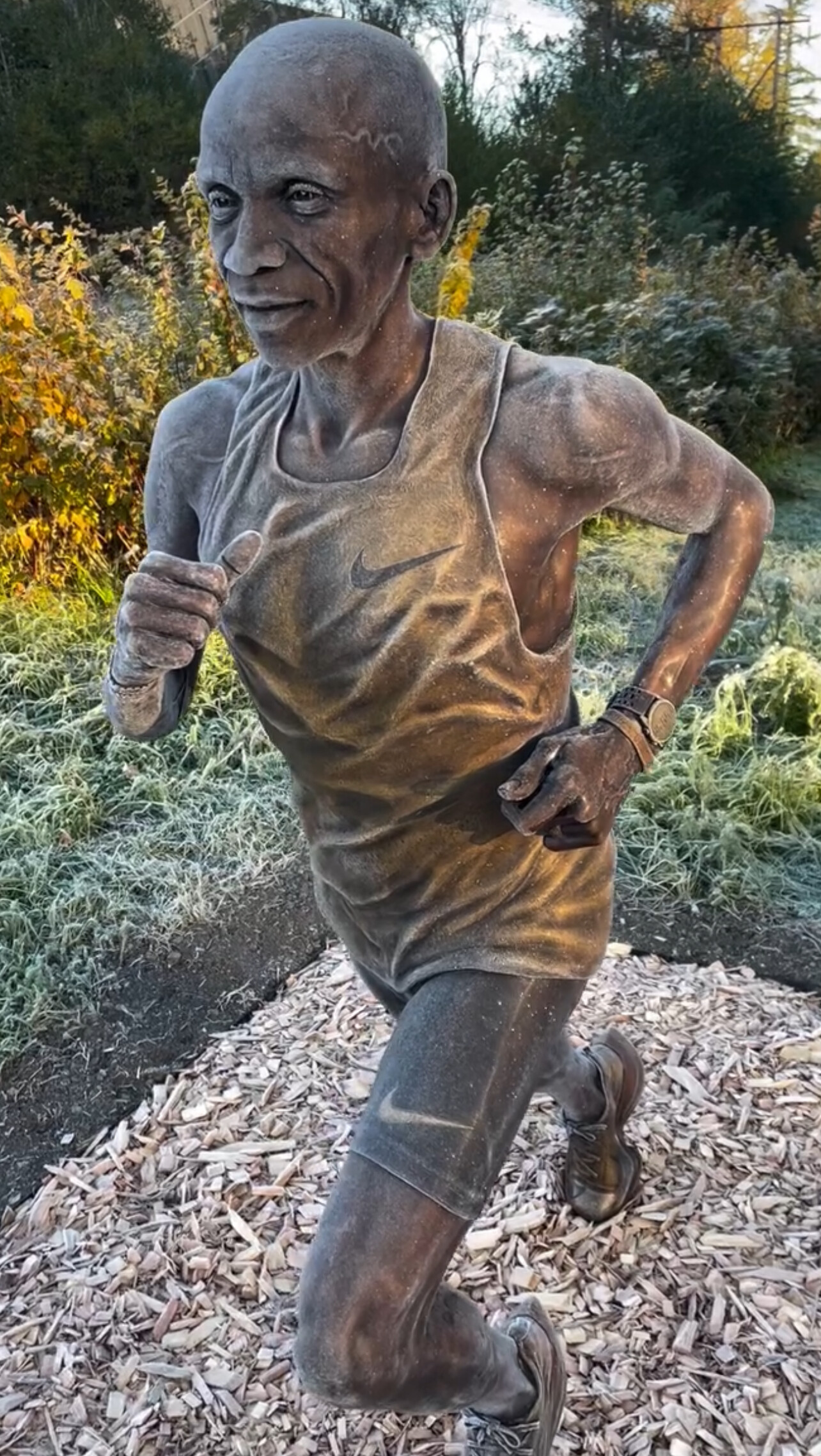
Yet until now, the NYC Marathon has been the elusive piece of the puzzle. By lining up this Sunday, Kipchoge will complete his set of the major Abbott World Marathon Majors (AWMM) if he crosses the finish line—it’s the only major marathon he has yet to run.
Why It Matters
• Legacy: Finishing NYC would give Kipchoge the coveted “six-star” AWMM medal for running all six of the premier majors.
• New challenge: The NYC course is markedly different from the flat, fast courses of Berlin or London. It’s undulating, uses bridges, and traverses the five boroughs—a true test of both physical and mental strength.
• Age and motivation: While Kipchoge remains in top shape, he acknowledges the impact of time and says this race is as much about meaning and experience as it is about finishing fast.
The Competition & Conditions
Kipchoge enters a stacked elite field. He’ll face defending champion Abdi Nageeye of the Netherlands, former NYC winners Evans Chebet and Albert Korir, and several rising stars with sub-2:04 personal bests.
What to Watch
• Will Kipchoge go for a bold win or focus on completing this final major?
• How will the unique challenges of NYC—bridges, hills, and roaring crowds—affect his pacing and strategy?
• Could this race mark the close of his competitive marathon career—or the beginning of a new chapter as ambassador and mentor?
Sunday’s race isn’t just another marathon for Eliud Kipchoge. It’s a long-awaited chapter in a legendary career—one that may see him conquer the final major, inspire millions, and reaffirm his enduring message: No human is limited.
(10/30/2025) ⚡AMPby Boris Baron
Still Racing Strong, Olympic Medalist Edwin Soi Leads by Example at KATA — Growing Potatoes, Training Hard, and Competing for the Half-Million Shilling Farmer Bonus
Edwin Soi is a 5000m Olympic medalist and still running well photo of him running 27:30 just a few months back at altitude). He is also one of the KATA Running Camp operators and has three acres of KATA potatoes. He posted this after we announced our new contest for our KATA farmers.

“This is the kind of motivation,” says Edwin that pushes us past our limits. We promise to take this challenge to the top notch in both arenas.

On the farm, we focused on achieving a record potato yield per acre to be a winner in both Contest #1 and Contest #2. On the running field, that spirit translates directly into training harder and competing fiercer.
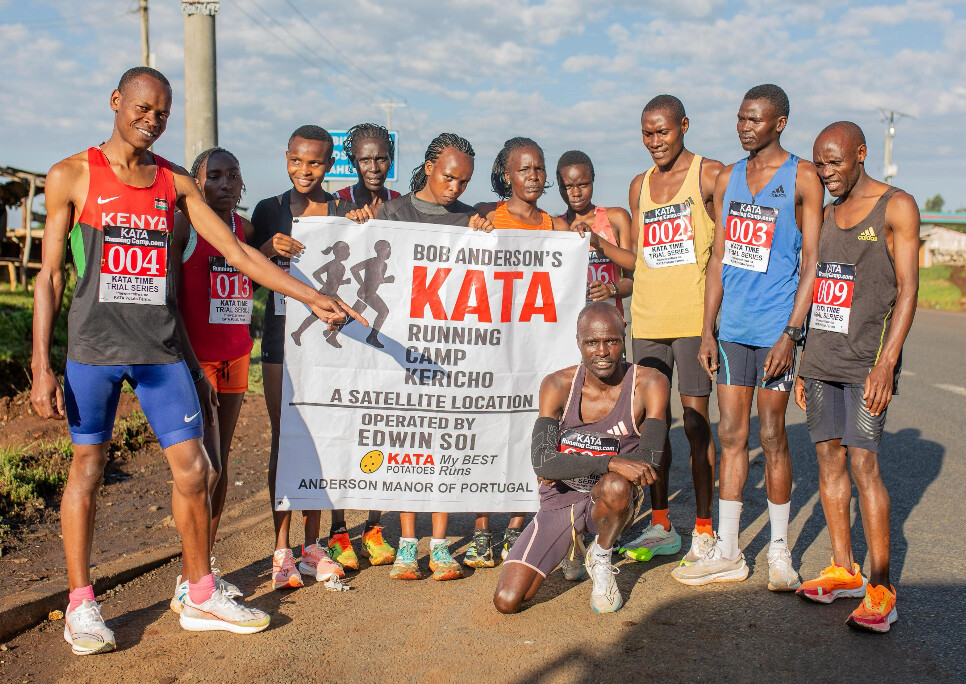
We will not just grow strong; we will demonstrate absolute excellence. Thank you Bob for fueling our drive to be champions. #GoKATA
Here are the details of our new contest:
KATA Potato Farmer Half-Million Bonus! ?
KATA is bringing its competitive spirit to the fields!
Twice a year, five KATA farmers with the best yield per acre will each earn 50,000 KES — that’s half a million shillings annually! ?
Contest #1 closes: Dec 31, 2025
Contest #2 closes: Jun 30, 2026
✅ Yields counted in 50 kg bags sold to verified buyers
✅ One bag kept for personal use not counted
✅ Once funds are received by KATA and confirmed by CTO Dennis, your yield is officially recorded
All results verified by Dennis (CTO), Gideon & John (Sales Directors), and Fridah (Accounts Manager).
Each contest will name five different winners — but a farmer can win both see seasons!
“KATA rewards excellence — on the track and in the field.”
— Bob Anderson, Founder & Director
Additional camps and farms will be added starting in December. Contact Bob Anderson on WhatsApp.
Stay current at www.KATA.ke
(10/30/2025) ⚡AMPby Boris Baron
KATA Launches Half-Million Bonus for Top Potato Farmers
Expanding its spirit of competition from the track to the fields, KATA rewards excellence in both running and farming.
KATA is taking its competitive spirit from the track to the fields with the new KATA Potato Farmer Half-Million Bonus Prize Package. This program will reward five KATA farmers with 50,000 Kenyan Shillings each, recognizing those who achieve the best yield per acre.

The first payout will be made on December 31, followed by a second on June 30. Each cycle, five farmers with the top single-acre harvests will receive the bonus, totaling half a million shillings annually.
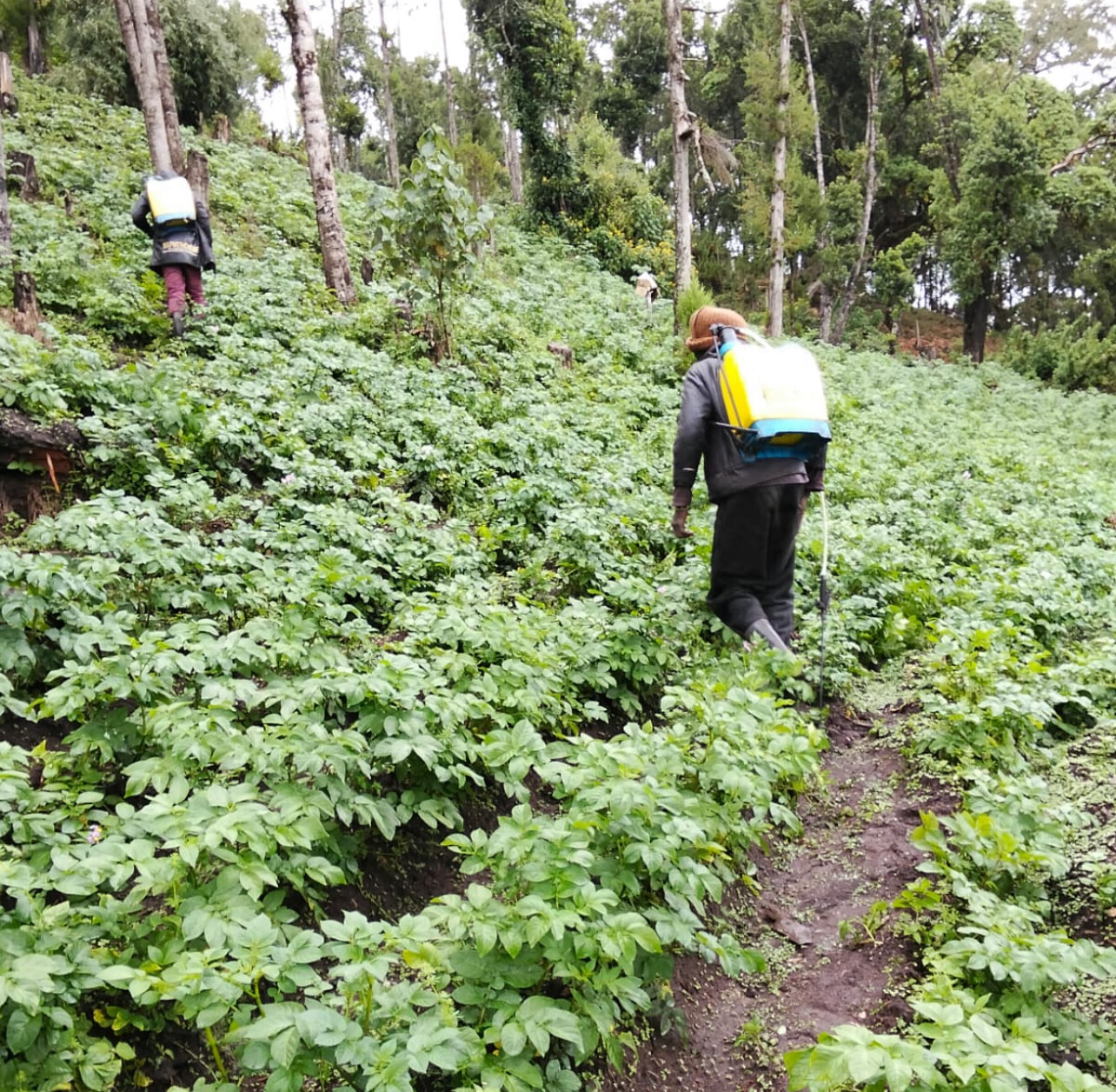
Yields will be measured in 50 kg bags and must be sold to verified buyers. Results will be confirmed by CTO Dennis, Sales Directors Gideon and John, and Accounts Manager Fridah. The one bag each farmer keeps for home use will not count, and only bags sold and confirmed as paid to KATAwill qualify.
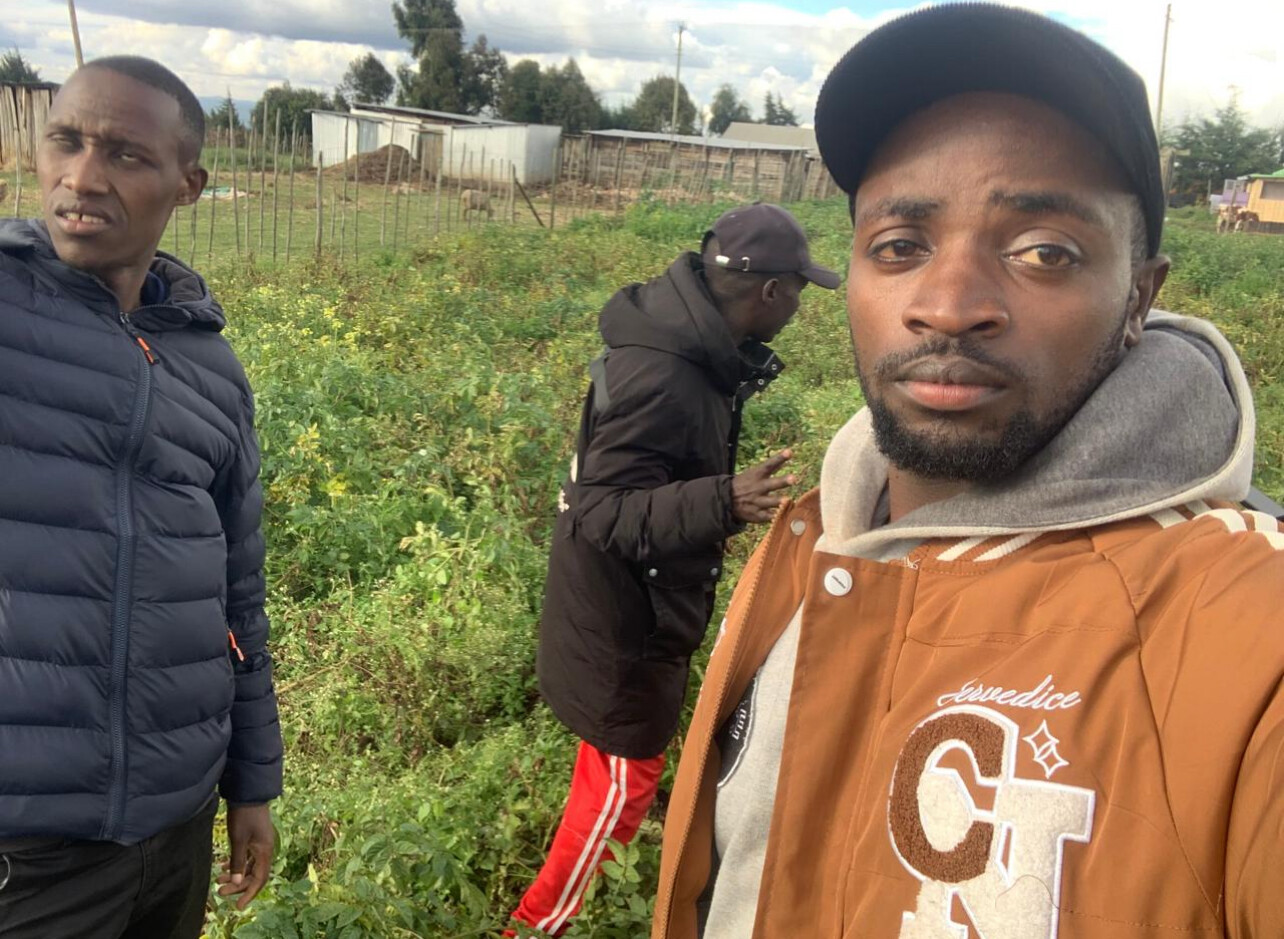
“We offer prize money for races, and with all the hard work it takes to grow KATA potatoes, I thought—why not turn this into a competition as well?” says Bob Anderson, KATA Founder and Director.
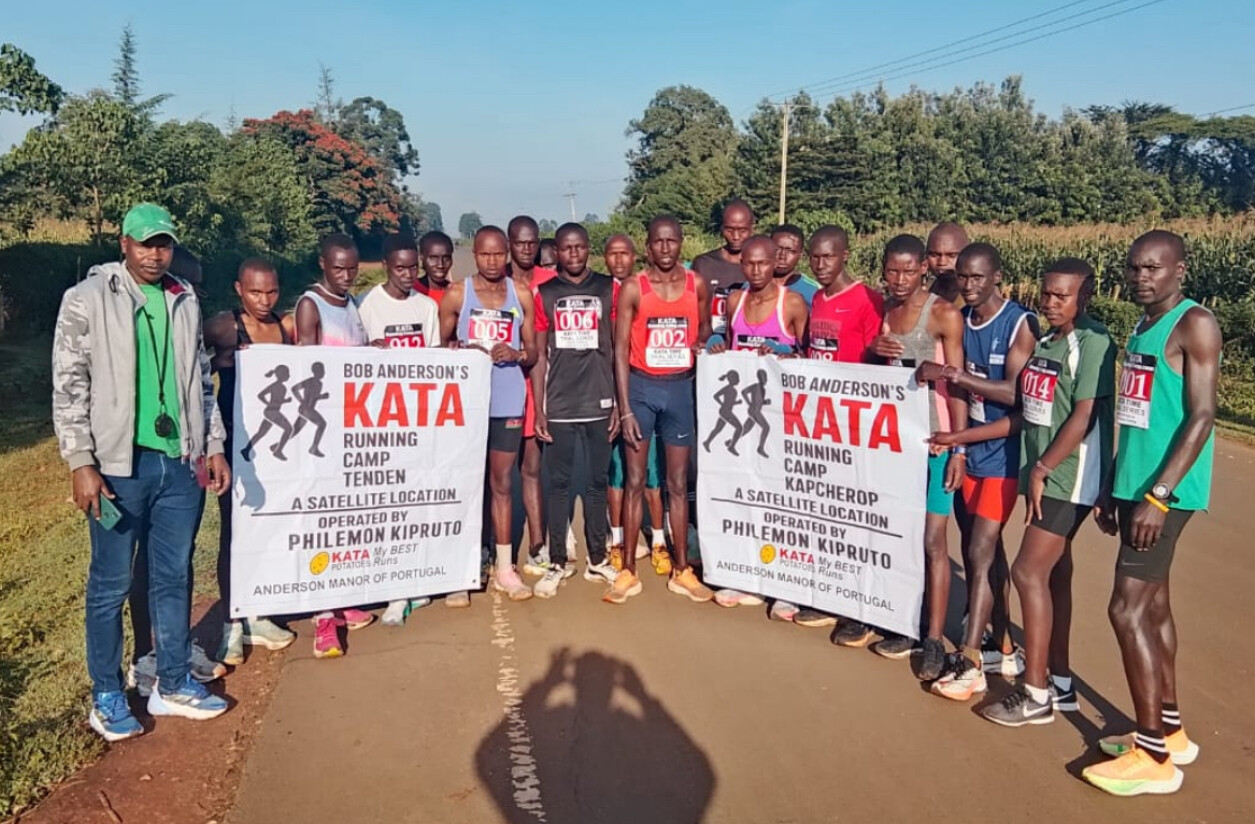
A farmer can win twice a year if they achieve the best results in both seasons. The initiative mirrors KATA’s philosophy—rewarding effort, precision, and perseverance whether it’s on the course or in the soil.
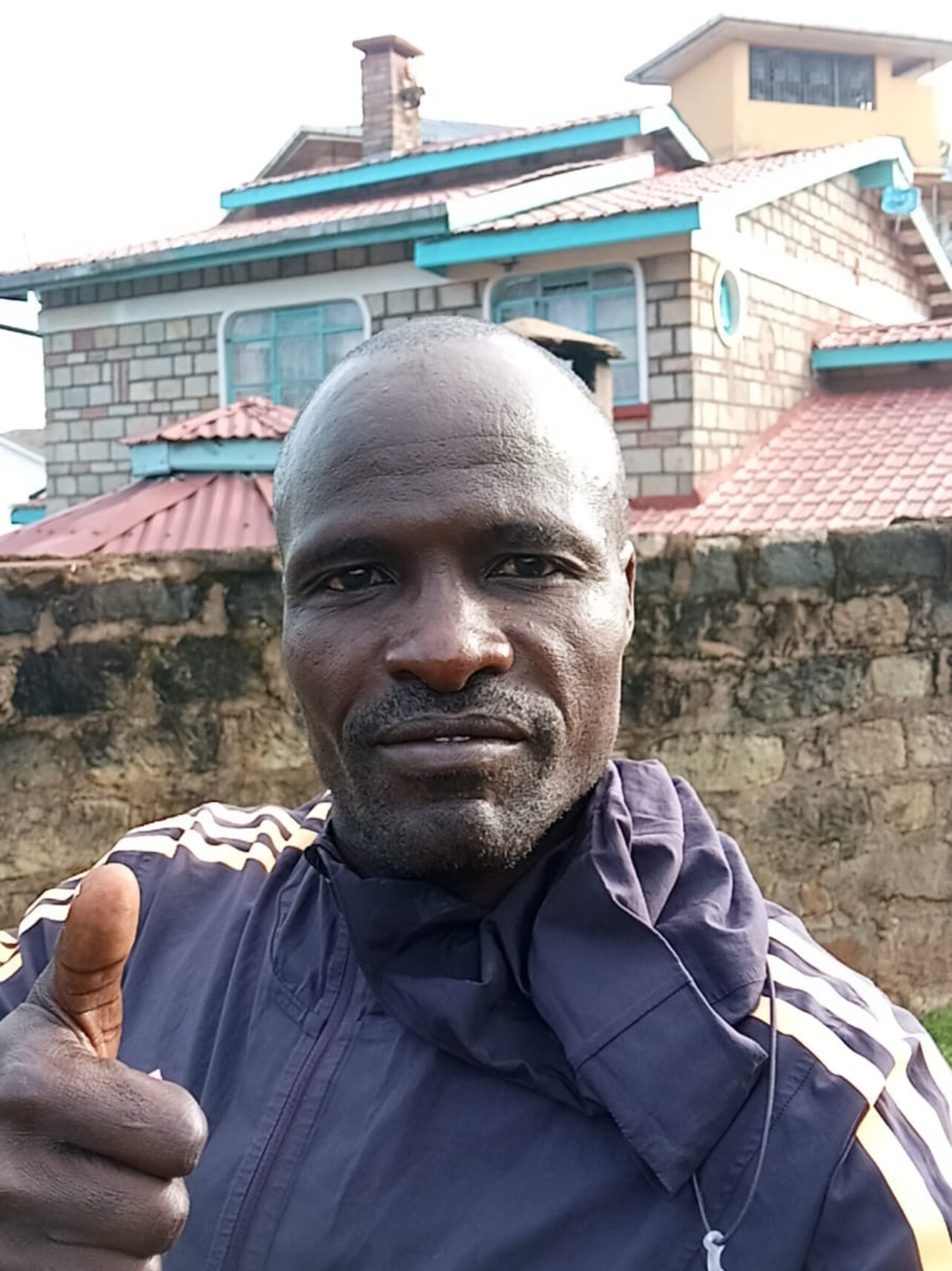
From Running to Farming Excellence
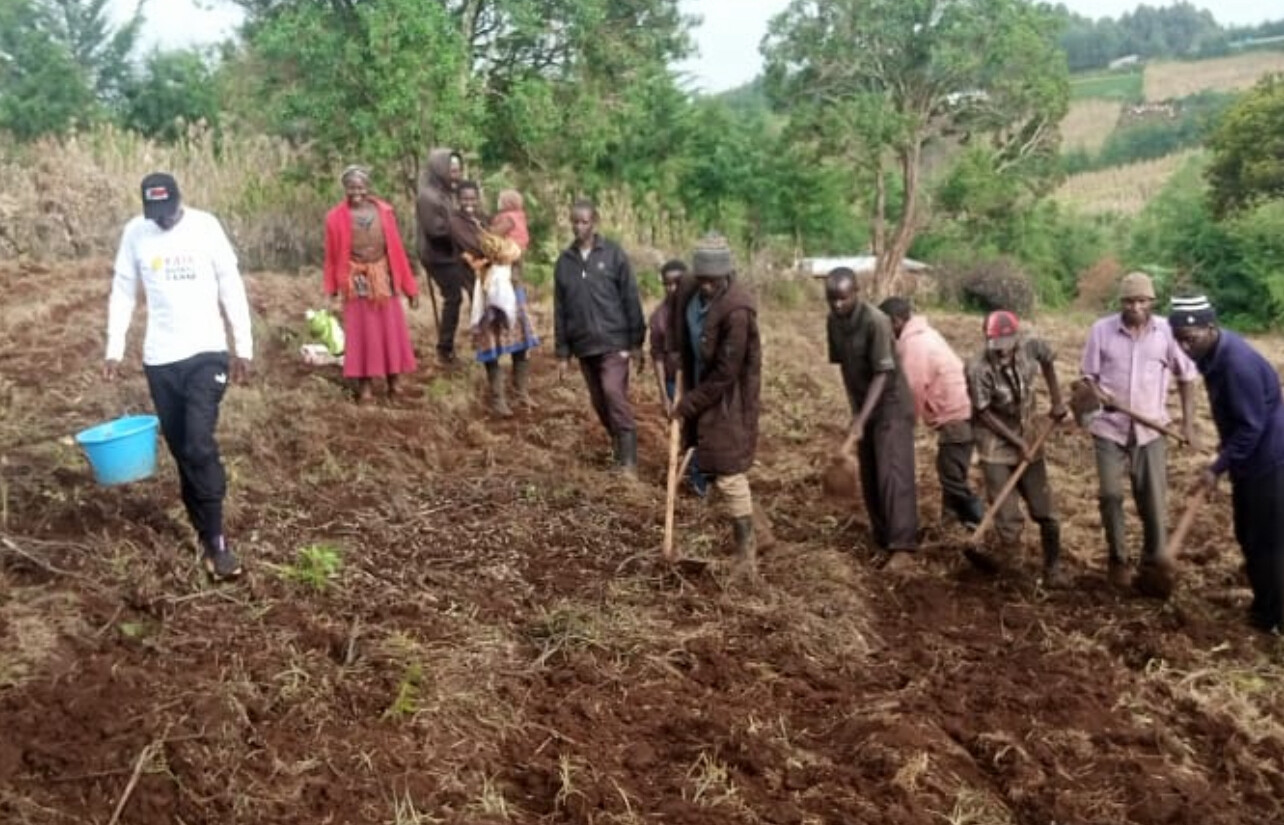
The Kenyan Athletics Training Academy (KATA), founded by Bob Anderson, the creator of Runner’s World and My Best Runs, began as a world-class training center for runners in Thika, Kenya. Today, it has grown into a dynamic network that includes over 30 KATA Running Camps and 60+ KATA Potato Farms across Kenya, and an international headquarters at Anderson Manor in Portugal.
Each KATA farm operates under a system that combines athletics and agriculture, offering farmers interest-free loans and ongoing support to grow certified Shangi potatoes. The harvests are marketed through KATA’s coordinated sales network, ensuring fair prices and dependable returns for each farmer.
Many KATA farmers are also runners—or closely connected to the athletic community—bringing the same discipline, teamwork, and endurance to farming that they apply to training.
Empowering Champions in Every Field
From the start, KATA’s mission has been to help people reach their potential through endurance, consistency, and community. The new Half-Million Bonus Prize Package celebrates that mission—recognizing those who deliver exceptional results through focus and commitment.
As Anderson explains, “Whether it’s crossing a finish line or bringing in a record harvest, both take focus, endurance, and belief in yourself. That’s what KATA is all about.”
The first group of winners for the KATA Potato Farmer Half-Million Bonus Prize will be announced on December 31, 2025.
Additional KATA Running Camps and KATA Potatoe farms are going to be confirmed starting in December. Confirm your interest by contacting Bob Anderson on WhatsApp.
(10/30/2025) ⚡AMPby Boris Baron
Uasin Gishu Half Marathon The Spirit of Eldoret Lives On
The Uasin Gishu Half Marathon, that is held annually in August in the heart of Kenya’s running country, once again showcased the nation’s unrivaled distance-running talent and spirit.
Thousands of athletes took to the scenic, high-altitude roads of Eldoret, cheered on by local fans who lined the streets from start to finish. The race, sponsored by Betika, continues to grow in stature each year, combining elite performances with strong community participation.

In the men’s race, Robert Kiprop stormed to victory with an impressive time of 1:00:56, pulling away in the final kilometers to secure the crown. On the women’s side, Gladys Chepkurui was dominant, finishing in 68:56, ahead of Vivian Cherotich, who clocked 70:02. Both races reflected the incredible depth of talent that defines Kenyan running—where even regional competitions produce world-class results. The champions each earned KSh. 300,000, with the runners-up taking home KSh. 200,000—a reflection of the event’s growing professional stature.
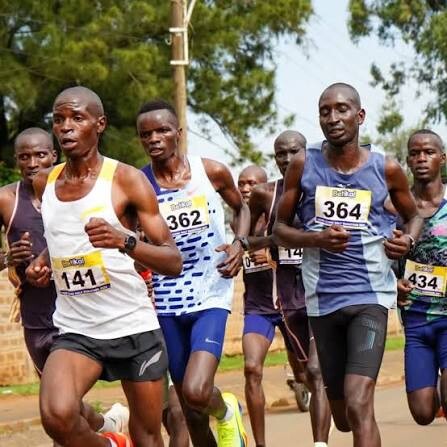
Beyond the competition, the Uasin Gishu Half Marathon offered an unforgettable racing experience. The rolling terrain, high altitude, and enthusiastic crowds create a course that challenges every runner while celebrating Kenya’s proud running heritage.
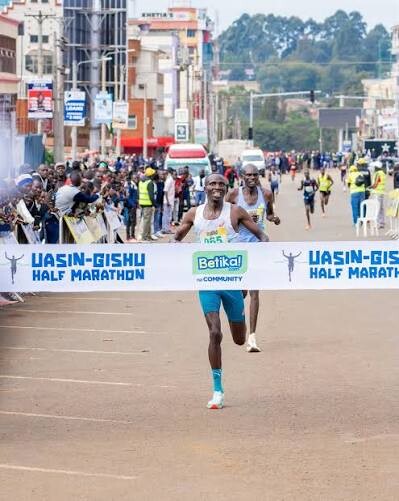
As one of the country’s most exciting half marathons, Uasin Gishu has become a proving ground for rising stars and a celebration for local and visiting runners alike. It’s a reminder that in Kenya, running is more than a sport—it’s a way of life.
(10/29/2025) ⚡AMPby Boris Baron
Jakob Ingebrigtsen Has His Eyes on Three World Records in 2026
Norwegian superstar Jakob Ingebrigtsen is already looking ahead to 2026 with one of the boldest ambitions in track and field — to break world records in the 1500 meters, the mile, and the 5000 meters.
In an interview shared by Chris Chavez on X (formerly Twitter), Ingebrigtsen revealed his mindset and meticulous approach to choosing the perfect time and place to chase history.
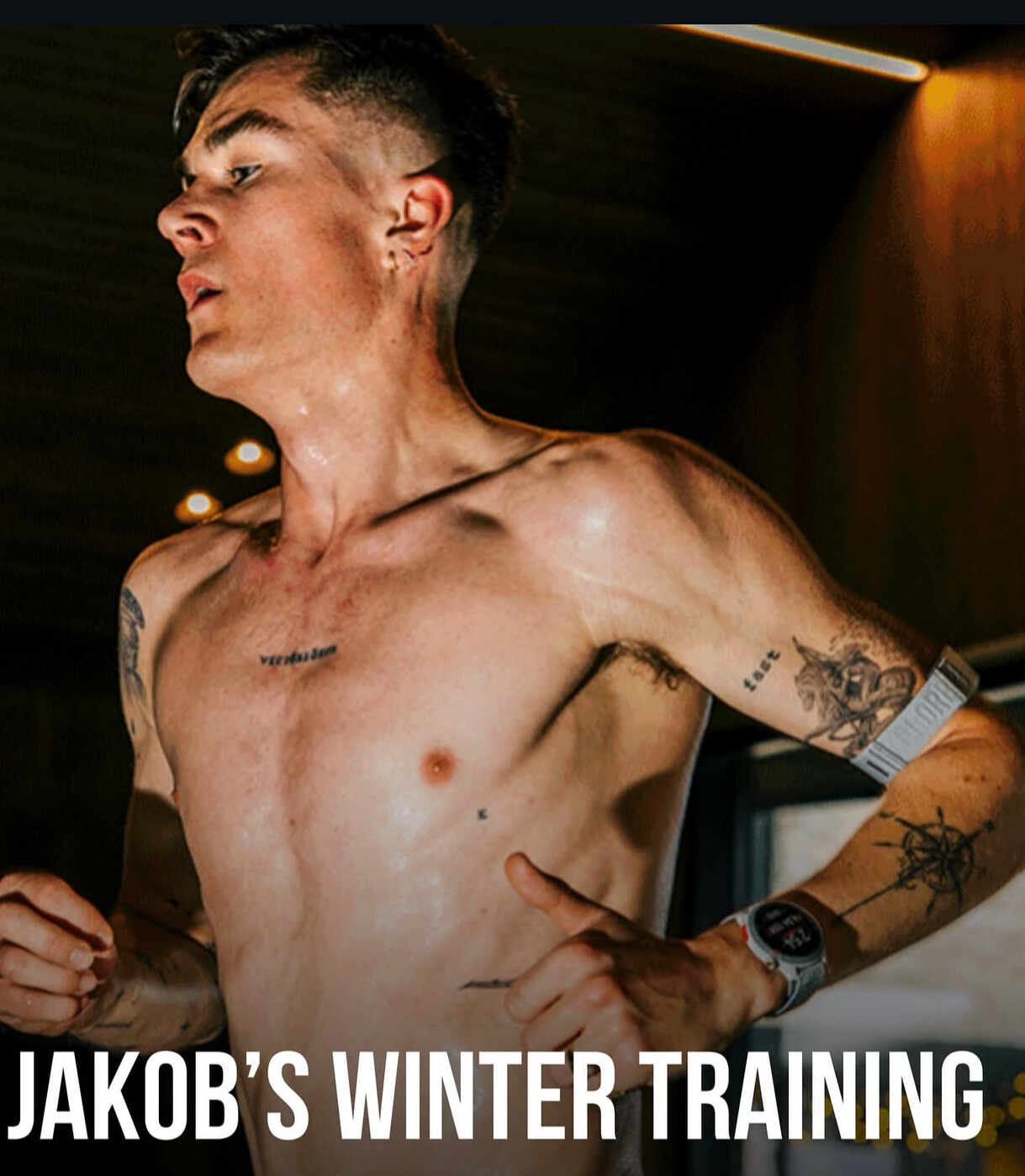
“I hope to break the world records in the 1500 meters, the mile, and the 5000 meters. If I can do that, I’ll be happy. I’ll have to pick out some meets and dates where I have the best chance to make a good attempt,” he told Norway’s VG.
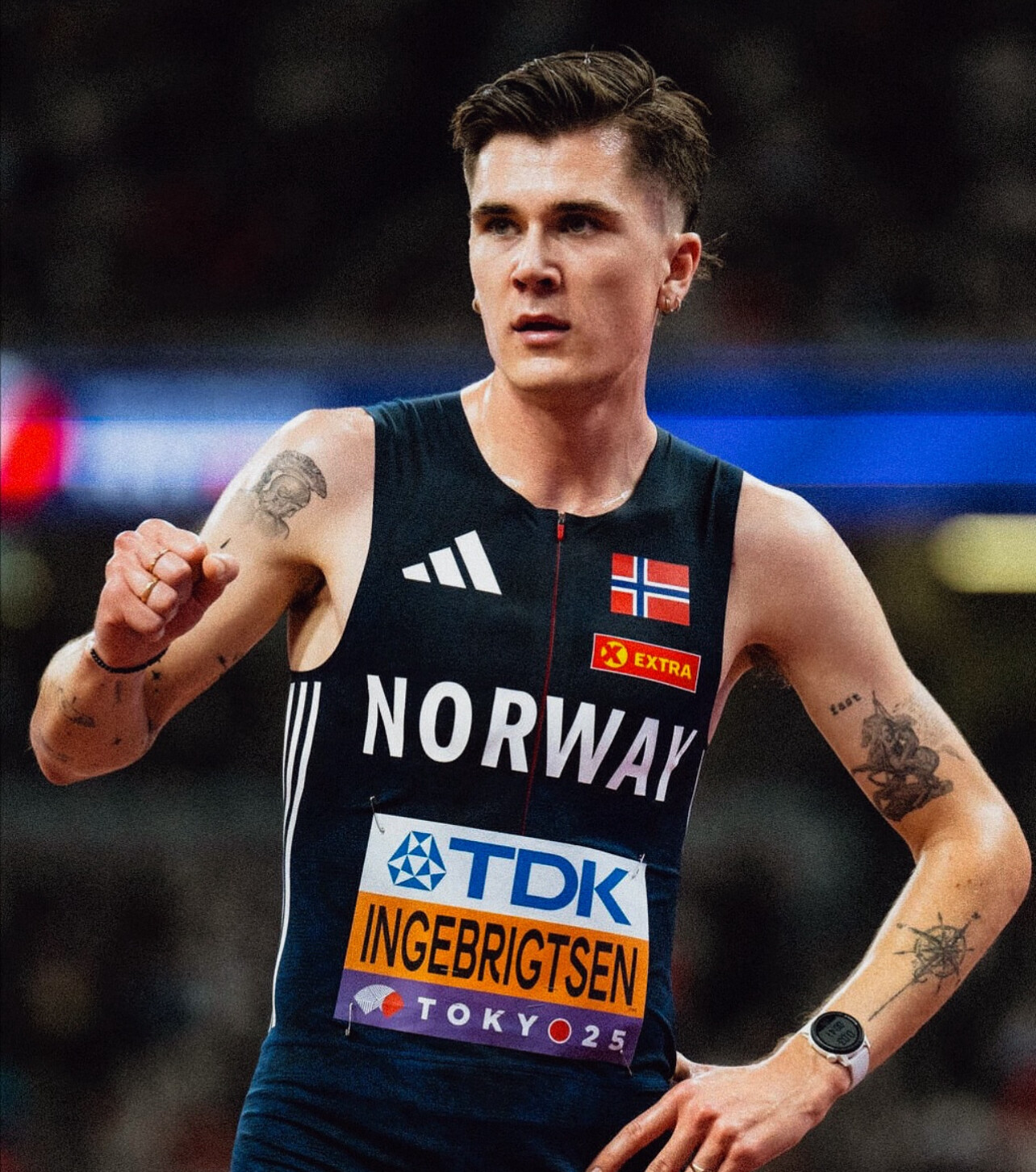
Ingebrigtsen and his wife are already mapping out potential race venues, with Monaco, Paris, Silesia, and Oslo among the leading candidates. Each of these meets has seen lightning-fast performances and could provide the ideal setting for record-breaking runs.
How he stacks up right now:
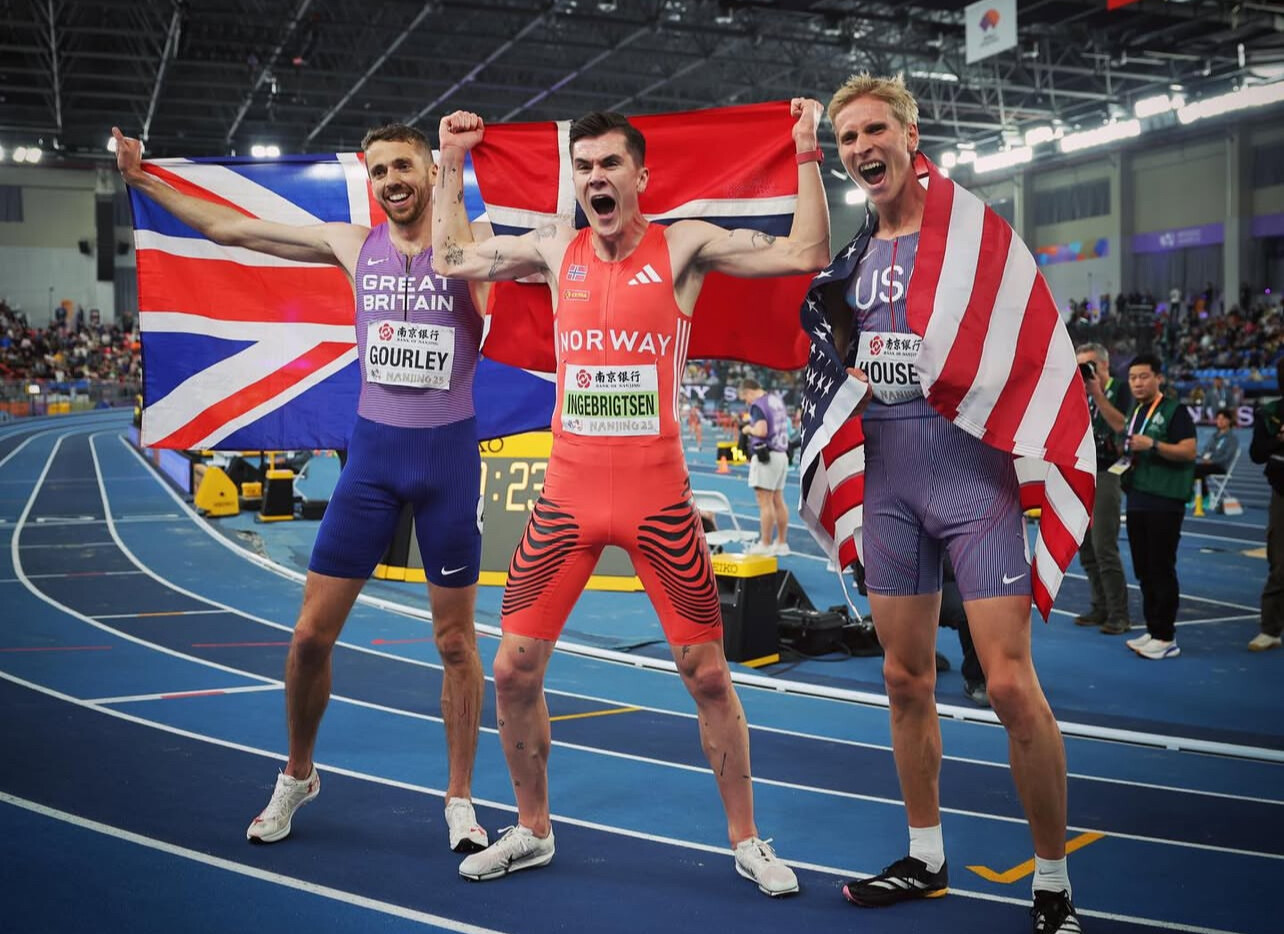
The world record for 1500 meters is 3:26.00, set by Hicham El Guerrouj in 1998. Ingebrigtsen’s personal best is 3:26.73.
The world record for the mile is 3:43.13, also held by El Guerrouj from 1999. Ingebrigtsen’s personal best is 3:43.73.
The world record for the 5000 meters is 12:35.36, set by Joshua Cheptegei in 2020. Ingebrigtsen’s personal best is 12:48.45.
While Ingebrigtsen’s personal bests are already within striking distance of both El Guerrouj’s legendary middle-distance marks and Cheptegei’s long-distance record, breaking all three in one season would be unprecedented.
A Legacy in Motion
At just 25, Ingebrigtsen has already cemented himself as one of the most dominant and versatile athletes in modern track history. From his Olympic gold to multiple World and European Championship titles, his consistency and competitiveness have made him the face of a new generation of runners.
However, much of the 2025 season was disrupted by injury. An Achilles tendon issue forced him to withdraw from major meets and limited his racing calendar. Despite the setback, his ambition remains undimmed.
A sweep of these three world records would not only elevate his legacy but also redefine the limits of what’s possible across middle and long-distance running.
As he carefully plans his record attempts, the world will be watching — because when Jakob Ingebrigtsen sets his mind on something, history often follows.
(10/29/2025) ⚡AMPby Boris Baron
Susanna Sullivan — The Teacher Who Runs Among the World’s Best Set to run NYC Sunday
American marathoner Susanna Sullivan continues to prove that world-class athleticism and everyday life can coexist. A sixth-grade math and science teacher from McLean, Virginia, Sullivan has quietly become one of the top American women in marathon history — balancing the classroom with 120-mile training weeks and remarkable consistency on the roads.
From Humble Beginnings to World Class
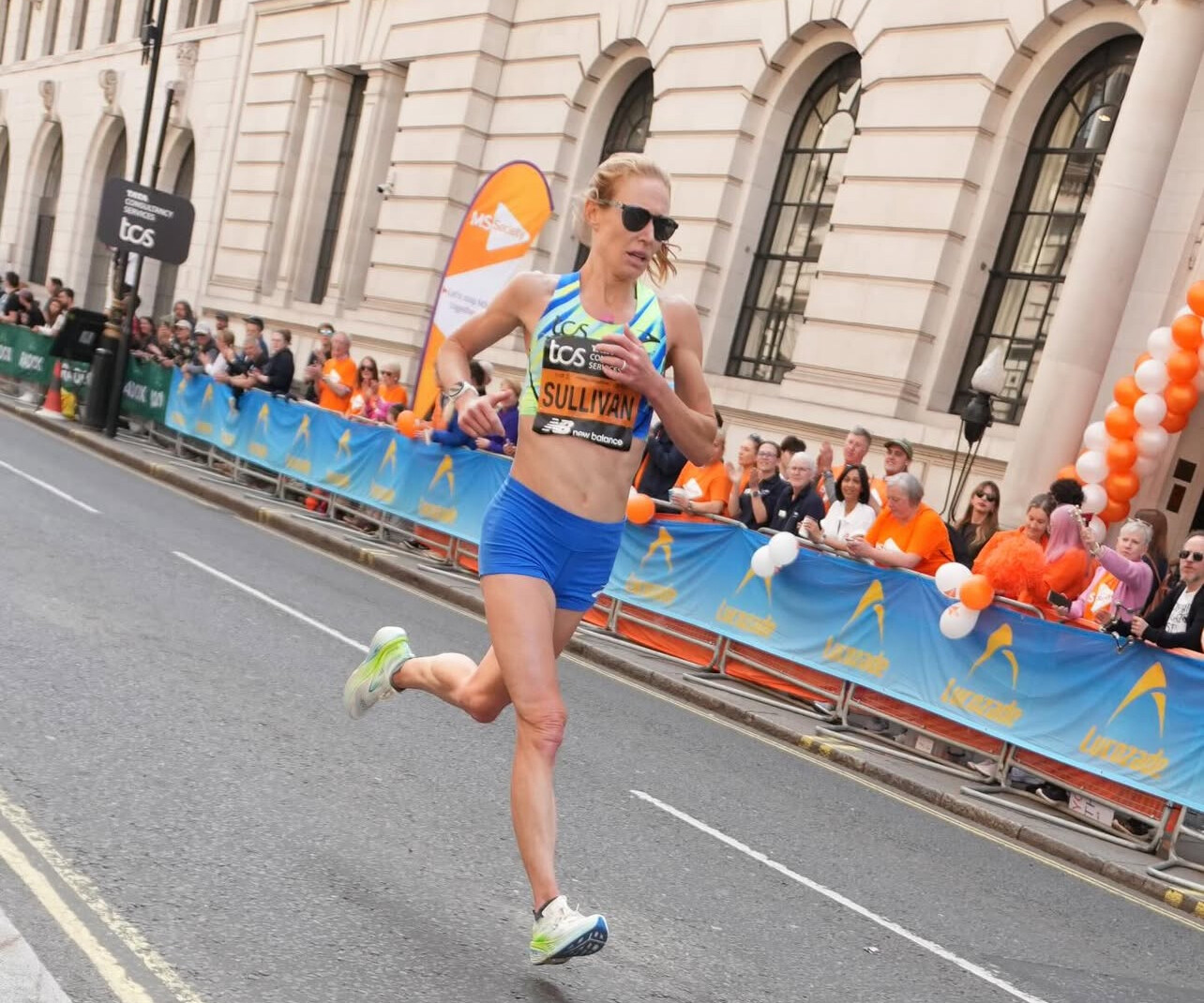
Born May 13, 1990, in West Palm Beach, Florida, and raised in Virginia, Sullivan’s early success came at George Mason High School, where she earned multiple state titles in cross-country and track. After competing at the University of Notre Dame, she battled injuries and fatigue but never lost her love for the sport.
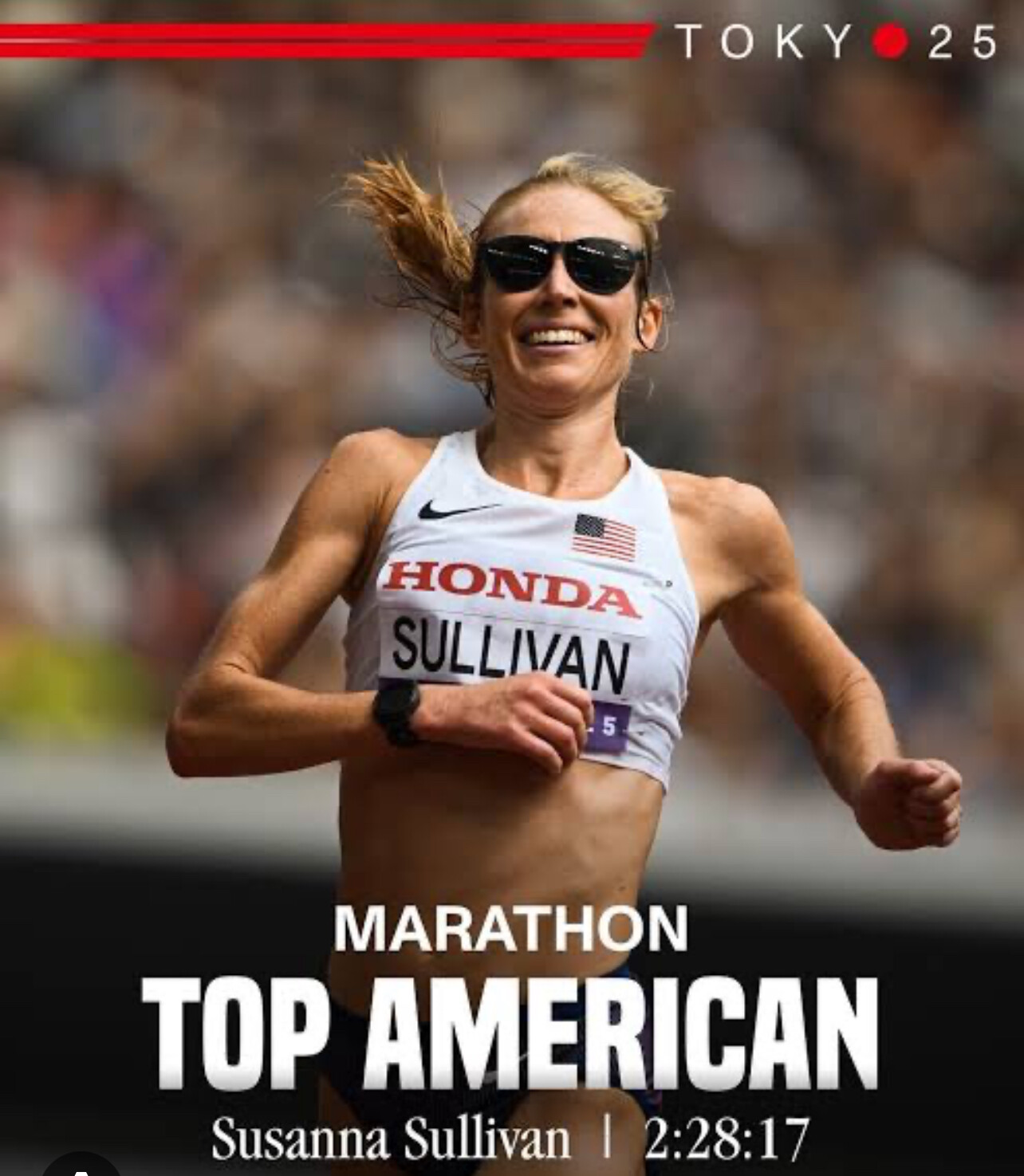
Her marathon debut came in 2015 at Grandma’s Marathon in Minnesota, where she clocked 2:35:37 for 9th place. Over the next decade, she quietly built momentum, cutting time from race to race. The breakthrough arrived in 2024 at the Chicago Marathon, where she finished 7th overall — and first American — in 2:21:56, a personal best that placed her among the top ten fastest U.S. women of all time.
Fourth at the 2025 World Championships in Tokyo
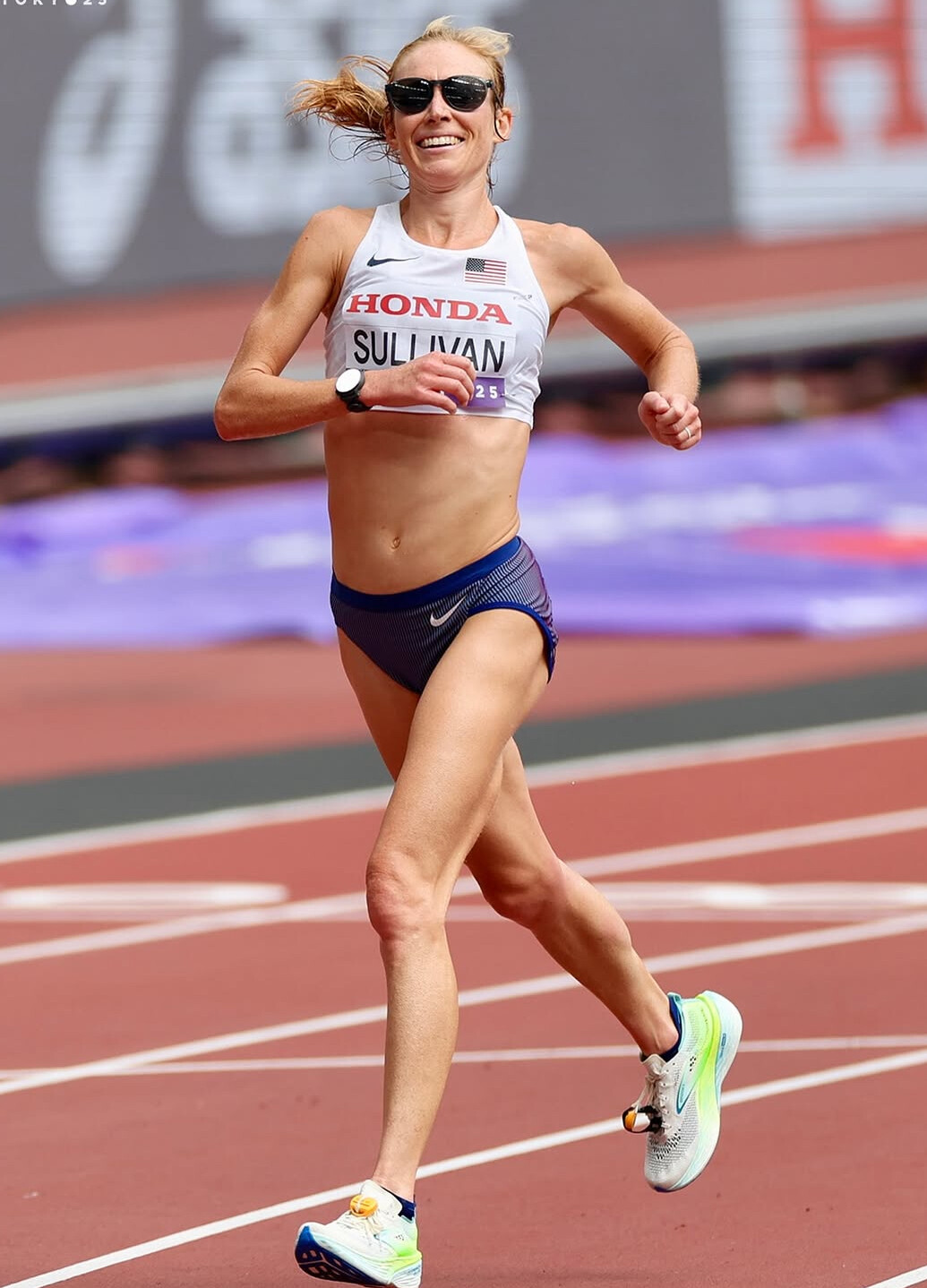
On September 14, 2025, Sullivan delivered one of her finest performances at the World Athletics Championships Marathon in Tokyo, finishing fourth in 2:28:17.
Under sweltering heat and high humidity, Sullivan courageously led much of the race, setting the pace through 25 kilometers before the eventual medalists pulled away. Her performance — the top American finish — underscored her strength, tactical intelligence, and resilience on one of the sport’s biggest stages.
It also marked a full-circle comeback. Two years earlier, at the 2023 World Championships, Sullivan fractured her kneecap mid-race and limped home in 58th place. Her return to the top five in Tokyo symbolized perseverance and renewed confidence.
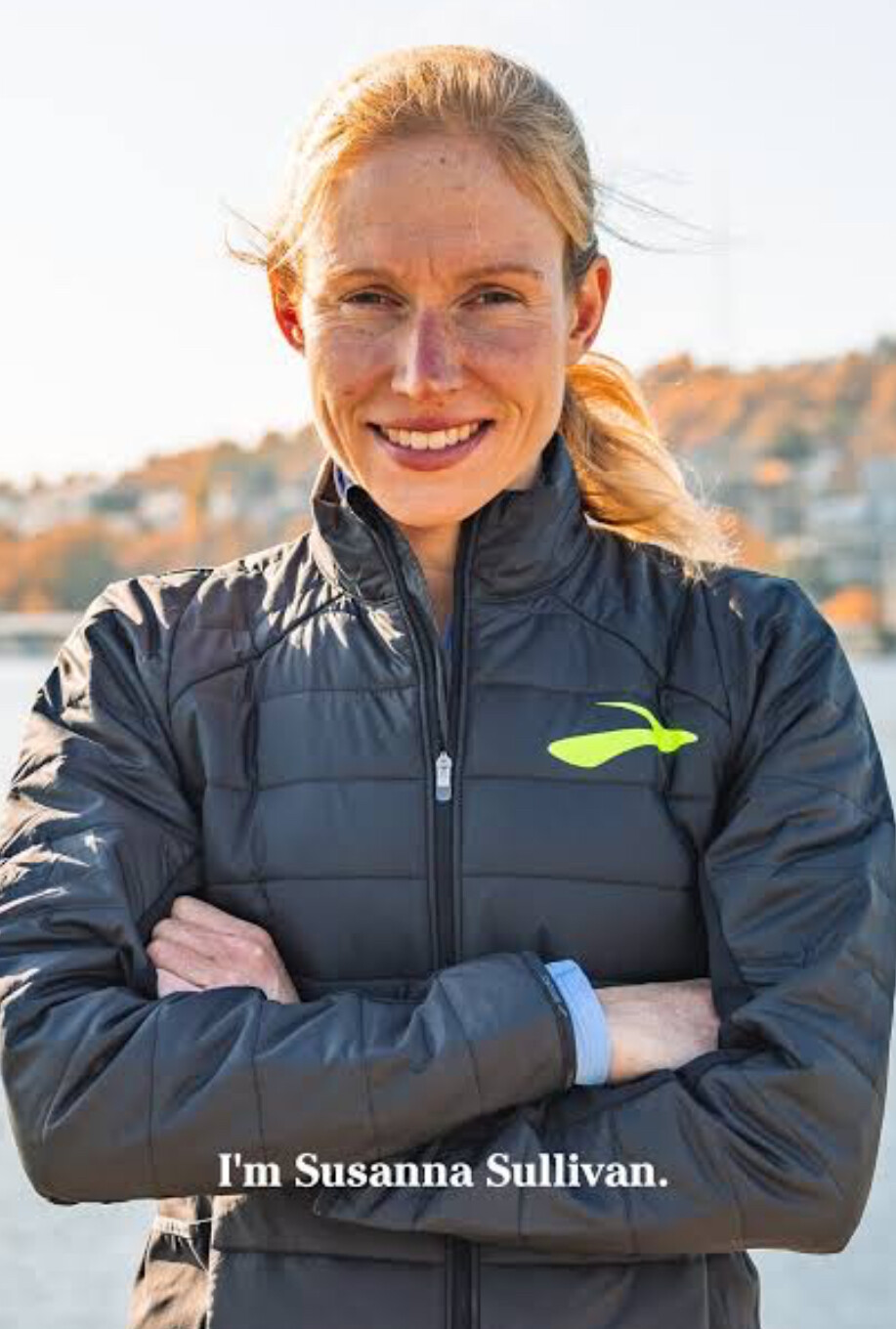
The Balance of Two Worlds
While most professional runners build their lives around training, Sullivan still starts her mornings in the classroom. She teaches sixth-grade advanced math and science, grading papers and designing lessons between workouts.
“Running gives me perspective,” she has said in interviews. “It keeps me grounded. Teaching reminds me there’s more to life than splits and finish times.”
Her ability to balance two demanding worlds has made her an inspiration for runners who juggle careers, families, and athletic dreams.
On to New York
Next up, Sullivan is set to compete in the 2025 TCS New York City Marathon on Sunday, November 2. She enters as one of the leading Americans to watch in a stacked international field that includes Olympians and major-marathon champions.
After her stellar run in Tokyo, many eyes will be on how she handles the challenging hills and bridges of New York — a course that rewards experience and toughness rather than speed alone. Few embody those traits better than Sullivan.
Lessons from Her Journey
• Patience and perseverance — her steady rise from 2:35 to 2:21 shows the value of long-term commitment.
• Balance — proof that excellence isn’t limited to full-time athletes.
• Resilience — recovering from injuries and setbacks only to climb higher.
• Leadership — both in the classroom and in leading a world championship field
Career Highlights
• Marathon PR: 2:21:56 – Chicago (2024)
• World Championships Tokyo (2025): 4th Place, 2:28:17
• London Marathon (2023): 10th Place, 2:24:27 (top American)
• Cherry Blossom 10-Mile (2022): Champion, 52:32
• Half Marathon PR: 1:08:59 – January 2025
A Runner to Watch
Susanna Sullivan’s story reminds us that greatness doesn’t always come from perfect conditions or full-time focus. Sometimes it comes from a quiet classroom in Virginia, where a teacher grades homework — and then goes out to train like one of the best marathoners in the world.
Her journey is far from over, and as she lines up in New York, she represents not just American distance running but every runner chasing balance, progress, and purpose — one mile at a time.
(10/29/2025) ⚡AMPby Boris Baron
Buze Diriba Eyes Greater Heights After Frankfurt Marathon Triumph
Ethiopia’s Buze Diriba could be the next major star in women’s marathon running, judging by her performance at the Mainova Frankfurt Marathon. On Sunday, the 31-year-old captured the biggest win of her road-running career, dominating the race from start to finish and clocking a personal best of 2:19:34 — making her the fifth-fastest woman in Frankfurt’s history.
Despite strong headwinds and the loss of her pacemaker with 10 kilometers to go, Diriba maintained control. “If that hadn’t happened and the wind hadn’t been so strong, I would have run 2:16 today,” she said after earning the €30,000 winner’s prize. “Next time I’ll aim to run around 2:16.”

Ambitions Beyond Frankfurt

Diriba’s breakthrough in Frankfurt could mark the beginning of a new chapter. “I want to run in the World Championships and Olympic Games and win titles,” she said. Her goal is clear — to join the elite ranks of Ethiopia’s greatest distance runners.
She trains under Gedemu Dedefo in Addis Ababa, one of the most powerful marathon training groups in the world. The camp includes Olympic and World Championship silver medalist Tigst Assefa, Chicago Marathon champion Hawi Feysa, and Olympic marathon champion Tamirat Tola.
A year ago, Feysa used Frankfurt as her own launchpad to stardom, setting a course record of 2:17:25. Diriba came to this year’s edition determined to challenge that mark. “It helps me to have such strong training partners — it makes me stronger,” she explained. “I know I’ll need to run under 2:15 in the future to reach world-class level.”
From Arsi to the World Stage
Diriba hails from Asela, in Ethiopia’s famed Arsi region — the same area that produced legends such as Haile Gebrselassie. Her parents are farmers, and as a child she helped with chores before running to school each morning, “only about 20 minutes away.”
She began running competitively at 16, inspired by Ethiopian Olympic champions Meseret Defar and Tirunesh Dibaba. At 18, she captured the World Junior 5,000m title (2012), signaling her potential as a future great.
“Since then, Gemedu Dedefo has been my coach,” Diriba said. Now a mother of two young daughters, she credits her husband Guta Wami for keeping the household running while she trains and competes.
A Family of Runners
Athletic talent runs deep in the Diriba family. Her younger brother Boki Diriba, 21, is already making his mark, finishing 10th at the 2023 World Cross Country Championships and running 2:07:13 for sixth in Hamburg this April.
With Buze and Boki both rising fast, the Diriba name could soon become one of the most recognized in international road running — a new family dynasty emerging from Ethiopia’s storied highlands.
(10/29/2025) ⚡AMPby Race News Service
Finding Freedom on the Trails: How Running Helps a Yorkshire Mum Reclaim Her Identity
For 52-year-old Jude Harrison of York, North Yorkshire, England, running is far more than a fitness routine—it’s a lifeline. Between caring for her 17-year-old stepdaughter Emily, who was born with a rare chromosome translocation, and raising her 11-year-old daughter Tilly, life can feel like a constant balancing act. Yet through trail running, Jude has discovered a renewed sense of freedom and self.
“Sometimes it feels like Steve and I are two single parents living together,” Jude admits. “We’re always dividing our time because the girls have such different needs.”

Emily is non-verbal, non-mobile, and lives with developmental delays that require full-time care. She attends a special needs school and receives monthly respite support, but most of the time, Jude and her husband Steve share her day-to-day care.

“When you become a parent, it’s easy to lose your sense of identity,” Jude says. “With a child who has complex needs, that feeling can be even stronger. Running is the time I carve out just for me. It’s my thing—it’s who I am. Out on the trails, I’m not just Emily’s mum or Tilly’s mum—I’m Jude.”
Trail running has become her sanctuary, helping her manage stress and stay mentally strong. Jude says the variety of the terrain, the scenery, and the camaraderie make it more rewarding than road running.
“People think trail running is harder, but I disagree,” she says. “There’s an unspoken rule that you walk the hills, run the flats, and enjoy the downhills. It’s about fun and community as much as fitness.”
Last month, Jude took on the 2 Valleys 22K Trail Race in the Lake District, England. With her husband staying home to care for Emily, she joined a team of 25 athletes and adventurers sponsored by Coventry Building Society, part of its campaign to support over-50s achieving their goals.
“Crossing the finish line in Keswick felt incredible,” she recalls. “Everyone was shouting my name. For once, it was just about me. It reminded me that I’m still capable of chasing my own goals.”
Now, Jude has her sights set on next year’s 5 Valleys Challenge, which doubles the distance of her most recent race.
“I sometimes have to remind myself that I’m 52 and still out here doing this,” she says. “It’s not about trophies—it’s about being present, keeping fit, and showing my daughters that age and circumstance don’t define you. I’ve still got plenty of running left in me.”
(10/28/2025) ⚡AMPby Boris Baron
At 91, Koichi Kitabatake Will Be the Oldest Runner in the 2025 New York City Marathon
When Koichi Kitabatake steps onto the starting line of the 2025 TCS New York City Marathon on November 2, he will make history as the oldest competitor in the field — at 91 years old.
The runner from Kanagawa, Japan, didn’t start running until long after most people retire. In fact, he only took up the sport at age 74, after finishing a long career as a telecommunications specialist. Four years later, at 78, he ran his first marathon — and he hasn’t stopped since.
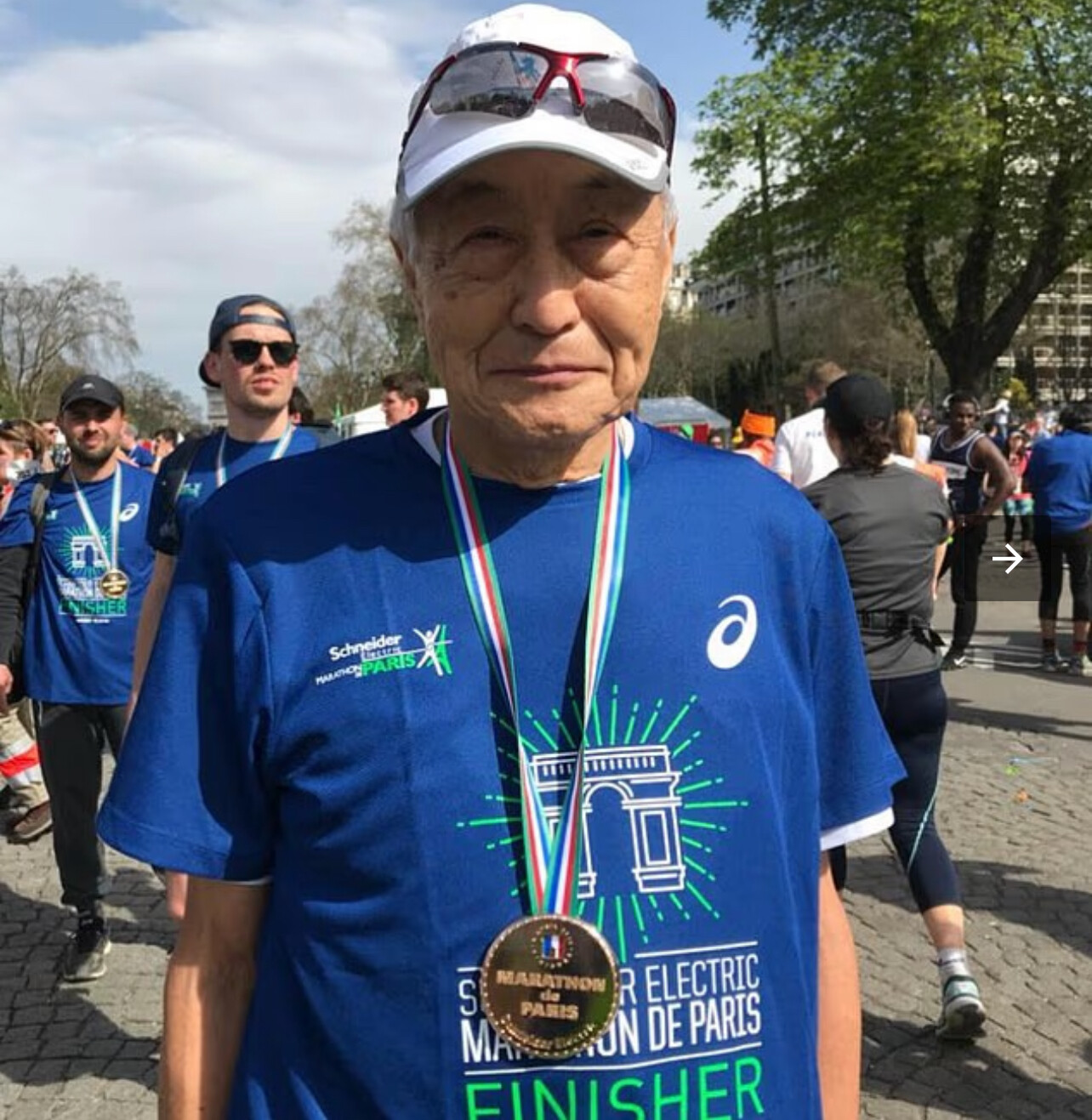
This year’s race will mark his 34th marathon, including two previous finishes in New York City. Kitabatake has flown across the world to participate in marathons on nearly every continent, proving that passion and discipline know no age limits.
Running Into His 90s
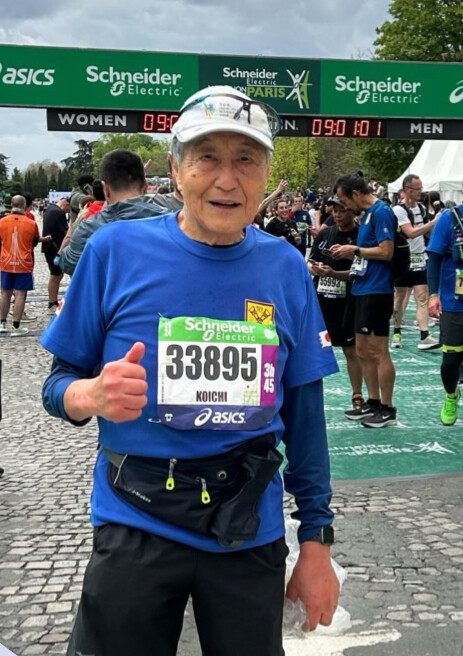
As he prepares for the 26.2-mile journey through all five boroughs of New York City, Kitabatake shared with the Daily Mail some of his daily habits that keep him strong — both physically and mentally — well into his 90s.
“I do a short workout and stretching every morning for about half an hour,” he said. “Then I run four to six miles twice a week, depending on how I feel.”
It’s a simple but powerful routine — one that underscores his belief in consistency over intensity.
Beyond the physical benefits, Kitabatake says running has transformed his outlook on life.
“Running has changed how I see things,” he told the Daily Mail. “It helps me stay positive and keeps my mind healthy.”
A Source of Inspiration
Kitabatake’s story has inspired countless others, especially those who feel it’s “too late” to start something new. His steady approach, humility, and unwavering commitment to movement highlight the broader spirit of the marathon itself — endurance, courage, and the celebration of life at every age.
As thousands line up in Staten Island to begin the 2025 TCS New York City Marathon, Kitabatake will stand among them — proof that age is just a number, and that the human spirit, when fueled by purpose, can keep running forever.
(10/27/2025) ⚡AMPby Boris Baron
Kenenisa Bekele Joins 2025 New York City Marathon Elite Field
Ethiopian legend Kenenisa Bekele, the third-fastest marathoner in history with a 2:01:41 personal best from Berlin 2019, has officially been added to the 2025 TCS New York City Marathon elite men’s field — setting up yet another thrilling clash with Eliud Kipchoge.
Bekele, now 43, withdrew from April’s London Marathon due to recurring injuries that disrupted his buildup. His most recent marathon finish came at the Paris Olympic Marathon, where he placed 39th in 2:12:24. Despite the setback, Bekele’s experience and resilience continue to make him one of the sport’s most compelling figures.
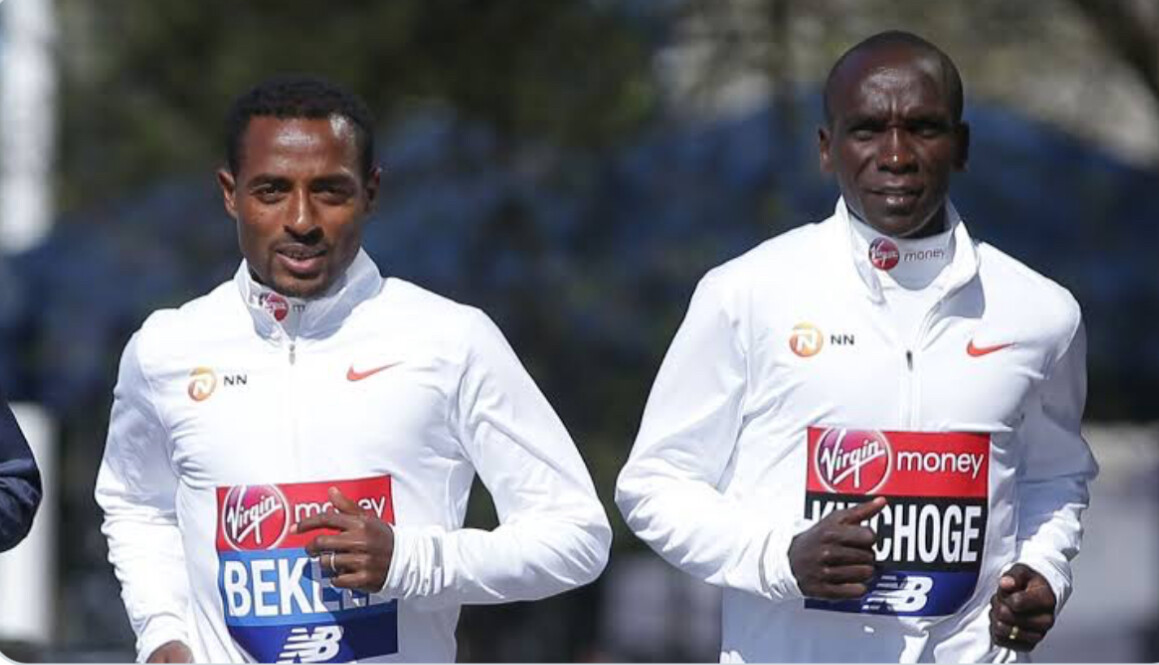
This year’s New York City Marathon will mark Bekele’s sixth career race against Kipchoge, the reigning Olympic champion and former world record holder. Bekele’s only “victory” in that rivalry came at the Paris Olympics, when Kipchoge dropped out mid-race.
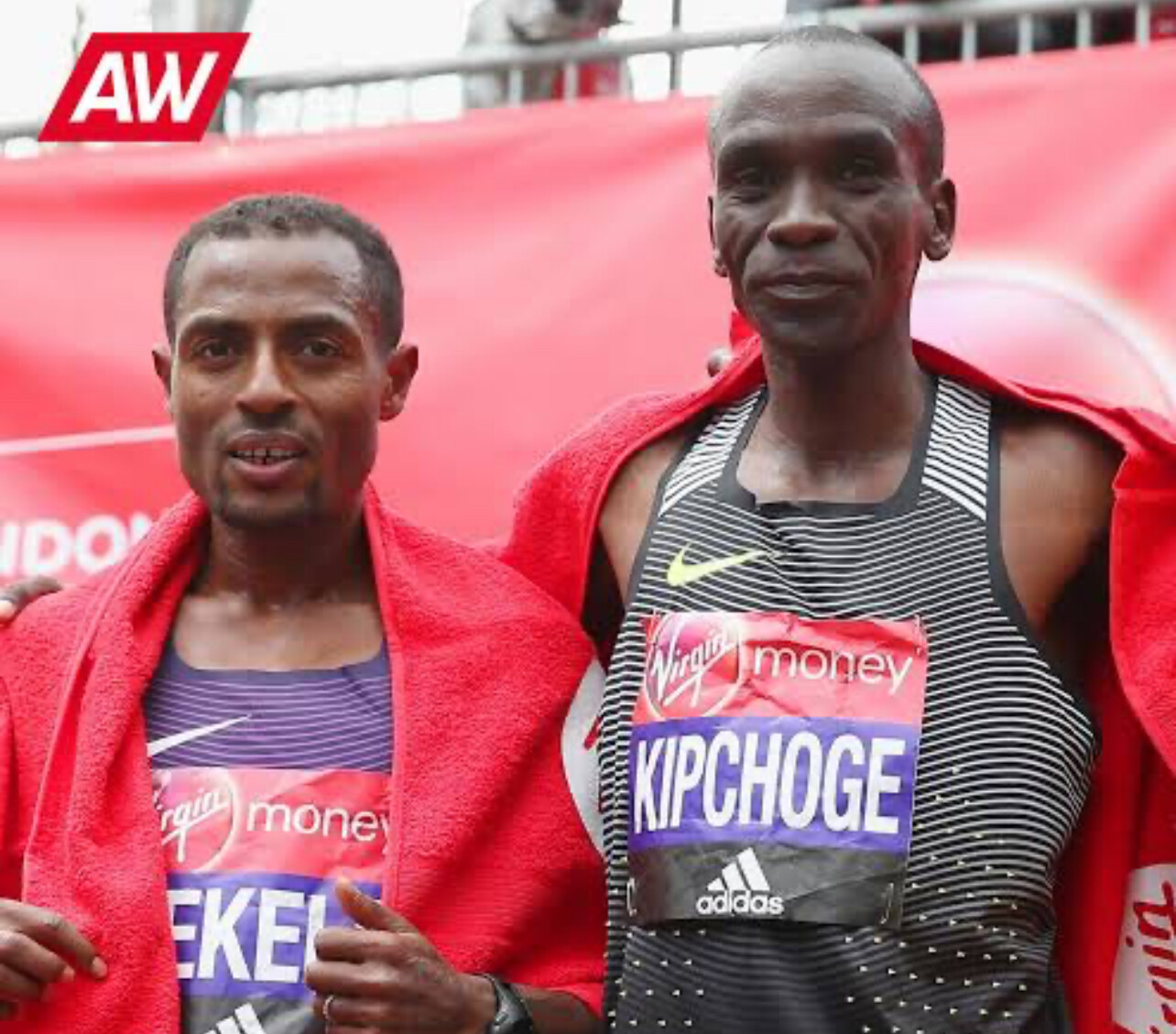
Bekele’s addition brings new intrigue to a field already rich in talent and storylines. While New York’s undulating course rarely produces record times, it remains one of the most prestigious and unpredictable races on the global marathon calendar — a true test of strategy and mental strength.
Notably absent from the 2025 lineup is Evans Chebet, the 2022 NYC Marathon champion and last year’s runner-up. Chebet has withdrawn from this year’s race after failing to finish at the Boston Marathon in April.
As the countdown begins, all eyes turn to Central Park, where two of the greatest marathoners of all time — Bekele and Kipchoge — are set to renew their rivalry on one of the world’s toughest stages.
Will Bekele’s comeback write a new chapter in marathon history, or will Kipchoge’s consistency once again define the day? On November 2, New York will have its answer.
(10/27/2025) ⚡AMPby Boris Baron
From Charcoal Seller to Champion Coach: The Remarkable Journey of Philemon Kiptoo in Kapcherop
In the cool highlands of Kapcherop, where morning mist drapes over rolling potato farms and runners trace winding red-dirt trails, coach Philemon Kiptoo is living out a dream that once seemed far beyond his reach.
The son of a humble family of nine, Philemon’s rise from selling charcoal barefoot to mentoring Kenya’s next generation of marathon stars is a story of resilience, faith, and the transformative power of community.
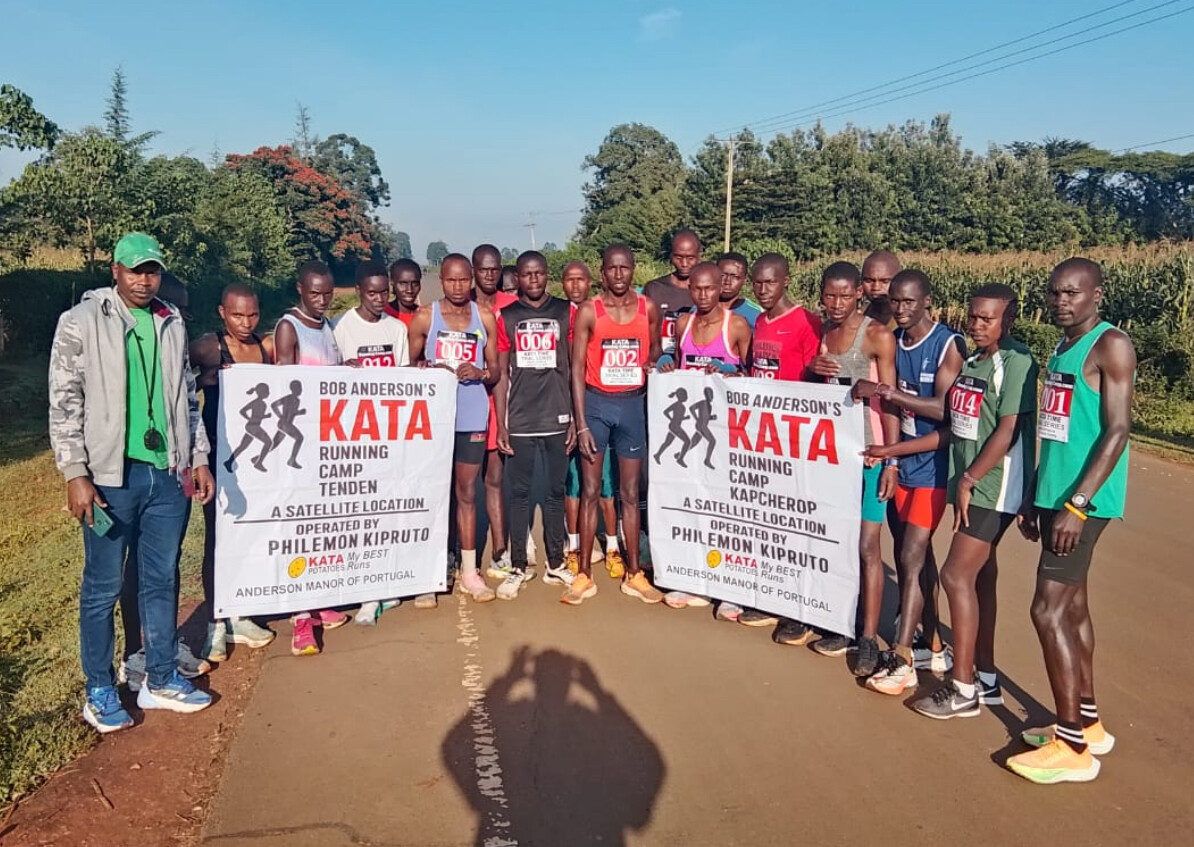
A New Chapter with KATA
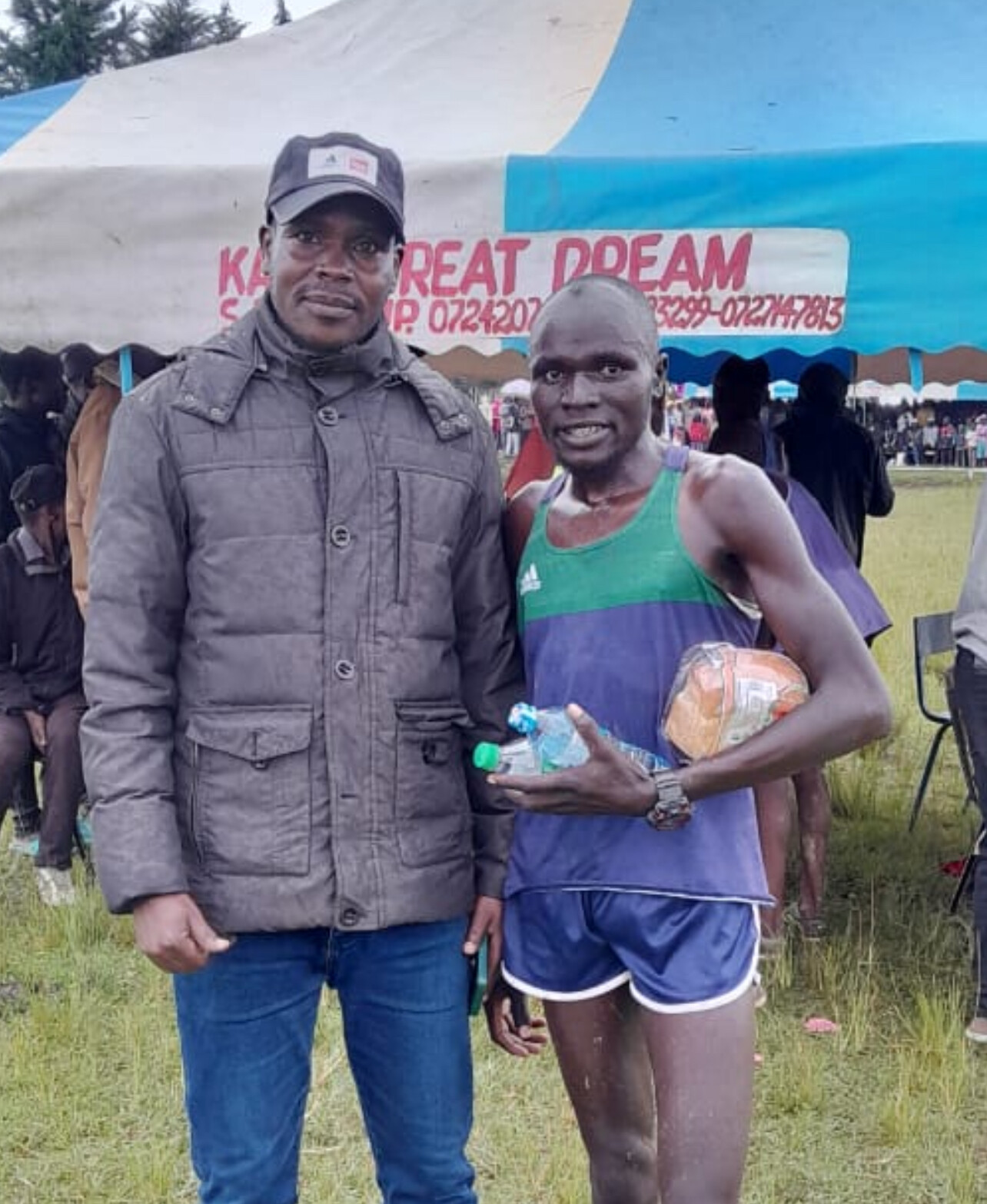
Philemon’s turning point came when he joined the KATA network — an initiative founded by U.S.-based running pioneer Bob Anderson to empower grassroots runners and coaches through mentorship, clean sport advocacy, and sustainable income projects.
At his Kapcherop Training Camp, KATA’s support extends beyond athletics. Through the organization’s integrated potato farming program, athletes earn a steady income that helps cover food, accommodation, and basic gear.
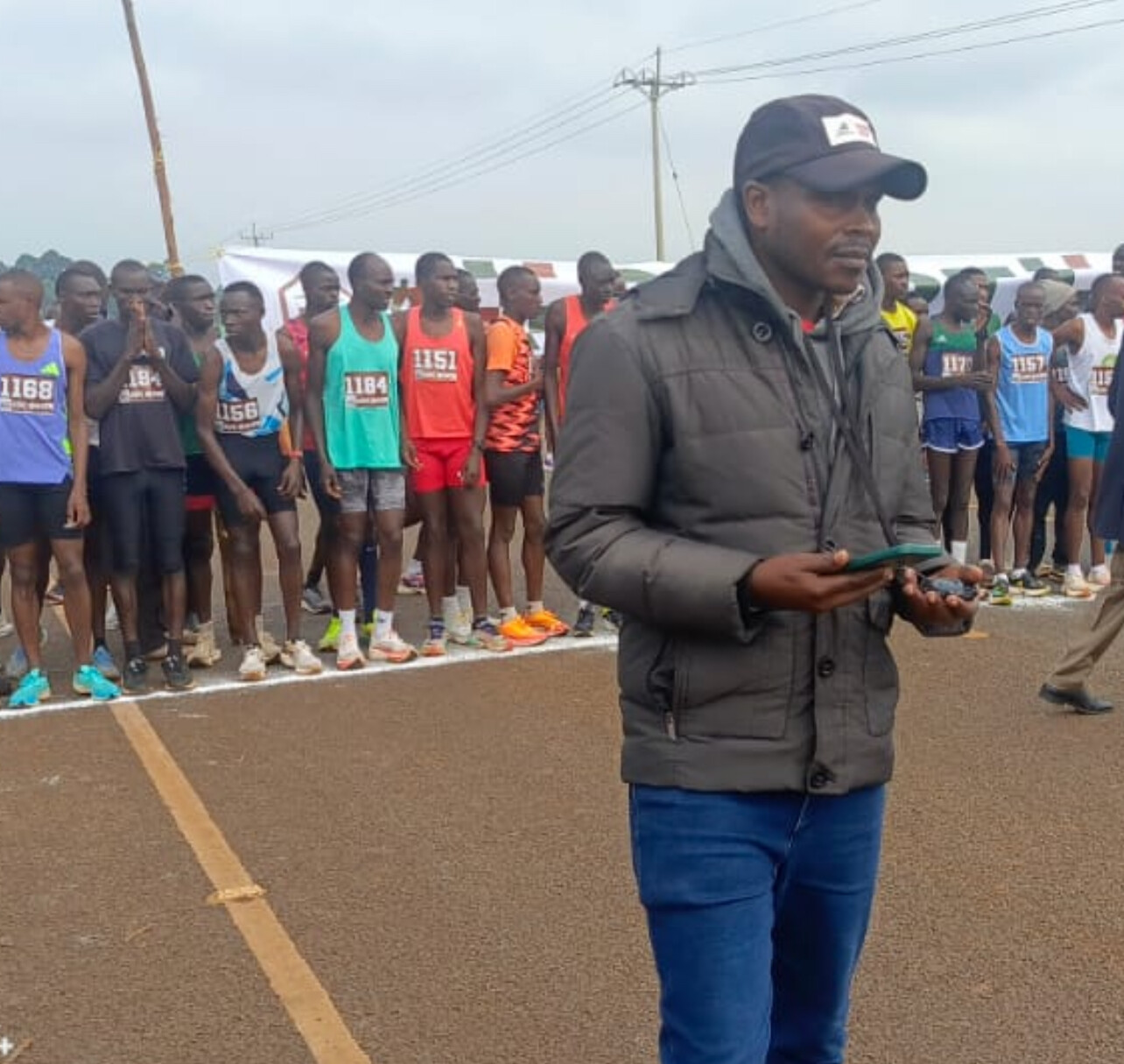
“The support from KATA has made a big difference,” Philemon says with quiet pride. “Most of my athletes come from humble backgrounds like mine. With potato farming and basic support, we can now train without worrying about what to eat or where to stay.”
That stability has begun to pay off. At the Standard Chartered Nairobi Marathon on October 26, his athletes delivered impressive performances: Donald Kimaru finished 4th in the men’s marathon; Dancan Kemei and Dennis Kosgei placed 18th and 21st in the men’s half marathon; Beatrice Rutto finished 11th in the women’s marathon; and in the men’s 10K, Leonard Pkorir and Enoch Tanui placed 3rd and 5th respectively, with Evans Kemboi 16th. Donald also on September 20th placed second at the Double Road Race 15k just 17 seconds behind the winner Edwin Soi in the two leg race. The sixth best time ever.
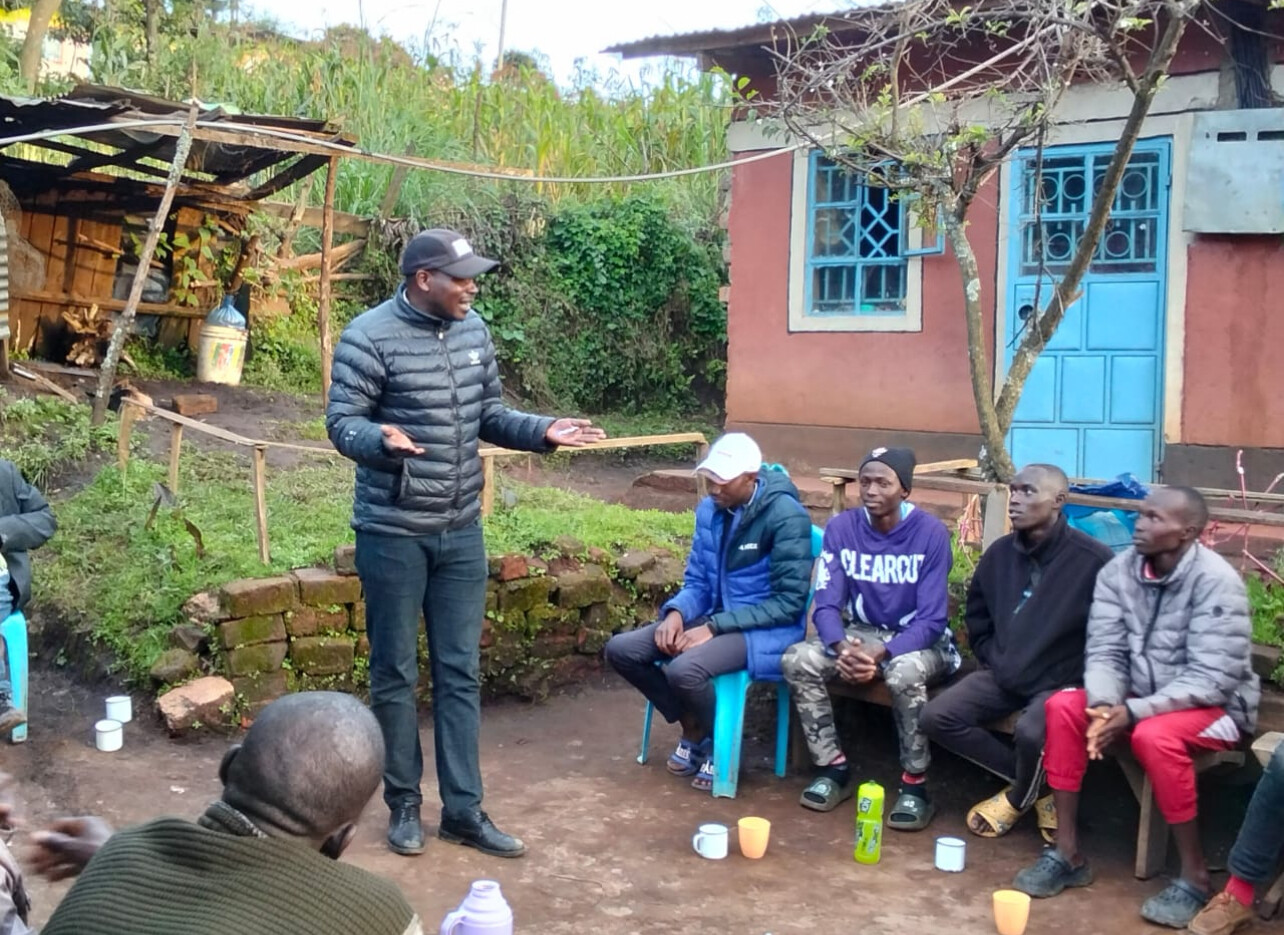
“Each of these athletes represents hope,” Philemon reflects. “With clean training and support, young people from small villages can stand tall on the national stage.”
Humble Beginnings
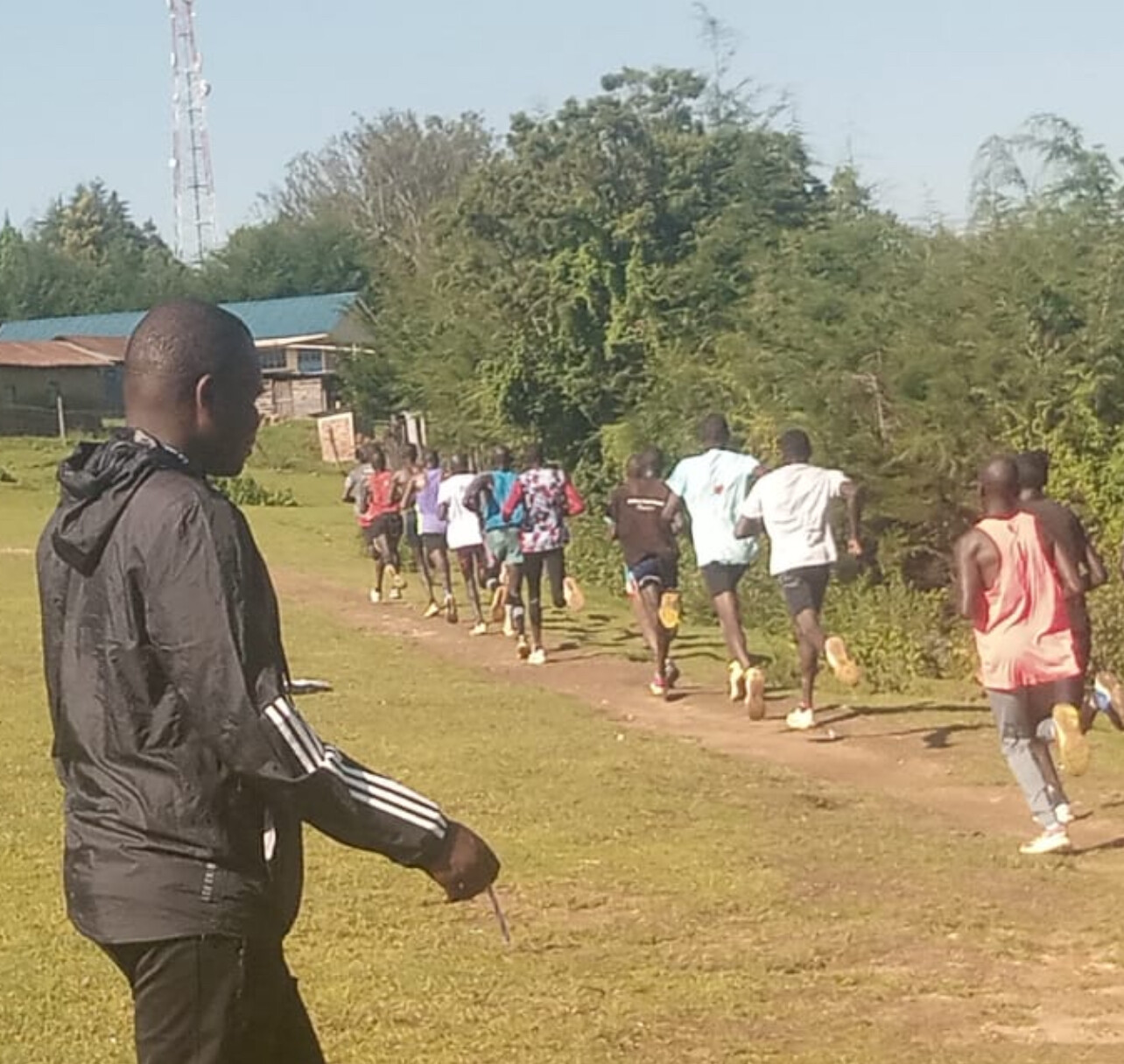
Born in Sing’ore, near the slopes of Elgeyo Marakwet, Philemon’s path to athletics was shaped by hardship.
“I was the last born in a family of nine — three brothers and sisters,” he recalls. “I attended Kobil Primary near Sing’ore Girls and later Kimuron Secondary, but I couldn’t finish because of school fees.”

Returning home to Kapkanyar, he refused to give up.
“In 2007, I started training with no shoes,” he says. “I sold charcoal to buy my first pair of Asics for 700 shillings (about $6).”
Years of persistence paid off when he began racing in 2012, earning his first major result with a runner-up finish at the Kakamega Forest Half Marathon. That breakthrough fueled his dream — not just to compete, but to guide others.

Building Champions
“I started with a few athletes,” Philemon says. “I rented them a small house and bought food — not because I had much, but because I knew what it felt like to need a chance.”
Today, he stands alongside a remarkable family of mentors: four brothers, all coaches.
• Eric Kimaiyo leads the Kapsait Training Camp.
• Andurson Chirchir coaches in Kaptagat.
• Kimutai runs training at Srowback.
• And Philemon oversees the Kapcherop Camp — a thriving hub for emerging distance runners.
Integrity and Clean Sport
What makes Philemon’s story powerful isn’t only perseverance — it’s integrity. A vocal advocate of clean sport, he embodies KATA’s core philosophy.
“We must speak the truth and say no to doping,” he insists. “If you train clean and stay patient, you’ll win with pride. There are no shortcuts to greatness.”
KATA’s influence has reinforced those values, fostering a culture of honesty and teamwork across its growing network.
“Bob Anderson’s support hasn’t just sustained our camp,” Philemon adds. “It has helped shape a generation built on discipline and hard work. We are building athletes who can inspire others.”
A Legacy of Hope
To his athletes, Philemon is more than a coach — he’s a father figure.
“He treats us like family,” says Leonard Pkorir, who won bronze in the Nairobi 10K. “He believes in our dreams even when we doubt ourselves.”
Looking ahead, Philemon’s goal remains simple yet profound: to use running as a bridge to a better life.
“My happiness will be to see my athletes doing great things, helping others, and carrying forward the spirit of running clean,” he says. “That will be my legacy.”
As evening fog rolls across the Kapcherop hills and the rhythmic thud of training shoes fades into the distance, Philemon Kiptoo’s story stands as a reminder that greatness can indeed grow from the humblest soil — when it is nurtured with purpose, honesty, and heart.
(10/27/2025) ⚡AMPby Robert Kibet
Andreas Almgren Breaks European Record as Agnes Ngetich Runs Second Fastest Half Marathon Ever in Valencia
Valencia, Spain — October 26, 2025 - The 2025 Valencia Half Marathon Trinidad Alfonso Zurich once again lived up to its global reputation as the fastest half marathon on Earth. The flat, coastal course produced extraordinary performances from both the men’s and women’s elite fields — highlighted by Sweden’s Andreas Almgren becoming the first European ever to break 59 minutes, and Kenya’s Agnes Jebet Ngetich clocking the second-fastest women’s time in history.
MEN’S RACE: ALMGREN MAKES HISTORY AS KEJELCHA DOMINATES
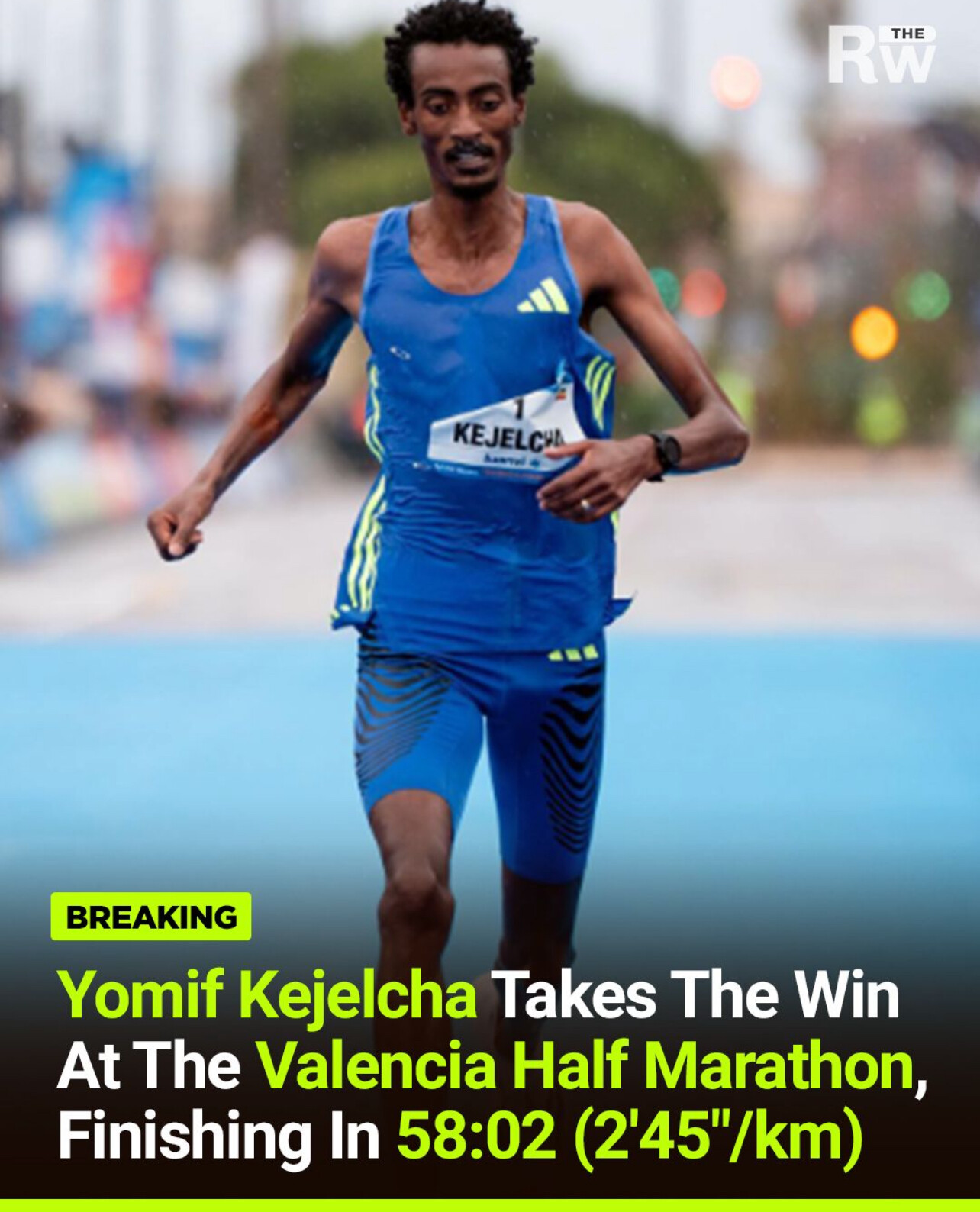
Ethiopia’s Yomif Kejelcha retained his Valencia title with a blistering 58:02, further cementing his place among the all-time greats. Though it was outside the current world record of 56:42, set earlier this year by Uganda’s Jacob Kiplimo at the Barcelona Half Marathon, Kejelcha’s effort was commanding from start to finish.
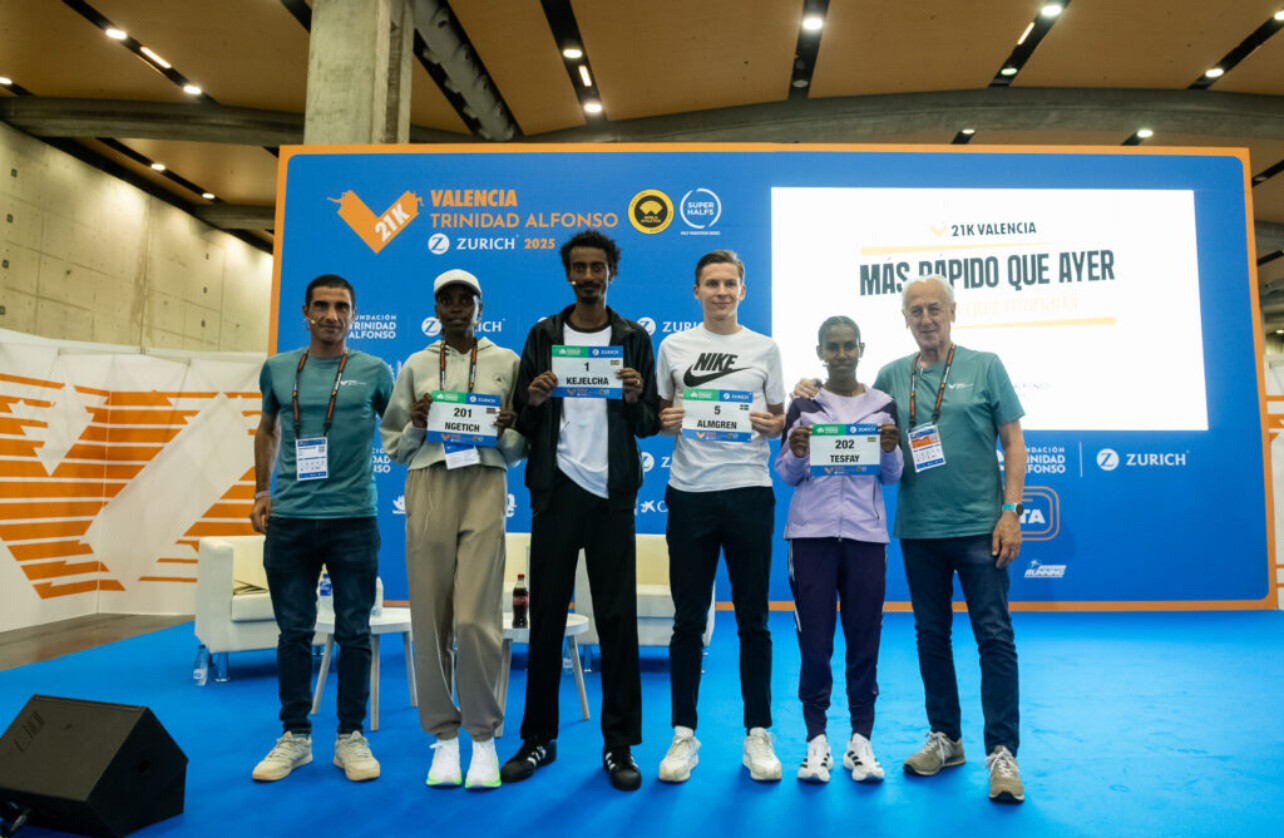
Running in his slipstream, Rodrigue Kwizera of Burundi and Brian Kibor of Kenya both crossed in 58:39, but the day’s biggest breakthrough came from Sweden’s Andreas Almgren, who stormed home in 58:41 — a stunning new European record.

The 29-year-old Almgren shattered the previous continental best of 59:13, set by Julien Wanders in 2019, and became the first European athlete in history to dip under the 59-minute barrier.
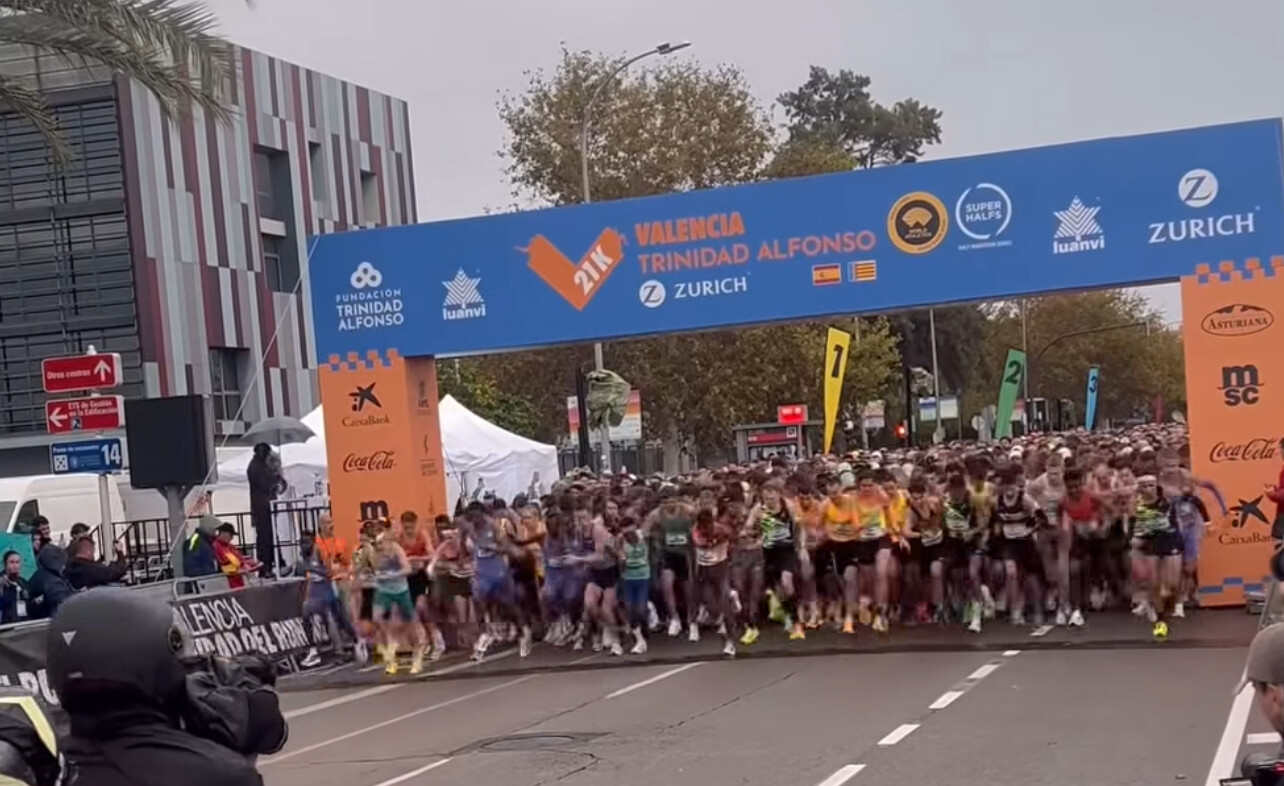
“This means everything,” Almgren said after the finish. “I came to Valencia knowing it was the place for fast times, but to run 58:41 — it’s beyond my dreams. Europe is back in the game.”
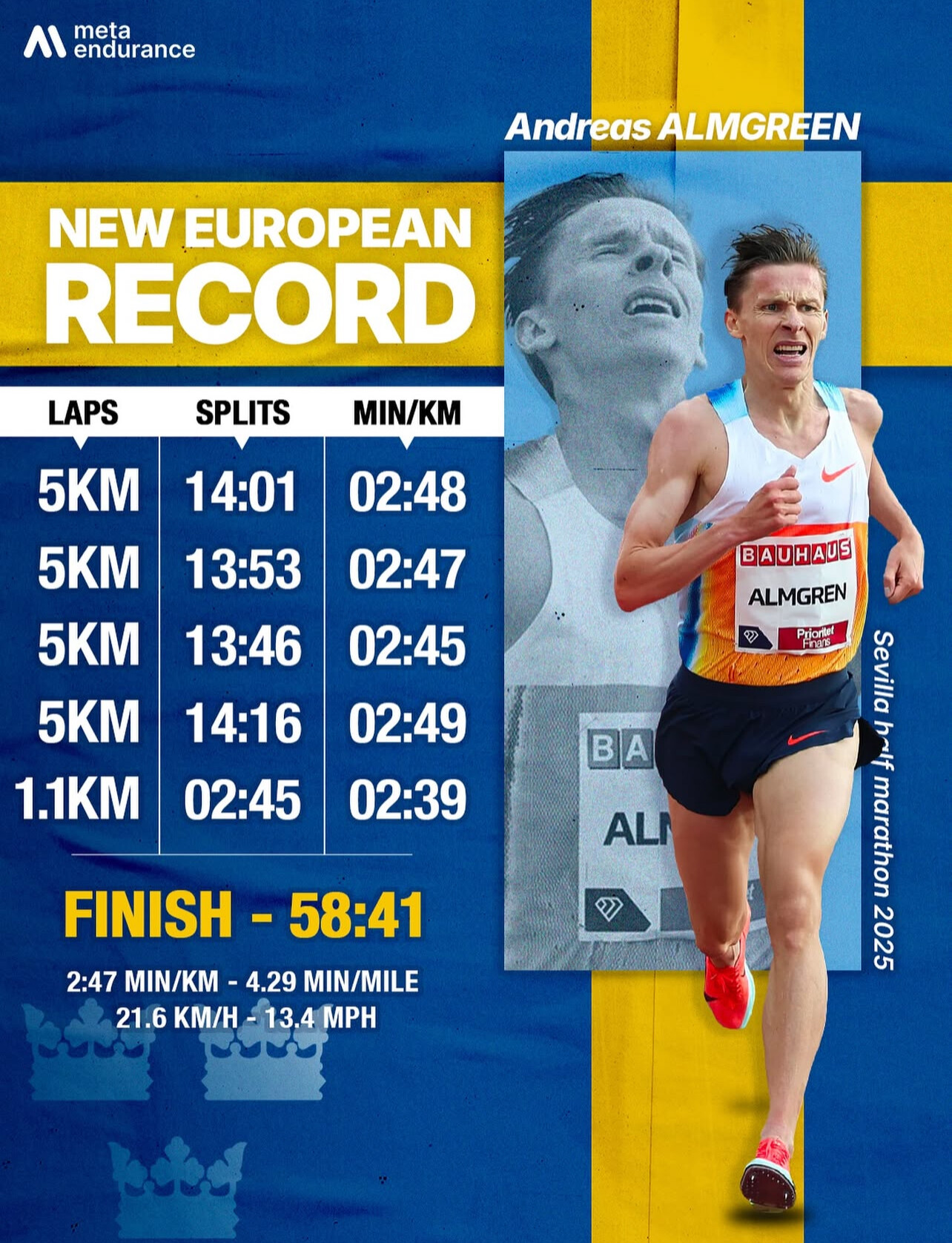
Kejelcha went out hard with early splits suggesting another sub-58 performance might be possible, hitting 10K in around 27:13. Slight headwinds in the final kilometers kept him just off world-record pace, but his margin of control was never in doubt.
WOMEN’S RACE: NGETICH CLOSES IN ON THE WORLD RECORD
Kenya’s Agnes Jebet Ngetich produced yet another masterpiece on the streets of Valencia, winning the women’s title in 1:03:08, the second-fastest time ever recorded for the half marathon. Only Letesenbet Gidey’s world record of 1:02:52, also set in Valencia in 2021, stands ahead of her on the all-time list.
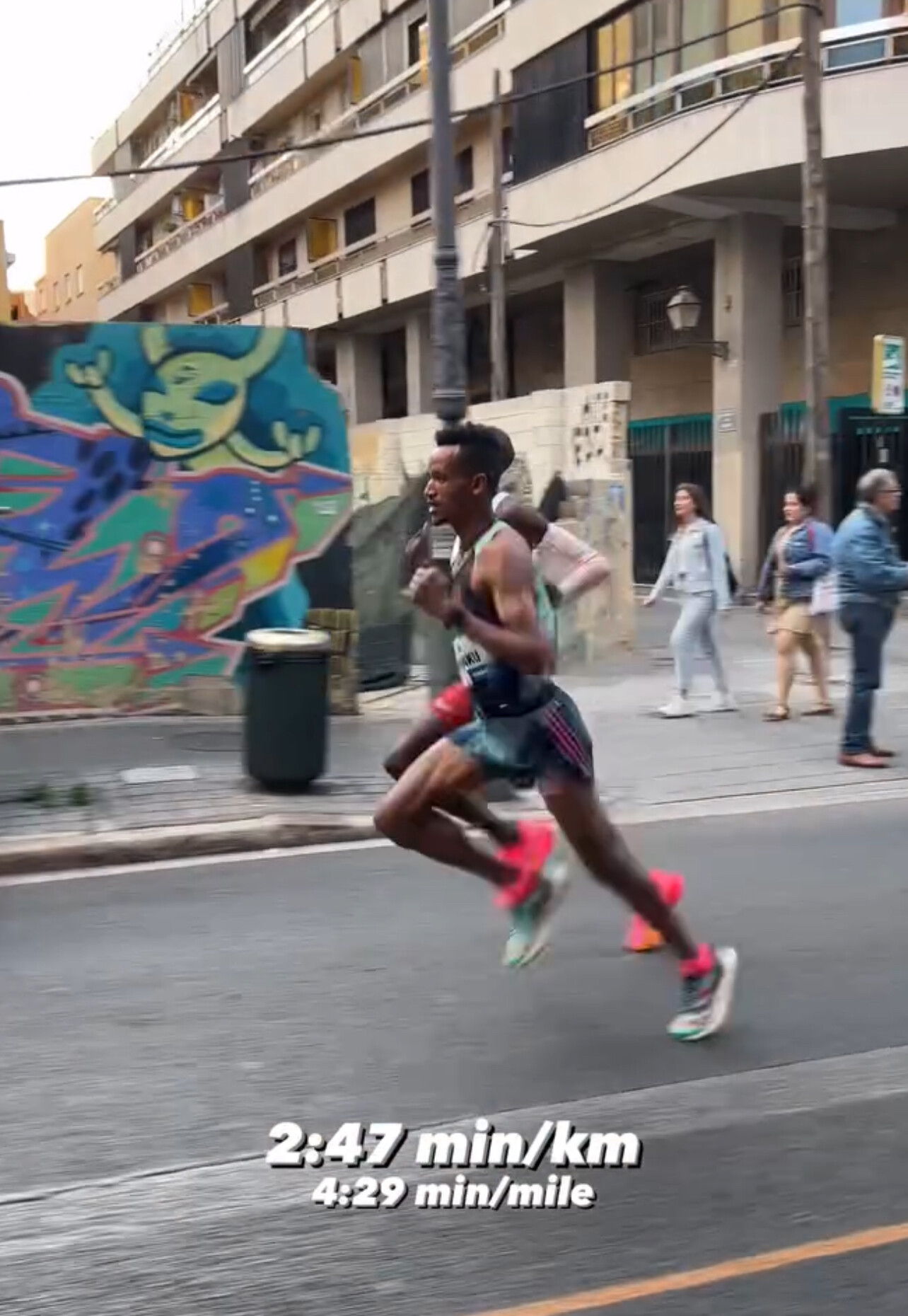
Ngetich went out aggressively, passing 10K in 29:28, well inside world-record pace. But a headwind over the final five kilometers cost her valuable seconds. Despite missing the record, her performance once again showcased her dominance and her special connection with the streets of Valencia, where she has repeatedly delivered career-defining runs.
“Valencia brings out the best in me,” Ngetich said. “I felt strong, and even though I missed the record, I know it’s within reach. I’ll be back.”
Ethiopia’s Fotyen Tesfay took second in 1:05:11, while Kenya’s Veronica Loleo ran a superb personal best of 1:05:46 to finish third. The top performances underscored the remarkable depth and quality in women’s distance running today.
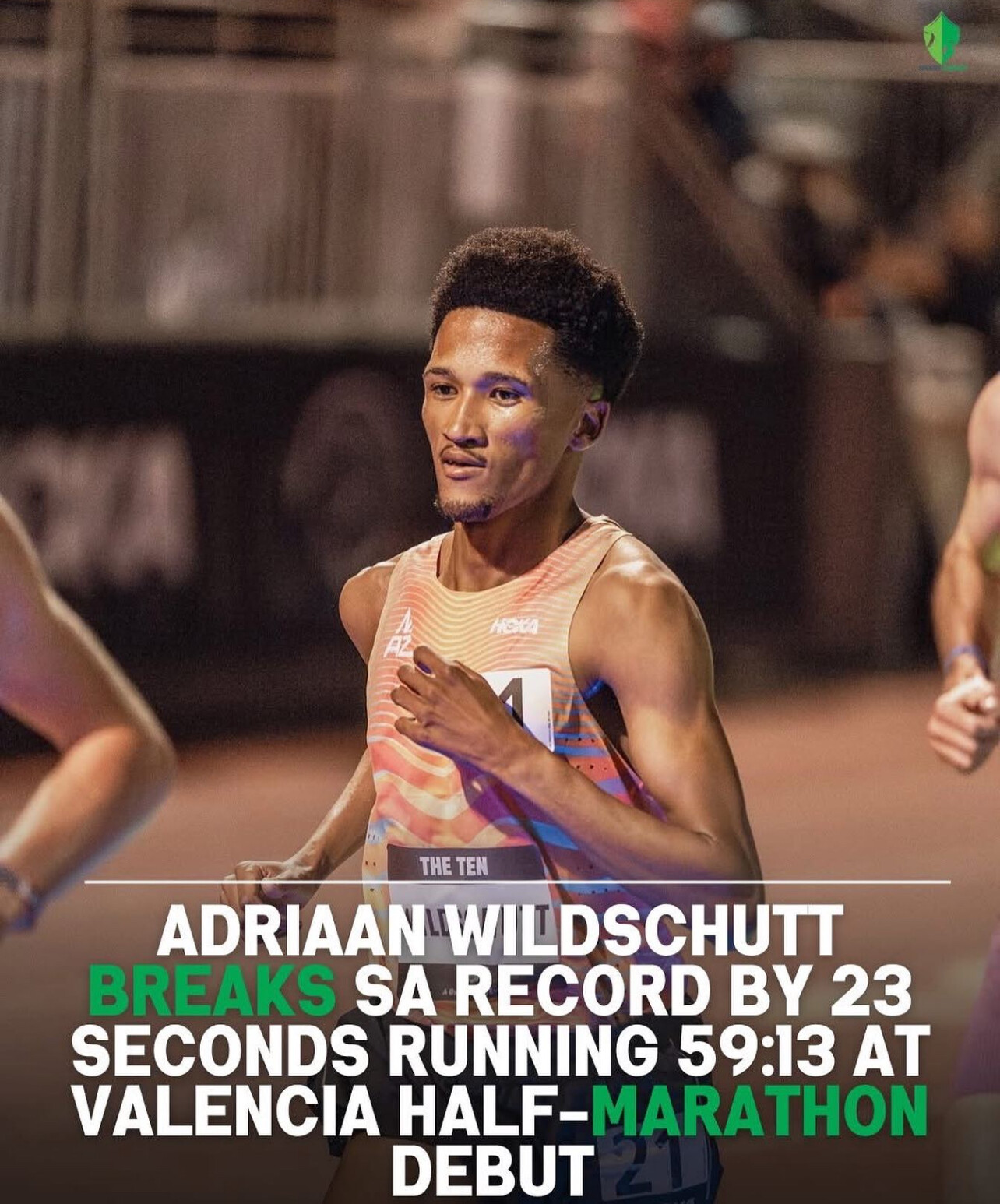
RACE CONDITIONS AND COURSE
Cool temperatures, light humidity, and minimal wind set the stage for another record-friendly day in Valencia. The famously flat and fast course — celebrated for its long straightaways and sea-level setting — once again proved why it’s the go-to destination for athletes chasing lifetime bests and global marks.
Pacemakers set an aggressive tempo from the start in both races, and despite minor breezes in the final stretch, the results confirmed that Valencia remains the gold standard for road racing worldwide.
TOP RESULTS
Men’s Elite Results
1. Yomif Kejelcha (Ethiopia) – 58:02
2. Rodrigue Kwizera (Burundi) – 58:39
3. Brian Kibor (Kenya) – 58:39
4. Andreas Almgren (Sweden) – 58:41 (European Record)
5. Milkesa Mengesha (Ethiopia) – 59:12
6. Boniface Kibiwott (Kenya) – 59:16
7. Sebastian Sawe (Kenya) – 59:22
8. Mohamed Essa (Morocco) – 59:45
9. Tadese Worku (Ethiopia) – 59:58
10. Gabriel Geay (Tanzania) – 1:00:02
Women’s Elite Results
1. Agnes Jebet Ngetich (Kenya) – 1:03:08 (Second-fastest time ever)
2. Fotyen Tesfay (Ethiopia) – 1:05:11
3. Veronica Loleo (Kenya) – 1:05:46 (Personal Best)
4. Irine Cheptai (Kenya) – 1:06:03
5. Melat Kejeta (Germany) – 1:06:37
6. Viola Chepngeno (Kenya) – 1:06:44
7. Tsige Haileslase (Ethiopia) – 1:06:56
8. Eilish McColgan (Great Britain) – 1:07:09
9. Selly Chepyego (Kenya) – 1:07:16
10. Marta Galimany (Spain) – 1:08:21
WHY VALENCIA CONTINUES TO INSPIRE THE WORLD
For more than a decade, Valencia has been the epicenter of half-marathon excellence. From Gidey’s women’s world record in 2021, to Kandie’s men’s mark in 2020, to Kejelcha’s near-record runs and now Almgren’s European breakthrough — the course has become synonymous with speed and history.
This year’s edition reinforced three powerful truths about modern distance running:
1. Yomif Kejelcha remains one of the greatest half-marathon specialists of all time.
2. Agnes Jebet Ngetich has brought women’s road racing to new heights, now sitting just seconds shy of a world record.
3. Andreas Almgren’s European record symbolizes a resurgent era for European endurance running.
FINAL SUMMARY
Event: 2025 Valencia Half Marathon Trinidad Alfonso Zurich
Date: October 26, 2025
Location: Valencia, Spain
Men’s Champion: Yomif Kejelcha (Ethiopia) – 58:02
Women’s Champion: Agnes Jebet Ngetich (Kenya) – 1:03:08 (Second-fastest ever)
European Record: Andreas Almgren (Sweden) – 58:41
(10/26/2025) ⚡AMPby Boris Baron
Valencia Half Marathon
The Trinidad Alfonso Valencia Half Marathon has become one of the top running events in the world. Valencia is one of the fastest half marathon in the world. The race, organized by SD Correcaminos Athletics Club, celebrated its silver anniversary in style with record participation, record crowd numbers, Silver label IAAF accreditation and an atmosphere that you will not find...
more...KATA’s Donald Kimaru Finishes 4th at 2025 Standard Chartered Nairobi Marathon
The 2025 Standard Chartered Nairobi Marathon delivered a thrilling showcase of endurance on October 26, as top athletes battled it out on the streets of Nairobi under ideal racing conditions. This year’s event, one of the premier marathons on the African continent, once again attracted a deep field of elite talent.
Among the day’s standout performances was Donald Kimaru, a KATA athlete training out of the Kapcherop KATA Running Camp, who finished a remarkable 4th place in a highly competitive men’s race.
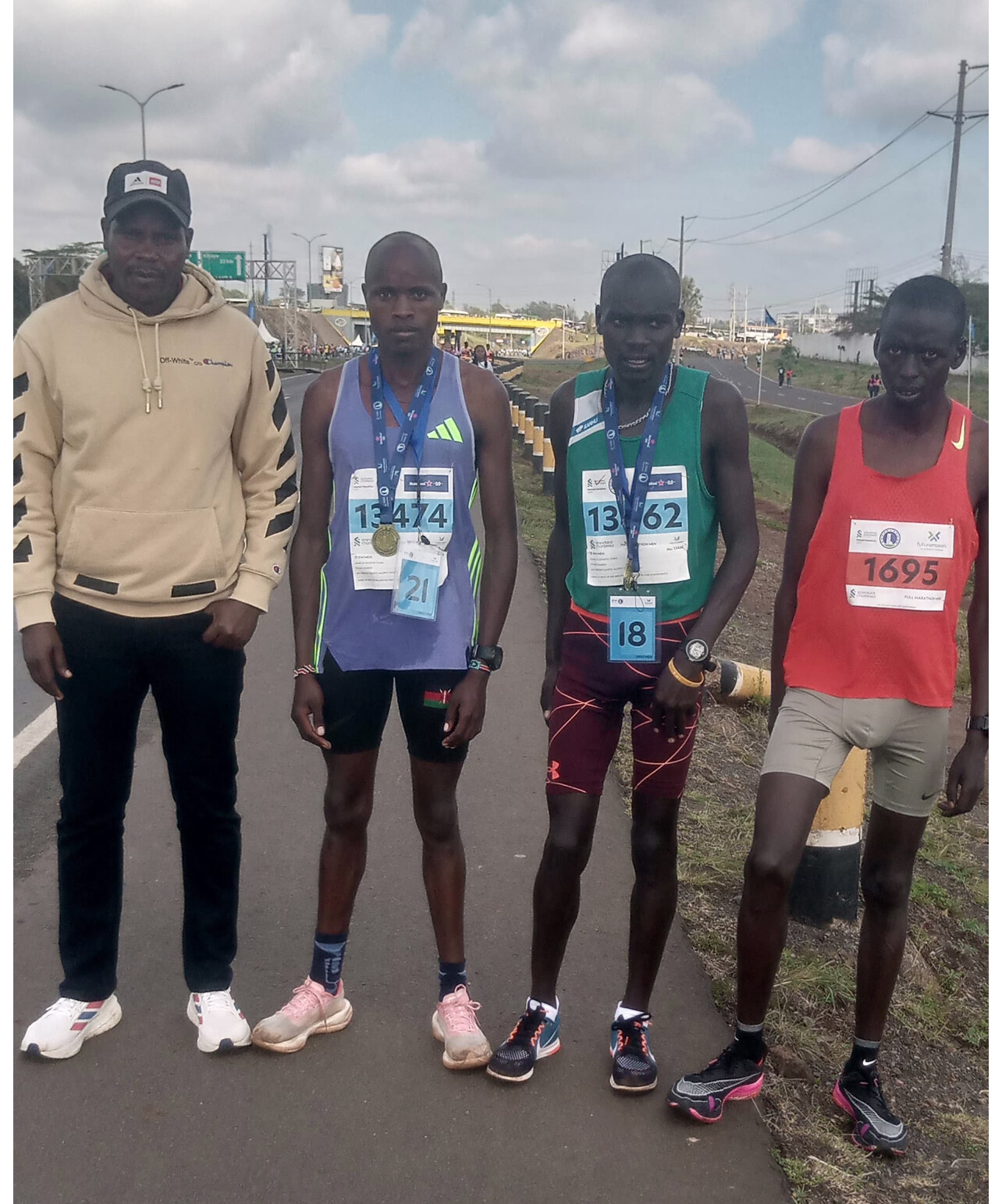
Donald Kimaru: Fuelled by KATA, Ready for the Global Stage
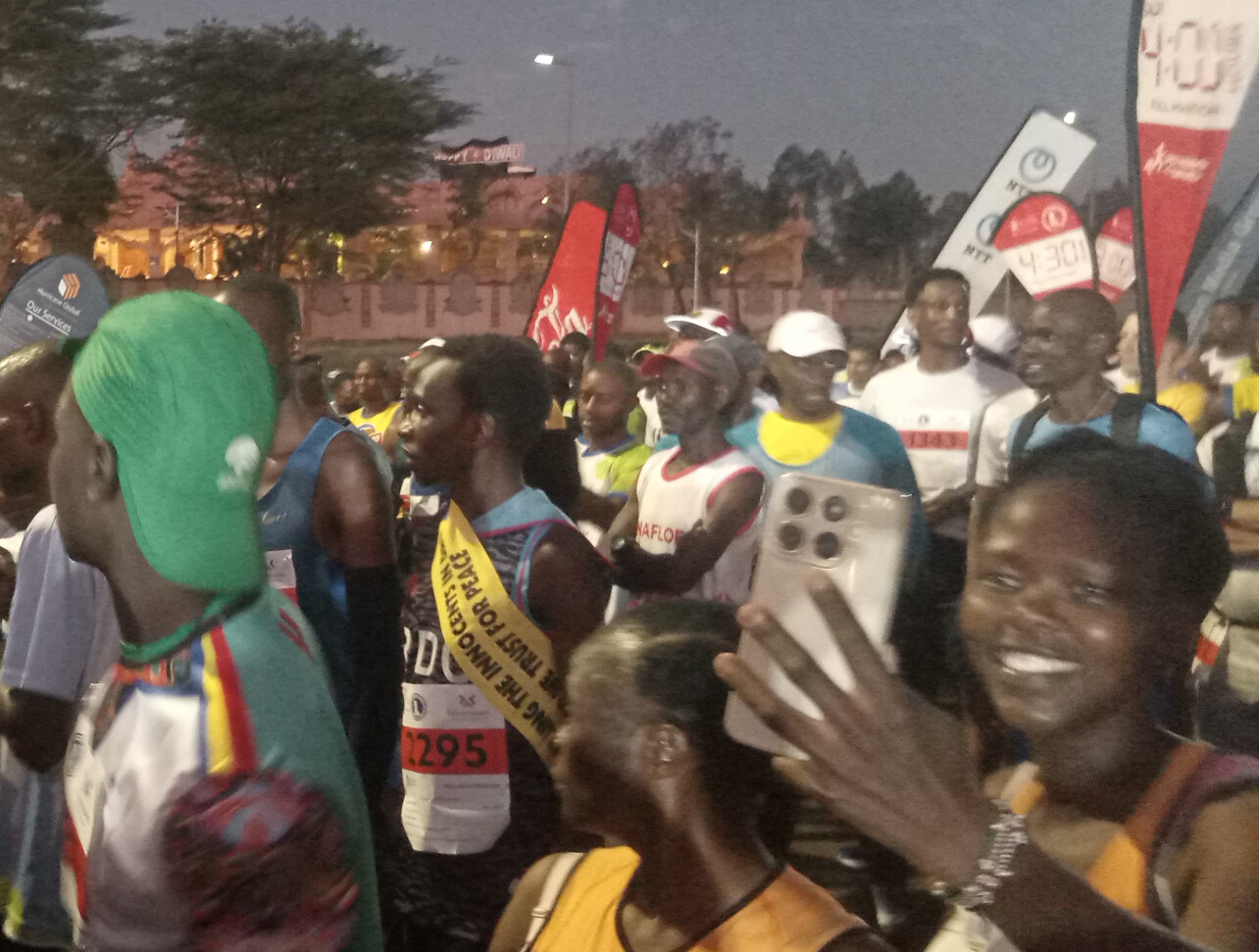
Clocking a time of 2:12:02, Kimaru finished just over a minute behind the winner, Benard Chepkowny (2:11:01), and less than 30 seconds from the podium. It was a huge breakthrough for the rising long-distance runner, who trains under the high-altitude guidance of Coach Philemon Kipruto at the KATA facility in Kapcherop.
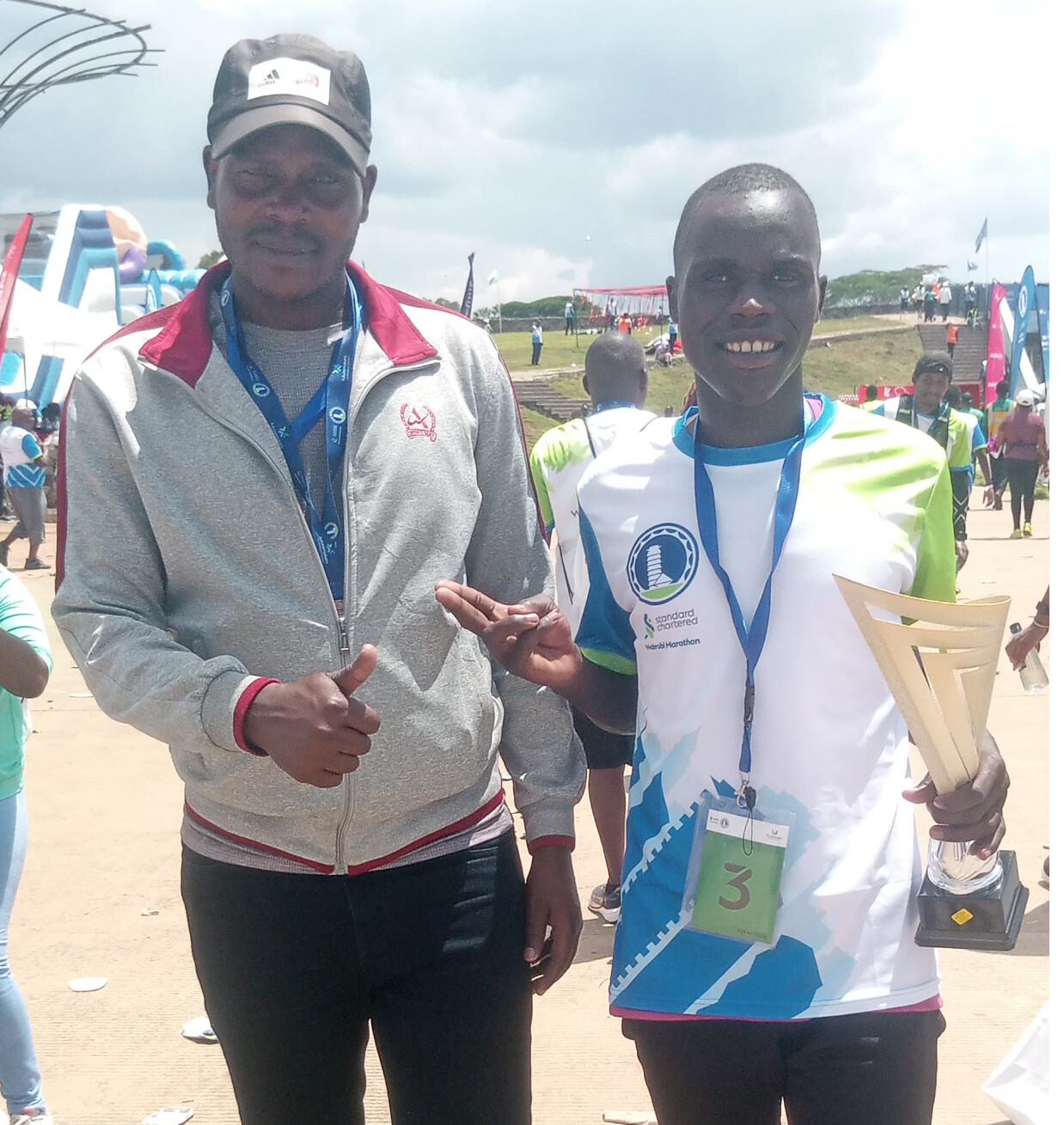
“Donald is showing the power of patience and consistency,” Coach Kipruto noted. “We’ve known he had the potential, and now he’s proving it in one of Kenya’s most important races.”
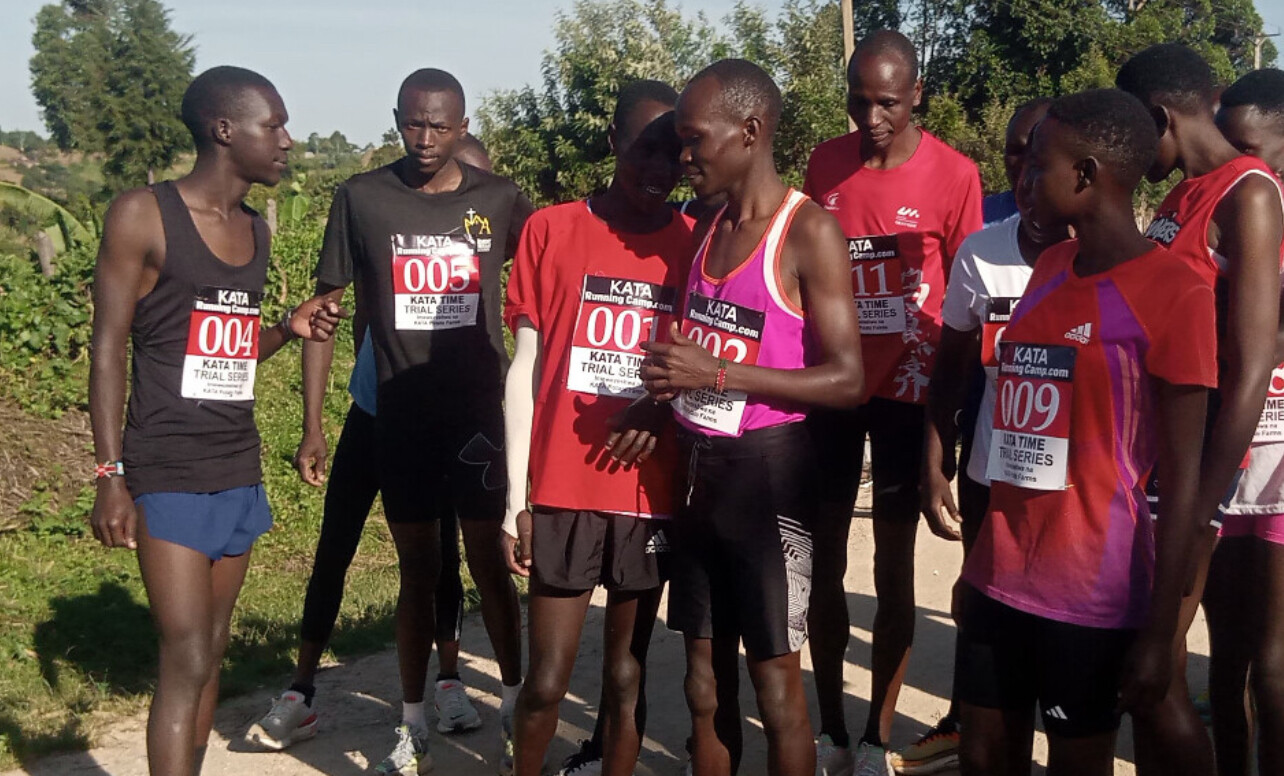
Chepkwony, returning to major competition, wasted no time asserting his intent. He set a strong pace from the start, joined by Silas Chesang, Donald Kimaru, Ezekiel Kemboi, Bethwel Chemuno, and Wilfred Kiplagat, all determined to stay in contention.
As the race progressed past the 30km mark, Chepkwony maintained the lead despite Chesang mounting a late push after struggling on the uphill sections.
Chepkwony’s endurance and composure carried him through to the finish line, clocking an impressive 2:11:01 to seal his comeback victory.
Kimaru trains in an environment designed to create champions, where runners combine disciplined training with the nutritional strength of KATA Potatoes – The Fuel of Champions. His performance in Nairobi is a testament to this holistic approach. Donald had placed second at the KATA Double Road Race 15k held September 20 in Thika.
Top 10 Elite Men – 2025 Standard Chartered Nairobi Marathon
1. Benard Chepkowny – KEN – 2:11:01 (first photo)
2. Alex Chepkwik Saekwo – KEN – 2:11:26
3. Ezekiel Kemboi Omullo – KEN – 2:11:40
4. Donald Kimaru – KEN – 2:12:02
5. Wilfred Kiplagat – UGA – 2:13:42
6. Charles Kimeli – KEN – 2:14:08
7. Nehemiah Kiprono Sang – KEN – 2:14:38
8. Solomon Yego – KEN – 2:14:50
9. Dennis Kipkemboi Koech – KEN – 2:15:39
10. Silas Chesang Keitany – KEN – 2:15:51
Women’s Race Highlight
In the women’s marathon, Hellen Chepkorir dominated with a powerful performance, finishing in 2:27:17 at an average pace of 3:30/km.
KATA’s Impact Growing
Donald Kimaru’s top finish adds to the growing list of success stories emerging from the KATA Running Camp ecosystem. Founded by Bob Anderson, KATA is reshaping the Kenyan distance running scene with over 30 camps across the country, combining elite training with a sustainable agricultural model. Runners like Donald are not only developing as athletes but also helping uplift their communities.
Next for Donald? A potential international marathon debut in 2026, where he’ll look to break the 2:10 barrier and cement his name among Kenya’s top marathoners.
(10/25/2025) ⚡AMPby Boris Baron
NAIROBI MARATHON
Nairobi Marathon is an annual road running competition over the marathon distance held in October in Nairobi, Kenya. First held in 2003, the competition expanded and now includes a half marathon race along with the main race. It was part of "The Greatest Race on Earth", fully sponsored by Standard Chartered Bank....
more...Running Through The City Of Dreams New York Marathon 2025
On Sunday, November 2, 2025, the five-borough spectacle of the New York City Marathon will unfold once again, offering more than 50,000 runners the chance to push 26.2 miles through the heart of New York. From the cannon blast on Staten Island to the triumphant finish in Central Park, this is a race that marries endurance, emotion and urban drama.
Kipchoge and Hassan Headline an Extraordinary Field
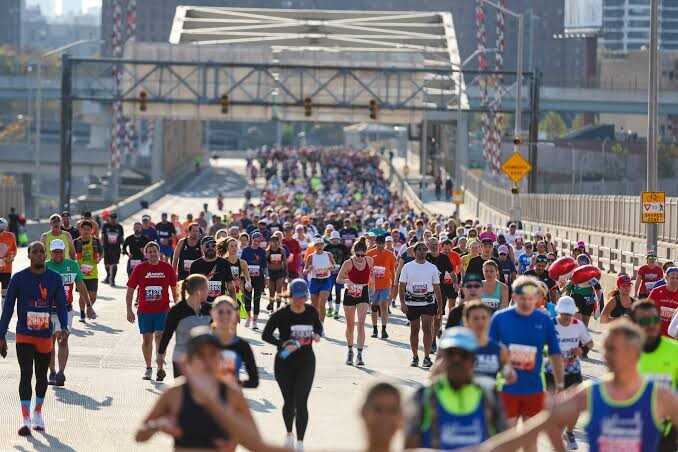
The biggest storyline heading into this year’s race is the presence of Eliud Kipchoge, the greatest marathoner in history, and Sifan Hassan, the double Olympic champion who stunned the world with marathon victories in both London and Chicago. For Kipchoge, New York completes his journey through all six Abbott World Marathon Majors — a crown that has eluded him until now.
Hassan, meanwhile, returns to the marathon distance after a string of world-class performances on both track and road, her fearless racing style perfectly suited to the unpredictable rhythm of New York’s streets.
They’ll face an elite field stacked with world-class names, including Benson Kipruto of Kenya (2:02:16 PB), Evans Chebet (two-time Boston champion, 2:03:00 PB), and defending champion Tamirat Tolaof Ethiopia (course record holder at 2:04:58). The women’s field is equally star-studded, featuring 2022 champion Sharon Lokedi, Tokyo winner Rosemary Wanjiru, and a host of East African contenders ready to test Hassan on one of the sport’s toughest stages.

Among the American hopefuls, Emily Sisson, the U.S. record holder in the marathon, headlines the women’s field and will make her New York debut. On the men’s side, Biya Simbassa leads the U.S. charge, joined by a deep domestic field racing for top-American honors and prize bonuses.
Course Records
• Men: 2:04:58 — Tamirat Tola (ETH), 2023
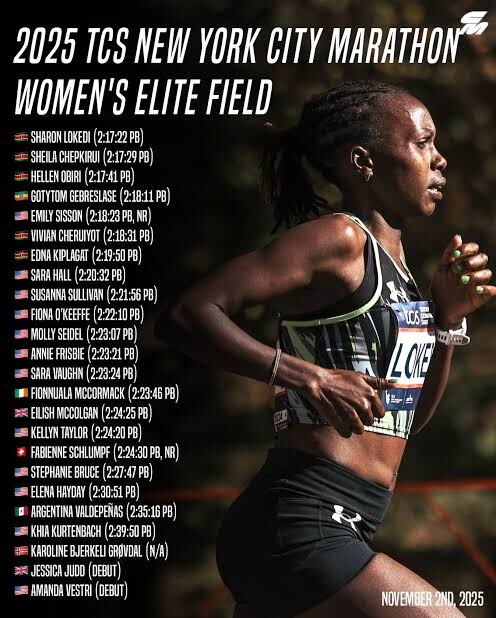
• Women: 2:22:31 — Margaret Okayo (KEN), 2003
These records reflect both top-tier performance and the challenging character of the course — rather than flat, pacer-assisted routes that routinely see world-record times.
Prize Purse
The stakes are high. Open-division winners stand to earn $100,000, with descending prizes through 10th place. The event also offers a $50,000 bonus for a winner who breaks the standing course record, plus separate prize pools for top U.S. finishers and wheelchair divisions. With total payouts approaching nearly a million dollars, the financial motivation is real — even if the course isn’t built for world-record thrills.
Why a World Record Isn’t Realistic
Make no mistake: the New York course is legendary for its toughness rather than its speed. Runners face five major bridge crossings, a long ascent up the Queensboro Bridge around mile 15–16, variable terrain, sharp turns and a final push up Fifth Avenue into Central Park. Unlike flat, pacemaker-led courses such as Berlin or Chicago, NYC emphasises tactical racing, rivalries and finish-line theatre. The organising body eliminated dedicated elite pacemakers years ago in favour of pure head-to-head competition.
While pace groups may support recreational waves, elite winners will race without the type of structured pacemaking that enables constant sub-2:03 splits. In short: this is a championship-style contest, not a time-trial.
What Makes NYC Unique
• Cityscape & crowd noise: From Staten Island’s Verrazzano Narrows Bridge to Brooklyn’s vibrant neighborhoods, the Queensboro Bridge, Manhattan’s First Avenue and the final loop in Central Park, the scenery is unmatched.
• Massive scale but elite depth: The global field, the tens of thousands of recreational runners, the international media — the race’s atmosphere is unmatched in road-racing.
• Legacy of racing over timing: Past editions have celebrated bold attacks and dramatic finishes more than normally smooth pacing. That makes this one of the world’s most storied and unpredictable marathons.
What to Watch on November 2
• How Kipchoge adapts his disciplined, flat-course style to a course that demands rhythm changes, hills and surges.
• Whether Hassan will leverage her track speed and tenacity to counter a course that rewards strength and race-tactics.
• Whether Sisson (and other U.S. entrants) can navigate the final tougher miles to claim top-American status or even an open podium spot.
• The weather and pacing strategy: any wind across the bridges or mis-timed surge could decide the race more than early splits.
• Whether someone dares to go after Tola’s 2:04 : 58 mark — unlikely but possible under perfect conditions.
The 2025 New York City Marathon is more than a race. It is a testament to endurance, to the city that hosts it and to runners who thrive in challenge rather than comfort. Kipchoge and Hassan bring star power. The U.S. challengers bring ambition. And the 50,000+ starters bring stories.
Whether you’re chasing a personal best, seeking a finish-line moment or just watching from the sidelines, November 2 will be unforgettable. The bridges, the boroughs, the final climb into Central Park — the city will judge your resolve. And with no pacemakers to pull you through, this year’s finishers will know they earned every step with heart.
(10/25/2025) ⚡AMPby Boris Baron
TCS New York City Marathon
The first New York City Marathon, organized in 1970 by Fred Lebow and Vince Chiappetta, was held entirely in Central Park. Of 127 entrants, only 55 men finished; the sole female entrant dropped out due to illness. Winners were given inexpensive wristwatches and recycled baseball and bowling trophies. The entry fee was $1 and the total event budget...
more...The 50th Marine Corps Marathon Celebrates 50 Years of Pride and Perseverance
This Sunday, October 26, 2025, the Marine Corps Marathon will celebrate its 50th anniversary, marking half a century of inspiring runners to “run with purpose and finish with pride.”
Affectionately known as “The People’s Marathon,” the Marine Corps Marathon (MCM) stands apart from the world’s other great races. It offers no prize money, focusing instead on participation, community, and service. For fifty years, it has united civilians, service members, and runners from around the world in one of the most patriotic and emotionally charged marathons on the planet.
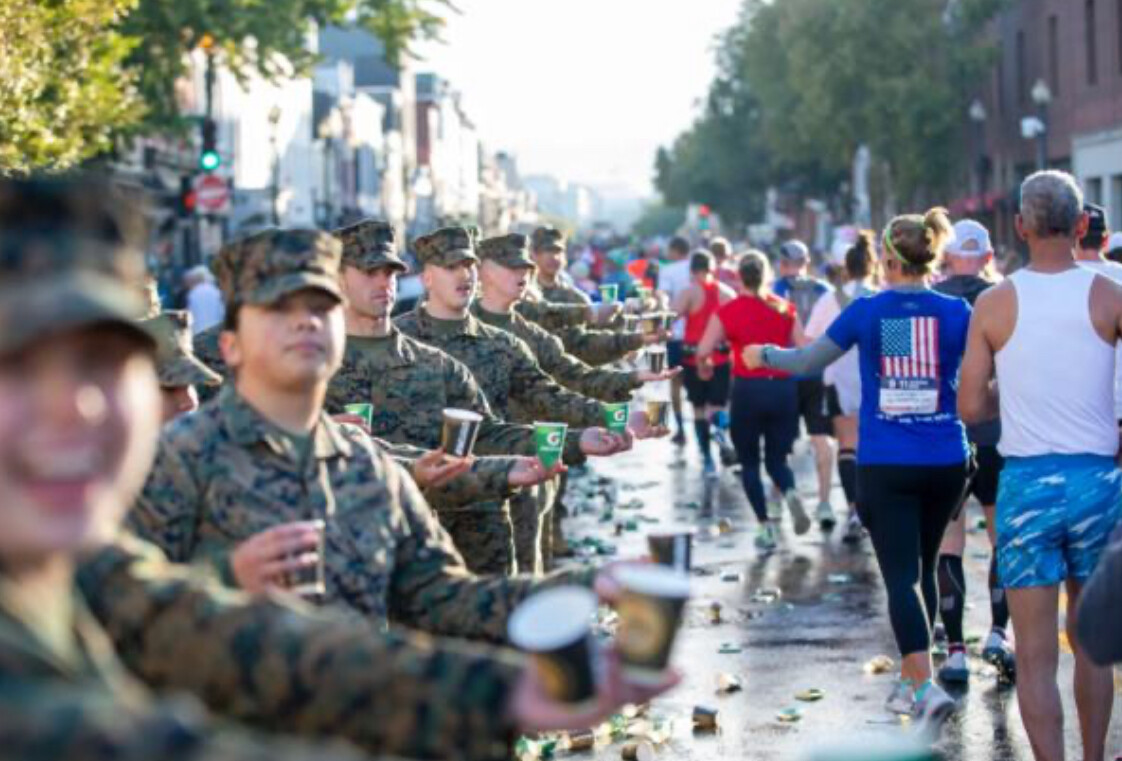
A Legacy Born in 1976
The first Marine Corps Marathon was held in 1976, founded by the U.S. Marine Corps to promote physical fitness, community goodwill, and the Marine tradition of excellence. Over time, it grew into one of America’s largest marathons, famous for its inclusivity and purpose-driven mission.
Unlike most major races, the MCM awards no cash prizes to top finishers. Instead, it honors every participant who crosses the line, from first to last. This spirit of equality earned it the nickname “The People’s Marathon.”

This year’s event is completely sold out, with more than 40,000 registered runners from all 50 states and dozens of countries. Despite uncertainty surrounding the ongoing government shutdown, organizers confirmed the race will go on as planned.
The Course: A Run Through History
The Marine Corps Marathon offers one of the most scenic and symbolic marathon routes in the world. The race begins in Arlington, Virginia, just steps from the Pentagon, before leading runners into the heart of Washington, D.C.
Participants cross the Key Bridge into Georgetown, pass through Rock Creek Park, and continue along the Potomac River, circling the Jefferson and Lincoln Memorials. They run past the Washington Monument, the U.S. Capitol, and the National Mall before heading back into Arlington.
The final miles take runners alongside Arlington National Cemetery before the course finishes at the Marine Corps War Memorial — the iconic Iwo Jima statue. The short but steep “Victory Hill” leading to the finish line has become legendary, offering one of the most emotional finishes in the sport.
Course Records and Champions
Over five decades, the Marine Corps Marathon has witnessed remarkable performances. The men’s course record of 2 hours, 14 minutes, and 1 second was set in 1987 by Jeffrey Scuffins of the United States. The women’s record of 2 hours, 37 minutes, was set in 1990 by Olga Markova of Russia.
Notable champions over the years include two-time winner Darrell General in the 1990s and Augustus Maiyo, representing the U.S. Army World Class Athlete Program, who won in 2012. In 2024, Marine officer Kyle King claimed victory in 2 hours, 25 minutes, and 6 seconds.
Though these times stand out, the marathon’s true spirit lies not in record books but in its participants — from elite athletes to first-time marathoners, from active-duty Marines to civilians running in honor of loved ones.
The 50th Anniversary Edition
This year’s golden anniversary promises to be the largest and most memorable in race history. More than 40,000 participants will line up at dawn, cheered on by tens of thousands of spectators. Security will be heightened, and logistics finely tuned to handle the largest field ever.
The Marine Corps Marathon remains a race about pride, not paychecks. Each runner earns a medal from a uniformed Marine at the finish line — a simple, powerful gesture that captures the spirit of the event.
Why It’s One of the World’s Best Runs
Few marathons can match the Marine Corps Marathon for emotion and meaning. The course passes the monuments of American history, but its greatest monument is the collective spirit of the runners themselves.
It’s a race that demands effort — the rolling hills early on and the final climb to Iwo Jima test every runner — but it rewards every step with purpose. To finish here is to be part of something larger than sport.
The Marine Corps Marathon is more than a race. It’s a salute — to endurance, to courage, and to the shared belief that running can unite people in pride and purpose.
Final Word
As the Marine Corps Marathon celebrates 50 years, it reminds us why we run. We run to test our limits. We run to honor service and sacrifice. We run to connect — with others, with history, and with something greater than ourselves.
This Sunday, tens of thousands will run those 26.2 miles through the capital of freedom, cheered on by Marines and crowds waving flags. And when they reach the finish line beneath the shadow of Iwo Jima, every runner will know: they didn’t just finish a marathon — they became part of history.
(10/25/2025) ⚡AMPby Boris Baron
Marine Corps Marathon
Recognized for impeccable organization on a scenic course managed by the US Marines in Arlington, VA and the nation's capital, the Marine Corps Marathon is one of the largest marathons in the US and the world. Known as 'the best marathon for beginners,' the MCM is largest marathon in the world that doesn't offer prize money, earning its nickname, “The...
more...Will Her Marathon Record Still Stand? And should it?
It’s been almost five years since Ruth Chepngetich survived the carnage on Doha’s Corniche to win the 2019 World Marathon title in suffocating heat. But her story has now taken a dramatic turn. In July 2025, Chepngetich was provisionally suspended by the Athletics Integrity Unit following a positive test from March 2025. That case reached its conclusion on October 23, 2025, when she was officially banned for three years. Despite the ruling, World Athletics has not yet nullified her 2:09:56 world record from Chicago, leaving the running world in a state of uneasy debate — can a mark achieved by an athlete later found guilty of doping still stand as the pinnacle of the sport?
The Record That Shocked the World
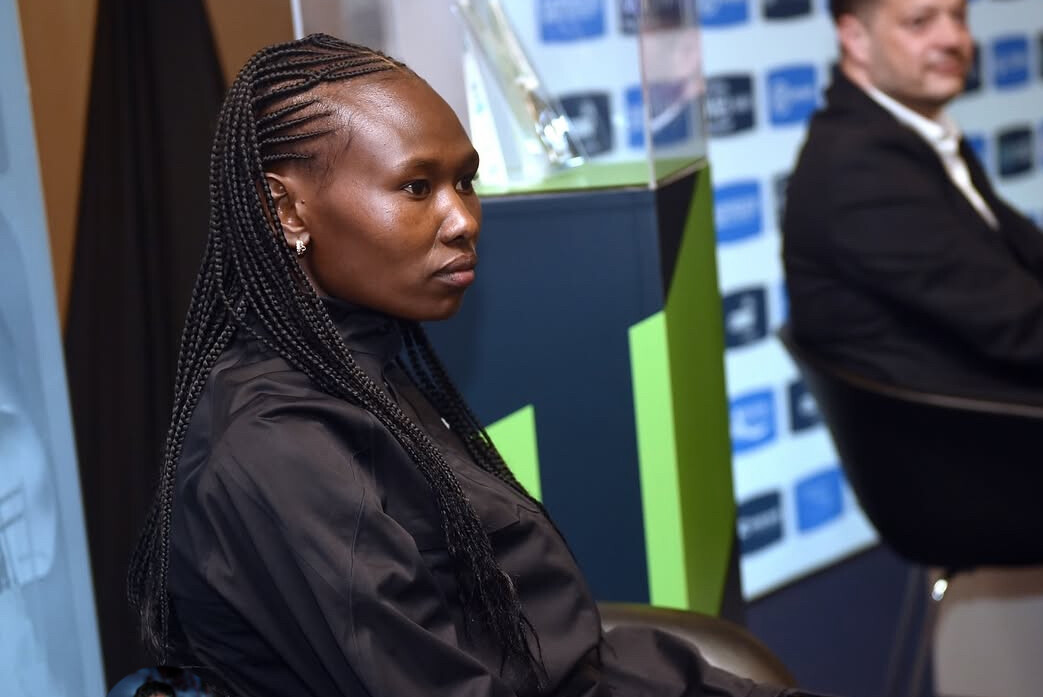
At Chicago 2024, Chepngetich didn’t just win — she obliterated the women’s marathon barrier. Clocking 2:09:56, she slashed nearly two minutes off the previous world record of 2:11:53, averaging roughly 4:57 per mile. Her first half of 1:04:16 hinted that she was chasing history, and she never faltered. The performance instantly became one of the most astonishing in distance-running history and redefined what many thought possible for women over 26.2 miles.
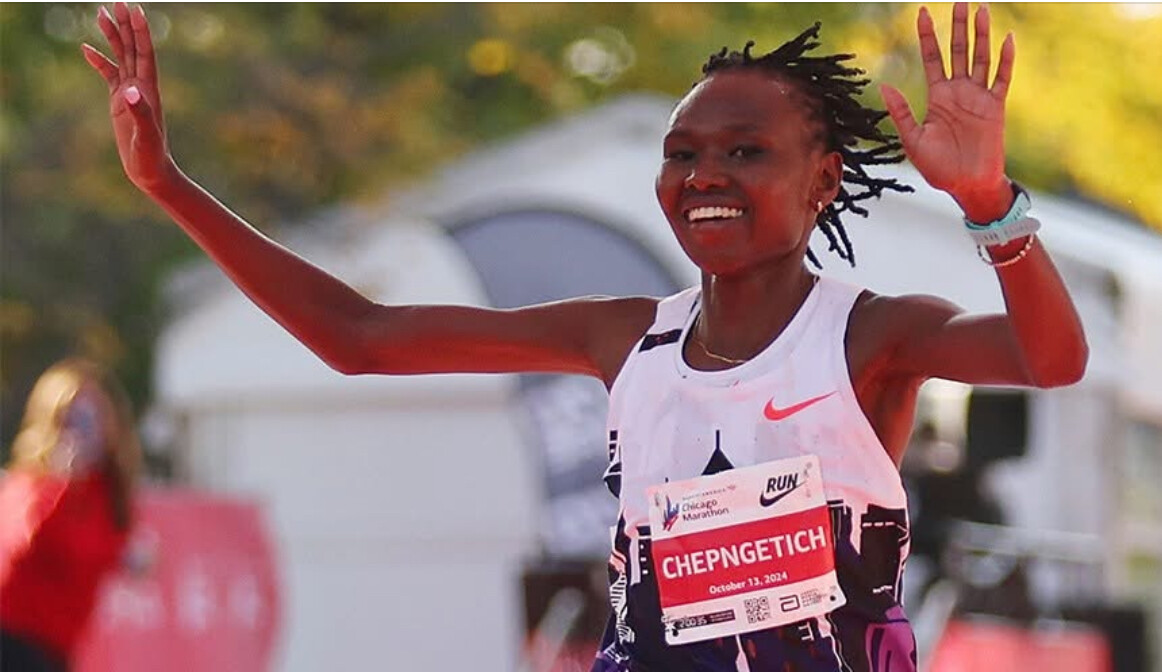
Talent, Technology, or Something Else?
In assessing whether this record will stand, several factors come into play — her undeniable talent, cutting-edge technology, and advances in fueling and pacing.
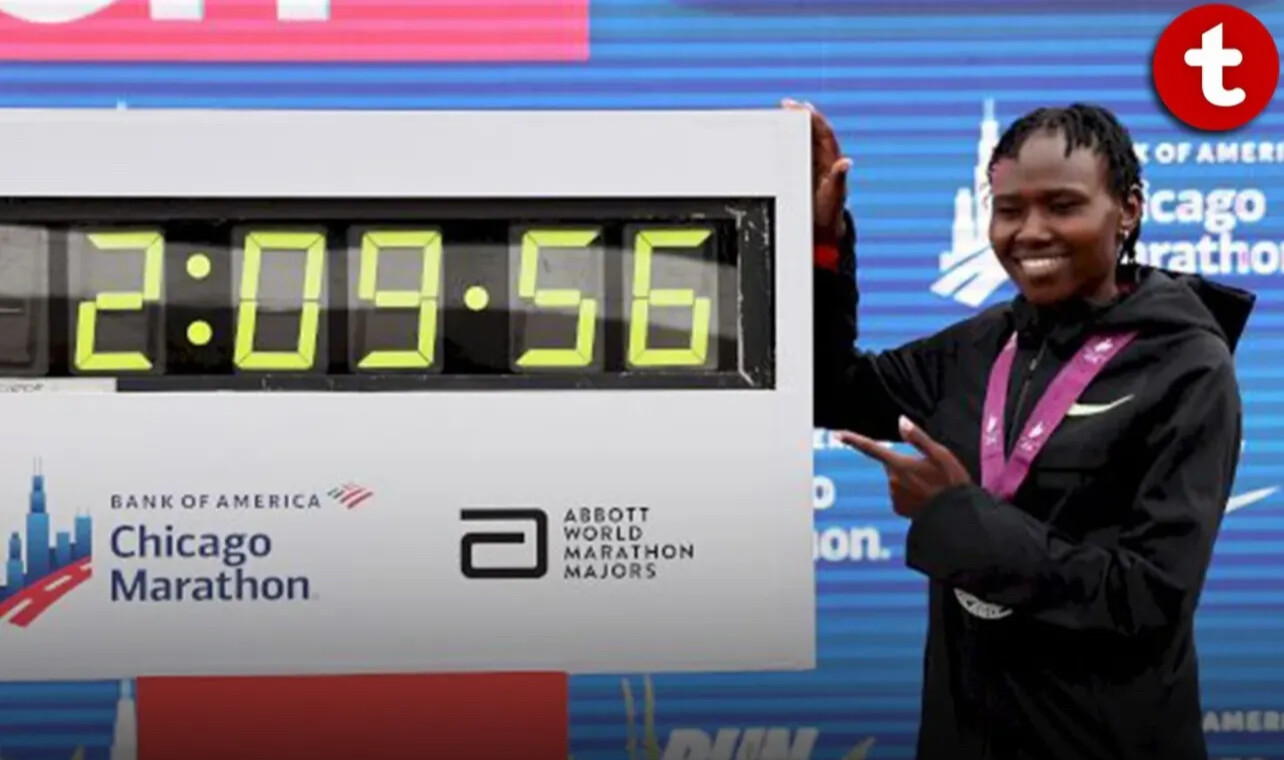
• Talent: Chepngetich’s pedigree is unquestioned — a world champion, multiple Chicago winner, and one of the most aggressive front-runners of her generation.
• Technology: Like nearly all modern elites, she raced in next-generation “super shoes” featuring carbon plates and advanced foams that improve running economy by several percent.
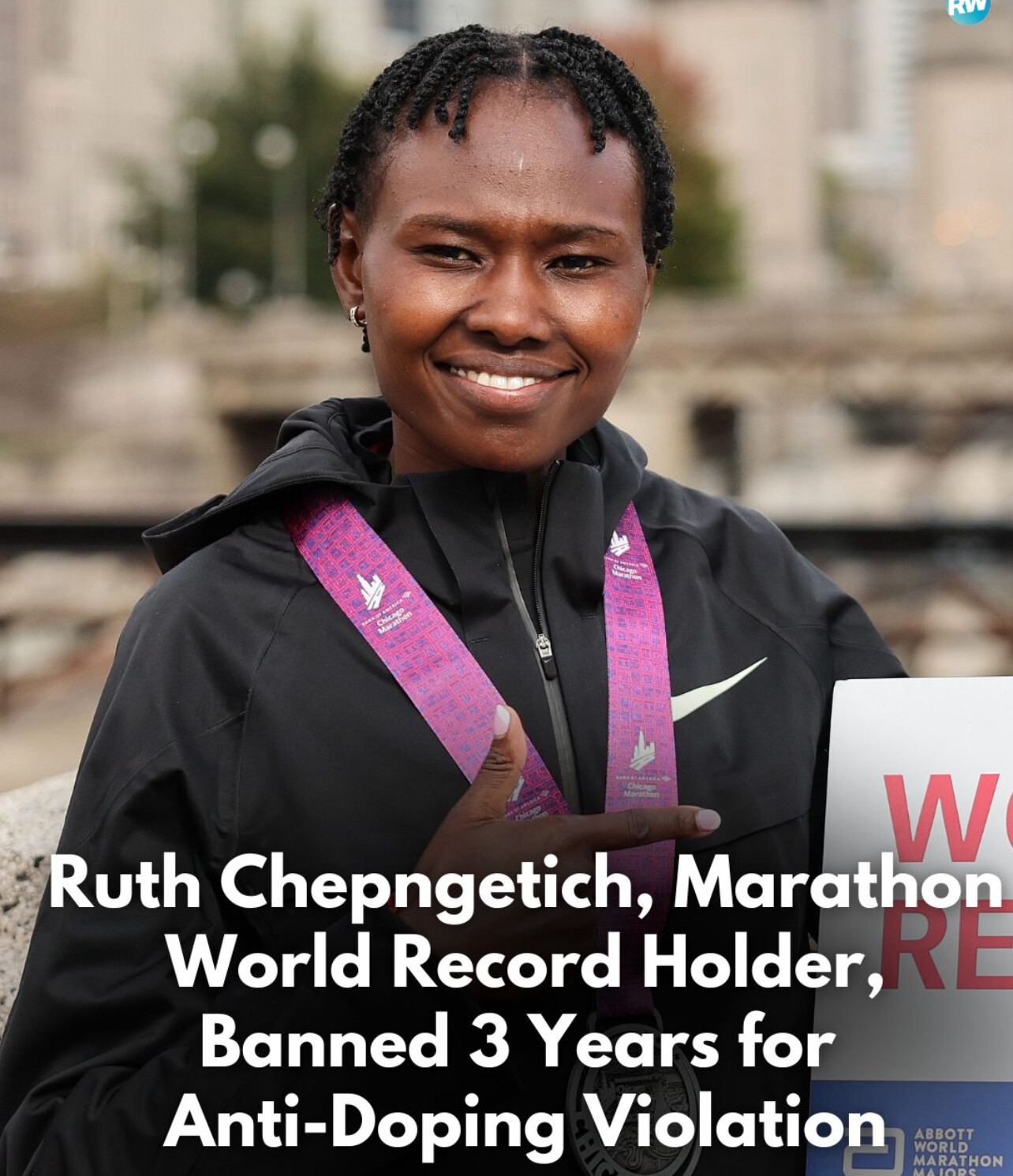
• Fueling and Pacing: A meticulously calibrated mix of carbohydrate drinks, male pacemakers, and near-perfect weather created ideal conditions for record-breaking.
Each of these factors may have contributed — but so, it now appears, did something illicit. Her three-year ban has cast a long shadow over what was once hailed as the cleanest, purest form of endurance achievement.
The Broader Question
Can a mark set under suspicion survive as a legitimate benchmark for future generations? The answer lies with World Athletics’ final ruling, but even if the record stands on paper, the perception of it has changed. Chepngetich’s run pushed the limits of human endurance — yet the revelation of a doping violation has blurred the line between brilliance and betrayal.
A Legacy Rewritten
If the ban is upheld, Chepngetich will likely be stripped of her record, joining a short but painful list of athletes whose names once glittered atop the record books before being erased. Regardless of the outcome, her performance will remain a pivotal moment — the day a woman first broke 2:10. It proved that such times are possible and that the next generation, running clean, will one day do it again.
Conclusion
Whether Ruth Chepngetich’s 2:09:56 survives the scrutiny of time or not, the marathon has been changed forever. Her run forced coaches, scientists, and competitors alike to reconsider what’s possible for women over the classic distance.
But now the question isn’t only how she did it — it’s why.
(10/23/2025) ⚡AMPby Boris Baron
Eliud Kipchoge Launches “Kotcha Run” — Bringing His Training Secrets to Runners Worldwide
Eliud Kipchoge, the marathon icon and global ambassador of distance running, has officially launched a new app — Kotcha Run — designed to share his legendary training methods with runners everywhere.
Developed in partnership with the NN Running Team, the app provides athletes of all levels with access to the very strategies, tools, and insights that have powered Kipchoge’s record-breaking career and two Olympic gold medals.
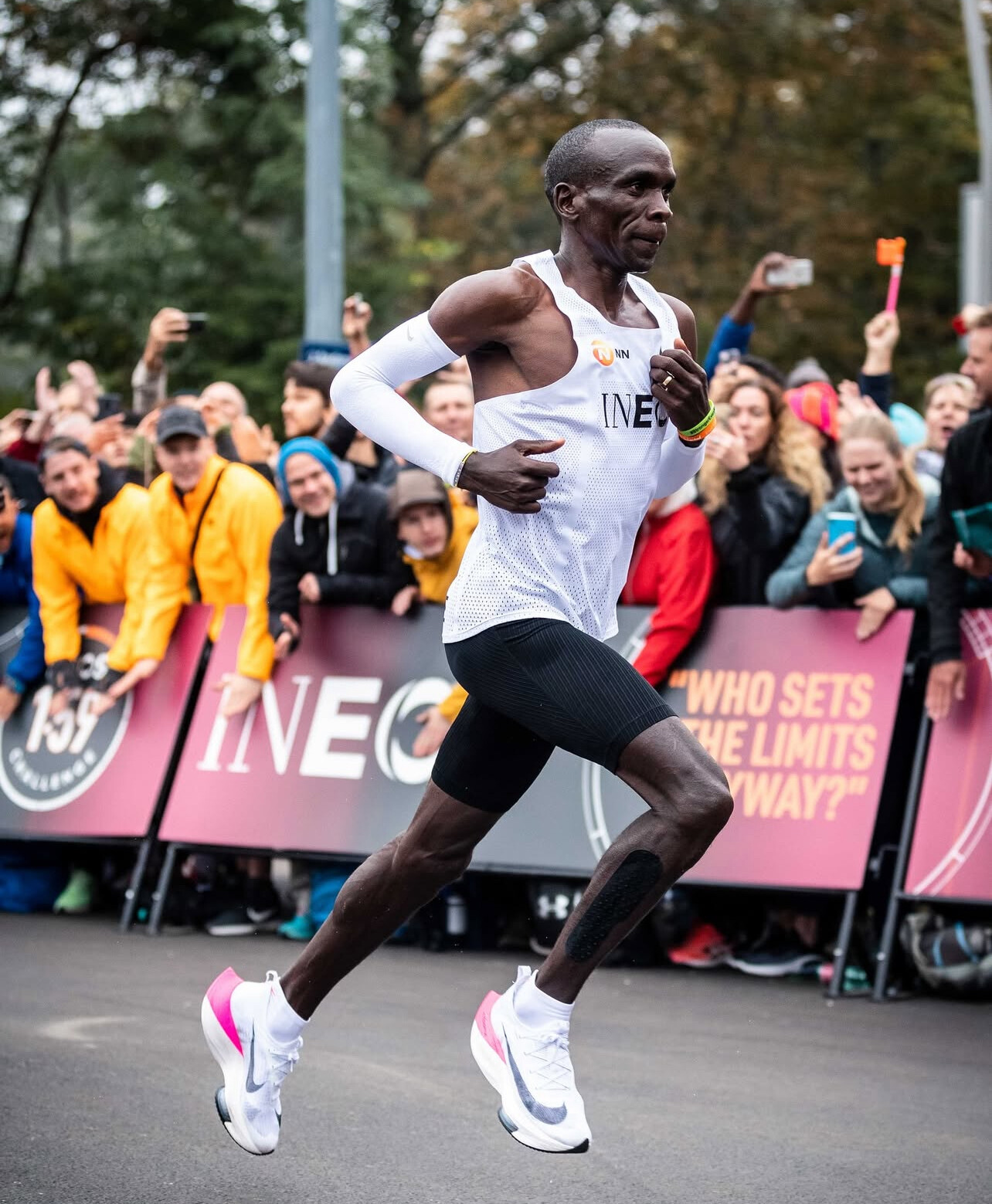
“People always ask me about my secret. Today, I’m offering a way to share it,” Kipchoge explained.
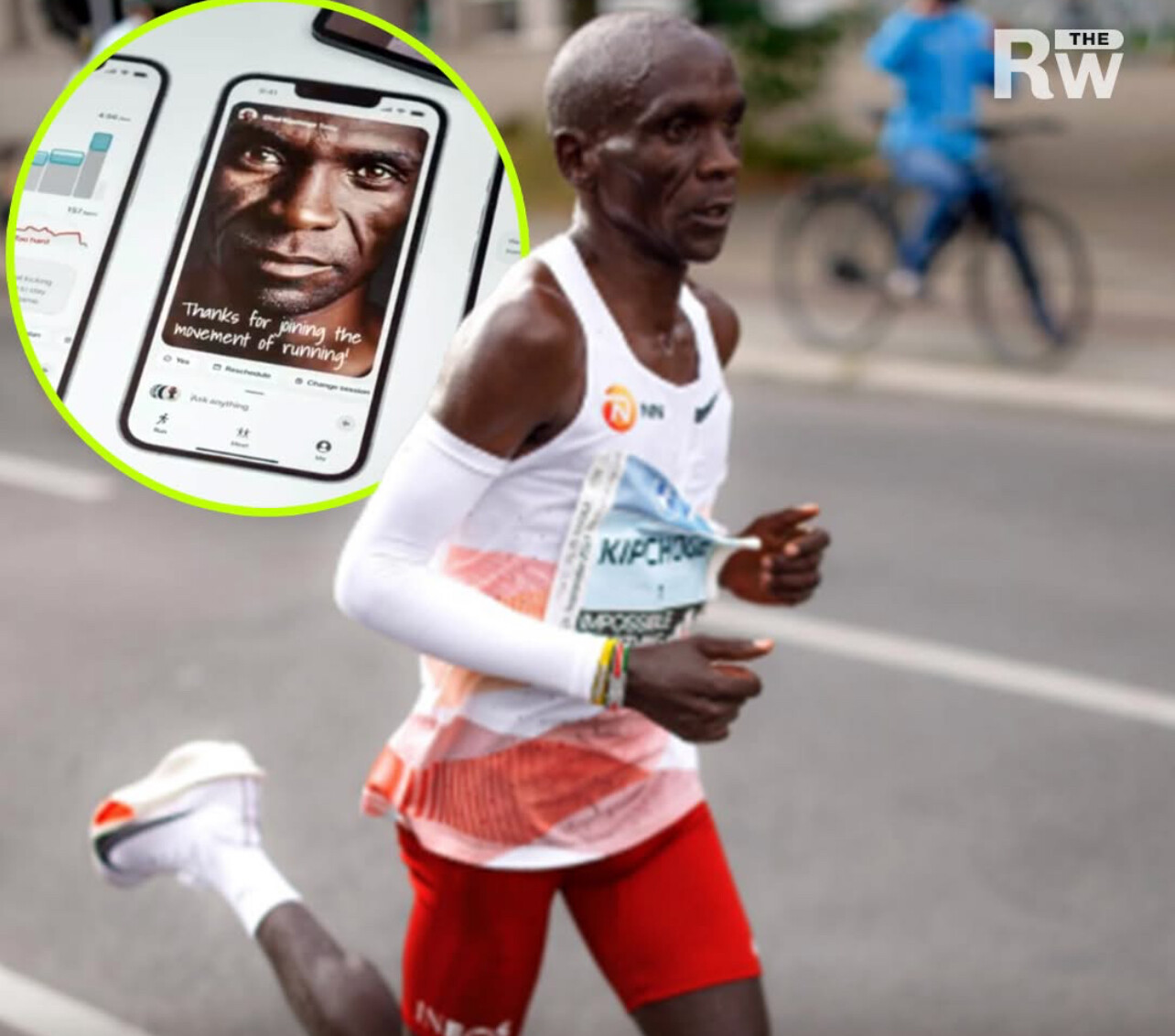
Through Kotcha Run, users can follow customized training programs, explore practical tips, and gain daily motivation directly inspired by the world’s greatest marathoner. Whether you’re preparing for your first 5K or your next marathon, the app helps runners apply Kipchoge’s disciplined yet philosophical approach — centered on patience, consistency, and belief.
Runners can now pre-register on the App Store to be among the first to experience it.
With this launch, Eliud Kipchoge once again proves his commitment to democratizing elite training, helping every runner — from beginner to professional — discover their own “No Human Is Limited” potential.
(10/22/2025) ⚡AMP
by Boris Baron
KATA Kapkatet Camp Runners Deliver Powerful Performances
The Kapkatet Athletics KATA Camp hosted an outstanding time trial on October 15, 2025, with excellent conditions and determined athletes delivering strong performances. Under the leadership of Coach and Operator Hasan Rono, the event showcased the rising talent and teamwork that define the KATA Running Camp and Potato Farm program in Kericho County.
“The time trial was successful and wonderful,” Coach Rono said. “Thanks a lot for your support, sir.”
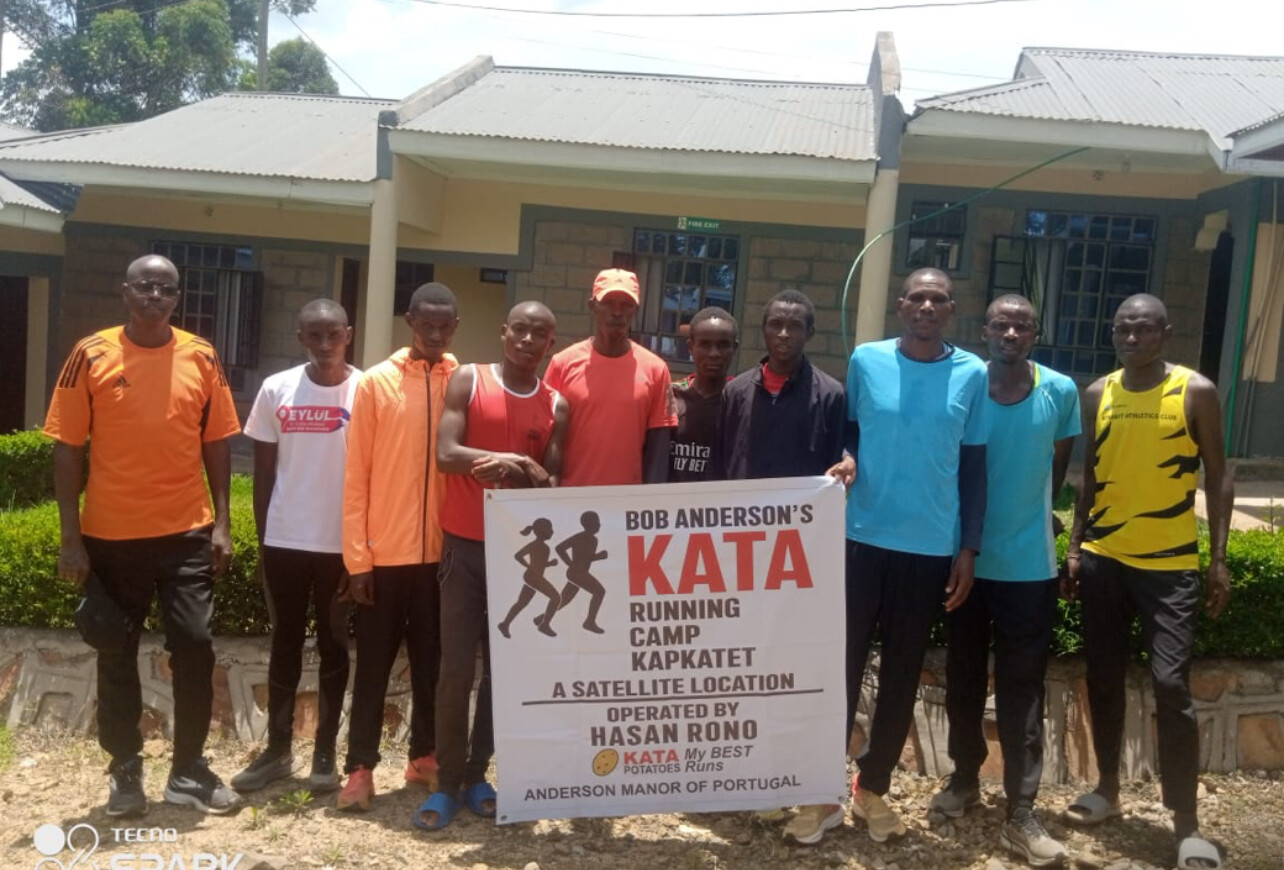
10 km Men
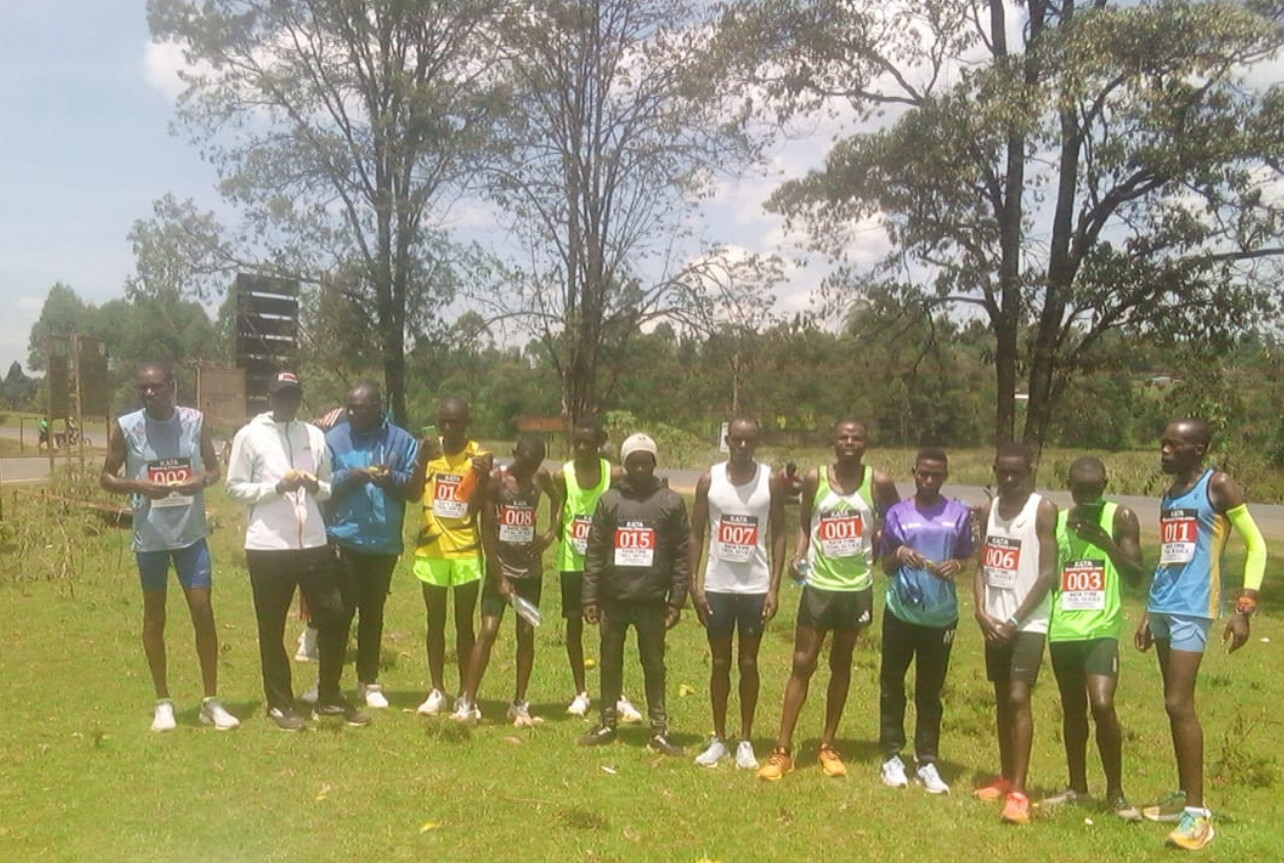
1. Vincent Rotich – 29:13.40 (DOB 13 Sep 2004)
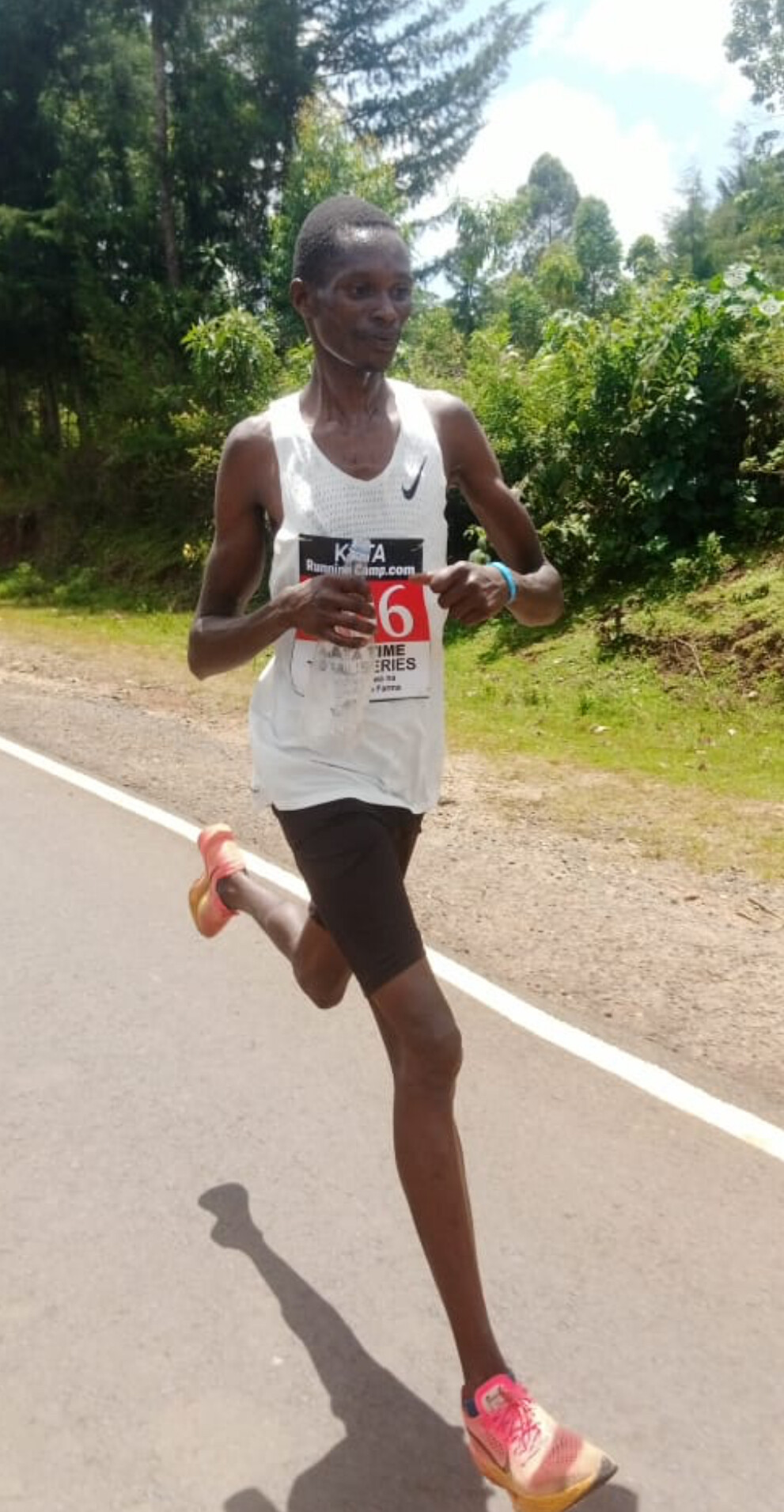
2. Vesitus Kipkorir Kemboi – 29:17.35 (DOB 7 Jan 2000)
3. Kipkurui Koech – 29:50.11 (DOB 11 Feb 1991)
4. Dominic Cheruiyot – 30:01.22 (DOB 25 May 2005)
5. Haron Kiprotich – 30:17.02 (DOB 6 Jul 2002)
6. Jaresa Rono – 30:36.27 (DOB 10 Dec 2009)
7. Aaron Kiplangat Korir – 30:55.04 (DOB 13 Dec 2002)
8. Kaprono Langat – 31:55.11 (DOB 19 Dec 1985)
The men’s 10 km race was tightly contested, with Vincent Rotich edging Vesitus Kipkorir Kemboi by just four seconds. Both broke the 29-minute-20-second barrier, underscoring their sharp form and disciplined training.
5km Men
1. Victor Kiprotich – 14:12.19 (DOB 25 May 2009)
2. Robert Sigey – 14:30.06 (DOB 12 Dec 1984)
3. Rono Enock – DNF (DOB 16 Jan 2000)
Sixteen-year-old Victor Kiprotich impressed once again with a commanding 14:12, demonstrating both speed and maturity beyond his age.
5 km Women
1. Dorcas Chepkorir – 17:21.15 (DOB 30 Dec 2004)
Dorcas Chepkorir dominated the women’s 5 km, finishing with a wide margin and reaffirming her status as one of the camp’s most consistent performers.
The K22 Kapkatet Camp continues to exemplify the KATA vision: nurturing champions through discipline, teamwork, and purpose. As with every KATA camp across Kenya, this success is powered by a shared belief that athletic excellence and sustainable farming can grow side by side.
(10/20/2025) ⚡AMPby Boris Baron
Masai Returns Stronger Than Ever for the Frankfurt Marathon Showdown
Kenya’s Magdalyne Masai is set to return to the Mainova Frankfurt Marathon this Sunday, October 26, determined to make a statement after her dramatic collapse in the brutal heat of last month’s World Championships marathon in Tokyo. Fully recovered and feeling revitalized, Masai says she’s “in the best shape of my life” — and ready to chase another breakthrough performance.
This will mark Masai’s third consecutive appearance in Frankfurt, where she finished runner-up last year with a personal best of 2:18:58, the fastest time ever recorded by a woman entered in the race’s 42-year history. The 31-year-old believes the flat and fast Frankfurt course provides the perfect setting for her comeback.
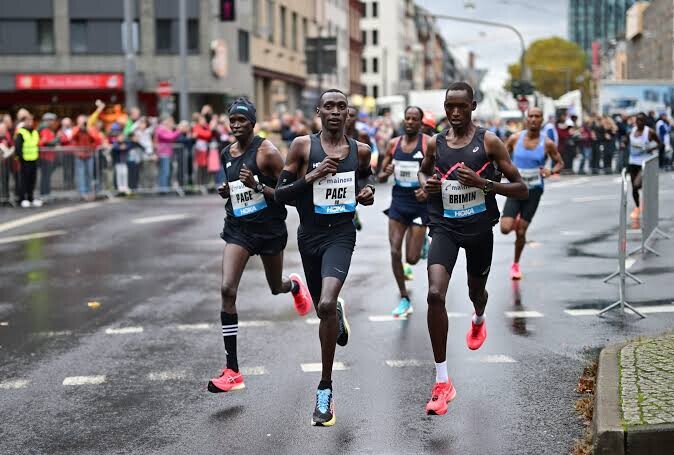
“After a short break to recover, my first training sessions went so well that I really wanted to run another marathon this autumn,” said Masai. “I’m in great form and didn’t want to waste it. Frankfurt is the perfect race for me — I’m excited to come back.”
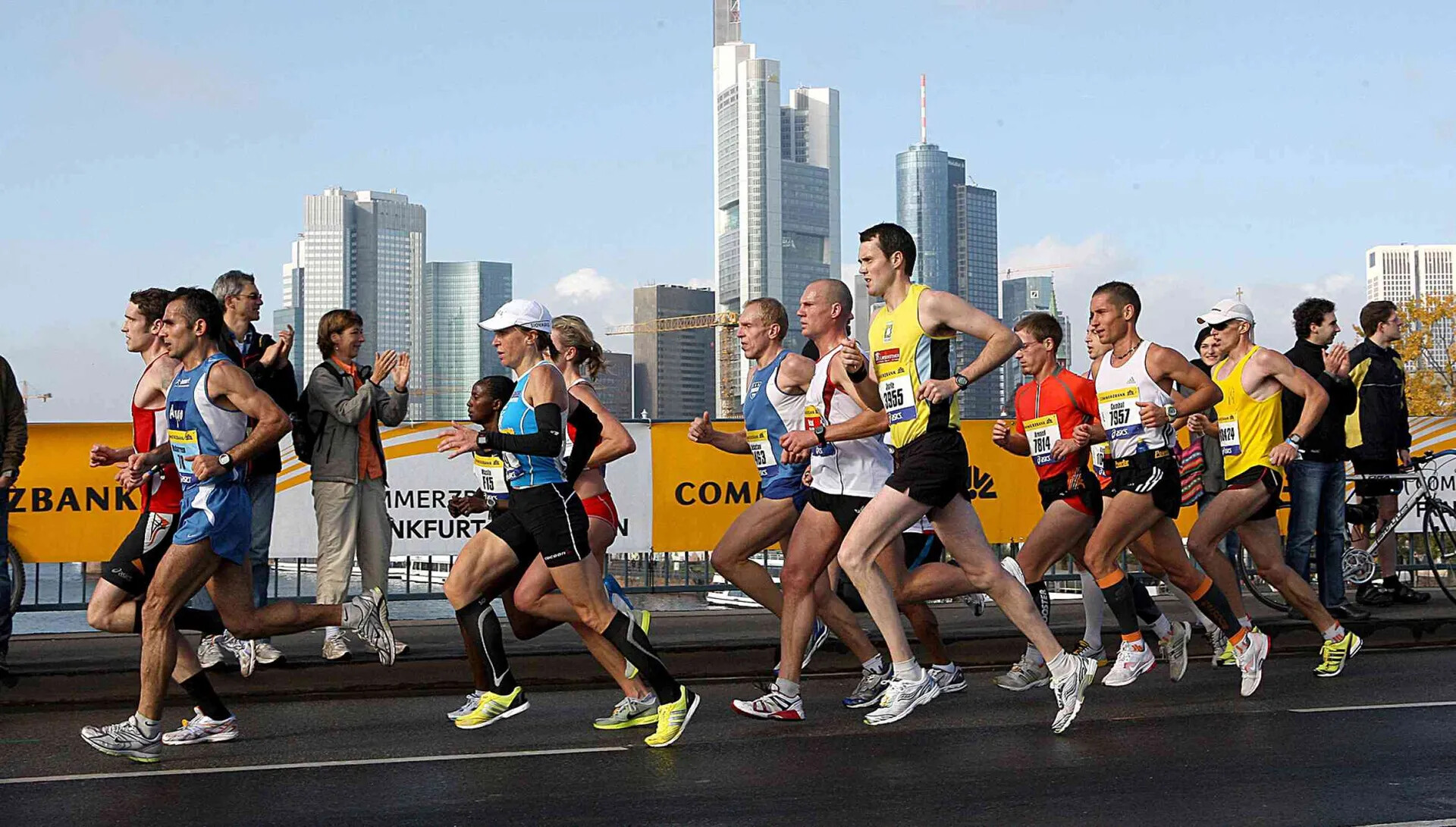
The women’s elite field is among the strongest ever assembled in Frankfurt. Six runners on the start list own personal bests under 2:23:00, including two who have dipped below 2:20:00. Alongside Masai, Kenya’s Sharon Chelimo (2:19:33) and Ethiopia’s Buze Diriba (2:20:22) headline a deep international lineup. Ethiopians Etagegne Woldu (2:20:03) and Aminet Ahmed (2:21:24) were also set to compete but have withdrawn due to injury.
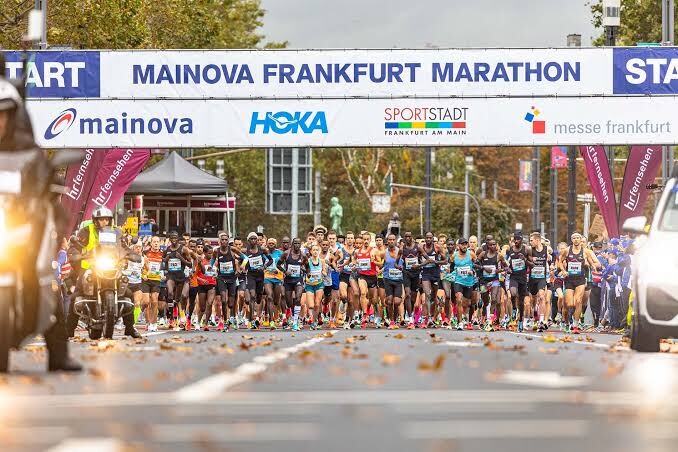
The men’s field is equally loaded. Ethiopia’s Shura Kitata, the 2017 Frankfurt champion, leads the charge with a 2:04:49 personal best. He’ll face compatriot Dejene Megersa (2:05:42), while Germany’s Filimon Abraham will look to improve on his 2:08:11 best on home soil.
With seven men under 2:08 and six women under 2:23, the 2025 Mainova Frankfurt Marathon promises one of the most competitive editions in race history — and for Magdalyne Masai, it could be the stage for her strongest marathon yet.
(10/20/2025) ⚡AMPby Race News Service
From Potatoes to Personal Bests: How Amos Chirchir Is Growing Athletes and a Future in Sachang’wan
In the highland village of Sachang’wan in Molo, Nakuru County, the land rises boldly toward the sky. The area sits on the edge of the dramatic Rift Valley escarpment, overlooking the vast Menengai Crater — Africa’s second-largest volcanic caldera — its silent ridges brooding in the morning mist.
Behind it, the rolling hills of Molo stretch endlessly, stitched with neat rows of potato farms that define the region’s identity. To the south lies Salgaa, a town better known for its flower farms, where long greenhouse tunnels shimmer like silver ribbons across the plains. Beyond this agricultural heartland, winding dirt roads climb toward Sachang’wan — where another kind of farming is taking root: the farming of athletic talent.
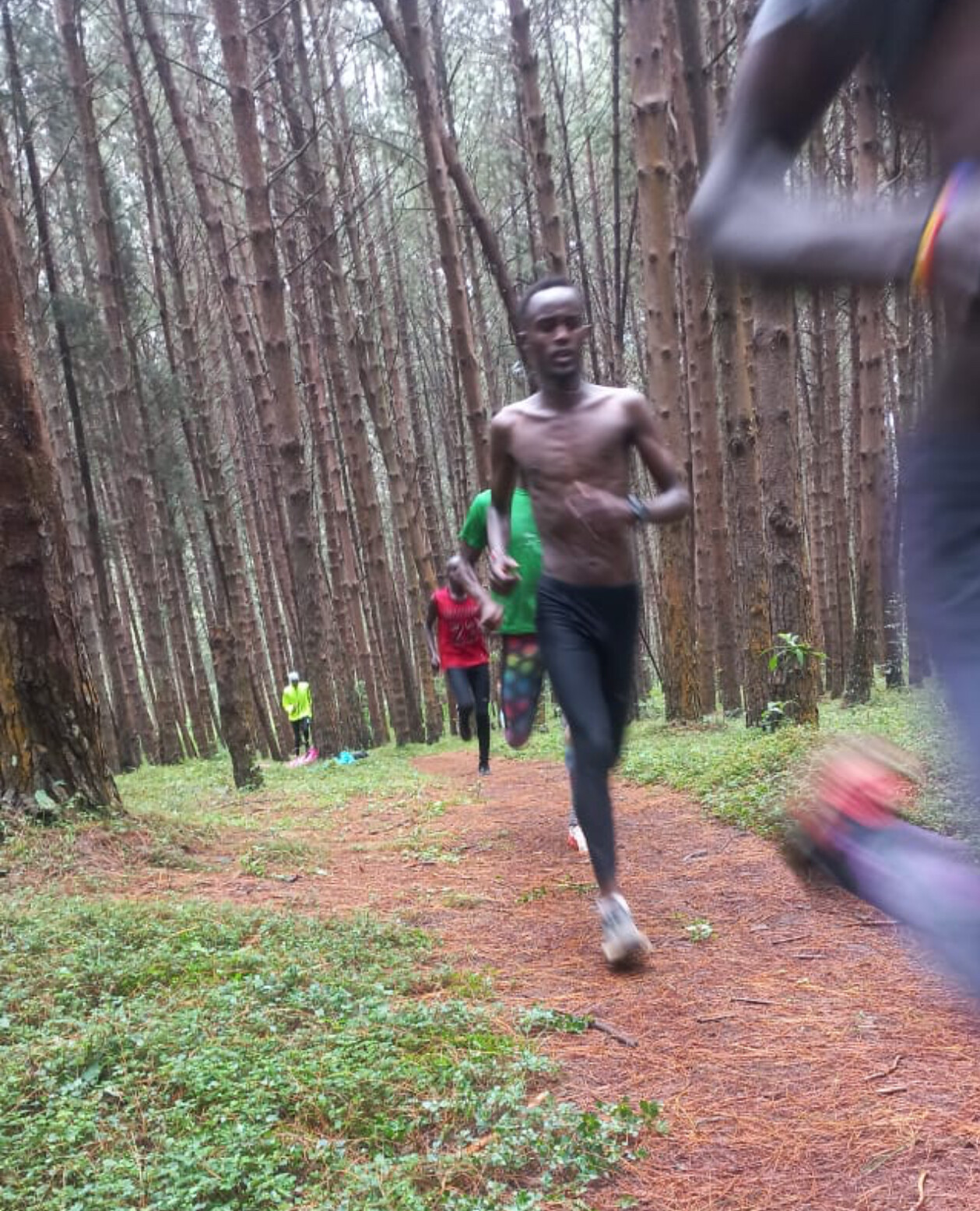
Here, where the air is thin and crisp, mornings begin before sunrise. Frost melts from the grass as a small group of determined athletes powers up a steep incline, their breath visible in the cold air. Leading them is 27-year-old Amos Kibet Chirchir, stopwatch in hand, eyes sharp with focus.
To an outsider, he might look like any other coach on a country road. But to his athletes — and to the growing Kenyan Athletics Training Academy (KATA) movement — Amos represents something much bigger: a new generation of homegrown leaders cultivating both champions and sustainability.
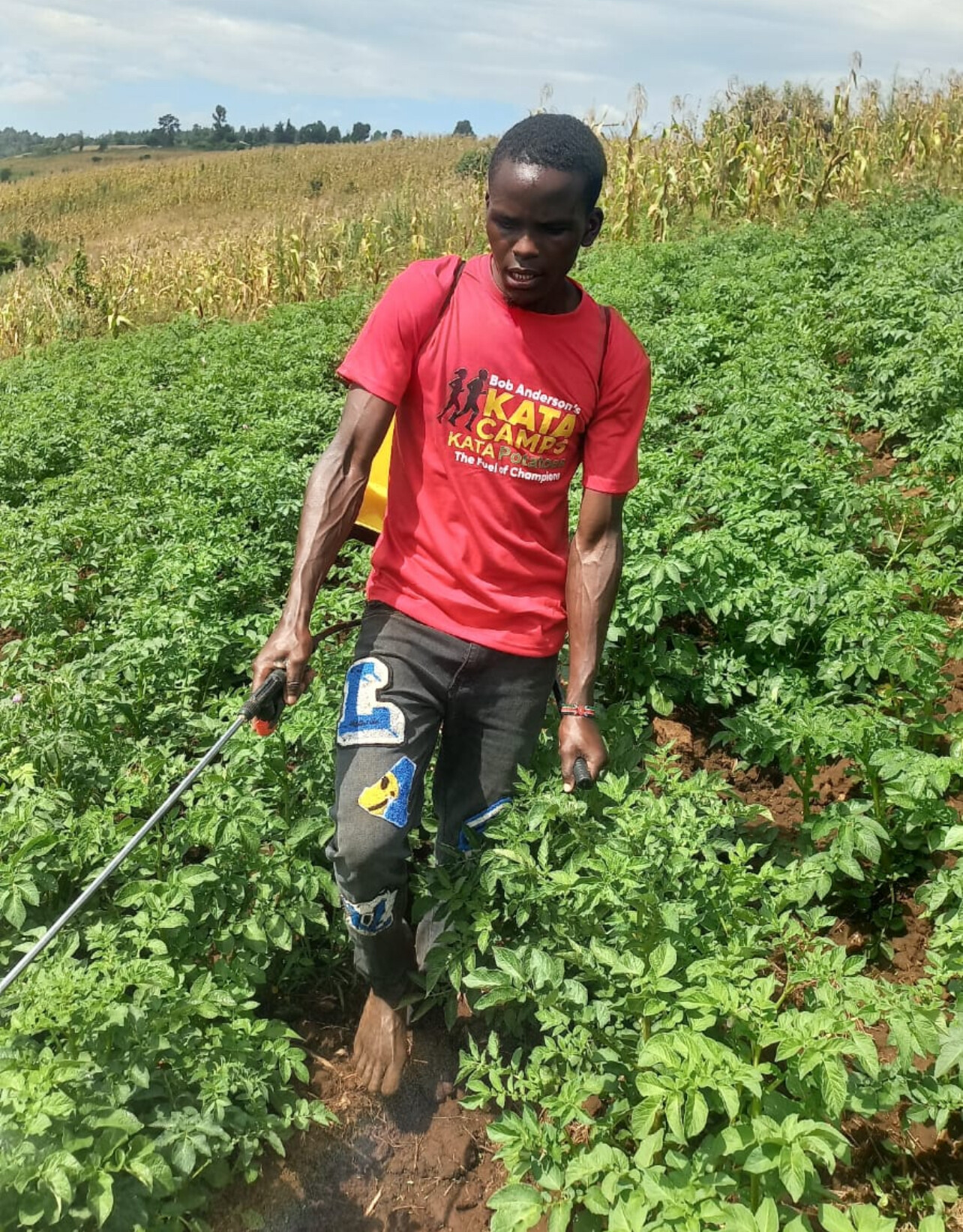
The Making of a Leader
Amos, the fifth-born in a family of eight, grew up in the cold, fertile highlands of Molo, raised by farming parents who taught him the value of hard work. Athletics runs deep in his family — his father was a 400m hurdler in the 1970s, competing when Kenyan track was just finding its rhythm.
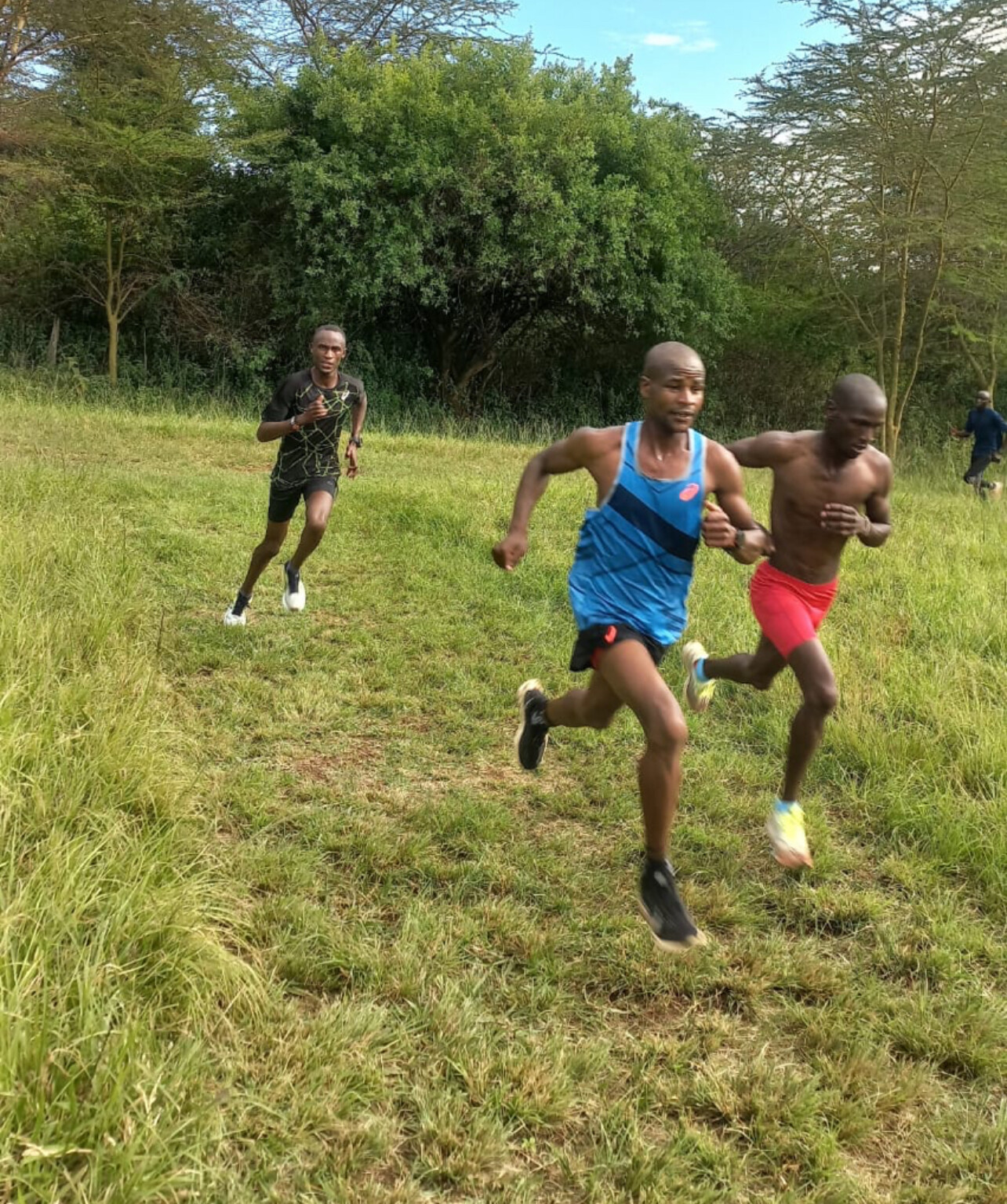
“I didn’t just choose running,” Amos says with a smile. “Running found me.”
After excelling in local school competitions, Amos nearly saw his running dream fade — until June 2022, when he earned a place at KATA Thika, founded by American running innovator Bob Anderson, the visionary behind Runner’s World magazine.
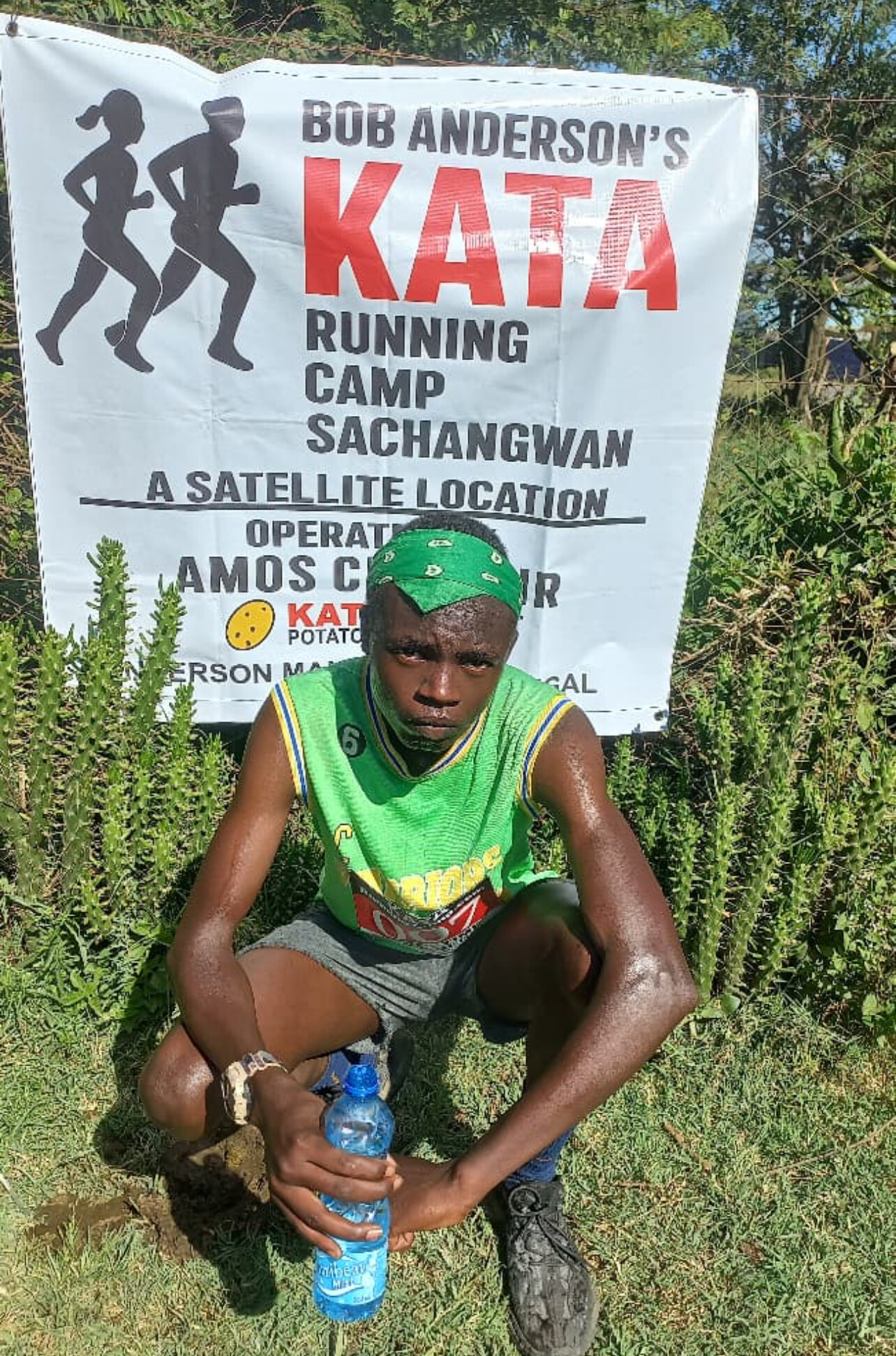
“That changed everything,” he recalls. “For the first time, I could train without worrying about daily survival. KATA didn’t just build me as an athlete — it prepared me to lead.”
Building a High-Altitude Training Hub
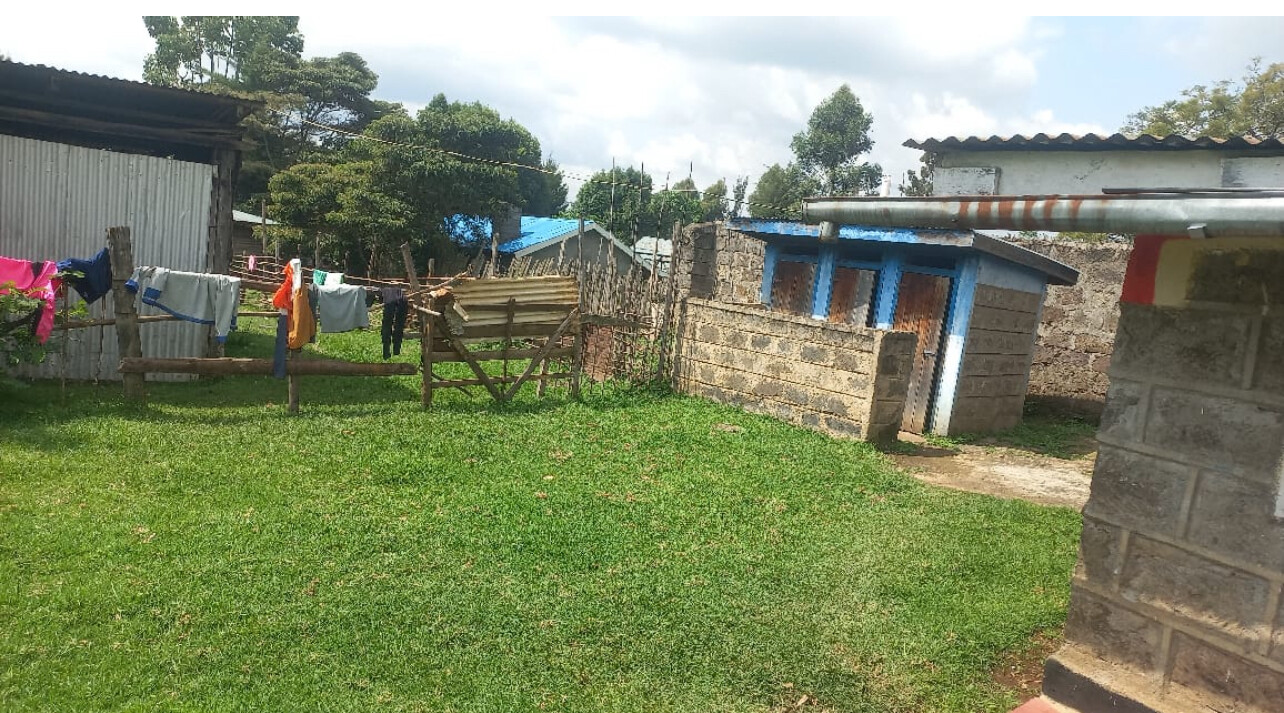
When Anderson announced plans to expand KATA through athlete-led satellite camps, Amos seized the opportunity. He returned home and launched KATA Sachang’wan Camp with just five athletes — three men and two women. Today, the camp has grown to eight committed runners, with more young talents eager to join.
The camp sits at an altitude of 2,400 meters, ideal for endurance training. For faster sessions, they descend to 1,800 meters, creating a natural high-low altitude system similar to what world-class runners use in Iten, Kaptagat, and Eldoret.

Already, results are emerging:
• Weldon Kibet Lang’at clocked 30:36 (10K) and 14:55 (5K) at the Double Road Race before improving to 30:16 in the October 15 time trials.
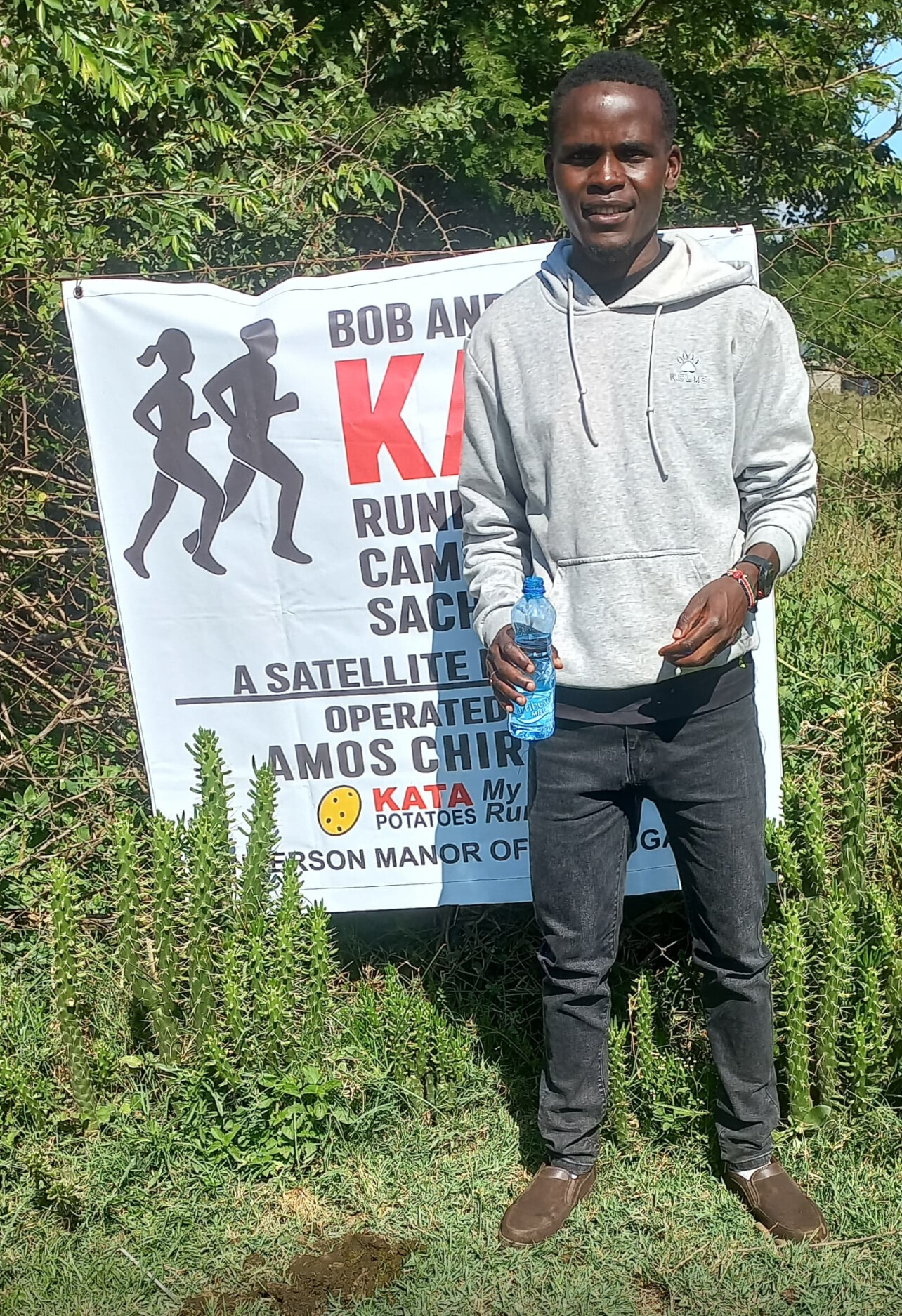
• Elizabeth Wambui, who joined just two months ago, cut her 5K time from 19:00 to 17:35 at the same event.
Amos himself remains in strong competitive shape, with personal bests of 30:51 (10K) and 14:32 (5K).
“I want to build champions — not just athletes who run fast, but athletes who think beyond medals,” he says.
Farming Hope: The KATA Potato Project
Alongside athletics, the Sachang’wan camp thrives on another discipline — agricultural sustainability. Inspired by Bob Anderson’s belief in empowering athletes for life beyond competition, Amos integrated potato farming into his training model.
He began with two acres of KATA potatoes, a move that initially drew laughter from locals.
“At first, people thought I was crazy,” he recalls. “They said farming was a step backward for an athlete. Now they’re copying me.”
Today, the farm helps feed the athletes, generates income for camp operations, and inspires local farmers — many now shifting from maize to potatoes after seeing his success.
“Athletes must think about life after running,” Amos says. “This program lets us build something real, not just chase medals.”
Training Champions, Growing Futures
With schools now closed, Amos plans to recruit junior athletes from nearby villages — guiding them early and keeping them away from idleness and drugs.
“Talent is going to waste in villages like ours because nobody guides young runners. I want to change that,” he says.
His long-term dream is to build dormitories, expand training facilities, and turn KATA Sachang’wan into a full-fledged center of excellence — powered by athletics and farming.
“Bob Anderson’s Vision Is Working”
Amos believes that KATA is redefining the future of Kenyan athletics.
“This is more than running,” he says. “Bob Anderson’s program teaches us responsibility, teamwork, leadership, and self-reliance. We’re not waiting for sponsors — we’re building ourselves.”
From the cold ridges of Sachang’wan overlooking Menengai Crater, a quiet revolution is growing — one built on sweat, soil, and belief. Here, potatoes fuel champions, and running fuels dreams.
And at the heart of it all stands a young leader — stopwatch in one hand, hoe in the other — cultivating both athletes and a future for Kenya.
(10/20/2025) ⚡AMPby Robert Kibet
Shure Demise Claims Third TCS Toronto Waterfront Marathon Title
Ethiopia’s Shure Demise made history Sunday by winning her third TCS Toronto Waterfront Marathon, pulling away just after halfway and never looking back. Despite warm, windy, and humid conditions, she crossed the line in 2:21:03, the second-fastest time of her career—just 19 seconds shy of the course record set last year by compatriot Waganesh Mekasha.
Demise’s performance marks a full-circle moment. Ten years ago, at just 19, she ran her lifetime best of 2:20:59 in Dubai. Since then, she has earned podium finishes at the Tokyo (2019) and Chicago (2018) marathons, placed 5th at the 2017 World Championships, and captured back-to-back Toronto wins in 2015 and 2016. Sunday’s victory signals a strong comeback after giving birth to her daughter two years ago.
“I am very happy—it is more than what I expected,” said Demise. “I trained well and was confident I would do well and win. From 20 km I was running by myself.”
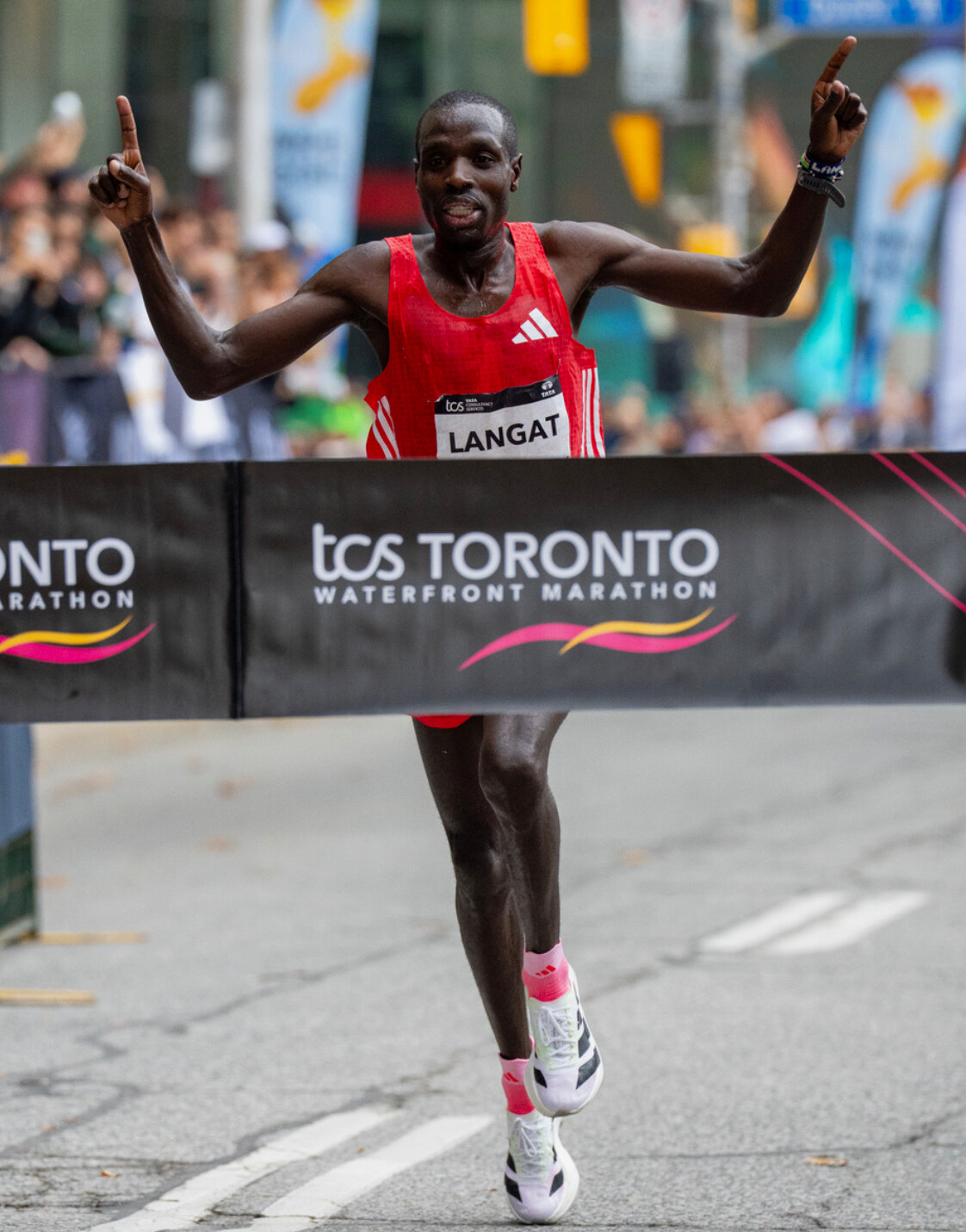
Earlier this year, Demise also won the Milan Marathon in 2:23:31, reinforcing her return to world-class form. Betty Chepkorir of Kenya finished second in 2:23:45, while Almaz Kebebe of Ethiopia took third in 2:26:40.
The women’s race was briefly disrupted when three Ethiopian runners mistakenly followed the half-marathon course, but Demise was far ahead and unaffected.
Kenyan Men Sweep the Podium
In the men’s race, Kenya scored a clean sweep. Leonard Langat broke away from a lead pack with 4 km remaining to win in 2:08:15. Noah Kipkemboi, third last year, improved to second in 2:08:24, while Sila Kiptoo finished third in 2:08:44.
“At 38 km I was ready to push, and I went,” said Langat. “It was hot, but I felt good and confident.”
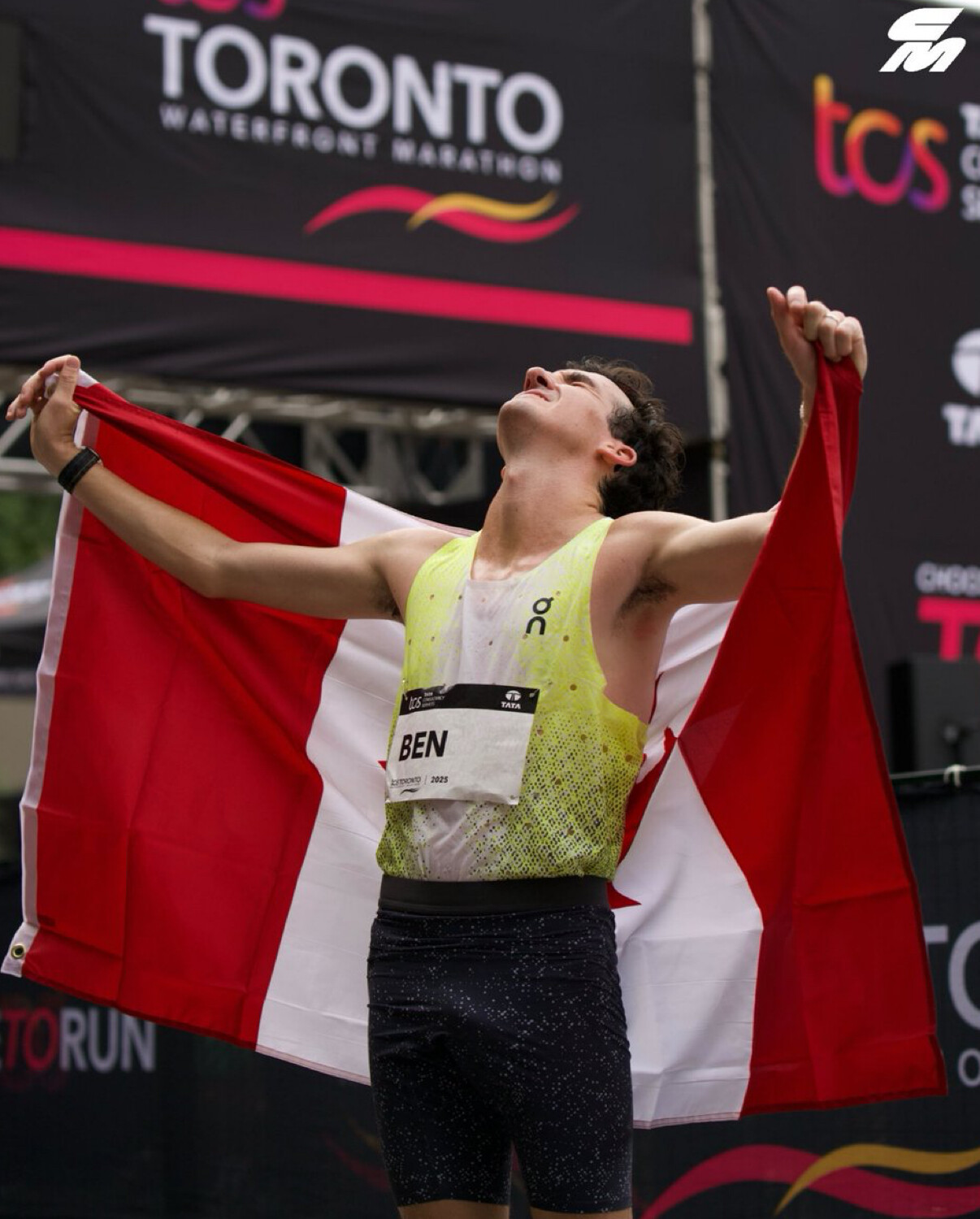
Canadian Titles for Hannah and Flanagan
The Canadian Marathon Championships, held concurrently, saw Rachel Hannah, 39, win her first national title in 2:33:47. “It’s been a dream of mine to win these championships,” she said.
Ben Flanagan captured the men’s Canadian crown in his marathon debut, finishing in 2:15:39 ahead of Philippe Parrot-Migas (2:17:15) and Andrew Alexander (2:18:15).
“The last 7 km were brutal, but I finished strong,” said Flanagan, a 2024 Olympian over 5,000 m. “This is a new chapter for me. Now it’s time to catch up with the big dogs.”
(10/19/2025) ⚡AMPby Paul Gains
TCS Toronto Waterfront Marathon
The Scotiabank Toronto Waterfront Marathon, Half-Marathon & 5k Run / Walk is organized by Canada Running Series Inc., organizers of the Canada Running Series, "A selection of Canada's best runs!" Canada Running Series annually organizes eight events in Montreal, Toronto and Vancouver that vary in distance from the 5k to the marathon. The Scotiabank Toronto Waterfront Marathon and Half-Marathon are...
more...Rising Talent Shines at KATA Nyandarua 10K Time Trial
The cool high-altitude air of Nyandarua — sitting at approximately 2,400 meters (7,874 feet) above sea level — provided a challenging yet inspiring setting on October 15, 2025, as athletes from Bob Anderson’s KATA Running Camp – Nyandarua (K04) tested their endurance in a 10K time trial. Under the direction of Coach and Operator Peter Njoroge, the runners displayed exceptional commitment, focus, and steady improvement — hallmarks of the KATA philosophy.
Leading the charge was Peter Kamau (Bib 020), who crossed the finish line in 31:45, followed closely by James Githengu (Bib 061) in 32:15. Antony Kingori (Bib 009) secured third with 34:20, while Moses Maina (Bib 091) and Hillary Mwangi (Bib 098) rounded out the top five. Despite the thin air and rolling course, several athletes achieved personal bests, proving the benefits of consistent altitude training.
Coach Njoroge commended his team, saying, “Our athletes are learning that consistency and discipline create results. Every trial brings them closer to championship form.”

KATA Founder Bob Anderson added, “The Nyandarua KATA family continues to impress. It’s not just about fast times — it’s about building the foundation of champions through effort and teamwork.”
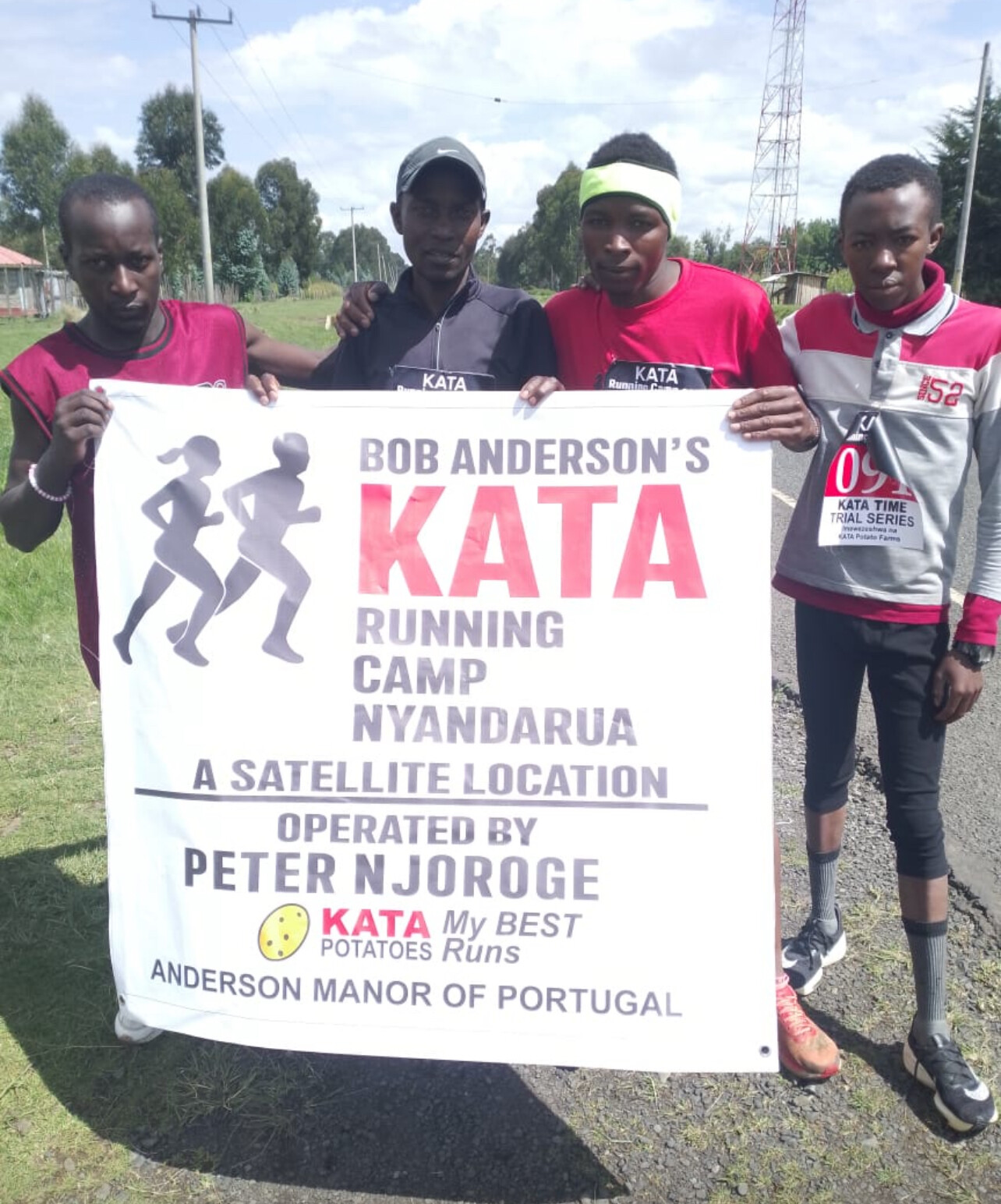
10K Results – October 15, 2025
1. Peter Kamau – Bib 020 – 31:45
2. James Githengu – Bib 001 – 32:15
3. Antony Kingori – Bib 009 – 34:20
4. Moses Maina – Bib 091 – 34:50
5. Hillary Mwangi – Bib 098 – 35:10
6. Evans Habungu – Bib 090 – 35:50
7. James Mwangi – Bib 008 – 37:10
8. Joseph Kamansa – Bib 010 – 37:52
9. Peter Ikimani – Bib 005 – 39:25
10. Samuel Maina – Bib 092 – 40:23
Located in Kenya’s central highlands, the KATA Running Camp – Nyandarua (K04) is part of Bob Anderson’s expanding KATA network, which blends elite running development with sustainable potato farming — a model symbolizing endurance, community, and purpose.
KATA Potatoes — The Fuel of Champions
Operated by Peter Njoroge
(10/18/2025) ⚡AMPby Boris Baron
Strong Performances at KATA Camp 19X Kisii Time Trial
Despite the demanding exam season, the KATA Running Camp 19X in Kisii, under the leadership of coach and operator Peter Oenga, successfully hosted a spirited 5K time trial that saw several athletes achieve personal bests.
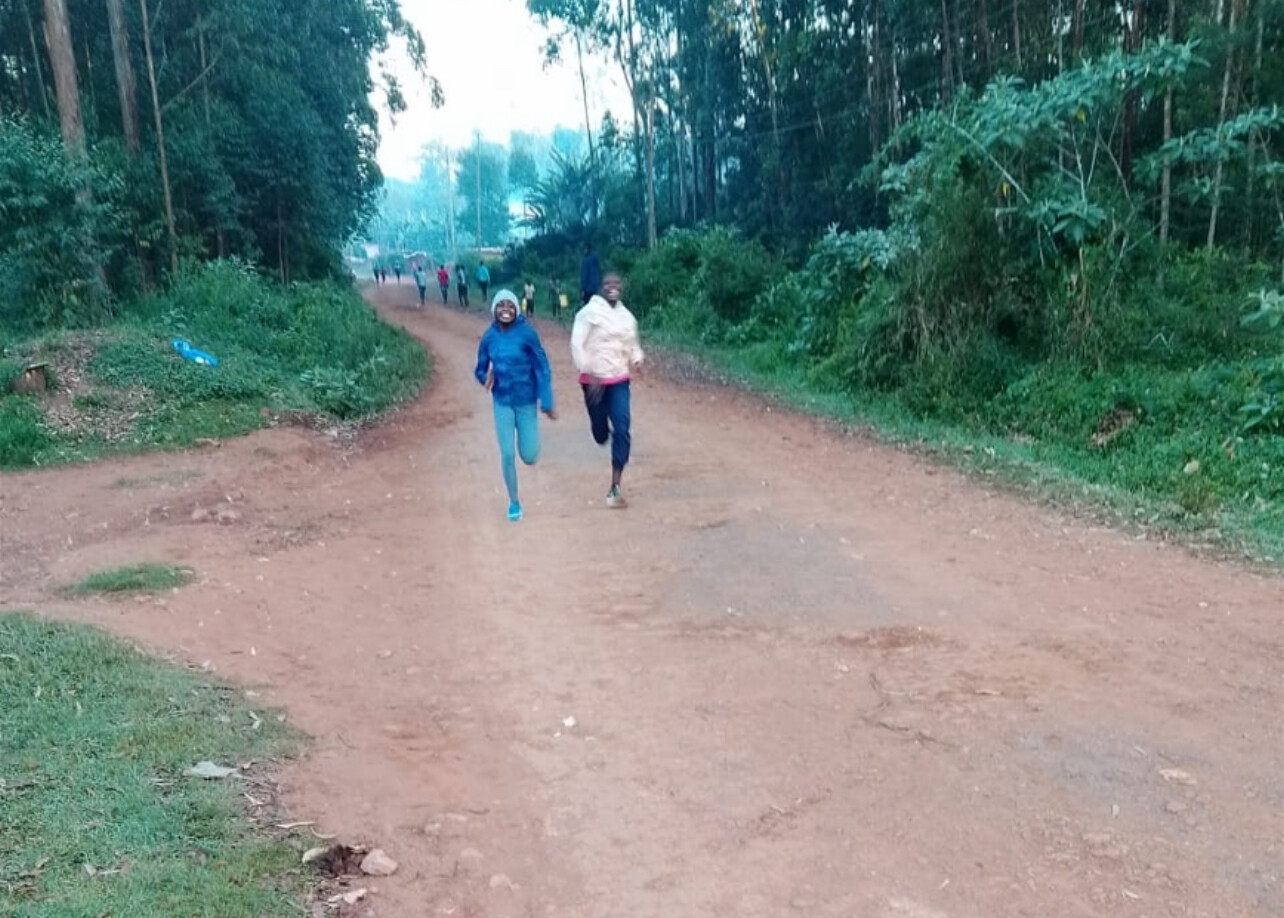
Men’s 5K Results
1. Musa Osoro – 14:31.4
2. Joshua Nyakeri – 14:52.5
3. Bevon Mokua – 15:01.1
4. Emmanuel Barongo – 15:02.2
5. Nelson Momanyi – 15:09.4
The men’s race was highly competitive, with Musa Osoro taking command early and holding strong through the finish in 14:31.4. The close pack that followed demonstrated the growing depth and talent within the Kisii-based camp.
Women’s 5K Results
1. Mary Kwamboka – 17:36.5
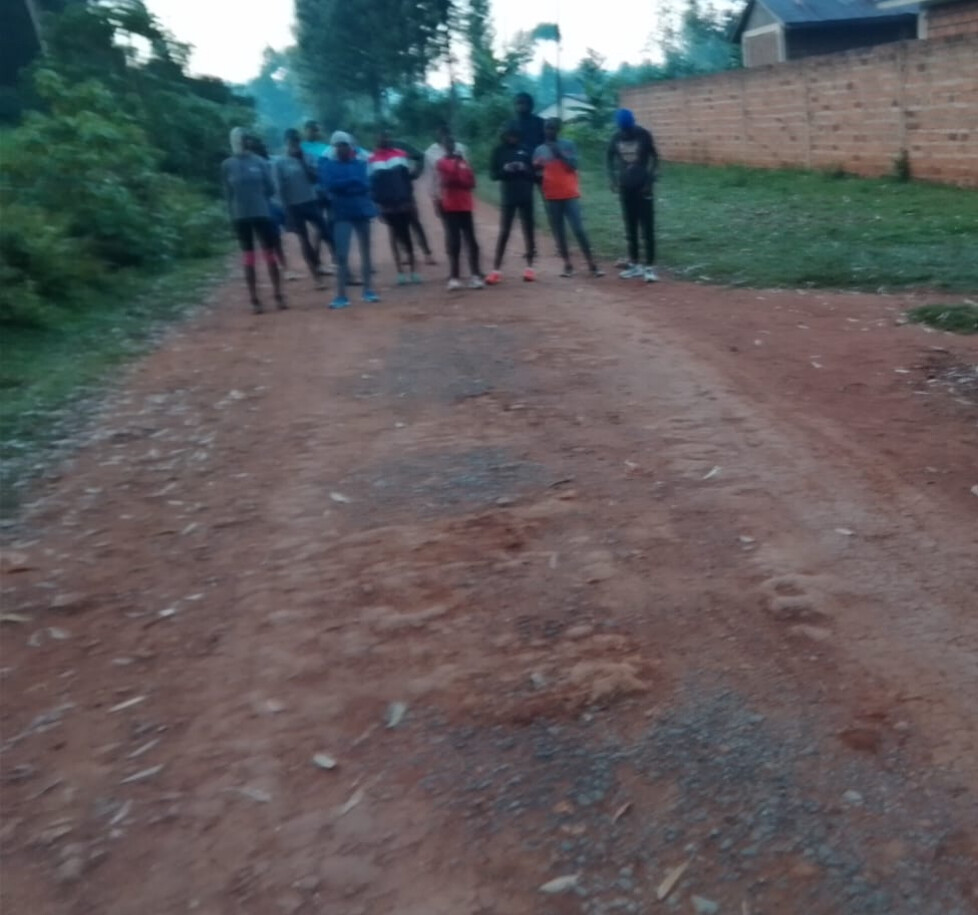
2. Debora Oeri – 17:36.6
3. Eunuke Morara – 18:02.2
4. Iyvone Mogeni – 18:37.8
5. Debora Omurwa – 18:39.3
6. Vena Okeyo – 19:50.4
7. Dorca Michira – 19:50.8
In the women’s division, Mary Kwamboka edged out Debora Oeri in one of the day’s closest finishes — just one-tenth of a second separated the two. The top five women all posted impressive times, showcasing the growing consistency and competitive spirit at Camp 19X.
A Word from the Camp
Coach Peter Oenga commended his athletes for their commitment during a challenging academic period. “Balancing school and training is not easy, but our runners showed true dedication. The results speak for themselves,” he said.
The success of this event reflects the continued progress of the KATA Running Camps — building champions through discipline, balance, and teamwork.
(10/16/2025) ⚡AMPby Boris Baron
Chasing New York: What to Watch at the 2025 TCS New York City Marathon
Every November, the streets of New York City transform. Five boroughs become a stage. Dreams meet asphalt.
The 2025 TCS New York City Marathon is fast approaching — and for runners, coaches, and fans alike, it remains one of the most electric events on the global running calendar.
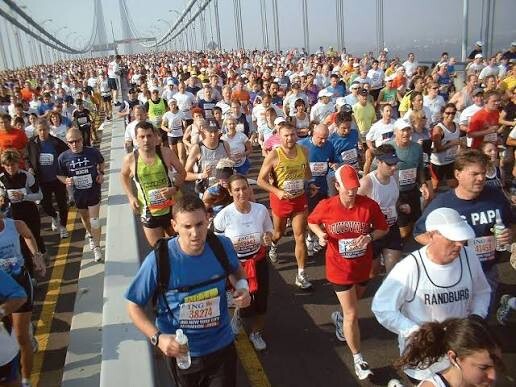
The Big Picture
• Date: Sunday, November 2, 2025
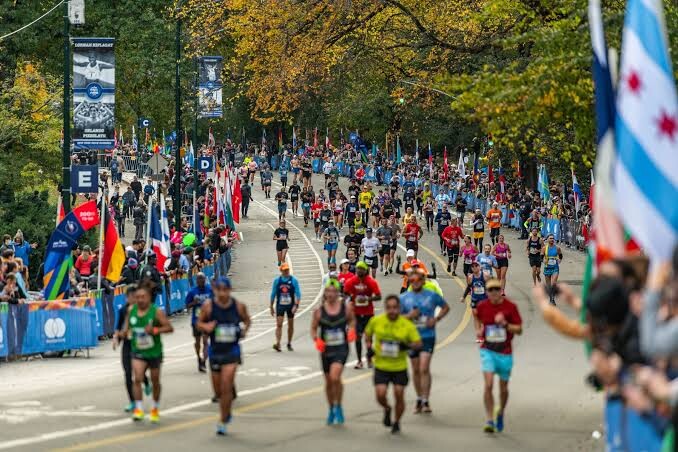
• Field size: More than 55,000 runners representing over 130 nations will take on the 26.2-mile journey from Staten Island to Central Park.
• Defending champions: Abdi Nageeye (Netherlands) and Sheila Chepkirui (Kenya) return to defend their crowns.

• Debut stars: Marathon legend Eliud Kipchoge and Olympic champion Sifan Hassan will make their long-awaited New York debuts — a storyline that has the running world buzzing.
• Classic route: The course again threads through all five boroughs, starting at Fort Wadsworth on Staten Island, crossing the Verrazzano-Narrows Bridge, and finishing in Central Park.
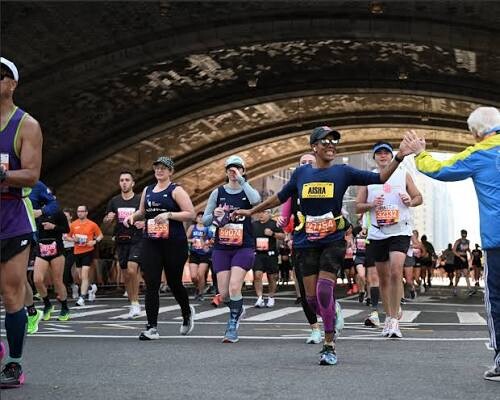
• Sustainability focus: Organizers at New York Road Runners (NYRR) continue to expand environmental initiatives, including recyclable aluminum water bottles and reduced single-use plastics.
Course Records
• Men’s Record: 2:04:58 – Tamirat Tola (2023)
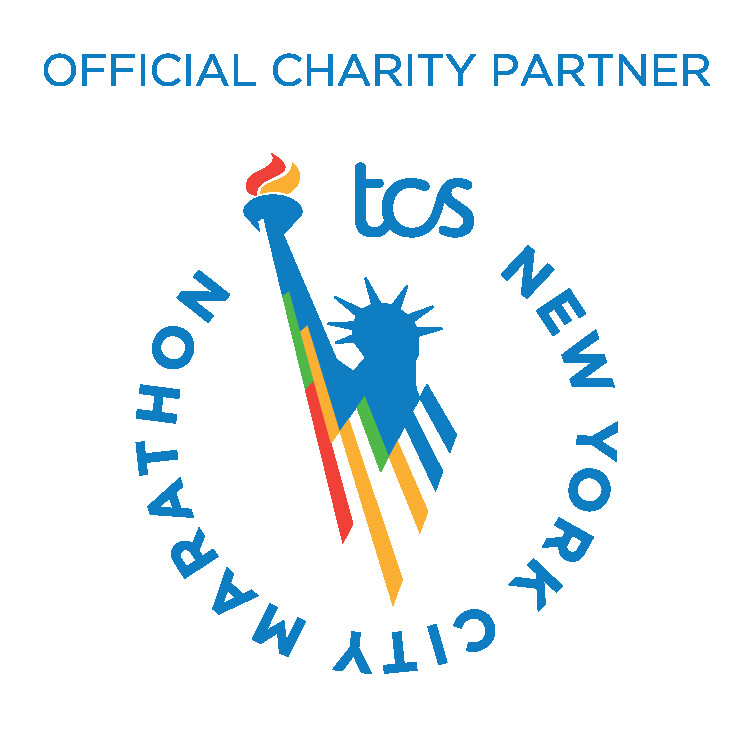
• Women’s Record: 2:22:31 – Margaret Okayo (2003)
Both marks remain tough to challenge on New York’s rolling, bridge-laden course — but with Kipchoge, Chebet, and Nageeye in the men’s field, and Hassan, Obiri, and Lokedi among the women, the potential for history is very real.
Men’s Elite Highlights
• Eliud Kipchoge (Kenya) – two-time Olympic champion, 2:01:09 PB, running NYC for the first time.
• Abdi Nageeye (Netherlands) – defending champion and Olympic silver medalist.
• Evans Chebet (Kenya) – two-time Boston Marathon champion.
• Benson Kipruto (Kenya) – Chicago 2022 winner.
• Albert Korir (Kenya) – former NYC champion.
• Joe Klecker (USA) – U.S. Olympian making his marathon debut.
• Hillary Bor (USA) – U.S. steeplechase champion transitioning to the roads.
• Charles Hicks (USA) – NCAA cross-country champion now turning professional.
Women’s Elite Highlights
• Sifan Hassan (Netherlands) – Olympic champion, winner in London (2023) and Chicago (2024).
• Hellen Obiri (Kenya) – Boston 2023 and NYC 2023 champion.
• Sharon Lokedi (Kenya) – NYC 2022 winner, still a local favorite.
• Sheila Chepkirui (Kenya) – defending NYC champion.
• Emily Sisson (USA) – current American marathon record holder (2:18:29).
• Molly Seidel (USA) – Tokyo Olympic bronze medalist.
• Fiona O’Keeffe (USA) – 2024 U.S. Olympic Trials marathon champion.
• Susanna Sullivan (USA) – Top-10 finisher at Boston 2023, consistent national contender.
This year’s field features 49 Olympians and Paralympians, nine past major marathon winners, and 16 medalists from Olympic or World Championship events — arguably the deepest lineup in New York history.
What Makes New York Unique (and Brutal)
• Rolling terrain and bridges: The Verrazzano, Pulaski, Queensboro, and Willis bridges each sap rhythm and energy.
• Crowd power: Two million spectators line the course, creating unmatched atmosphere — and volume.
• Late-season unpredictability: Weather can swing from cold drizzle to crisp fall perfection.
• Tactical racing: With its uneven pacing demands, NYC rewards strategy over pure speed.
Storylines to Watch
• Kipchoge’s debut: The marathon GOAT takes on the sport’s loudest stage. Can he master New York’s relentless hills and twists?
• Hassan’s bold quest: Coming off London and Chicago wins, can she complete the trifecta in her first NYC appearance?
• Lokedi vs. Obiri: The Kenyan duo continue their fierce rivalry on familiar ground.
• Nageeye’s defense: Last year’s champion faces his toughest test yet with Chebet and Kipruto in pursuit.
• American charge: Sisson, Seidel, O’Keeffe, and Sullivan lead the most complete U.S. women’s team in years — while Klecker and Bor look to ignite the next chapter for American men’s marathoning.
• Record watch: Tola’s 2:04:58 may finally be tested, and Okayo’s 22-year-old mark could fall if conditions align.
For Runners and Coaches
• Train the bridges. Practice long tempo runs that mimic New York’s undulating rhythm.
• Respect the pace. The roar of Brooklyn can trick even the best into going out too fast.
• Fuel flexibly. NYRR’s eco-station setup may differ from other majors — plan accordingly.
• Stay mentally sharp. The final 10 K through Central Park can break anyone unprepared for its hills.
• Layer smartly. Start slightly chilled; the crowds and effort will warm you fast.
The Bottom Line
The 2025 TCS New York City Marathon blends star power, unpredictability, and history like no other race. From Kipchoge’s long-awaited debut to the fiercest women’s field ever assembled in New York, every mile promises drama.
For runners chasing personal bests, and for millions of spectators lining the streets or watching from afar, November 2 will again remind us why this marathon is more than a race — it’s a celebration of endurance, spirit, and the human story that unfolds across 26.2 miles of the world’s greatest city.
(10/16/2025) ⚡AMPby Boris Baron
TCS New York City Marathon
The first New York City Marathon, organized in 1970 by Fred Lebow and Vince Chiappetta, was held entirely in Central Park. Of 127 entrants, only 55 men finished; the sole female entrant dropped out due to illness. Winners were given inexpensive wristwatches and recycled baseball and bowling trophies. The entry fee was $1 and the total event budget...
more...Champions in the Making: KATA Iten Camp Time Trial Highlights
The KATA Iten Camp held its latest time trial under ideal running conditions, with both the 10K and 5K distances producing impressive performances and multiple personal bests. Coach David Kellum’s athletes demonstrated exceptional progress and consistency, reflecting the strong training foundation established at Camp #8.
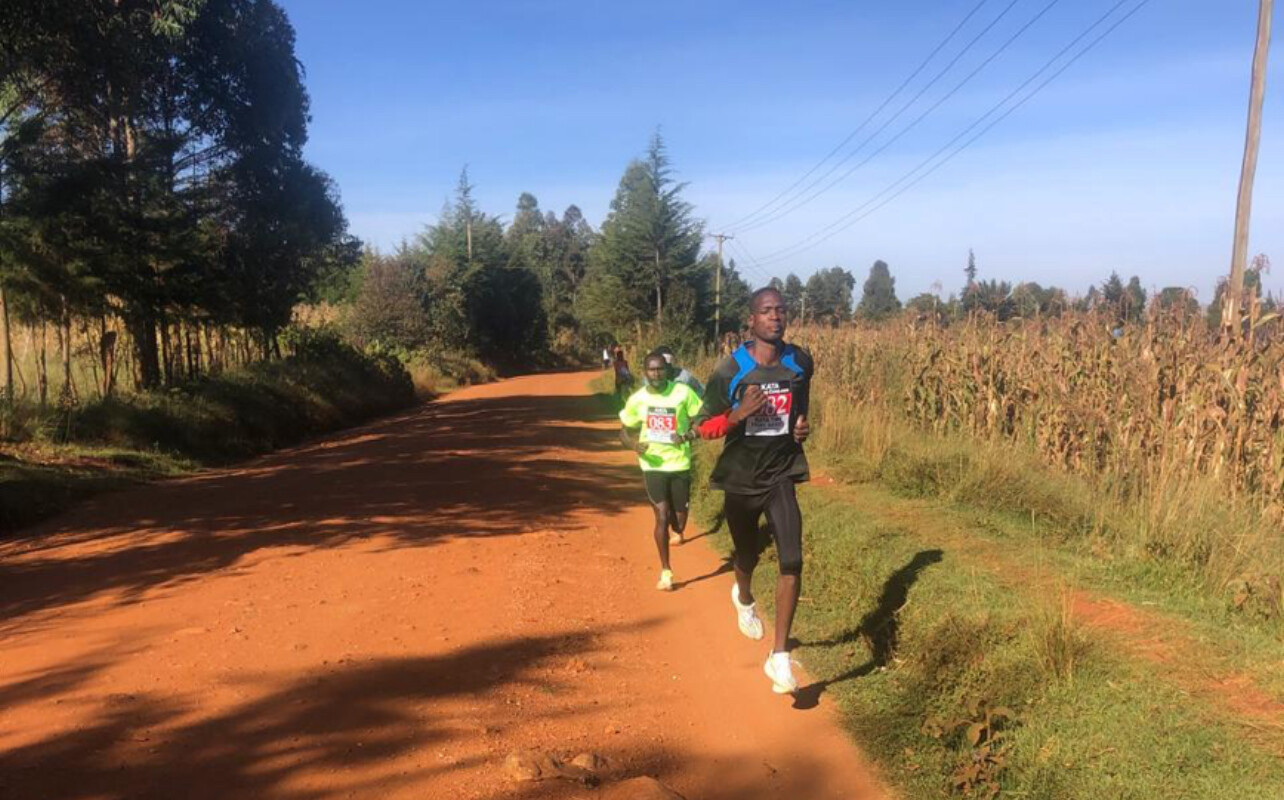
Men’s 10KM Results
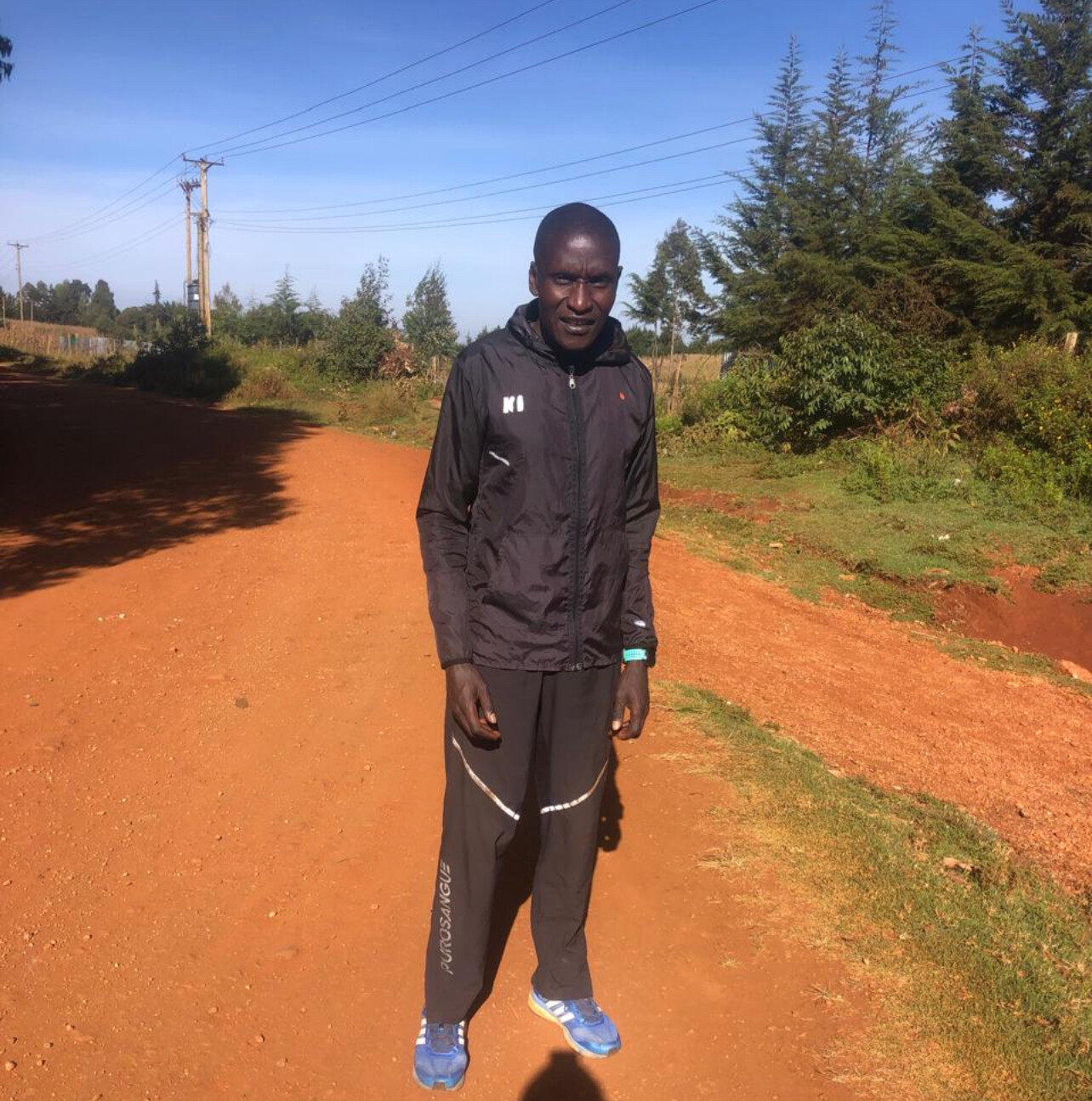
1. Amon Kipchirchir – 29:30.59
2. Linus Kangogo – 29:35.20
3. Elkana Barningo – 29:55.05
4. Moses Leparakwo – 30:20.08
Women’s 10KM Results
1. Betty Chesang – 35:45.01
2. Sharon Chesir – 35:58.32
3. Teresia Lenges – 36:06.33
4. Vivian Ololpapit – 36:40.47
Men’s 5KM Results
1. Amon Kipchirchir – 15:30.11
2. Isack Kipchirchir – 15:24.55
3. Cornelius Oloisa – 15:30.56
4. Linus Kangogo – 15:58.30
Women’s 5KM Results
1. Betty Chesang – 16:55.30
2. Cynthia Rono – 16:57.21
3. Vivian Nengai – 17:45.31
4. Sharon Chesir – 17:46.55
Date: October 16, 2025
Coach and Operator: David Kellum
Location: Iten, Kenya
Summary:
The Iten-based KATA athletes delivered an outstanding showing, highlighted by strong double performances from Amon Kipchirchir and Betty Chesang, who both dominated their respective 10K and 5K events. Coach David Kellum continues to build one of the most promising training groups in the KATA network, with athletes steadily improving through disciplined training and consistent time trial participation.
(10/16/2025) ⚡AMPby Boris Baron
KATA 07 Sachangwan Time Trial Produces Personal Bests in Perfect Conditions
Favorable weather and strong determination made today’s KATA 07 Sachangwan Time Trial October 15 is one to remember. Every athlete recorded a personal best on the challenging 10 km and 5 km routes, showing how much progress the camp has made under the leadership of Coach and Camp Operator Amos Chirchir.
Leading the men’s 10 km field, Weldon Langat delivered a superb run, crossing the line in 30 minutes 16 seconds — a new personal best. The 19-year-old improved by an impressive 32 seconds from his previous time trial on the Salgaa–Rongai route, demonstrating both consistency and growth. Hot on his heels, Vincent Kemboi finished second in 31:00, followed by Emmanuel Bor in 31:54 and Benjamin Kibet in 33:34.
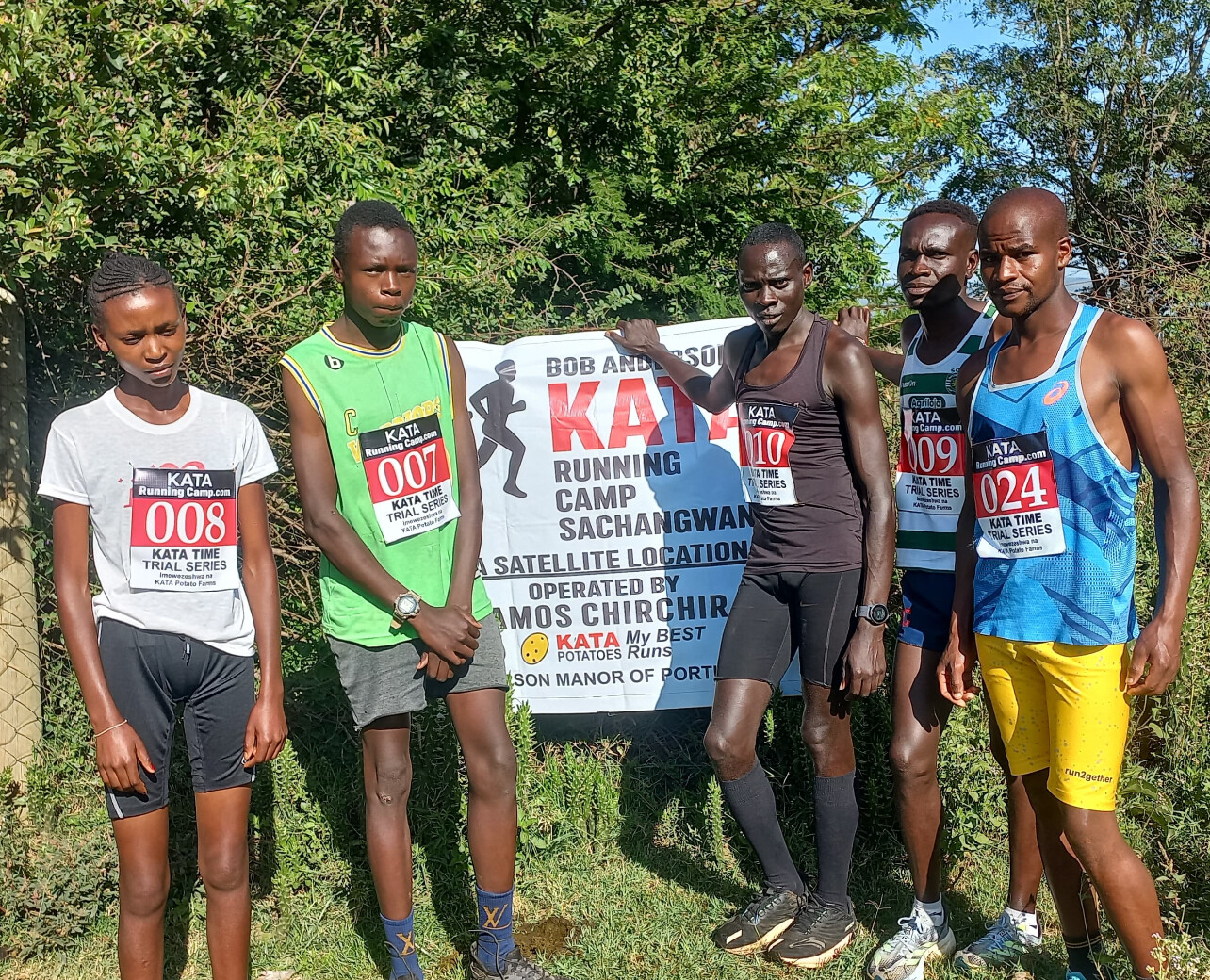

All four men posted lifetime bests, a testament to their disciplined training and steady improvement.
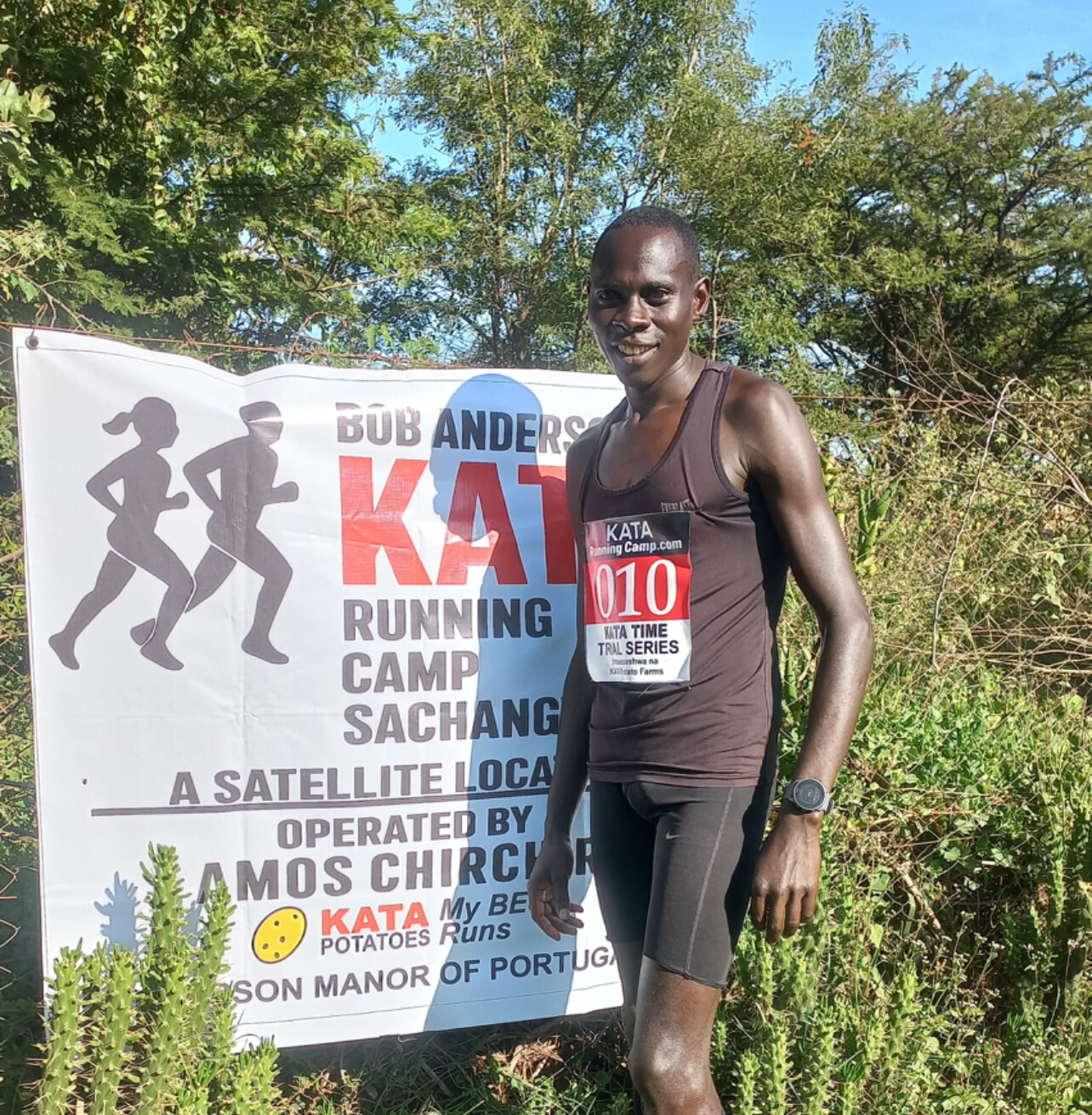
In the women’s 5 km event, Elizabeth Wambui dominated with a powerful performance, clocking 17:35 at age 20 to claim victory in style. Her run capped a day of inspiration and motivation for the entire Sachangwan training group.

Official Results – KATA 07 Sachangwan Time Trial (October 15, 2025)
MEN – 10 KM
1. Weldon Langat – 30:16 (Age 19, Bib No. 024, 10 km)
2. Vincent Kemboi – 31:00 (Age 32, Bib No. 009, 10 km)
3. Emmanuel Bor – 31:54 (Age 25, Bib No. 010, 10 km)
4. Benjamin Kibet – 33:34 (Age 18, Bib No. 007, 10 km)
WOMEN – 5 KM
1. Elizabeth Wambui – 17:35 (Age 20, Bib No. 008, 5 km)
Coach Amos Chirchir praised his team’s progress, saying, “Every athlete achieved a personal best today. That shows the hard work and commitment behind our program. At KATA, we believe in developing champions through consistency, teamwork, and opportunity.”
He also expressed gratitude to KATA Founder and Director Bob Anderson and Catherine Anderson for their continued support, which has empowered athletes across Kenya through both training and farming initiatives.
The KATA 07 Sachangwan Camp continues to embody the KATA vision — Empowering Athletes. Growing Futures.
(10/15/2025) ⚡AMP
by Boris Baron
KATA Sprinters Kiambu Camp #16 Delivers Strong Performances in October Time Trials
The October 15 time trials at KATA Sprinters Kiambu Camp No.16 delivered another strong performance from the athletes, confirming steady progress under the leadership of Coach Julius Migwi. The camp, supported by KATA Founder and Director Bob Anderson and Catherine Anderson, continues to strengthen Kenya’s growing sprint culture.
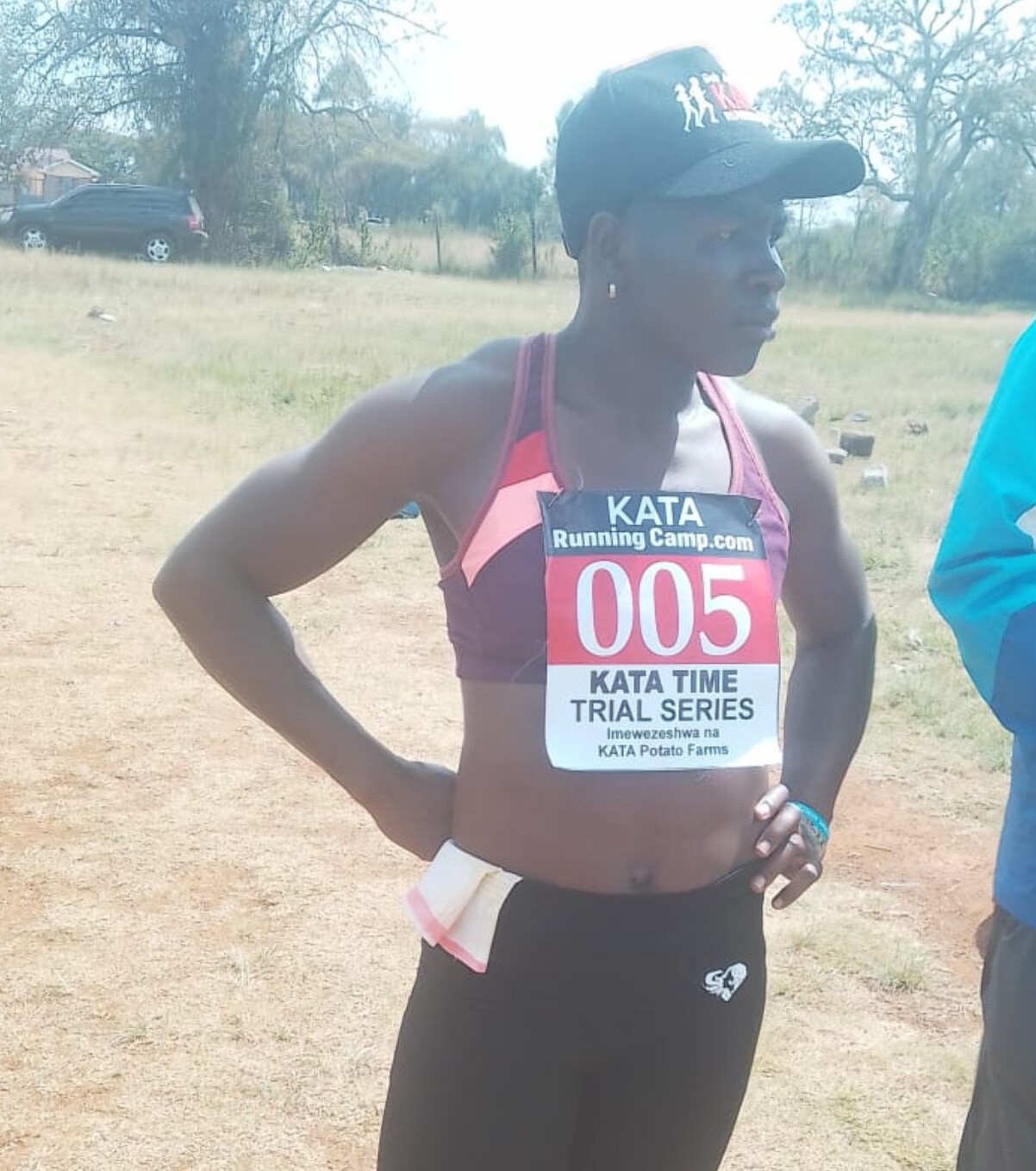
Favorable weather and excellent organization helped all participants perform well across the 60-meter and 400-meter events. Among the men, Moses Solonka (age 20) led the 60-meter sprint with a fast 13.0 seconds, followed by Antony Owino in 13.2 seconds. Peterson Matu (age 20) clocked 13.7, while Ezekiel Ngarui finished in 13.8 and Erick Wudi in 13.9.
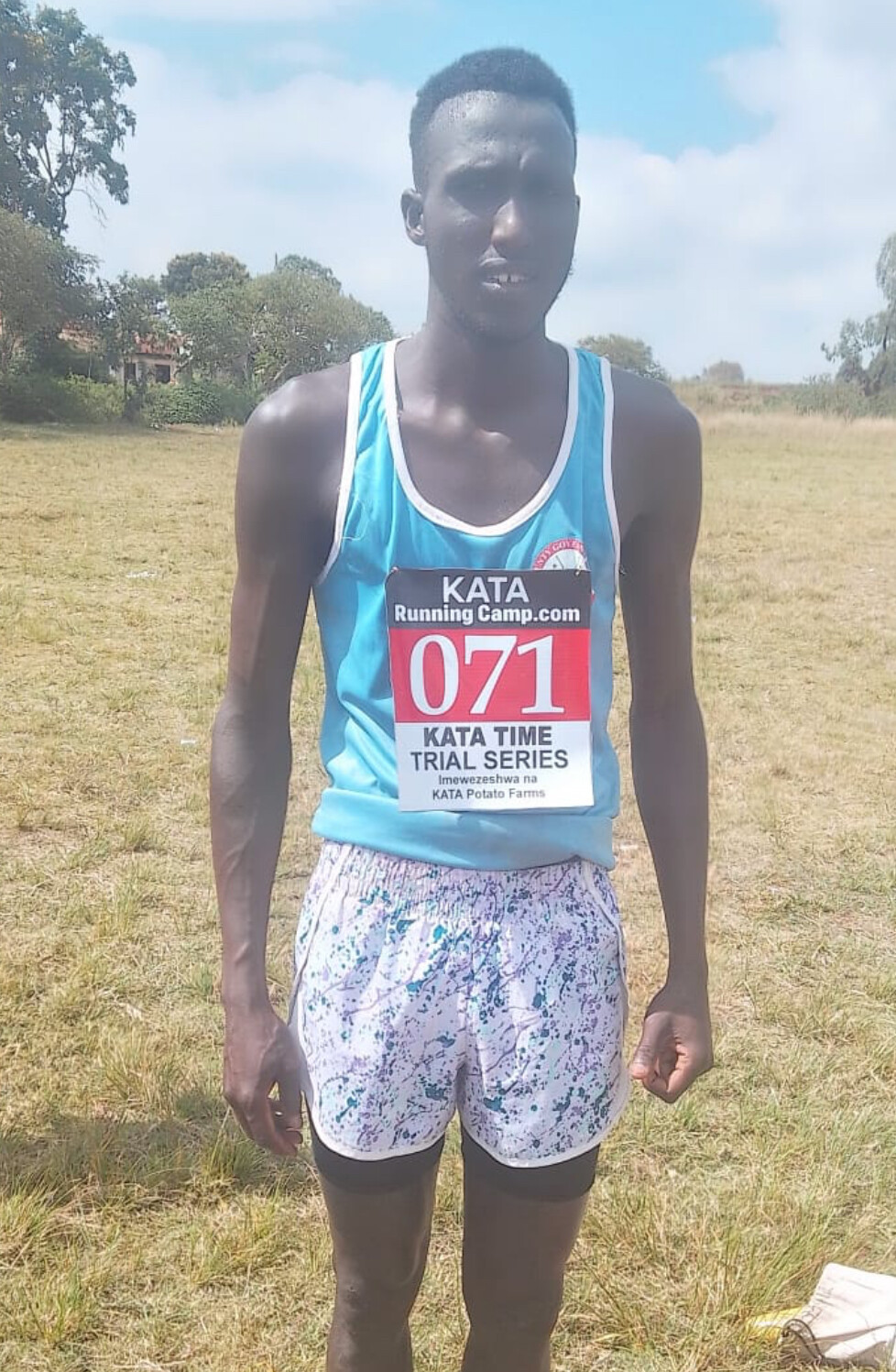
In the women’s 60-meter event, Sheila Makhungu (age 23) posted a strong 14.3, and Emma Wavinya (age 23) followed closely with 14.8, both showing smooth acceleration and technical improvement.
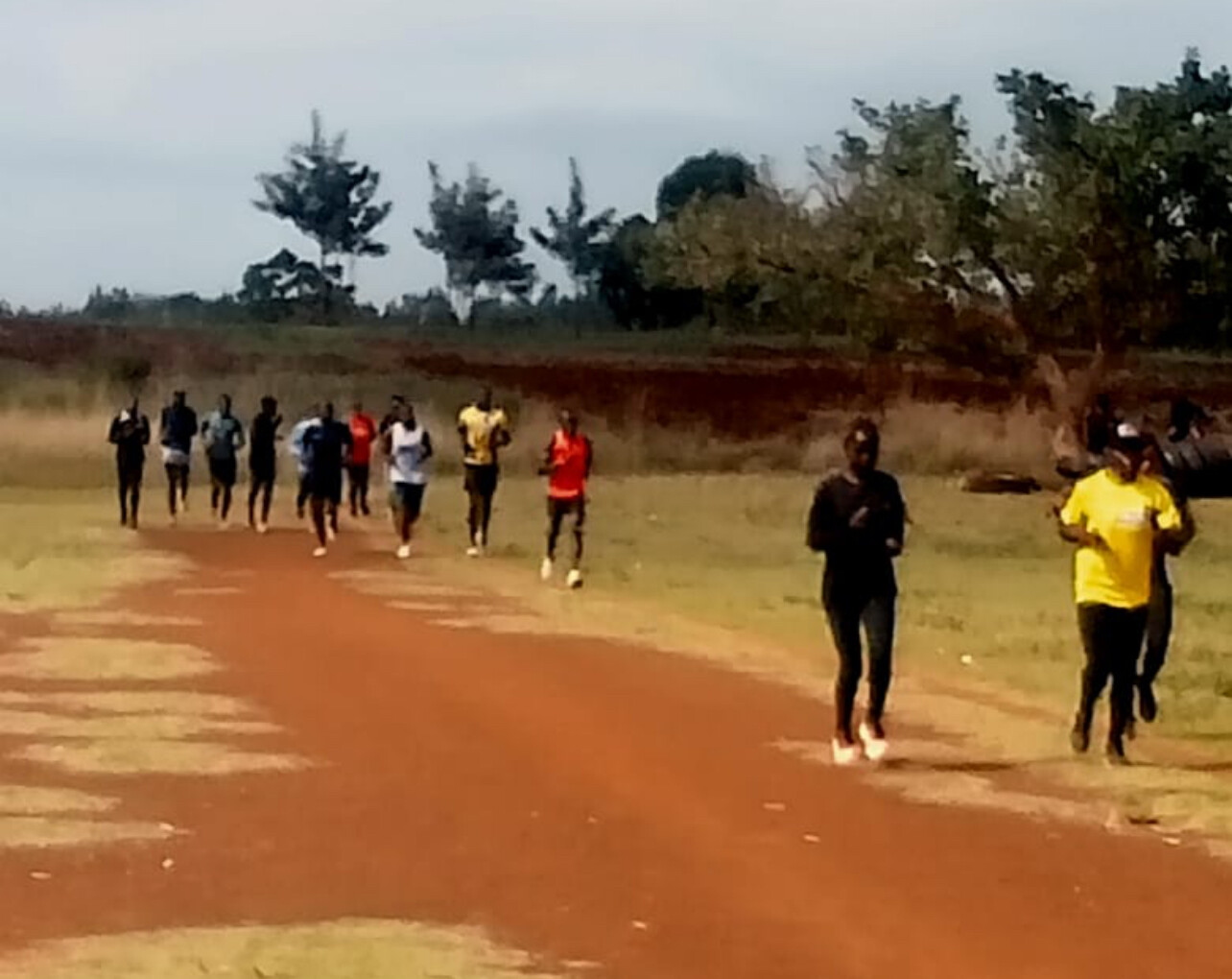
The 400-meter race featured exceptional efforts as Peris Chege (age 36) dominated with 54.2 seconds, setting the mark for others to chase. Edwin Mutuma (age 25) ran 54.8, Joseph Kamau (age 25) finished in 55.9, and Gedion Otieno (age 21) clocked 63.2.
In the women’s 400-meter division, Doreen Waka (age 30) ran 69.0, Ruth Mumbe (age 29) 65.8, and the young Rosemary Mueni (age 18) posted 71.0. Gladys Ngure (age 29) did not start her heat.
Official Results – KATA Sprinters Kiambu Camp No.16 (October 15, 2025)
60m Men
1. Moses Solonka – 13.0 (Age 20, Bib No. 1)
2. Antony Owino – 13.2 (Age 30, Bib No. 2)
3. Peterson Matu – 13.7 (Age 20, Bib No. 4)
4. Ezekiel Ngarui – 13.8 (Age 21, Bib No. 5)
5. Erick Wudi – 13.9 (Age 22, Bib No. 6)
60m Women
1. Sheila Makhungu – 14.3 (Age 23, Bib No. 7)
2. Emma Wavinya – 14.8 (Age 23, Bib No. 8)
400m Mixed
1. Peris Chege – 54.2 (Age 36, Bib No. 9)
2. Edwin Mutuma – 54.8 (Age 25, Bib No. 10)
3. Joseph Kamau – 55.9 (Age 25, Bib No. 11)
4. Gedion Otieno – 63.2 (Age 21, Bib No. 13)
5. Ruth Mumbe – 65.8 (Age 29, Bib No. 15)
6. Doreen Waka – 69.0 (Age 30, Bib No. 14)
7. Rosemary Mueni – 71.0 (Age 18, Bib No. 16)
8. Gladys Ngure – DNS (Age 29, Bib No. 17)
Coach Julius Migwi praised the team’s continued improvement, saying, “Every athlete showed growth and focus today. Our goal remains the same — to become the best sprint camp in Kenya and to inspire the next generation of sprinters.”
He also thanked Bob and Catherine Anderson for their constant encouragement and support in both the training and community programs connected with the KATA movement.
KATA Sprinters Kiambu Camp No.16 continues to prove that with dedication, teamwork, and vision, Kenya’s future in sprinting is bright.
(10/15/2025) ⚡AMPby Boris Baron
KATA Time Trial #2 — Tenden KATA Running Camp (K09)
The Tenden KATA Running Camp (K09) held its second official KATA Time Trial on October 15, 2025. Despite challenging high-altitude conditions at 2,200 meters, athletes produced a series of solid performances that reflect the steady progress within the KATA system.
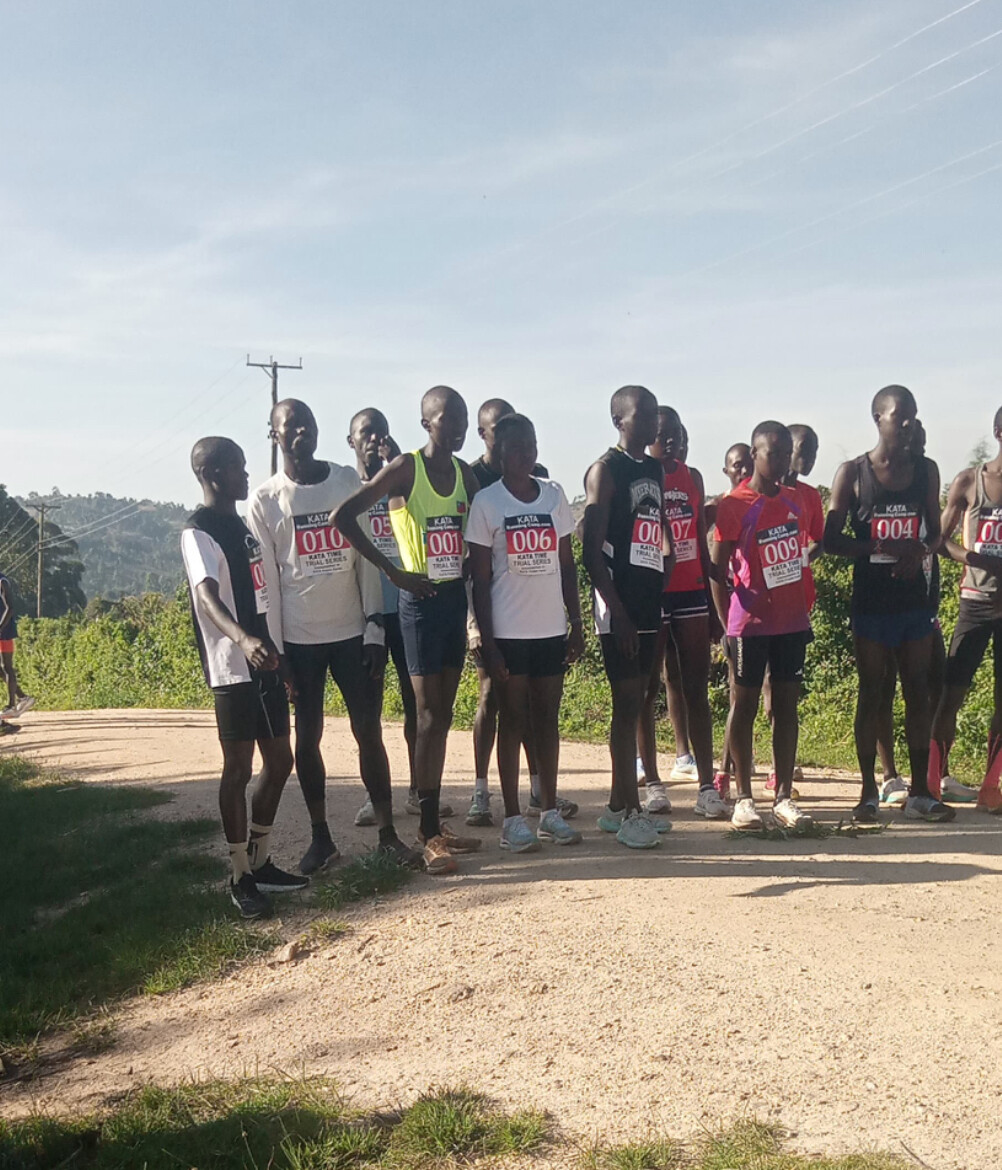
5 KM Men
1. Sammy Kwemoi — 16:20
2. Abraham Kibet — 17:01
3. Nickson Rana — 17:40
4. Emmanuel Kemboi — 18:17
5. Chrispine Korir — 18:33
10 KM Men
1. Duncan Kemei — 31:49
2. Ian Kimutai — 34:05
3. Ezekiel Kipksgei — 34:05
4. Clement Kipkoech — 36:59
Coach Philemon Kipruto, who oversees both the Kapcherop (K01) and Tenden (K09) KATA Camps, commended the group for their dedication and discipline, emphasizing how consistent time trials like this one serve as key benchmarks for future competition readiness.
Date: October 15, 2025
Altitude: 2,200 m
Location: Tenden, Kenya
Coach & Camp Operator: Philemon Kipruto
“Every KATA time trial gives us a clear picture of our athletes’ growth,” said Bob Anderson, Founder and Director of KATA. “Our goal is continuous improvement — pushing for better pacing, endurance, and execution. The Tenden camp is proving that focus and teamwork deliver results.”
The Tenden camp continues to develop a promising roster of young talent, supported by KATA’s integrated training-and-farming model, designed to empower athletes both on the track and in life.
(10/15/2025) ⚡AMPby Boris Baron
KATA Time Trial #2 — Kapcherop KATA Running Camp (K01)
Date: October 15, 2025 Altitude: 2,200 m
Location: Kapcherop, Kenya Coach & Camp Operator: Philemon Kipruto
The Kapcherop KATA Running Camp (K01) hosted its second official time trial on October 15, 2025, under ideal high-altitude training conditions at 2,200 meters. Athletes turned in determined efforts across both 5 km and 10 km distances, continuing to demonstrate the strength and focus that define the KATA program.
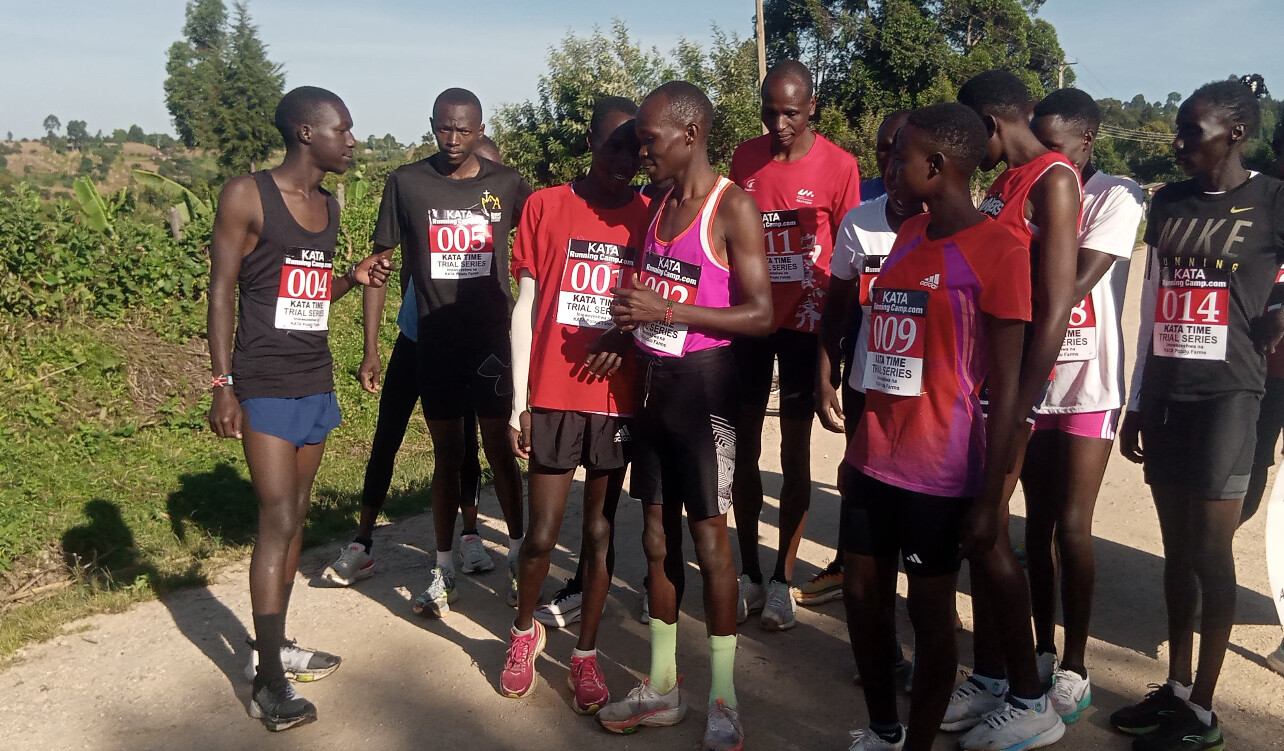
5 KM Men
1. Dennis Kipchirchir — 16:19
2. Evans Kemboi — 16:20
3. Kelvin Kiptoo — 17:20
4. Nahashion Kipkoech — 18:05
5. Alex Kimutai — 18:22
5 KM Women
1. Mercy Jebichi — 19:53
2. Purity Kosgei — 21:10
3. Mercy Jepchumba — 22:51
4. Sarah Jepkemoi — 24:16
10 KM Men
1. Enock Tanui — 32:46
2. Alan Mwetich — 33:53
3. Evans Kipyatich — 35:18
4. Donald Kimaru — 39:09
10 KM Women
1. Beatrice Rutto — 42:14
Coach Philemon Kipruto praised his team’s progress, noting that several athletes recorded personal bests and are showing improved endurance and pacing consistency.
“It’s encouraging to see our athletes push their limits each trial,” said Bob Anderson, Founder and Director of KATA. “Consistency and commitment are the heart of our program. These results show that the Kapcherop camp is on the right path, combining structured training with our KATA Potato Farm support model.”
The Kapcherop camp remains a cornerstone of KATA’s mission — developing world-class runners through disciplined training, nutritional awareness, and sustainable community farming.
(10/15/2025) ⚡AMPby Boris Baron
KATA Time Trial #2 — Kapsait KATA Camp (K24)
At an elevation of 2,500 meters, athletes from the Kapsait KATA Camp (K24) delivered impressive performances during their second official KATA Time Trial. Despite the challenging altitude, the men’s 10K saw a thrilling finish with Cornelius Chepkok narrowly edging Evans Kipruto by less than a second. Both clocked outstanding times just over 29:30.
In the 5K event, Dennis Kosgei led the way with a strong 14:40 run, followed closely by Timothy Kibetand Titus Kiprop, each posting sub-15-minute results — an impressive feat at this elevation.
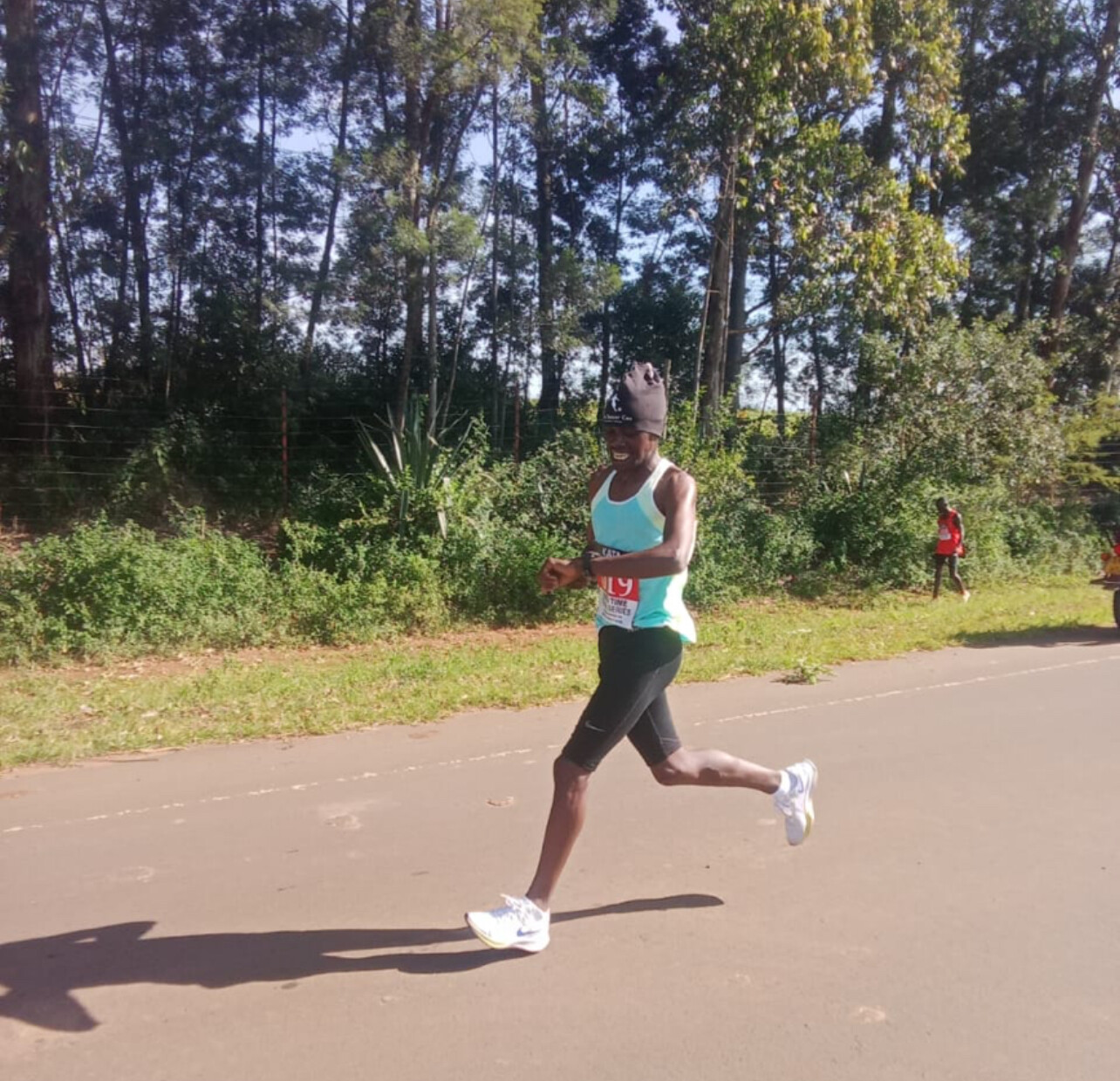
“Our KATA program is about more than just competition — it’s about progress,” said Bob Anderson, KATA Founder and Director. “Each time trial is a chance for our athletes to improve, to measure growth, and to build toward world-class performances. The times achieved at Kapsait today show real strength and determination.”
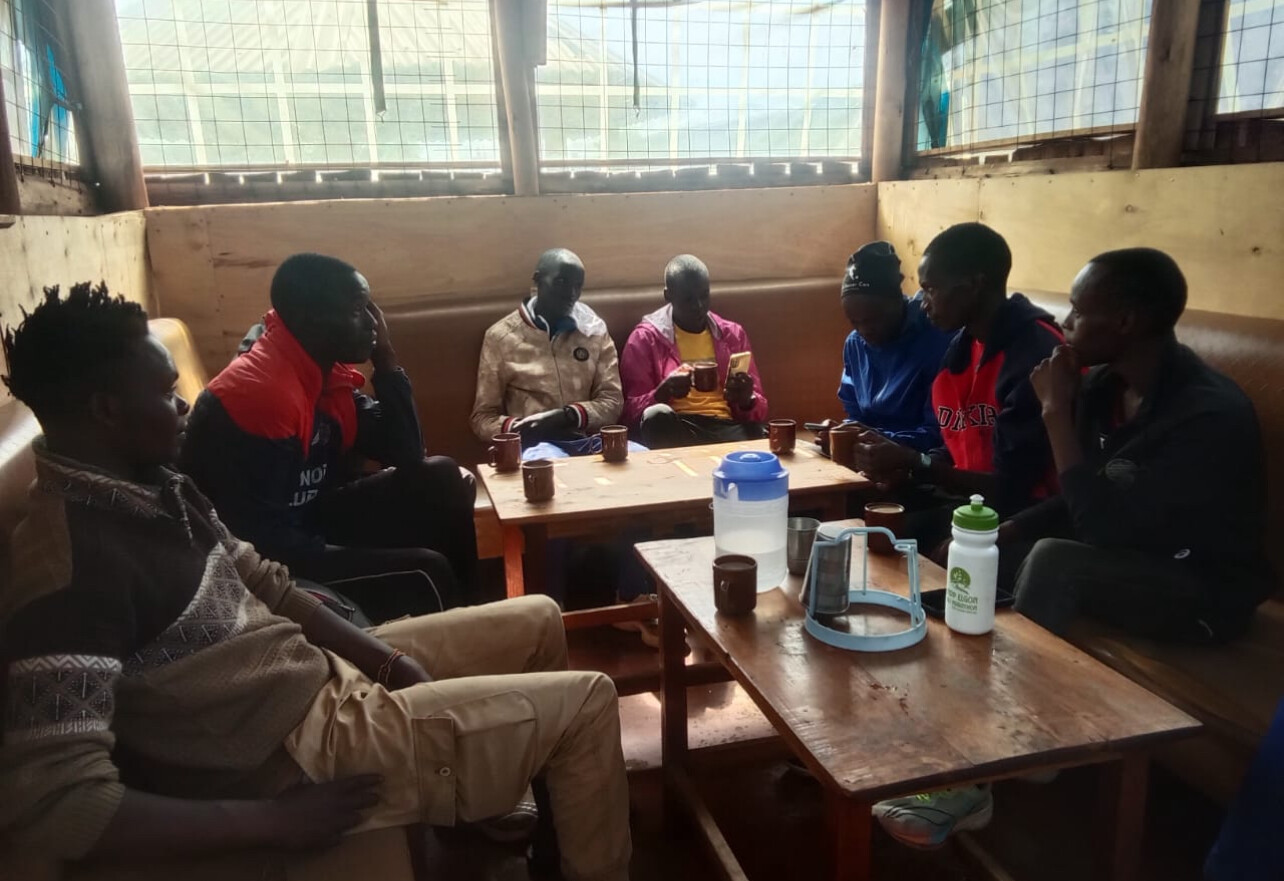
These performances continue to reflect the dedication of Coach Fredrick Kiprotich and his team in developing athletes who are ready to take their training to the next level under the KATA model — combining world-class running with sustainable potato farming.
Date: October 15, 2025
Altitude: 2,500m
Location: Kapsait, Kenya
Coach & Camp Operator: Fredrick Kiprotich
(10/15/2025) ⚡AMP
by Boris Baron
KATA Satellite Time Trial #2 – Tingoro Camp (K26)
KATA’s second Satellite Time Trial brought impressive results from Tingoro Camp (K26) Oct 15 under the leadership of Coach and Camp Operator Benard Rono. Both the women’s 5km and men’s 10km races showcased outstanding individual efforts, steady progress, and several new personal bests.
These results highlight the effectiveness of the KATA system — combining focused athletic training with sustainable farming — as athletes across Kenya continue to grow stronger through dedication and discipline.
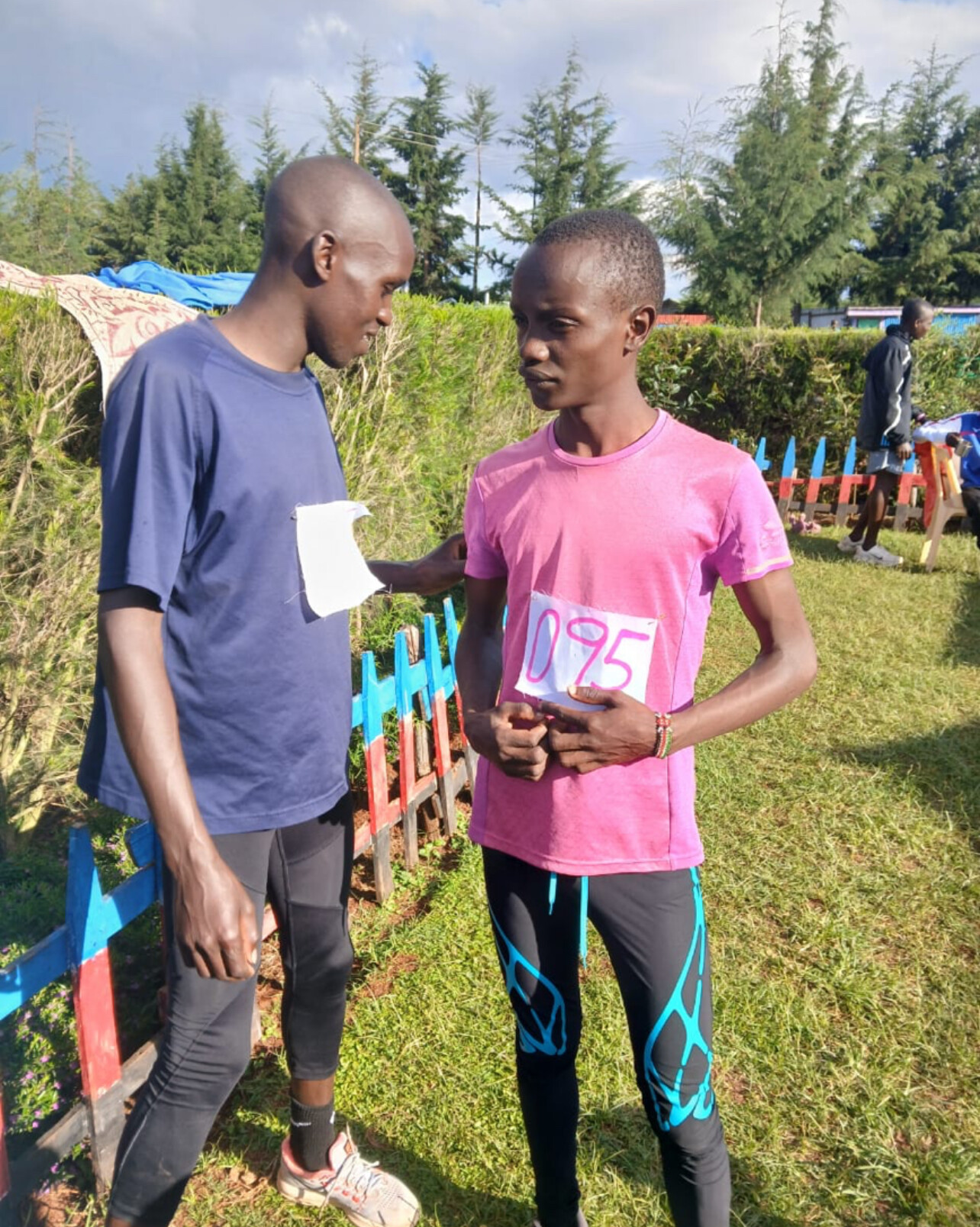
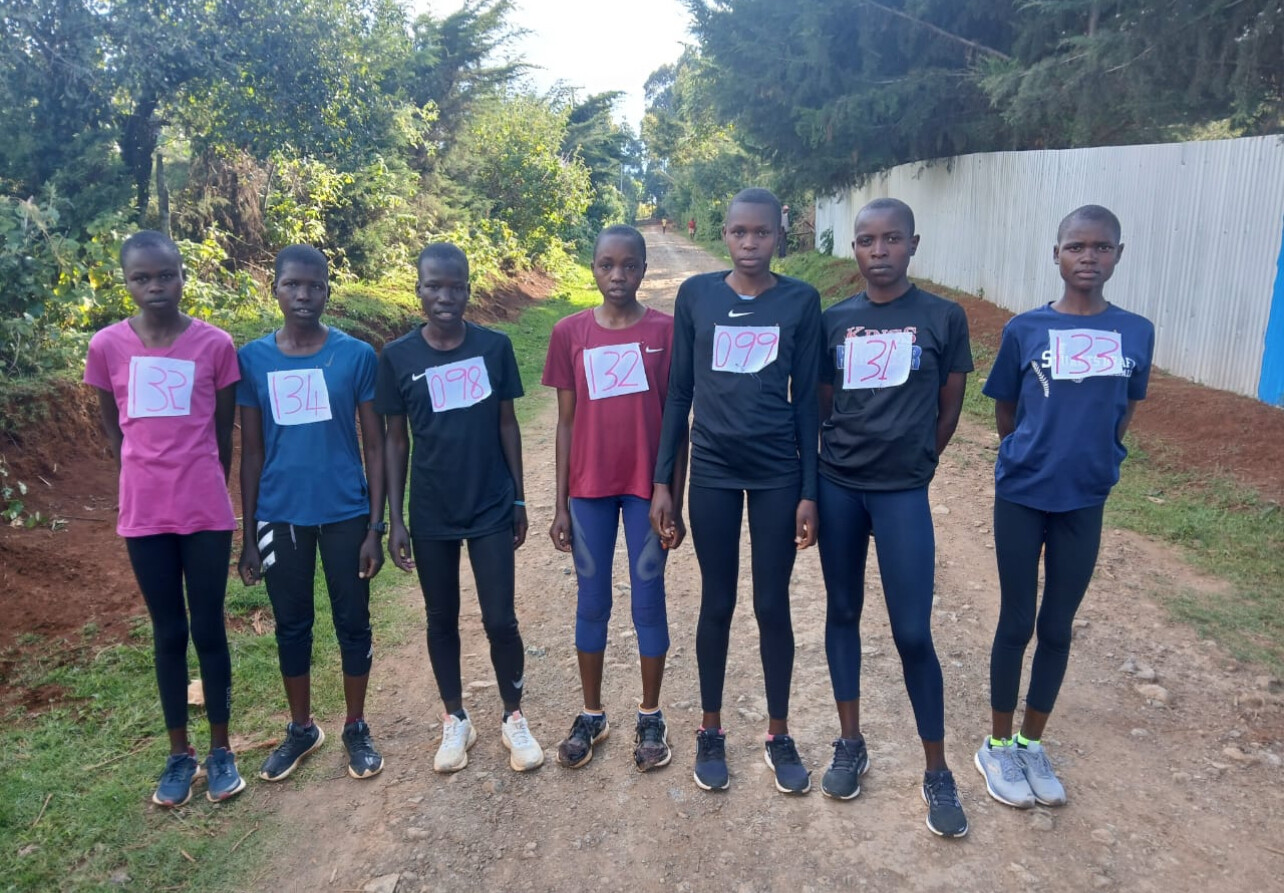
women’s 5k

|
Position |
Name |
Time |
Age |
Camp |
Bib |
|
1 |
Faith Cheplkenei |
16:32.05 |
18 |
Tingoro |
181 |
|
2 |
Linda Chebet |
17:01.55 |
18 |
Tingoro |
099 |
|
3 |
Naomi Wangare |
17:07.77 |
17 |
Tingoro |
098 |
|
4 |
Esther Chepkemoi |
17:17.91 |
19 |
Tingoro |
134 |
|
5 |
Sylvia Cheplelimo |
18:20.34 |
17 |
Tingoro |
132 |
|
6 |
Stella Cheplelimo |
18:24.56 |
17 |
Tingoro |
133 |
|
7 |
Joy Chepkemoi |
— |
— |
Tingoro |
|
Men’s 10k
|
Position |
Name |
Time |
Age |
Camp |
Bib |
|
1 |
Kelvin Kilel |
30:11.12 |
26 |
Tingoro |
036 |
|
2 |
Kelvin Langat |
30:13.49 |
17 |
Tingoro |
095 |
|
3 |
Clinton Kipbet |
30:41.14 |
19 |
Tingoro |
137 |
|
4 |
Shadrack Bett |
31:21.10 |
21 |
Tingoro |
096 |
|
5 |
Silas Longwet |
31:32.71 |
18 |
Tingoro |
093 |
“Each of our KATA camps continues to build a culture of improvement and excellence. The performances at Tingoro today show that our approach is working. Congratulations to all the athletes, and to Coach Benard Rono for guiding the team so well.”
— Bob Anderson, KATA Founder & Director
(10/15/2025) ⚡AMP
by Boris Baron
Personal Bests Shine at KATA Time Trial #49 in Thika
October 15, 2025 | KATA Running Retreat, Thika
While turnout was limited due to Kenya Police recruitment activities and the upcoming National Masters Trials, the KATA Time Trial #49 at the Thika Retreat delivered outstanding performances and a string of new personal bests — a true reflection of dedication and progress among the athletes.
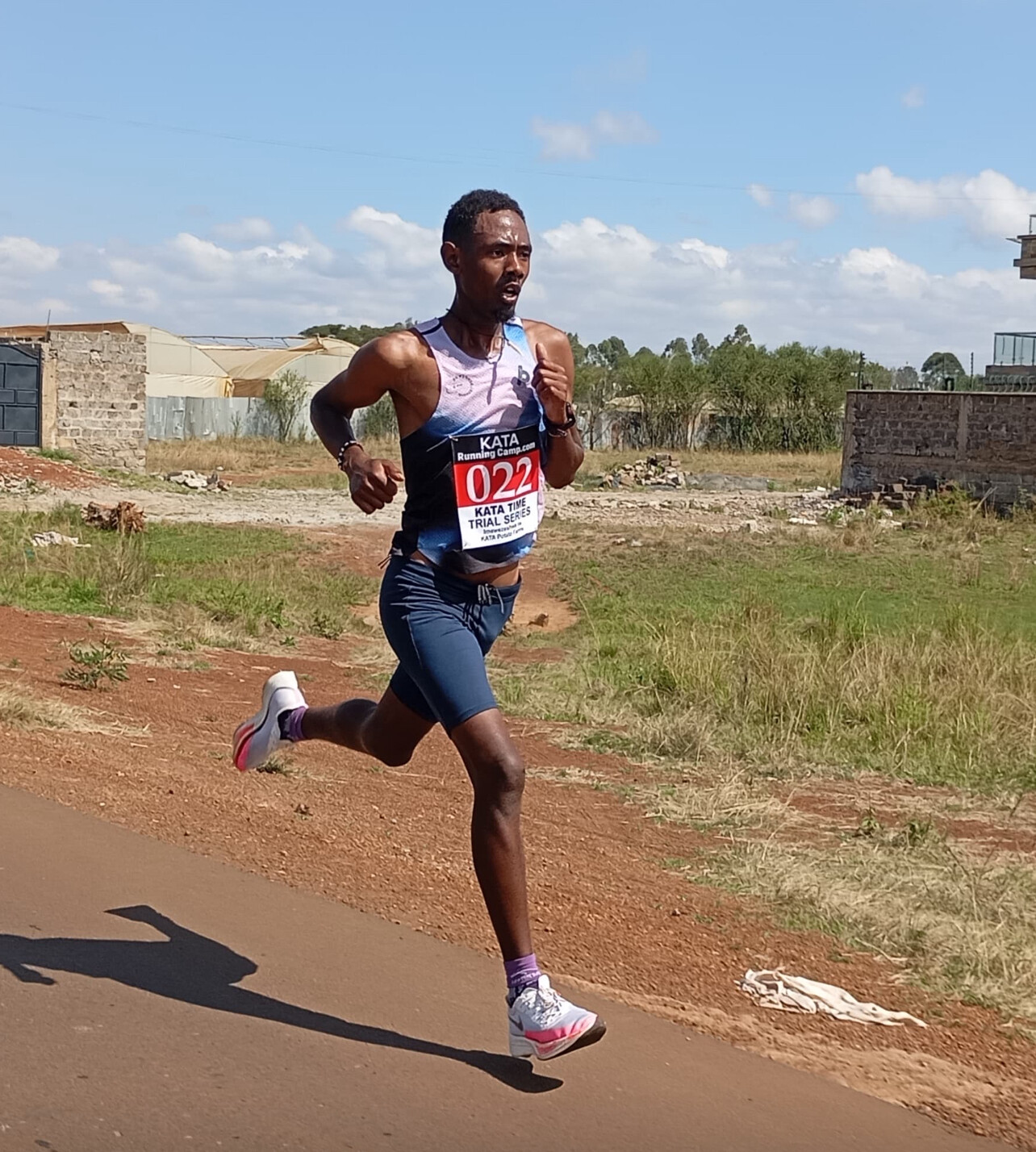
A total of 12 athletes — 8 men and 4 women — lined up for the 10K races, producing inspiring results that showcased the continued strength of the KATA program.
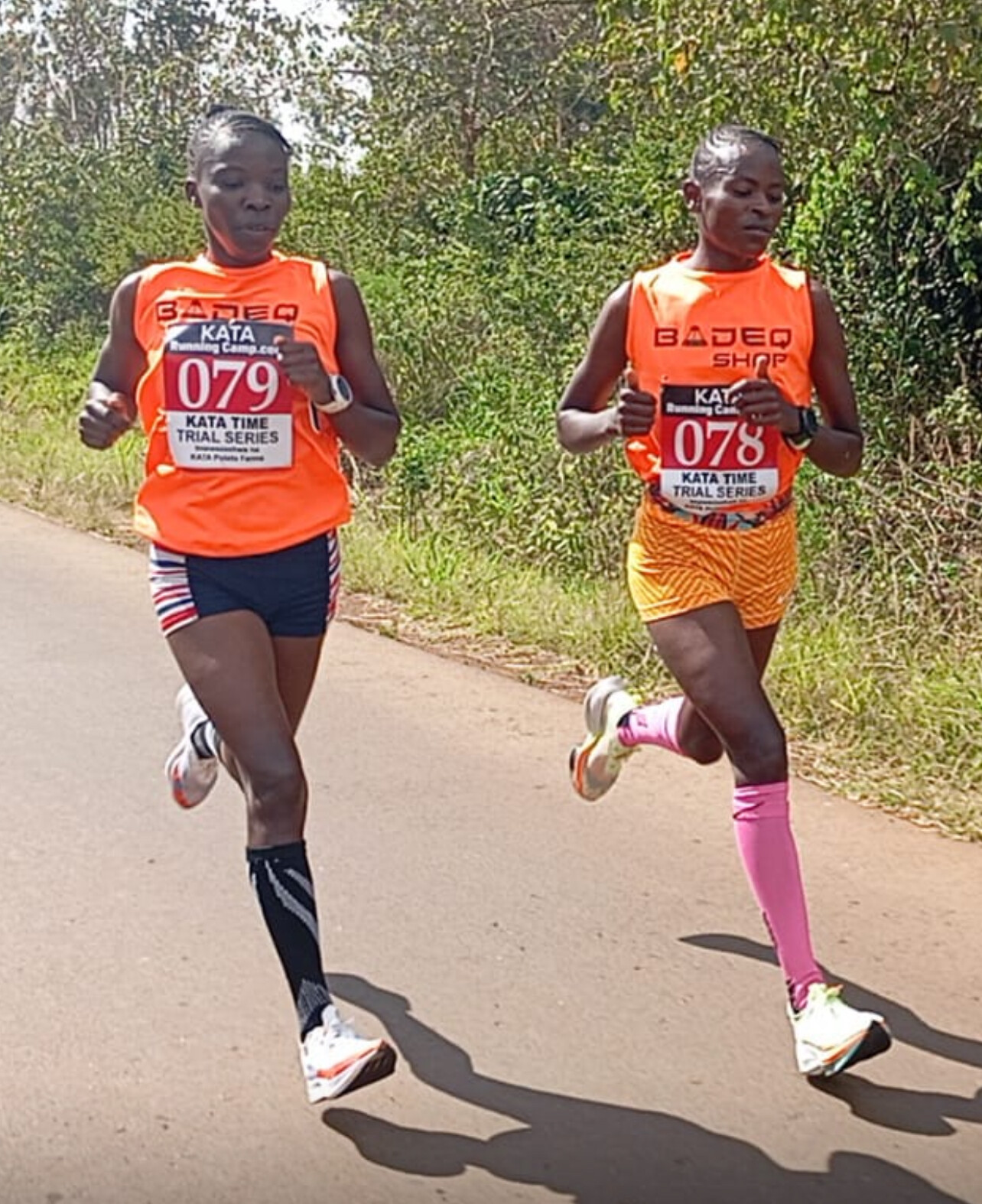
Men’s 10K
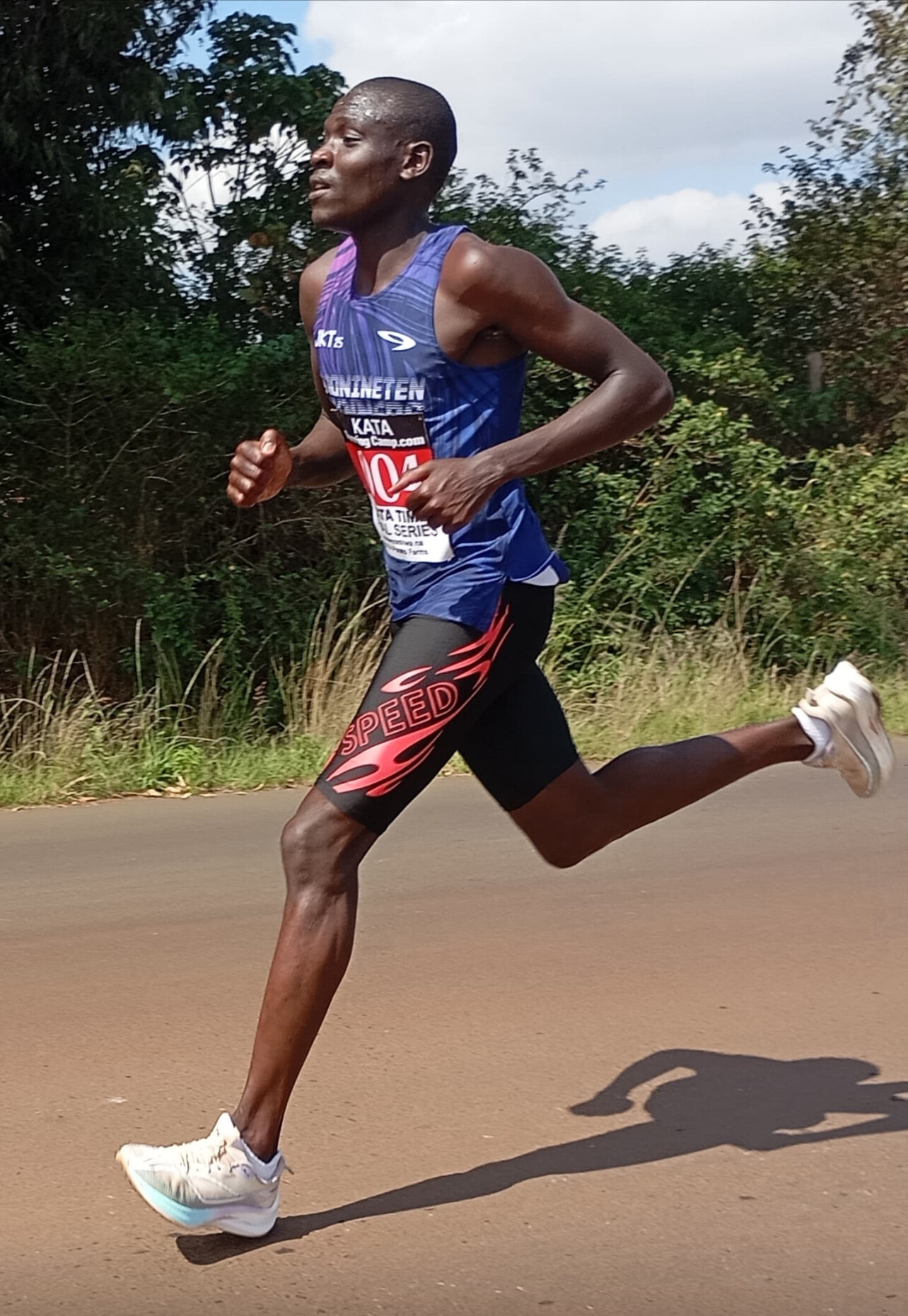
John Chege impressed once again, winning in 29:22, a personal best that lowered his previous time by 20 seconds. Chege, the Thika Camp team leader, said he had targeted a sub-29-minute finish but found himself running solo from the 2 km mark. His coach remains confident that milestone will come soon.
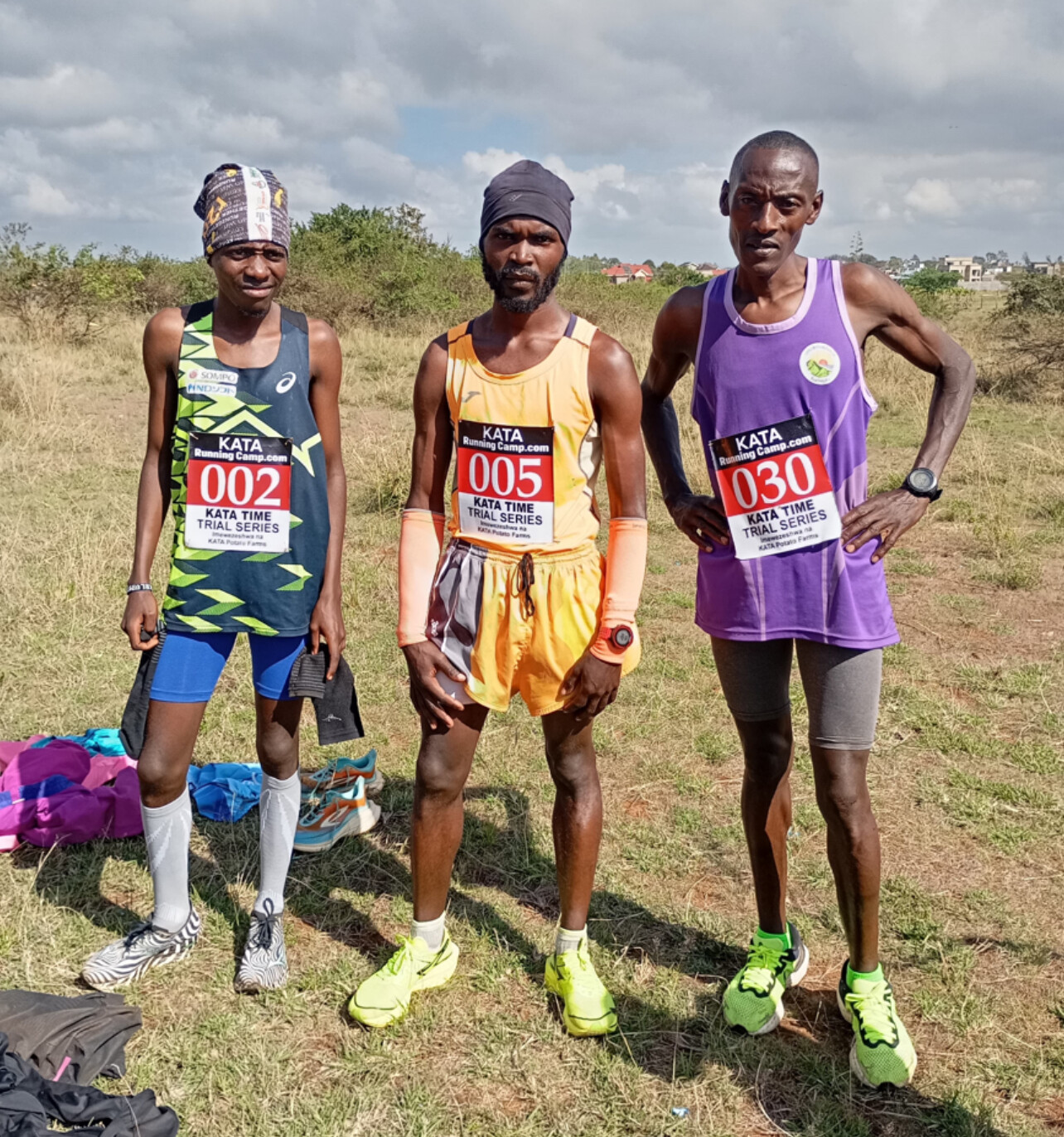
Kelvin Ragui followed in 30:21, with Boniface Mungai rounding out the podium in 30:44. Several athletes achieved season or lifetime bests, marking steady improvement across the men’s field.
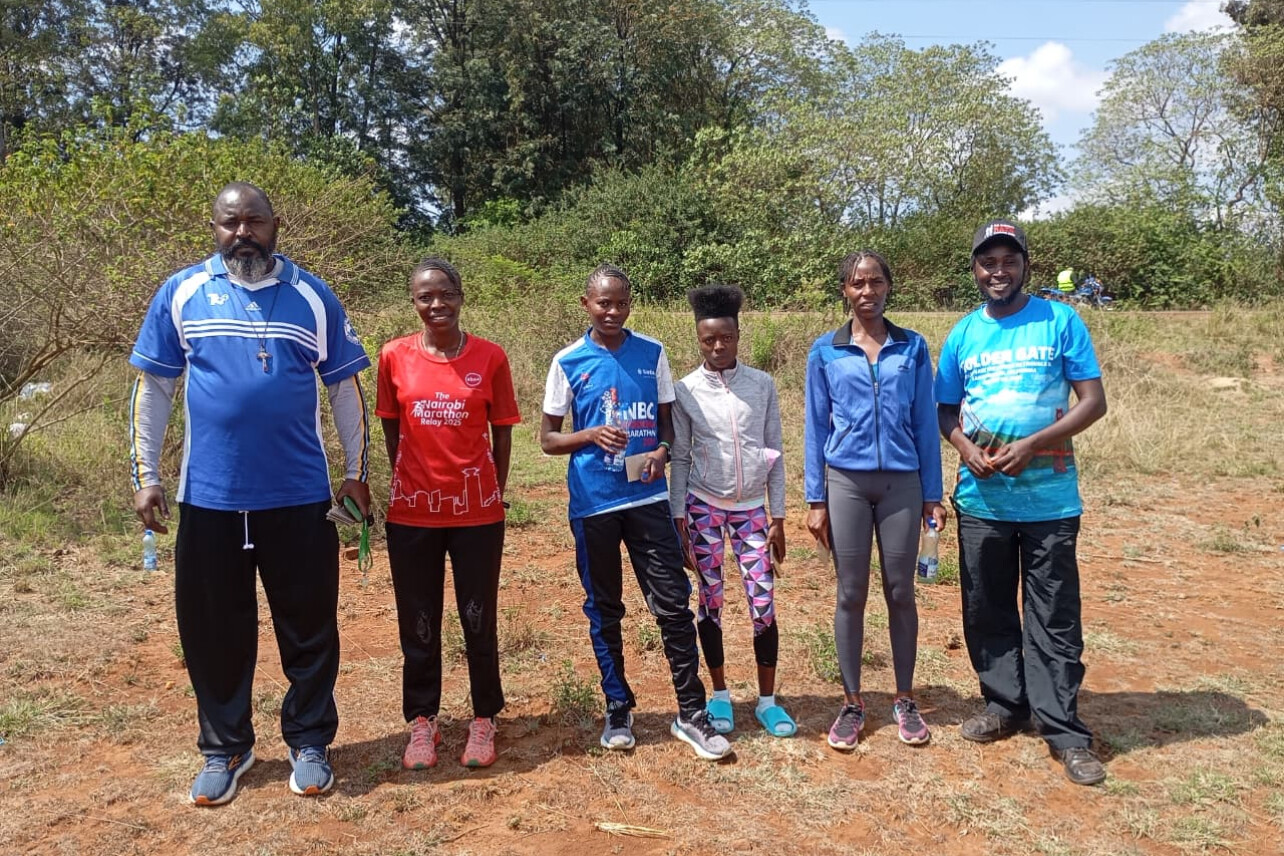
Results – Men’s 10K
1. John Chege (20 22) – 29:22
2. Kelvin Ragui (24 02) – 30:21
3. Boniface Mungai (30 07) – 30:44
4. Joseph Kariuki (39 11) – 31:01
5. Charles Ndirangu (24 04) – 32:40
6. Ishmael Mburu (25 05) – 33:41
7. Paul Nganga (43 30) – 36:16
8. Charles Ndirangu (65 08) – 39:11
Women’s 10K
In the women’s division, Jacinta Kamau delivered a brilliant run, taking victory in 33:45, a new personal best by over a minute. Loise Kiarie was close behind in 34:22, also a personal best. Ruth Maina (38:04) and Agnes Wanjiru (41:15) rounded out the top four with commendable efforts.
Results – Women’s 10K
1. Jacinta Kamau (24 79) – 33:45
2. Loise Kiarie (24 78) – 34:22
3. Ruth Maina (22 80) – 38:04
4. Agnes Wanjiru (20 83) – 41:15
Director’s Message
“It is not always about a volume of runners. Our KATA Time Trial program is about improving your personal bests and clocking season’s bests. And that is what was done in Thika this morning. Well done team.”
— Bob Anderson, KATA Founder & Director
(10/15/2025) ⚡AMPby Boris Baron
KATA Time Trial Series
Welcome to the KATA Monthly Time Trial Held at the Kenyan Athletics Training Academy in Thika, Kenya, the KATA Monthly Time Trial is a unique and inclusive event designed to support runners of all levels in achieving their goals and showcasing their fitness. This event offers both 10K and 5K distances on an accurate, certified course, providing participants with...
more...Chicago’s Marathon Legacy — From Kiptum’s Perfection to Kiplimo’s Power
Two years apart, on the same streets of Chicago, two East African greats delivered marathon performances that will be remembered for generations.
In 2023, Kenya’s Kelvin Kiptum stunned the world with his 2:00:35 world record, a run that redefined endurance and perfection.
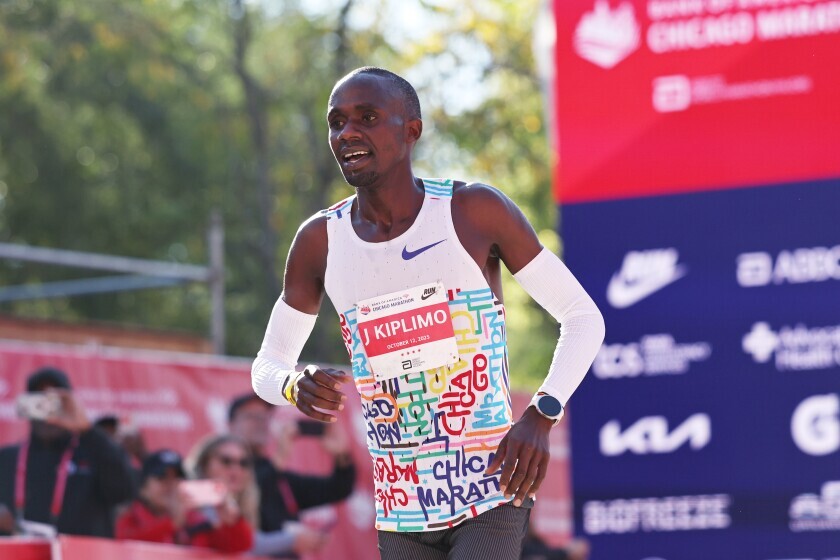
In 2025, Uganda’s Jacob Kiplimo, already the half marathon world record holder, returned to Chicago for his second career marathon and clocked 2:02:23 — his personal best and the seventh-fastest marathon ever run.
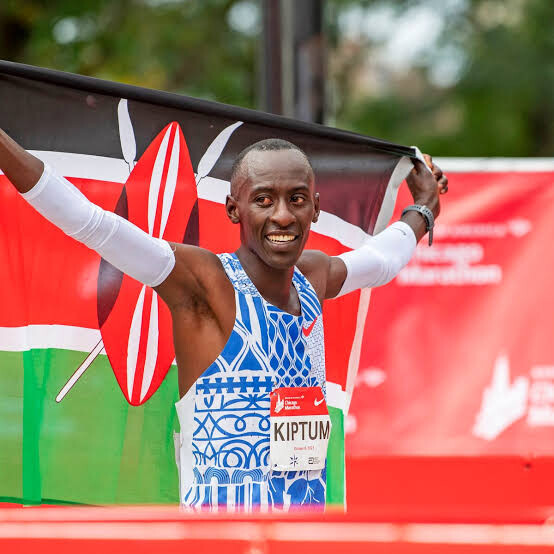
Split by Split — The Chicago Comparison
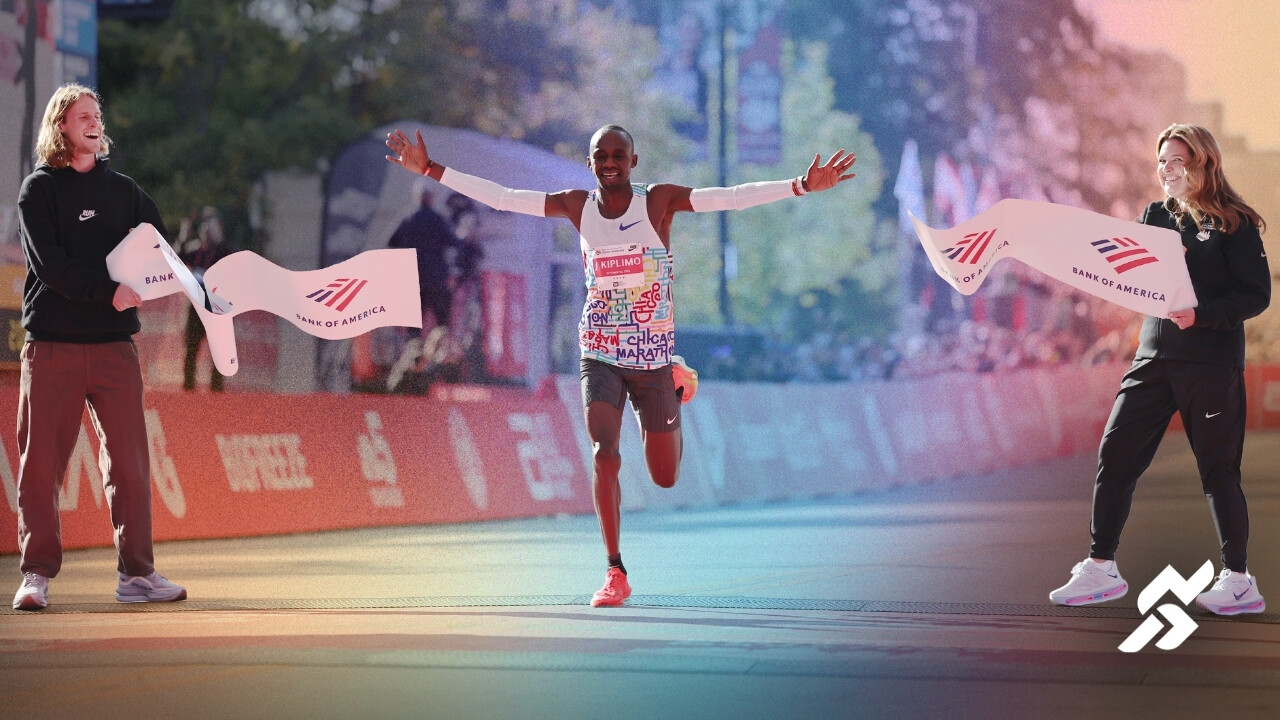
|
Distance |
Kiptum (2023) |
Kiplimo (2025) |
Difference |
|
5 km |
14:26 |
13:58 |
−28 sec |
|
10 km |
28:42 |
28:25 |
−17 sec |
|
15 km |
43:09 |
42:40 |
−29 sec |
|
20 km |
57:39 |
57:05 |
−34 sec |
|
Half |
1:00:48 |
1:00:16 |
−32 sec |
|
25 km |
1:12:04 |
1:11:12 |
−52 sec |
|
30 km |
1:26:31 |
1:25:31 |
−60 sec |
|
35 km |
1:40:22 |
1:39:52 |
−30 sec |
|
40 km |
1:54:23 |
1:55:10 |
+47 sec |
|
Finish |
2:00:35 (World Record) |
2:02:23 |
+1:48 |
How They Ran
Kelvin Kiptum (2023):
Kiptum ran one of the most perfectly executed marathons in history. After a steady opening half in 1:00:48, he unleashed a ferocious negative split of 59:47, the fastest second half ever recorded. His closing 10K in 27:52 sealed a new world record and forever changed how we think about the marathon.
Jacob Kiplimo (2025):
After finishing second in his marathon debut at the 2025 London Marathon, Kiplimo arrived in Chicago more prepared — and fearless. From the start, he attacked the course, opening in 13:58 for 5K, the fastest ever in Chicago. Through 30K, he was over a minute ahead of Kiptum’s world-record pace. Although he slowed slightly in the final 10K, his 2:02:23 finish was the fastest ever by an Ugandan and the 7th-fastest marathon in history.
âš–ï¸ The Contrast
• Strategy: Kiptum’s patience vs. Kiplimo’s aggression.
• Halfway: Kiplimo led by 32 seconds at 21.1K.
• Closing Power: Kiptum’s final 7K (13:51 split) remains unmatched.
• Outcome: Kiplimo’s performance wasn’t a world record, but it confirmed his place among the greatest marathoners of his generation.
Legacy and Continuation
Tragically, Kelvin Kiptum was killed in a car accident in Kenya in February 2024, just months after his world-record run. His passing shocked the running world and ended the career of a man many believed would one day break two hours on a record-eligible course.
When Jacob Kiplimo returned to Chicago in 2025, it felt like a continuation of that story — a symbolic passing of the torch. Running on the same course where Kiptum made history, Kiplimo carried forward the East African legacy of excellence, courage, and speed.
Final Thoughts
Kiptum’s 2:00:35 remains the marathon’s gold standard — calm, controlled, and utterly brilliant.
Kiplimo’s 2:02:23 showed fearless front-running and a promise of what’s still to come.
Two men. Two races. One city.
Chicago — where the modern marathon’s greatest chapters continue to be written.
- - -
The 9 Fastest Men’s Marathons of All Time (as of Oct 13, 2025)
|
Rank |
Name |
Time |
Venue |
|
1 |
Kelvin Kiptum (KEN) |
2:00:35 |
Chicago 2023 |
|
2 |
Eliud Kipchoge (KEN) |
2:01:09 |
Berlin 2022 |
|
3 |
Kenenisa Bekele (ETH) |
2:01:41 |
Berlin 2019 |
|
4 |
Sisay Lemma (ETH) |
2:01:48 |
Valencia 2023 |
|
5 |
Sebastian Sawe (KEN) |
2:02:05 |
Valencia 2024 |
|
6 |
Benson Kipruto (KEN) |
2:02:16 |
Tokyo 2024 |
by Bob Anderson
Kenyans Matata and Rengeruk Capture Titles at Vedanta Delhi Half Marathon
Abhishek Pal and Seema Yadav lead Indian runners
New Delhi, October 12, 2025 — Kenya’s Alex Nzioka Matata and Lilian Kasait Rengeruk delivered commanding performances to sweep the men’s and women’s crowns at the 20th Vedanta Delhi Half Marathon, a World Athletics Gold Label event. It marked only the second Kenyan double in race history, the first coming in 2006.
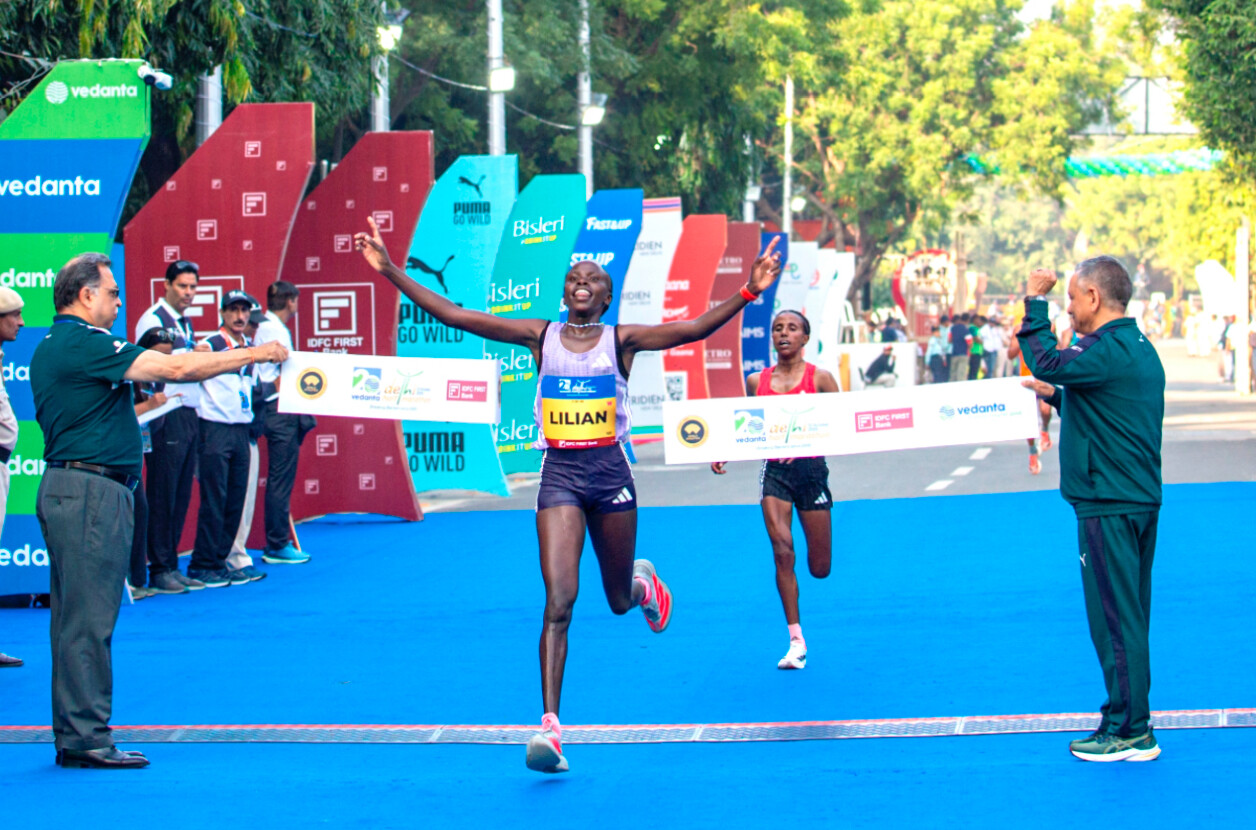
Matata, runner-up in 2024, dominated from midway, running solo to victory in 59:50, his fifth half-marathon win of the year. The RAK Half Marathon champion, who boasts a 59:20 personal best, led through 10K in 28:43 alongside compatriot Reuben Rono before breaking clear. Ethiopia’s Bayelign Teshager (1:00:22) and Kenyan James Kipkogei (1:00:25) completed the podium.
“Last year I was number two, so my goal was to do better,” Matata said. “The weather was good, I knew the course, and I ran without pressure—just to win.”
In the women’s race, Rengeruk used her experience to outkick Ethiopia’s 19-year-old Melal Biratu in a thrilling sprint, clocking 1:07:20 to win by one second. Fellow Ethiopian Mulat Tekle took third in 1:07:28. The 2023 champion Alemaddis Eyayu finished seventh (1:10:51).
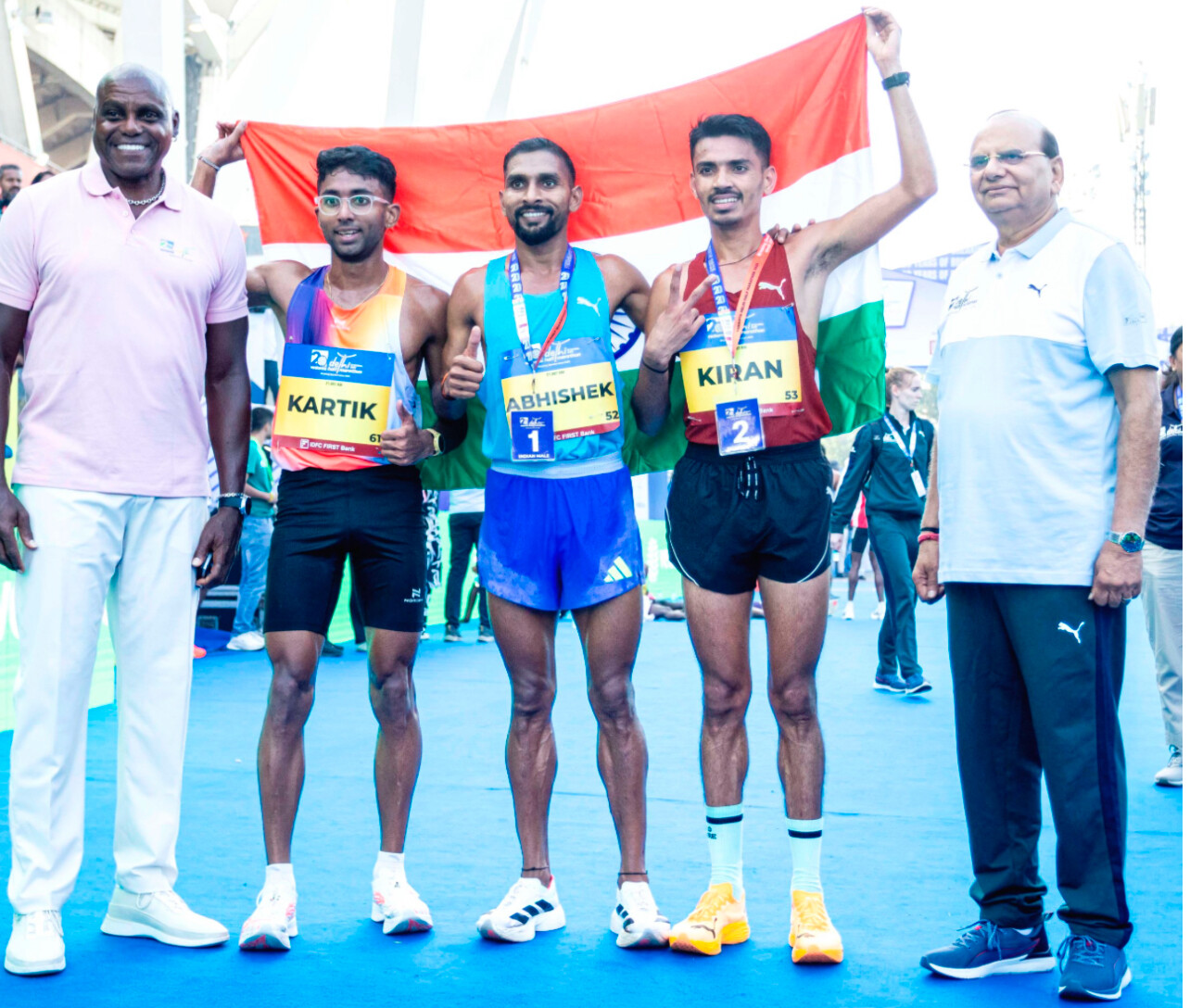
“It was tough, but I felt strong and told myself to stay patient and fight to the finish,” said Rengeruk, who recently returned from injury.
Biratu, pleased with her debut effort, added: “The humidity was higher than expected, but I’m happy with my personal best.”
Both winners earned US$27,000 from a total prize purse of US$260,000.
(10/12/2025) ⚡AMPVedanta Delhi Half Marathon
The Airtel Delhi Half Marathon is a haven for runners, creating an experience, that our citizens had never envisaged. The streets of Delhi converted to a world-class running track. Clean, sanitized road for 21.09 kms, exhaustive medical support system on the route, timing chip for runners, qualified personnel to ensure smooth conduct of the event across departments. The race...
more...Conner Mantz Breaks American Record as Kiplimo and Feysa Capture Chicago Marathon
The 2025 Bank of America Chicago Marathon delivered one of the most thrilling editions in its storied history on Sunday, October 12. Under cool, calm conditions ideal for fast running, Conner Mantz not only etched his name into American distance running history but did so amid dominant victories by Jacob Kiplimo and Hawi Feysa on the world stage.
Mantz Makes U.S. Marathon History
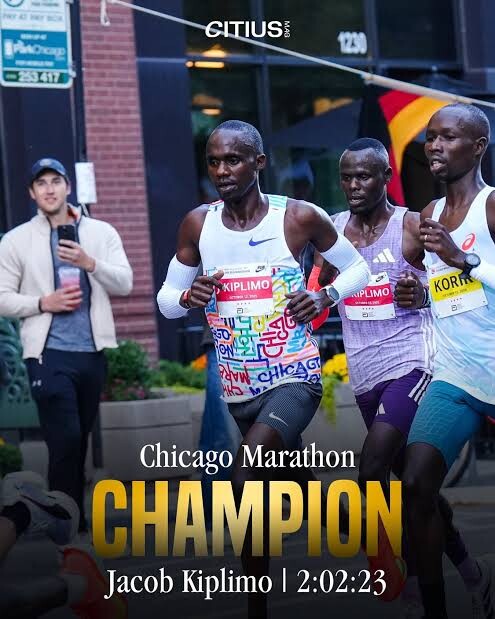
American marathon fans have waited more than two decades for this moment. Running with remarkable composure and confidence, Conner Mantz clocked an astonishing 2:04:43, smashing the long-standing U.S. men’s record of 2:05:38 set by Khalid Khannouchi in 2002—ironically, also in Chicago.
Mantz placed fourth overall in a deep international field but was the clear headline story for American distance running. The record capped off a remarkable season that already included a U.S. half-marathon record (59:17 in Houston) and a strong 2:05:08 run in Boston earlier this year.

“This has been my goal since I first ran Chicago,” Mantz said after the race. “To come back here and do it—it’s a dream realized.”
His coach, Ed Eyestone, called it “a masterclass in discipline and pacing,” noting that Mantz hit every target split almost to the second.
Kiplimo Commands the Men’s Race
While Mantz captured American hearts, Uganda’s Jacob Kiplimo controlled the overall competition from start to finish. The world half-marathon record holder surged decisively at 30 kilometers and never looked back, winning in 2:02:23—the fastest time ever run on U.S. soil.
Kenya’s Amos Kipruto finished second in 2:03:54, and compatriot Alex Masai placed third in 2:04:37, rounding out a podium that showcased both experience and emerging talent.
Kiplimo’s victory solidifies his status as one of the sport’s brightest stars, adding a major-marathon title to his growing résumé that already includes world titles in the half marathon and cross country.
Feysa Dominates Women’s Field
In the women’s race, Ethiopia’s Hawi Feysa claimed her biggest career win in spectacular fashion. She broke away in the final 10 kilometers to take the title in 2:14:56, a personal best by more than two minutes.
Feysa’s countrywoman Megertu Alemu took second in 2:17:18, while Magdalena Shauri of Tanzania earned third in 2:18:03. Feysa’s victory margin and commanding finish underscored her potential as a future global contender.
“I felt strong all the way,” she said afterward. “Today, Chicago gave me my best race.”
A Day for the Record Books
The 47th edition of the Chicago Marathon reaffirmed the city’s status as one of the fastest marathon courses in the world. With ideal weather, roaring crowds, and a record-breaking performance by Conner Mantz, the event once again proved to be a defining stage for greatness.
For Mantz, the day marked not just a new national standard but a signal to the world that American marathoners are back in the global conversation.
As he crossed the finish line, arms raised in disbelief, it was clear: October 12, 2025, will be remembered as the day an American finally ran with—and among—the very best.
(10/12/2025) ⚡AMPby Boris Baron
Bank of America Chicago
Running the Bank of America Chicago Marathon is the pinnacle of achievement for elite athletes and everyday runners alike. On race day, runners from all 50 states and more than 100 countries will set out to accomplish a personal dream by reaching the finish line in Grant Park. The Bank of America Chicago Marathon is known for its flat and...
more...Jackson Spencer Shatters 18-Year-Old Woodward Park Record with 14:16 Run
A new era in high school cross country has arrived. On October 11, 2025, at the ASICS Clovis Invitational in Fresno, California, Jackson Spencer of Utah delivered one of the most extraordinary performances in prep distance running history—clocking an astonishing 14:16 to break the revered Woodward Park course record.
For 18 years, the 14:24 mark set by German Fernandez in 2007 had stood as the gold standard of high school cross country excellence. Fernandez’s time, achieved while representing Riverbank High, seemed untouchable—a performance that became legend. Yet Spencer, racing fearlessly from the start, made the impossible look effortless.
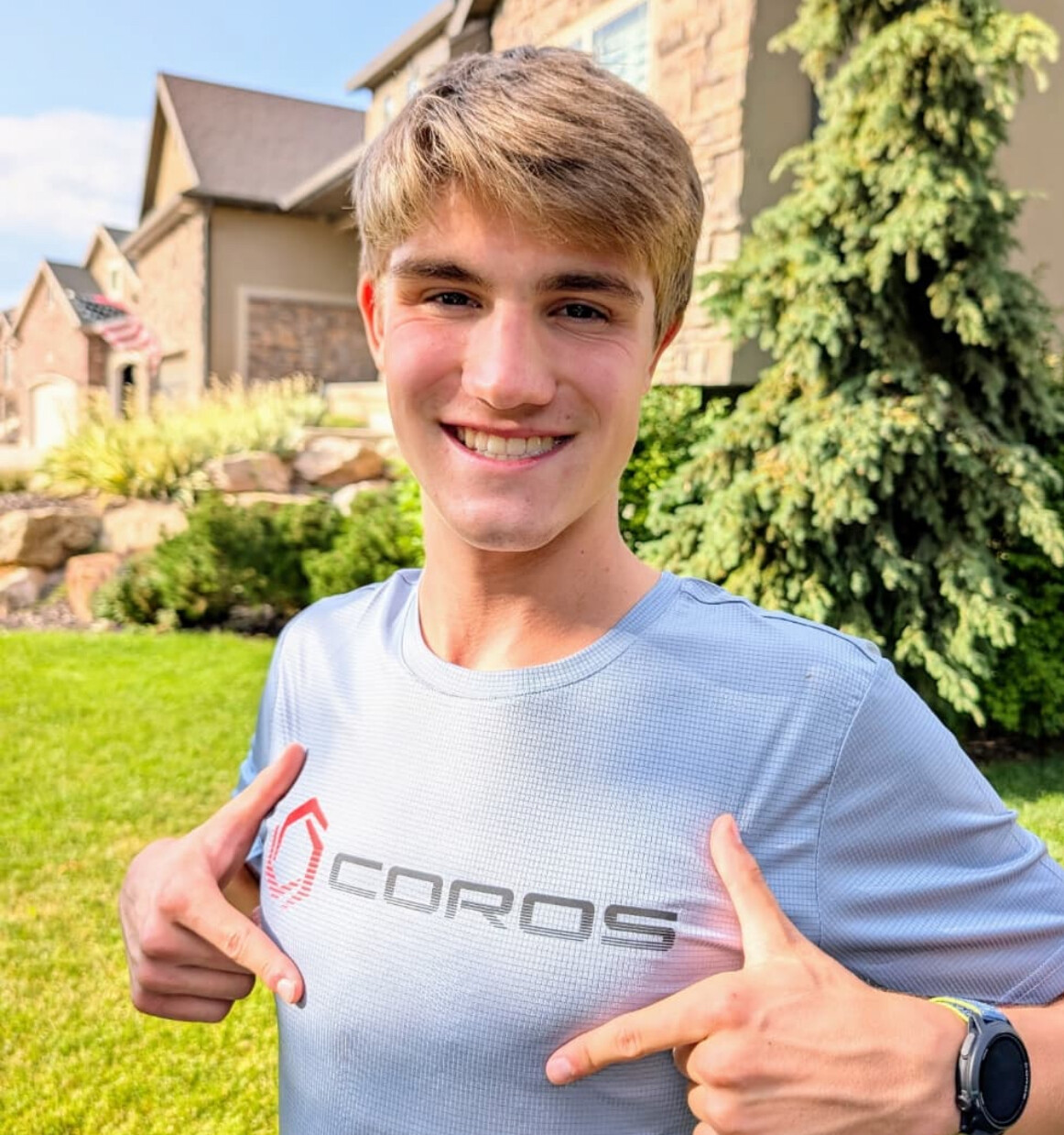
A Race for the Ages
On the cool Fresno morning, Spencer attacked the 5K course with precision and poise. He surged early to establish control, floated through the rolling middle mile, and powered up the final hill with clear intent. As he charged toward the finish, the crowd roared—the clock stopped at 14:16, a full eight seconds faster than one of the most celebrated records in California cross country history.
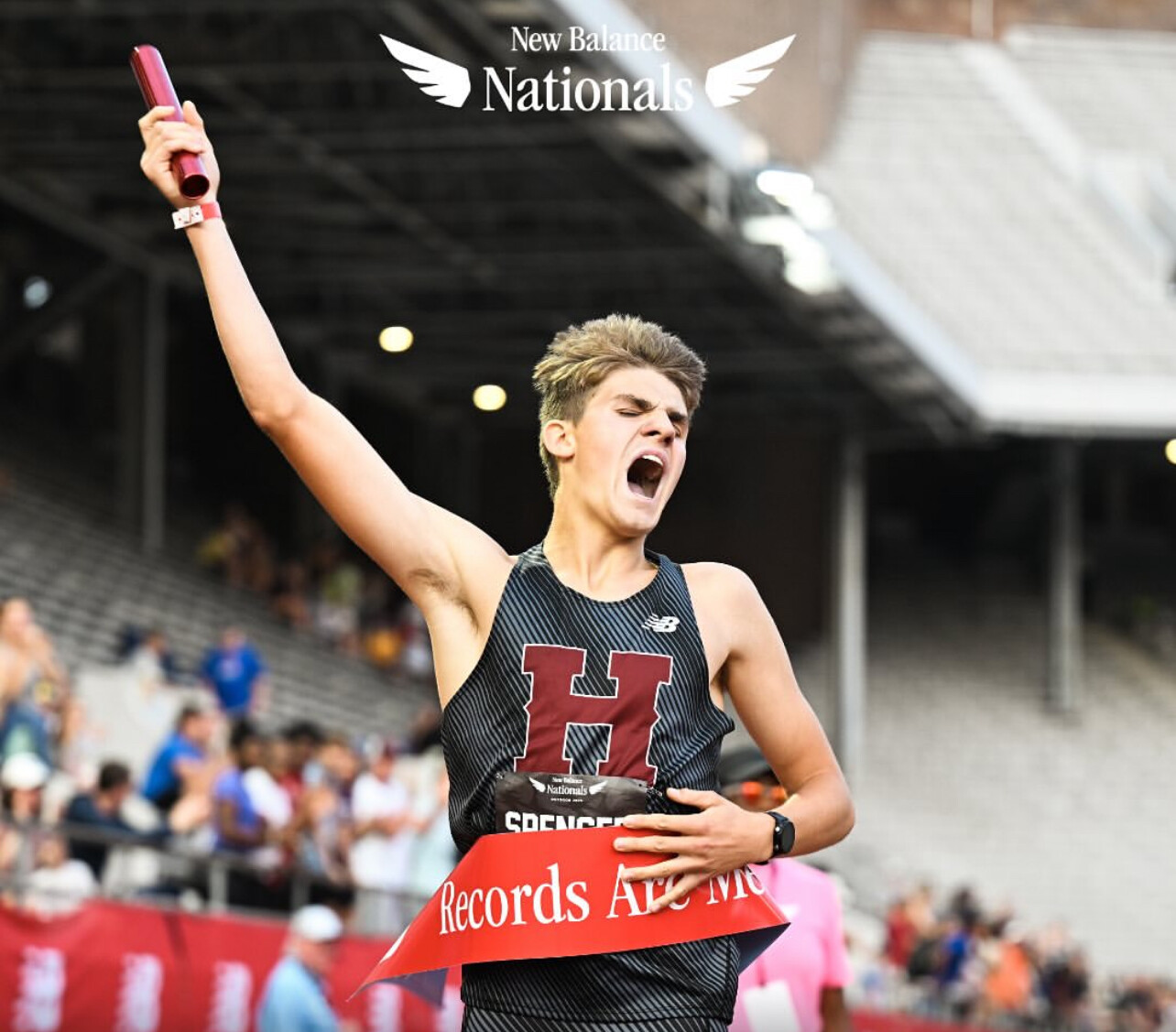
“This course has seen some of the best runners in the nation,” said one longtime coach. “But today, Jackson Spencer did something truly historic. You could feel it—this was a special run.”

The Legacy of Woodward Park
Woodward Park is not known for being easy. Its undulating terrain, challenging final climb, and tight turns have tested generations of champions. To go under 14:30 is rare; to break 14:20 is almost unthinkable. That’s why Fernandez’s record endured for nearly two decades.
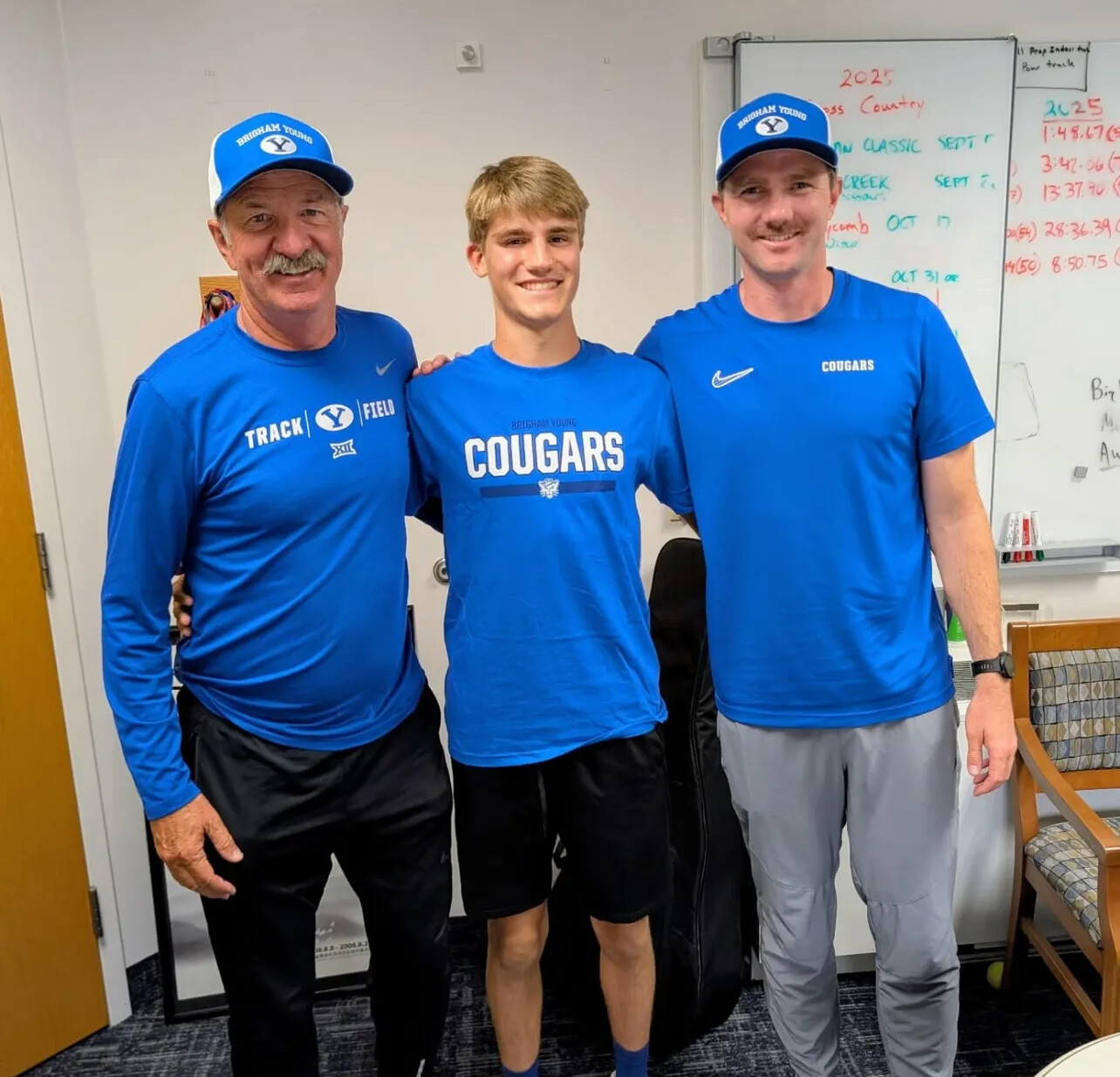
Spencer’s new standard now joins the short list of monumental high school performances—proof that talent, discipline, and courage still redefine what’s possible on the trails of Fresno.
A New Benchmark
With this record-breaking run, Jackson Spencer has cemented his name among the greats of American high school distance running. As the postseason approaches, all eyes will be on the young runner from Utah to see just how far he can go.
One thing is certain: on October 11, 2025, at Woodward Park, history was rewritten.
(10/11/2025) ⚡AMPby Boris Baron
Meb Keflezighi: “The Stars May Align for Conner Mantz in Chicago”
As the running world turns its eyes toward the 2025 Chicago Marathon, American marathon legend Meb Keflezighi has shared a heartfelt message of support for rising U.S. star Conner Mantz—and a bold prediction.
“I am looking forward to seeing what Conner Mantz is going to do this weekend in Chicago,” Meb wrote on Facebook. “I believe it will be a special day for him, and if the stars align, we will have a new American record holder for the marathon when he crosses the finish line.”
The American men’s marathon record of 2:05:38, set by Khalid Khannouchi at the 2002 London Marathon, has stood for over two decades—a mark that was once the world record. Meb acknowledged the magnitude of the challenge but expressed full faith in Mantz’s ability and momentum.

Keflezighi also reflected on his long friendship with Mantz, noting they first met when Conner was still in high school competing at the Foot Locker Cross Country Championships.
“Conner and I have become good friends over the past few years,” Meb shared. “He once told me I was his dad’s favorite marathoner, and these days I am happy to be second in his book!”
Support for the Field and Team HAWI
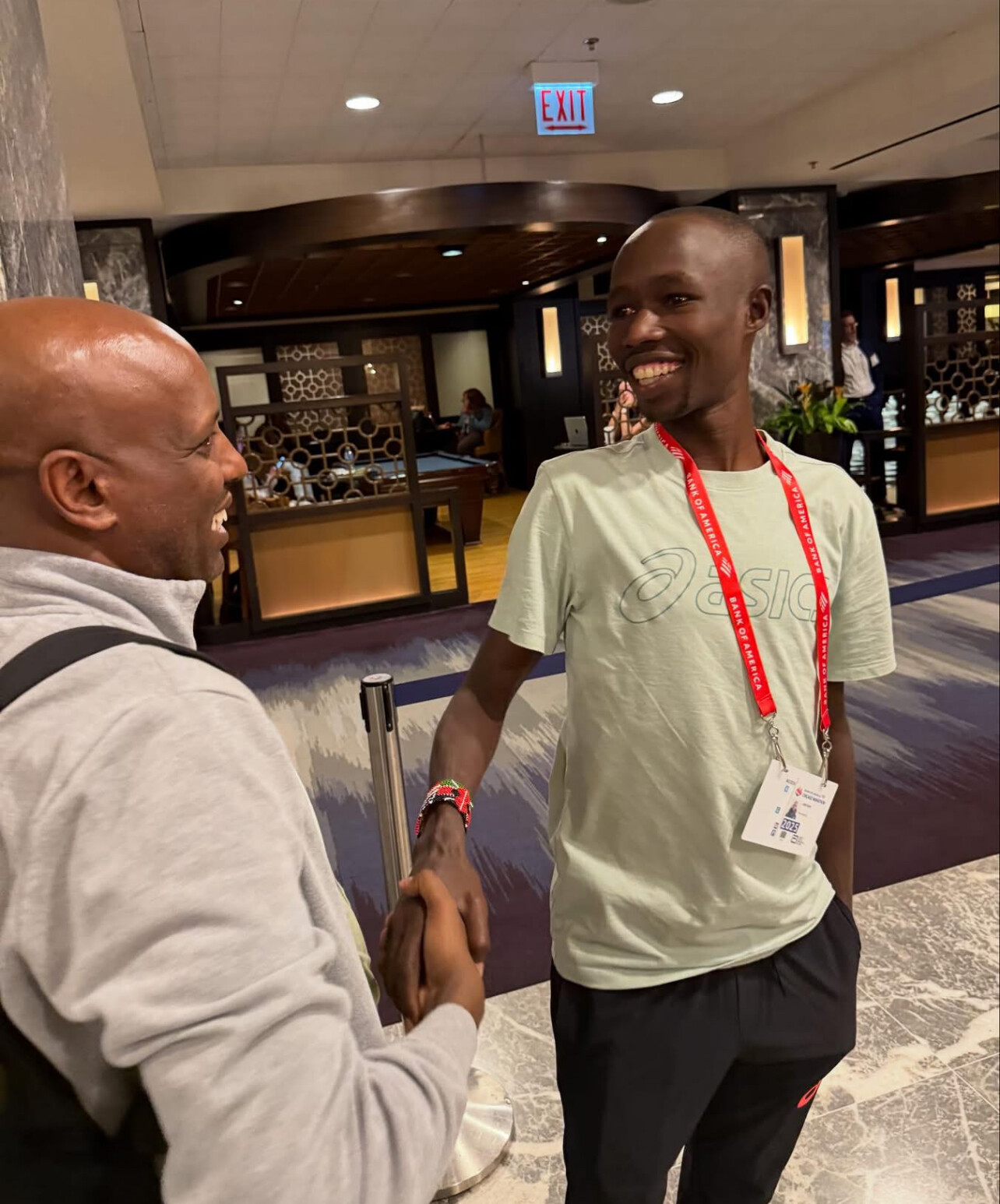
Meb extended his encouragement to the entire elite field, especially John Korir, last year’s Chicago champion and the 2025 Boston Marathon winner.
“It’s hard to win back-to-back,” he wrote, “but John is a special athlete and I’m excited to see what he can do.”
Keflezighi also gave a proud shout-out to his brother Hawi Keflezighi, who represents nine elite athletes racing in Chicago under Team HAWI Management.
“We Are All Sharing the Same Road”
Meb closed with a message that captures the spirit of the marathon and why he continues to inspire runners of all levels.
“To everyone running the Chicago Marathon this weekend, remember, the beauty of sport is that we are all sharing the same road and taking on those 26.2 miles together. I hope you all have a great experience on the streets of Chicago.”
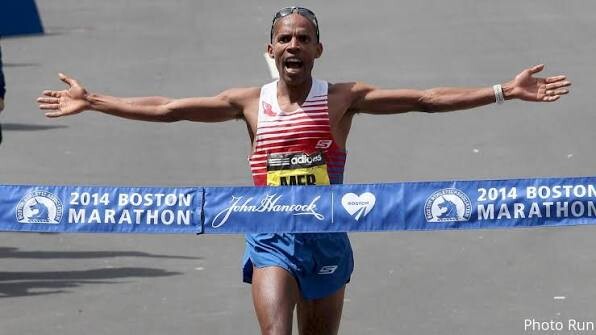
Photo: Meb Keflezighi, Olympic medalist and Boston Marathon champion, cheering on the next generation.
(10/10/2025) ⚡AMPby Bob Anderson
Kelvin Kiptum: The Man Who Ran Into History and Never Returned
It’s been exactly one year since Kelvin Kiptum did what many believed was impossible — he shattered the marathon world record in Chicago, stopping the clock at 2:00:35.
On October 8, 2023, the 23-year-old Kenyan didn’t just win a race — he redefined the limits of human endurance.
As the world prepares for this year’s Chicago Marathon, it’s impossible not to feel the silence he left behind.

That crisp Sunday morning, Kiptum delivered a performance that stunned the running world. Gliding through Chicago’s streets with unrelenting rhythm, he dropped the field, surged mile after mile, and erased Eliud Kipchoge’s seemingly untouchable world record of 2:01:09 by 34 seconds.
It was only his third marathon. He had never lost one.
Chicago had seen greatness before — but never like this.

And then, just months later, he was gone.
In February 2024, Kiptum and his coach, Gervais Hakizimana, were killed in a car crash on a quiet road in Kenya. The sport lost more than a record-breaker; it lost a phenomenon — a man who seemed destined to become the first human to run under two hours in an official race.
That dream — carried in Kiptum’s quiet confidence and thunderous stride — vanished that night. His record, ratified only days before his death, stands as both a triumph and a tombstone.
But legends don’t end with tragedy — they echo.
As the 2025 Chicago Marathon approaches, the course remembers. Every stretch of asphalt, every cheer from the crowd, every runner chasing a personal best this weekend — they all run in the shadow of Kiptum’s greatness.
Because Kelvin Kiptum didn’t just run a race.
He ran into history — and never returned.

His Legacy Lives On
Across Kenya and beyond, his story continues to inspire a new generation of runners — from the dirt roads of the Rift Valley to the streets of Chicago, Boston, and Berlin. Athletes like Benson Kipruto, Evans Chebet, and countless others now carry his fire forward, chasing their own dreams with the same fearless rhythm that once shook the marathon world.
Kelvin Kiptum’s stride may have stopped, but his impact will keep moving — every time someone dares to believe that impossible is only a pace away.
(10/09/2025) ⚡AMPby Boris Baron
The Windy City Awaits: Who Will Write the Next Chapter of Chicago’s Marathon Magic?
All eyes will be on Grant Park this Sunday, as the 47th Bank of America Chicago Marathon ushers in another chapter in the city’s storied marathon legacy. Known for its flat, fast terrain and unforgiving margins, Chicago has become a proving ground where legends are made—and in 2025, the stage is again set for brilliance.
Course & Records: Anchors of Expectation
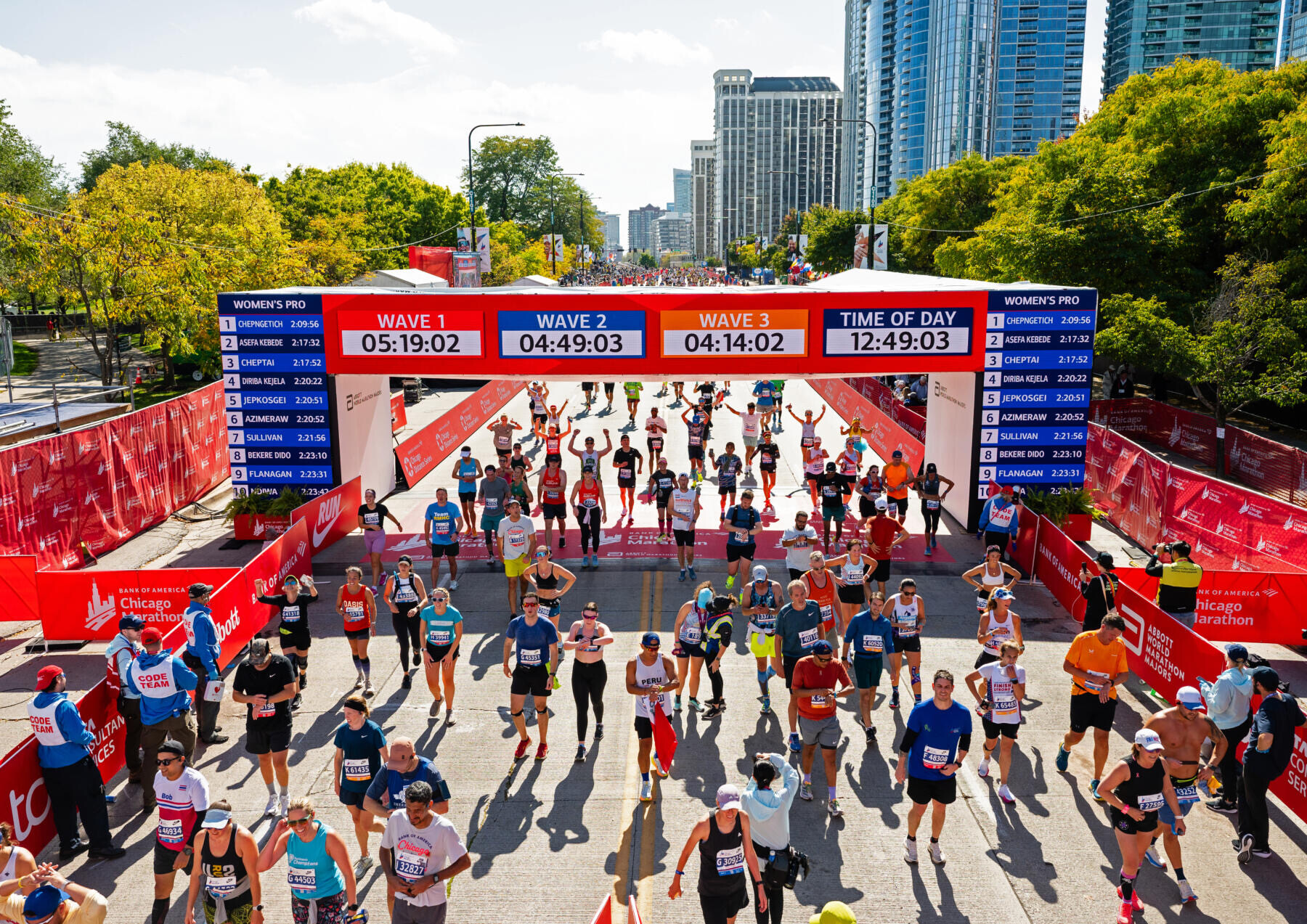
Chicago is no stranger to history. It is here that Kelvin Kiptum set the men’s world record of 2:00:35 in 2023.
On the women’s side, Ruth Chepngetich broke the world record with a stunning 2:09:56 in 2024.
These records are constant reminders of what’s possible on Chicago’s streets.
Africa’s Power Surge
The men’s field overflows with elite contenders. Reigning champion John Korir (PB 2:02:44 in Chicago 2024) returns after a dominant Boston win, aiming to defend in style.
He’s flanked by Timothy Kiplagat (2:02:55), Amos Kipruto (2:03:13), and Cybrian Kotut (2:03:22).
Uganda’s half-marathon world record holder Jacob Kiplimo (PB 2:03:37) makes another full marathon attempt with major expectations.
Ethiopia counters with Huseydin Mohamed Esa (2:04:39) and other seasoned performers, keeping the East African narrative strong.
Women’s Field: Depth, Debuts & Tactics
In the women’s race, Ethiopia’s depth dominates. Megertu Alemu (2:16:34), Hawi Feysa (2:17:00), Bedatu Hirpa (2:18:27), and Haven Hailu Desse (2:19:17) all bring serious credentials to Chicago.
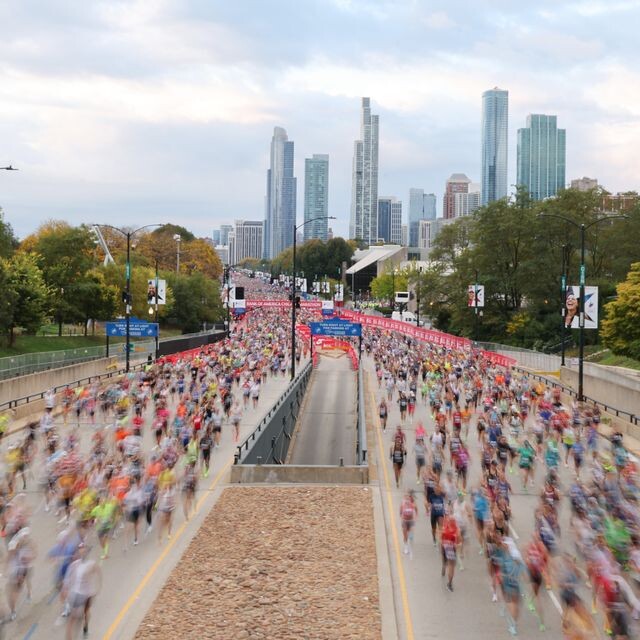
They’ll be challenged by Kenya’s Mary Ngugi-Cooper (2:20:22), while rising stars Loice Chemnung(marathon debut) and Ejgayehu Taye (track standout) add intrigue to the field.
Continental Ambitions & Local Heroes
Bashir Abdi (Belgium, 2:03:36) carries Europe’s hopes. His pacing discipline and championship experience make him a dark horse in the chaotic front pack.
On the North American front:
• Galen Rupp (2:06:07), a former Chicago champion, seeks to recapture relevance.
• Conner Mantz (2:07:47) and CJ Albertson (2:08:17) represent fresh American ambition.
• Rory Linkletter (2:08:01) brings Canadian presence to the mix.
What to Watch & Final Word
Expect fast early splits, bold moves, and surges that test everyone’s guts. The men’s race may hinge on who can ride the early pace without crashing. The women’s battle may be tactical, with late kickers deciding the outcome.
If Chicago’s history teaches us anything, it’s that when speed meets strategy, anything can happen. As the gun fires in Grant Park, we’ll see whether tradition holds or new legends are born.
(10/09/2025) ⚡AMPby Robert Kibet
Shura Kitata Headlines Deep International Field at the 2025 Mainova Frankfurt Marathon
Frankfurt, Germany - Former champion Shura Kitata will return to the Mainova Frankfurt Marathonon October 26 looking to reclaim his winning form against one of the strongest men’s fields in the race’s 42-year history.
The Ethiopian star, who made his breakthrough victory here in 2017, owns a lifetime best of 2:04:49and is one of seven athletes in this year’s lineup who have already broken 2:08:00. Despite his impressive résumé — which includes a win at the 2020 London Marathon — Kitata is seen as one of several contenders rather than the clear favorite.
“We have a top-class men’s field this year, very well balanced with no clear favorite,” said Race Director Jo Schindler. “We also hope that Filimon Abraham can produce a fine race.”
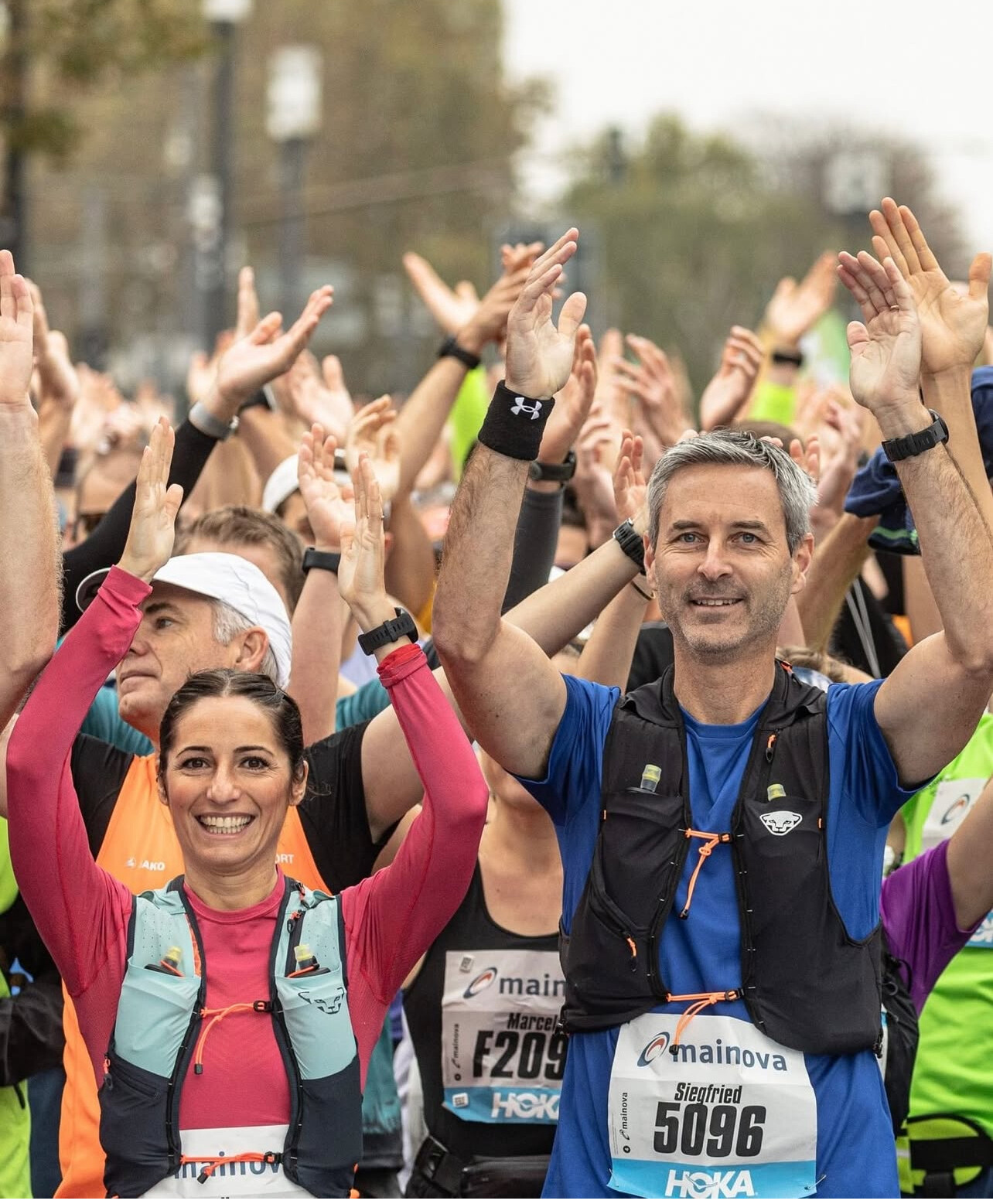
Organizers expect the 2025 edition to draw a record number of participants, potentially surpassing the all-time mark of 16,034 entries set in 2012.
Kitata’s Return to His Breakthrough Course

When Kitata won Frankfurt in 2017 at just 21, his 2:05:50 victory shocked the field and marked the beginning of his rise to world-class status. That time remains the fourth-fastest ever run on the Frankfurt course — achieved before the carbon-plated shoe era.
Since then, Kitata has achieved global recognition with podium finishes in multiple World Marathon Majors. Yet recent seasons have seen him searching for consistency, and Frankfurt’s fast, flat course offers a perfect opportunity for revival.
Rising East African Depth
Kitata won’t be alone at the front. Dejene Megersa, just 20 years old, already boasts a 2:05:42personal best, set in Dubai as a teenager. Fellow Ethiopians Belay Asfaw (2:07:00), Getachew Masresha (2:07:04), and Kirbrom Habtu (2:07:05) join him in the lineup, while Kenya counters with Kipkemoi Kiprono (2:06:45) and Stanley Rono (2:07:05).
Together, they form a deep East African field that ensures aggressive pacing and potentially fast times — but no Americans are on the elite list this year, reinforcing Frankfurt’s strong continental focus.
German Runners Eye Personal Bests
Leading the German hopes, Filimon Abraham (PB 2:08:11) — who grew up in Eritrea and trains at high altitude in Asmara — is targeting a sub-2:08 and a place among the top finishers.
Compatriots Tom Thurley (2:12:45) and Jan Lukas Becker (2:15:20) also aim to make significant improvements and narrow the gap to Germany’s all-time greats.
Fast Conditions Await
Known for its flat, sheltered course and cool autumn weather, Frankfurt has produced world-class times for decades, including Wilson Kipsang’s 2:03:42 course record from 2011. With the 2025 field stacked with proven speed, fans can expect another fast, competitive race — and possibly a return to form for Shura Kitata.
(10/09/2025) ⚡AMPby Race News Service
Mainova Frankfurt Marathon
Frankfurt is an unexpectedly traditional and charming city, with half-timbered buildings huddled in its quaint medieval Altstadt (old city), cosy apple wine taverns serving hearty regional food, village-like neighbourhoods filled with outdoor cafes, boutiques and street art, and beautiful parks, gardens and riverside paths. The city's cache of museums is second in Germany only to Berlin’s, and its nightlife...
more...Kenyan Duo to Battle for TCS Toronto Waterfront Marathon Title
Toronto, Canada — October 19, 2025. The stage is set for another East African showdown at the TCS Toronto Waterfront Marathon, a World Athletics Elite Label Race. Two top Kenyan runners, Beatrice Cheserek and Cynthia Chemweno, have been confirmed to take on Ethiopia’s rising stars Almaz Kebebe and Adane Anmaw, in what promises to be one of the most competitive women’s races in the event’s history.
Beatrice Cheserek’s Confident Marathon Debut
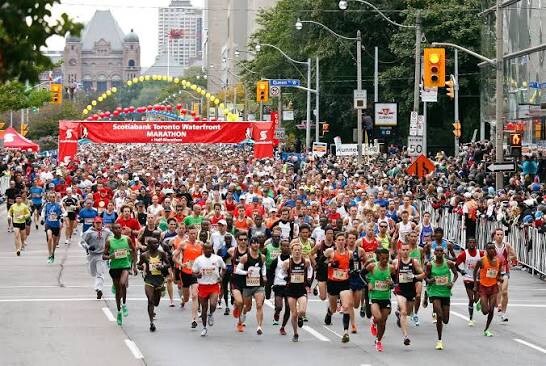
At 26, Beatrice Cheserek will make her marathon debut in Toronto, bringing impressive credentials to the start line. She owns a half marathon personal best of 1:06:48, recorded while winning the 2022 Cardiff Half Marathon, and has already experienced the pressure of major marathons.
In 2023, she paced compatriot Rosemary Wanjiru through 30 kilometers of the Tokyo Marathon, a World Marathon Major that Wanjiru went on to win in 2:16:28. Cheserek’s performance that day proved her strength over the distance — and she’s ready to test herself as a full competitor.
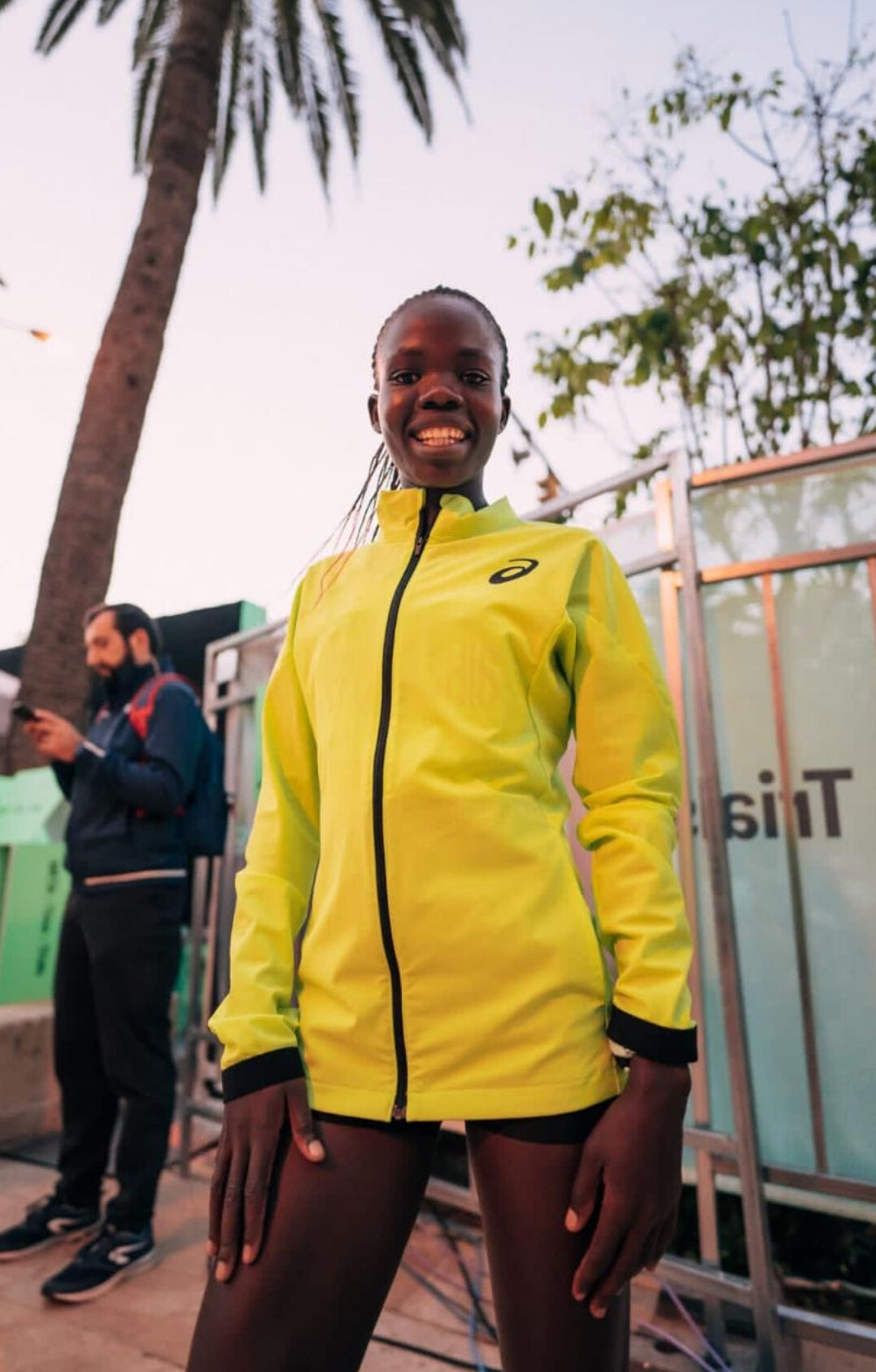
“This is my first marathon, and I hope to do my best,” Cheserek said. “I paced in Tokyo for Rosemary Wanjiru, and she ran 2:16, so I know I am strong. I want to run 2:20 or 2:19 in Toronto. It’s a fast course.”
After taking maternity leave to give birth to her son Fabian Kiprop, now 15 months old, Cheserek has made a steady comeback. Earlier this year, she placed sixth at Spain’s Santa Pola Half Marathon, running 1:10:25. Her confidence has grown with each training cycle.
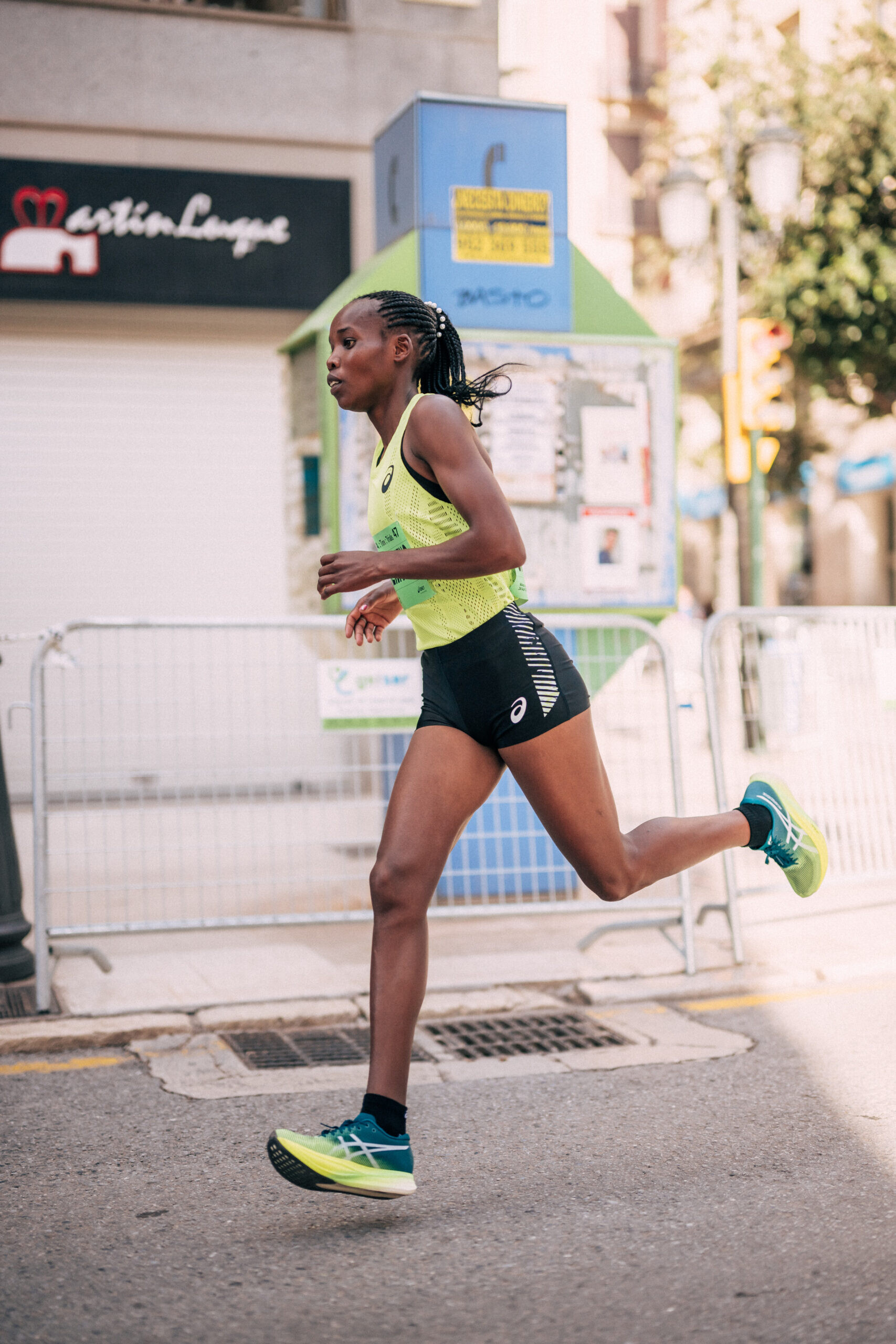
“My training now is going well,” she added. “Last week I did 40 kilometers and finished strong. I know Toronto is not a hard course — a little bit faster — and I’m ready.”
Cynthia Chemweno Targets Another Breakthrough
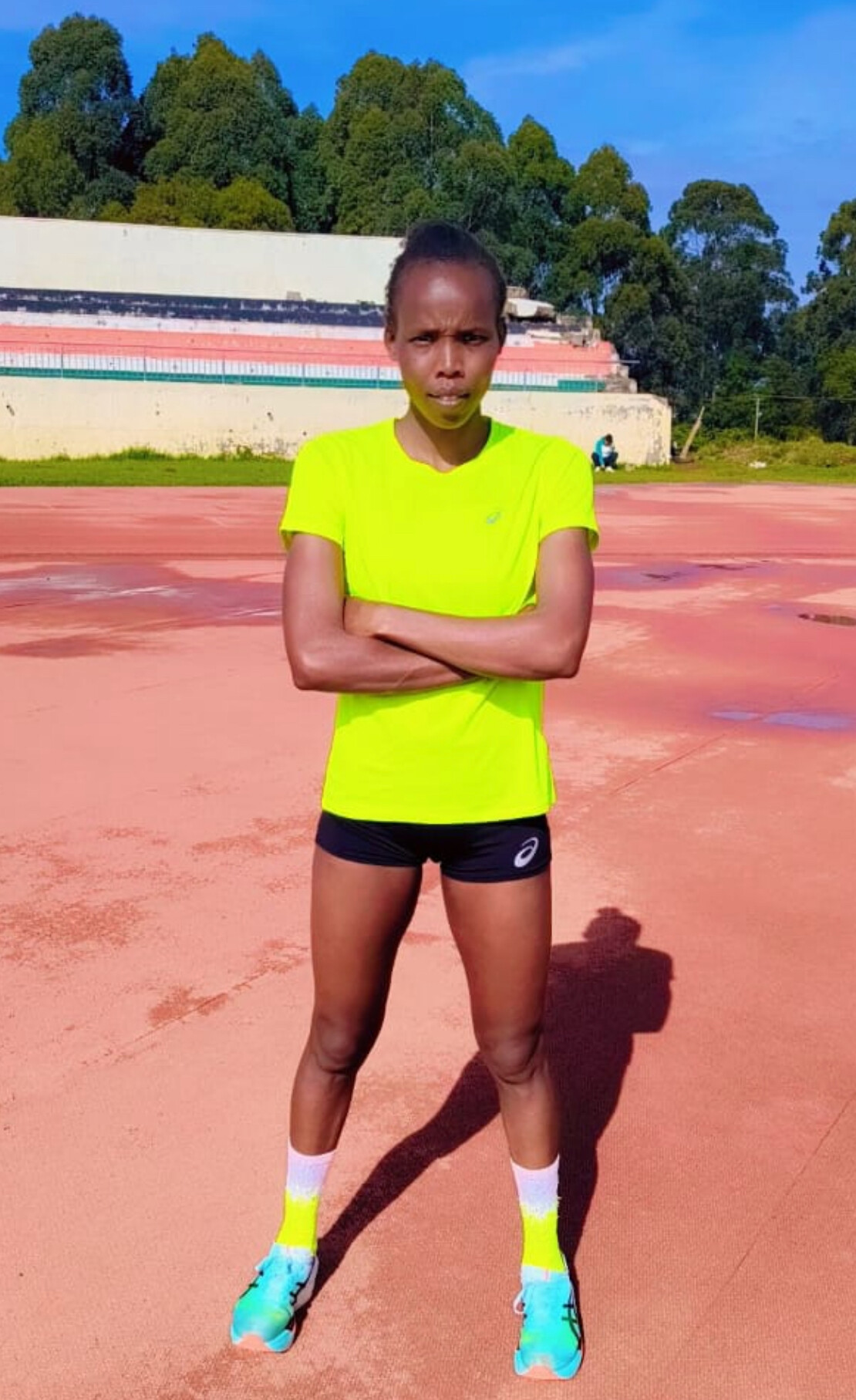
Her teammate Cynthia Chemweno, 28, also arrives in Toronto with growing momentum. In her marathon debut at Hamburg in April, she finished fifth in 2:23:39, a time that gave her valuable confidence heading into the fall season.
“Hamburg was my first marathon, and I managed a good time,” Chemweno said. “The course was great, and I really enjoyed it. I’m excited to improve in Toronto.”
Chemweno and Cheserek are both part of the ASICS Mezzo Sports Management group. The two trained together frequently before Chemweno relocated to Chojo Camp in Kaptagat — a name derived from the Japanese word meaning “striving for the peak.” The camp is home to several top Kenyan male athletes and coaches.
Cheserek continues to train from her hometown of Chepkorio, 40 kilometers from Iten, supported by her husband Cyrus Kiplagat, himself a competitive runner.
“He is the one who helps me with pacing,” she explained. “When I train, my sister-in-law looks after Fabian. It’s not always easy, especially during the rainy season when the dirt roads are impassable, but I keep working hard.”
Course Record in Sight
The Toronto Waterfront Marathon course record of 2:20:44, set by Ethiopia’s Waganesh Mekasha, could be under threat. Mekasha is a training partner of Kebebe and Anmaw — both part of the emerging Ethiopian generation now challenging Kenyan dominance.
With Cheserek targeting a 2:19 and Chemweno already proven in the 2:23 range, organizers and fans alike are anticipating a fast, tactical race through downtown Toronto.
Final Thoughts
The 2025 TCS Toronto Waterfront Marathon is shaping up as a clash of ambition, resilience, and national pride. Both Kenya and Ethiopia will field athletes capable of rewriting the record books on one of North America’s premier marathon stages.
Whether it’s Cheserek’s inspired debut or Chemweno’s drive to improve on her Hamburg performance, Toronto could once again deliver the kind of breakthrough that defines a career — and keeps East Africa at the center of the global marathon conversation.
(10/08/2025) ⚡AMPby Paul Gains
TCS Toronto Waterfront Marathon
The Scotiabank Toronto Waterfront Marathon, Half-Marathon & 5k Run / Walk is organized by Canada Running Series Inc., organizers of the Canada Running Series, "A selection of Canada's best runs!" Canada Running Series annually organizes eight events in Montreal, Toronto and Vancouver that vary in distance from the 5k to the marathon. The Scotiabank Toronto Waterfront Marathon and Half-Marathon are...
more...World-Class Fields Ready for the 2025 Chicago Marathon on October 12
The 2025 Bank of America Chicago Marathon, set for Sunday, October 12, promises to once again showcase one of the deepest elite fields in marathon history. Known for its fast, flat course and ideal racing conditions, Chicago has become a global stage for record-setting performances — and this year’s edition may be one of the most competitive yet.
Men’s Elite Race: Korir Returns to Defend His Title
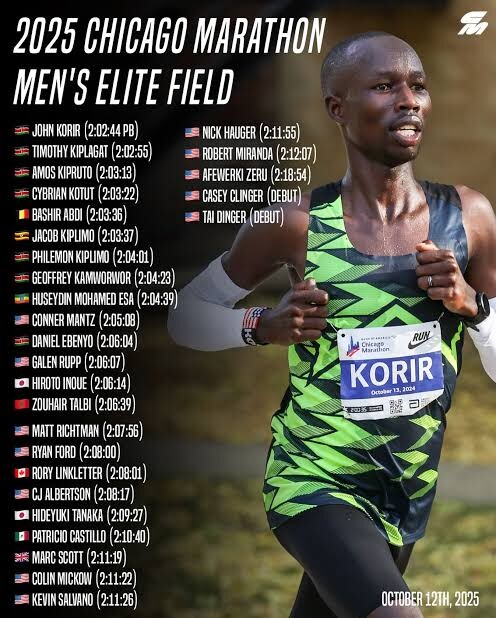
Leading the men’s lineup is John Korir of Kenya, the 2024 champion, who ran an impressive 2:02:44 personal best last year. He’ll face a formidable field featuring Timothy Kiplagat (2:02:55), Amos Kipruto (2:03:13), CyBrian Kotut, and Olympic bronze medalist Bashir Abdi.
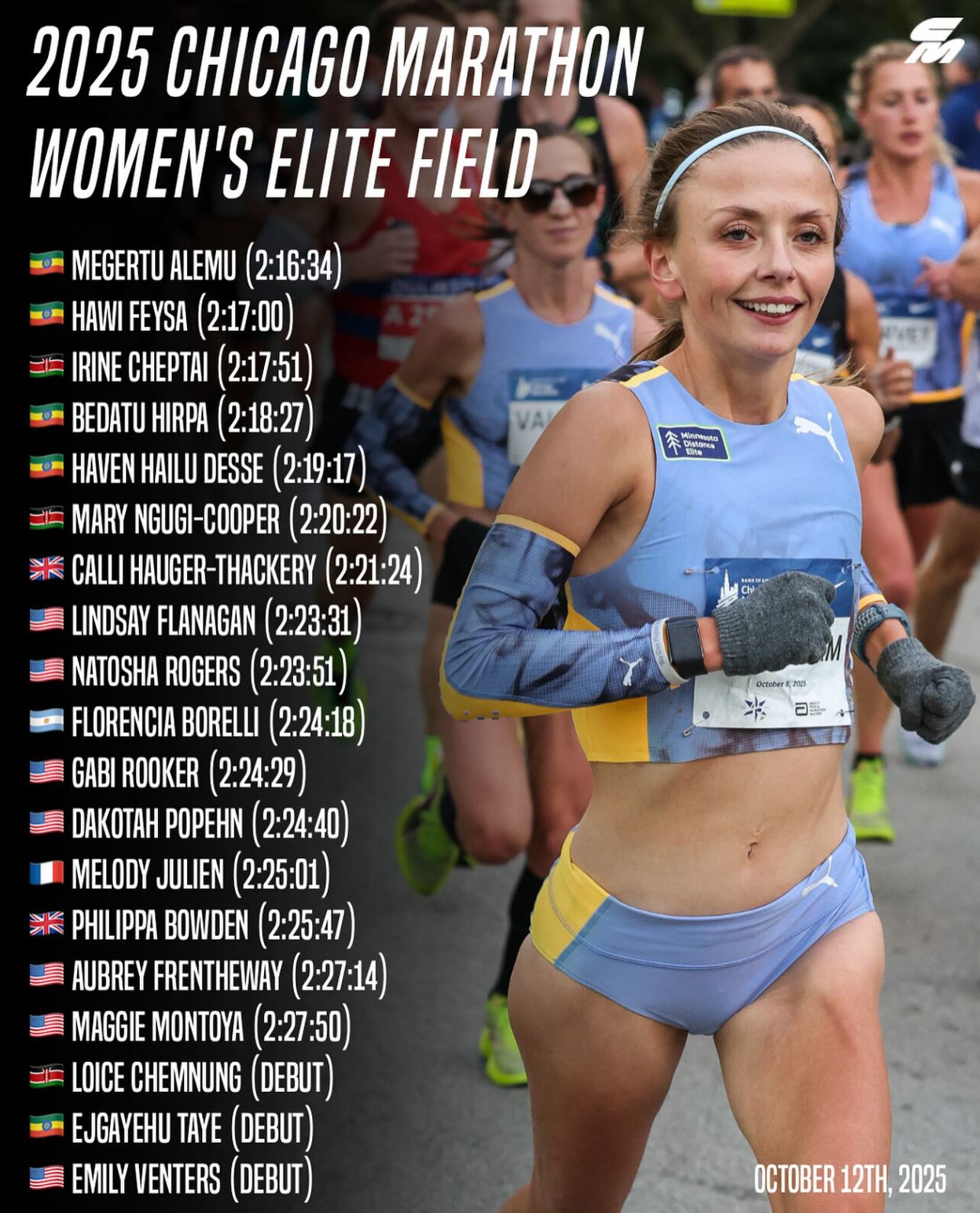
The men’s race includes a deep roster of sub-2:05 performers, joined by rising Kenyan and Ethiopian talent and top Americans Conner Mantz and Galen Rupp, who will be aiming to challenge the American record. Mantz, who continues to build momentum on the global stage, has called Chicago “the perfect course for fast running.”
Other top contenders include Jacob Kiplimo, Philemon Kipkemo, and Geoffrey Kamworor, all proven half-marathon specialists stepping into the marathon distance with high expectations.
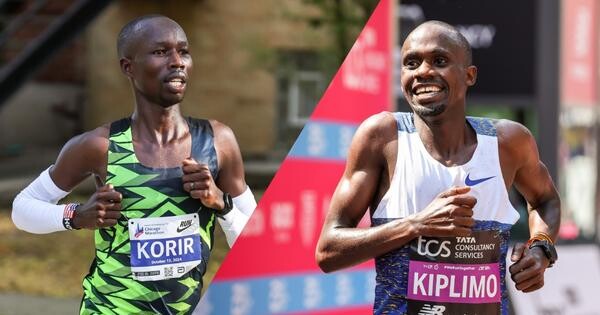
Women’s Elite Race: Ethiopia’s Depth on Display

The women’s field is equally world-class. Megertu Alemu (2:16:34) leads the entries, followed by Hawi Feysa (2:17:00) and Irine Cheptai (2:17:51). Ethiopia’s strength in depth continues with Bedatu Hirpa (2:18:27) and Haven Hailu Desse (2:19:17).
Kenya’s Mary Ngugi-Cooper, who has been consistently among the top finishers in major marathons, brings experience and resilience to the field with her 2:20:22 personal best.
Among the notable international names are Calli Hauger-Thackery of Great Britain (2:21:24), Lindsay Flanagan (2:23:31), Florencia Borelli (2:24:18), and Dakotah Popehn (2:24:40). The debut of Kenya’s Loice Chemnung and Ethiopia’s Ejgayehu Taye, both stepping up from world-class track careers, adds further intrigue.
Records and Legacy
Chicago’s reputation as one of the fastest courses in the world continues to draw elite fields. The men’s course record of 2:00:35, set by the late Kelvin Kiptum in 2023, remains one of the most remarkable performances in marathon history. On the women’s side, Sifan Hassan’s 2:13:44, also from 2023, stands as the course record.
Both records were set in near-perfect conditions — something runners and fans alike will be hoping for again this October.
An Event with Global Reach
The Chicago Marathon remains a cornerstone of the Abbott World Marathon Majors, drawing more than 50,000 runners from over 100 countries. In 2025, organizers anticipate record participation and strong community engagement across the city’s 29 neighborhoods.
Since its founding in 1977, the race has evolved from a local road event into a global showcase for endurance and diversity. Beyond the elite races, the marathon generates millions for local charities and stands as one of the city’s largest annual sporting celebrations.
Looking Ahead
As the elite men and women prepare for the start line, the question is not whether Chicago will be fast — but how fast.
With Korir defending his title, Alemu chasing sub-2:16 territory, and several debutants looking to make their mark, the 2025 Chicago Marathon could once again deliver performances that shape the global marathon conversation.
The 47th edition of this iconic race will begin at 7:30 a.m. (CT) from Grant Park, with live coverage expected worldwide.
Chicago’s streets are ready. The world will be watching.
(10/08/2025) ⚡AMPby Boris Baron
Bank of America Chicago
Running the Bank of America Chicago Marathon is the pinnacle of achievement for elite athletes and everyday runners alike. On race day, runners from all 50 states and more than 100 countries will set out to accomplish a personal dream by reaching the finish line in Grant Park. The Bank of America Chicago Marathon is known for its flat and...
more...KATA Time Trials Expand Nationwide as 30 Running Camps Prepare for October 15 Event
For years, the Kenya Athletics Training Academy (KATA) in Thika has been the nerve center of monthly time trials — small but highly competitive races that have helped shape Kenya’s next generation of distance-running talent.
This October 15 marks another milestone. For the second consecutive nationwide edition, KATA’s time trials will take place not only at the Thika headquarters but also simultaneously across more than 30 KATA Running Camps throughout Kenya, featuring both 10 km and 5 km races.
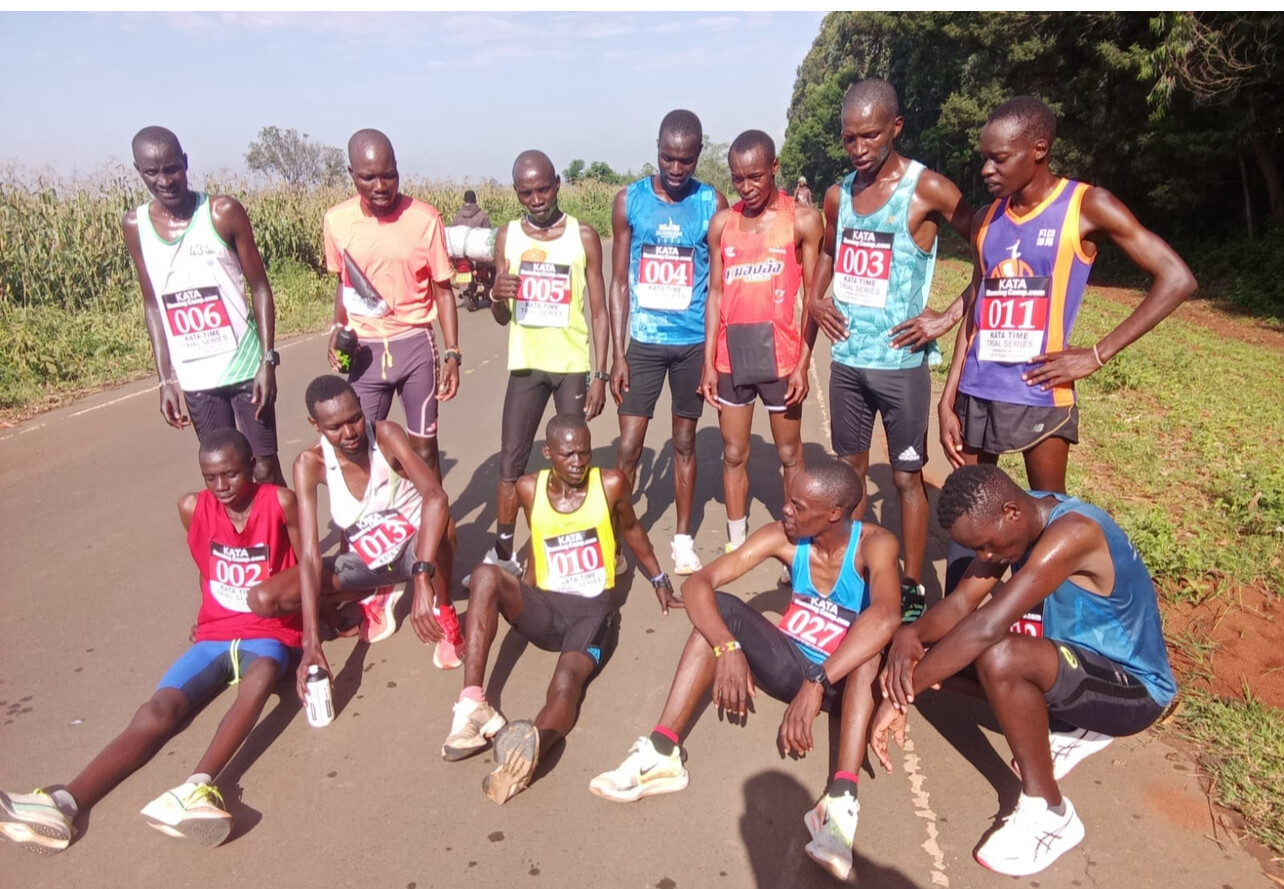
The expansion follows the success of August’s first coordinated nationwide time trial, which confirmed that KATA’s decentralized model can operate effectively across multiple regions. Each camp’s participation is not optional — under the KATA system, all official camps are required to host a time trial every other month as part of athlete development and performance monitoring.
Meanwhile, the Thika headquarters continues to set the standard. It has organized a monthly KATA Time Trial without interruption since September 2021, providing a consistent testing ground for hundreds of emerging athletes.

KATA founder Bob Anderson, who also created My Best Runs, said the approach is about expanding access while maintaining structure.
“The idea was to decentralize opportunity,” Anderson explained. “We want every promising runner, whether training in Thika or a rural camp, to have the same chance to be timed, compared, and supported within the KATA framework.”
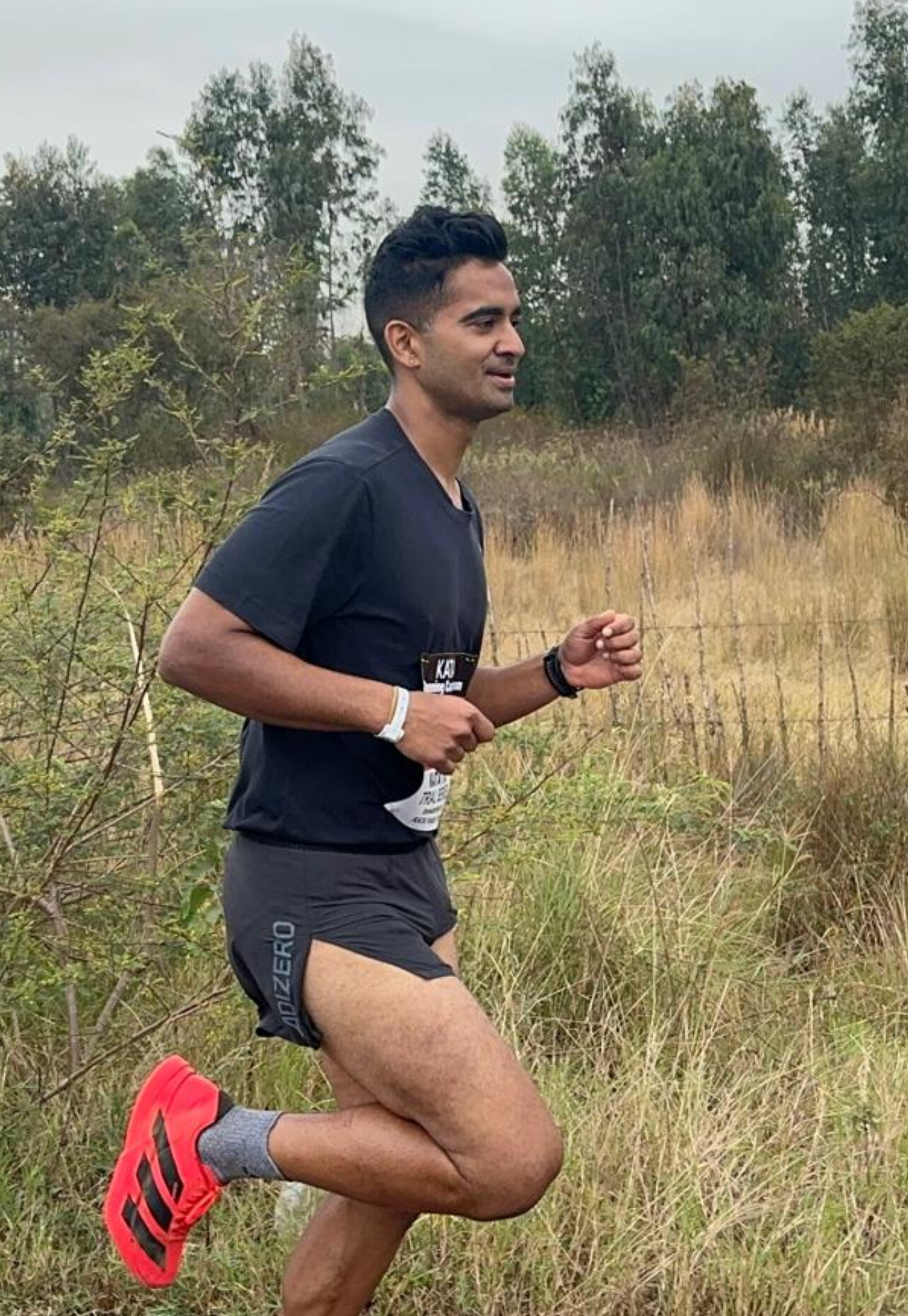
Through its network of 30+ KATA Running Camps, the academy has built a national performance pipeline. Each camp conducts its own race under strict KATA guidelines — ensuring accurate distances, verified timing, and documented results — which are then compiled centrally to produce nationwide rankings.
The program is already showing impact. The August trials unearthed new talents now being tracked for mentorship, nutrition guidance, and future competition opportunities.
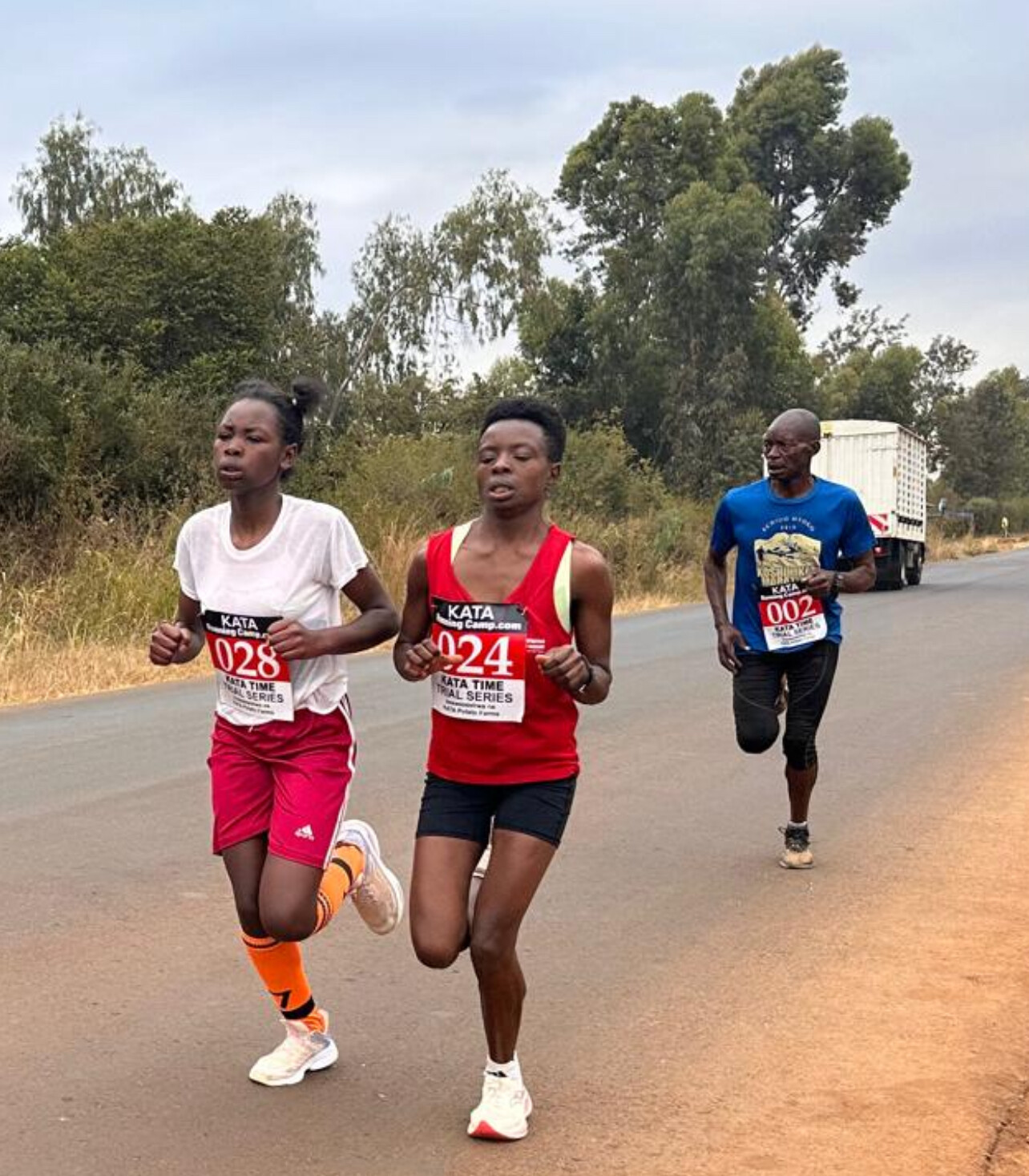
Head coach John Matheri said the system promotes fairness and progress.
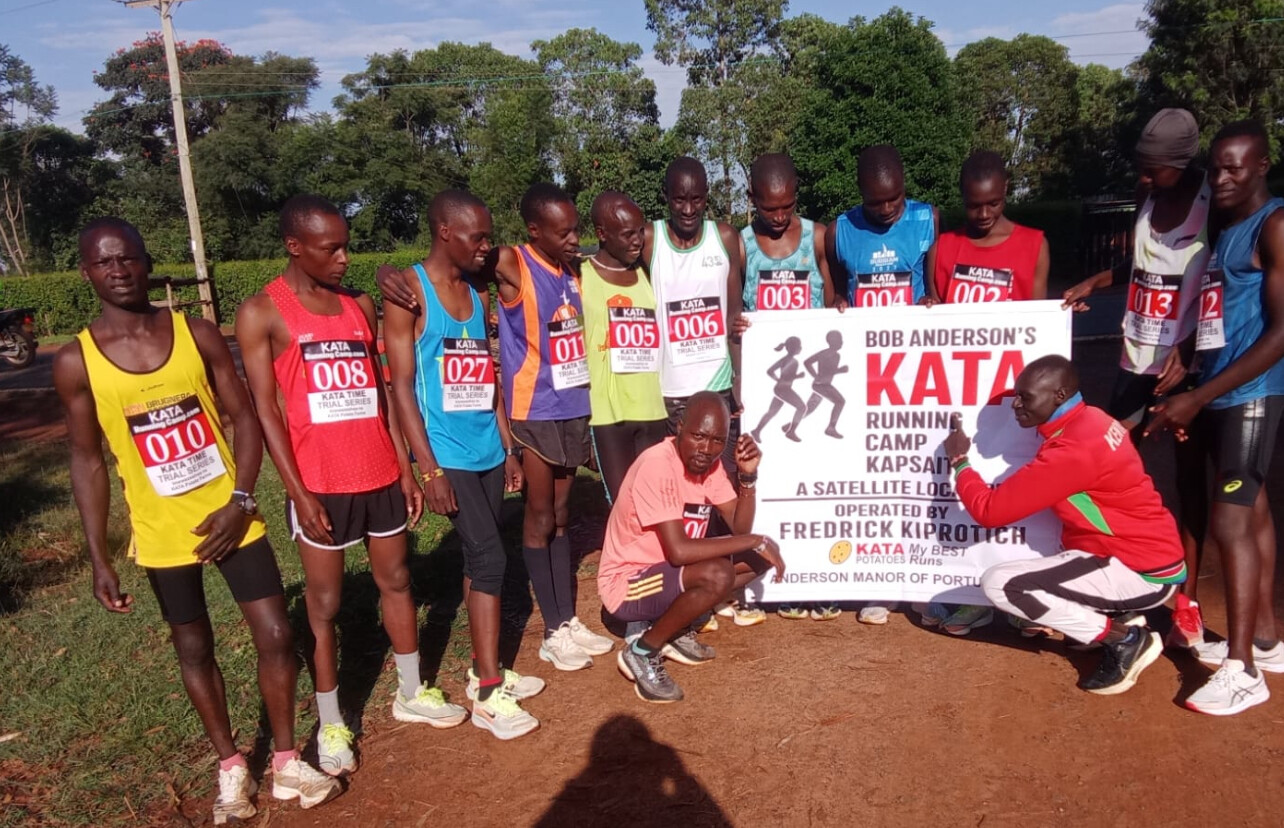
“Before, athletes had to travel to Thika for official trials. Now, the competition comes to them,” he said. “That equal footing is helping identify talent in places we might never have reached before.”
Matheri added that community involvement is strengthening outcomes.
“We expect even faster times this month,” he noted. “Athletes are training with purpose, supported by improved nutrition from our KATA potato projects and the consistent structure that these trials provide.”
Coach Silas Tiren, who leads one of the Rift Valley KATA Camps, said the program has given athletes motivation and accountability.
“These trials are more than races — they’re checkpoints,” said Tiren. “They remind every runner that consistency builds champions.”
From Kapcherop in Elgeiyo Marakwet, coach Philemon Kiptoo emphasized the difference the decentralized system is making.
“Many young runners used to give up because they couldn’t afford to travel for competitions,” he said. “Now KATA has brought the race to their doorstep. That keeps their dreams alive.”
Olympic and World medalist Edwin Soi, a longtime KATA supporter, called the program a bridge between emerging and elite athletes.
“When I look at these young runners, I see myself years ago,” Soi said. “KATA is giving them structure and belief — proof that with discipline and consistency, they can rise to the world stage.”
The October 15 event will again feature 10 km and 5 km distances for men, women, and under-20 juniors. All results from the KATA Running Camps will be uploaded to the My Best Runs database for national comparison and recognition.
As the event approaches, excitement is building across Kenya’s running communities. With standardized guidelines, consistent timing, and grassroots engagement, the KATA Time Trials are evolving into a national benchmark of progress — connecting runners from every region under one synchronized system of excellence.
From Thika’s academy grounds to the mountain trails of the Rift Valley, the whistle will blow on October 15, uniting Kenya’s KATA athletes in a single shared mission: to test, improve, and prove that talent thrives when opportunity is structured.
(10/08/2025) ⚡AMPby Robert Kibet
KATA Time Trial Series
Welcome to the KATA Monthly Time Trial Held at the Kenyan Athletics Training Academy in Thika, Kenya, the KATA Monthly Time Trial is a unique and inclusive event designed to support runners of all levels in achieving their goals and showcasing their fitness. This event offers both 10K and 5K distances on an accurate, certified course, providing participants with...
more...Alisa Vainio Smashes Finnish Marathon Record Just Three Weeks After World Championships
Just three weeks after placing an impressive fifth in the marathon at the World Athletics Championships in Tokyo, Finland’s Alisa Vainio has once again made headlines—this time rewriting the national record books.
Competing at the Finnish Championships in Vantaa on Saturday (Oct 4), Vainio claimed the national marathon title in 2:23:06, breaking the previous Finnish record by 92 seconds. The old mark of 2:24:38 was set by Camilla Richardsson at the 2023 Valencia Marathon.
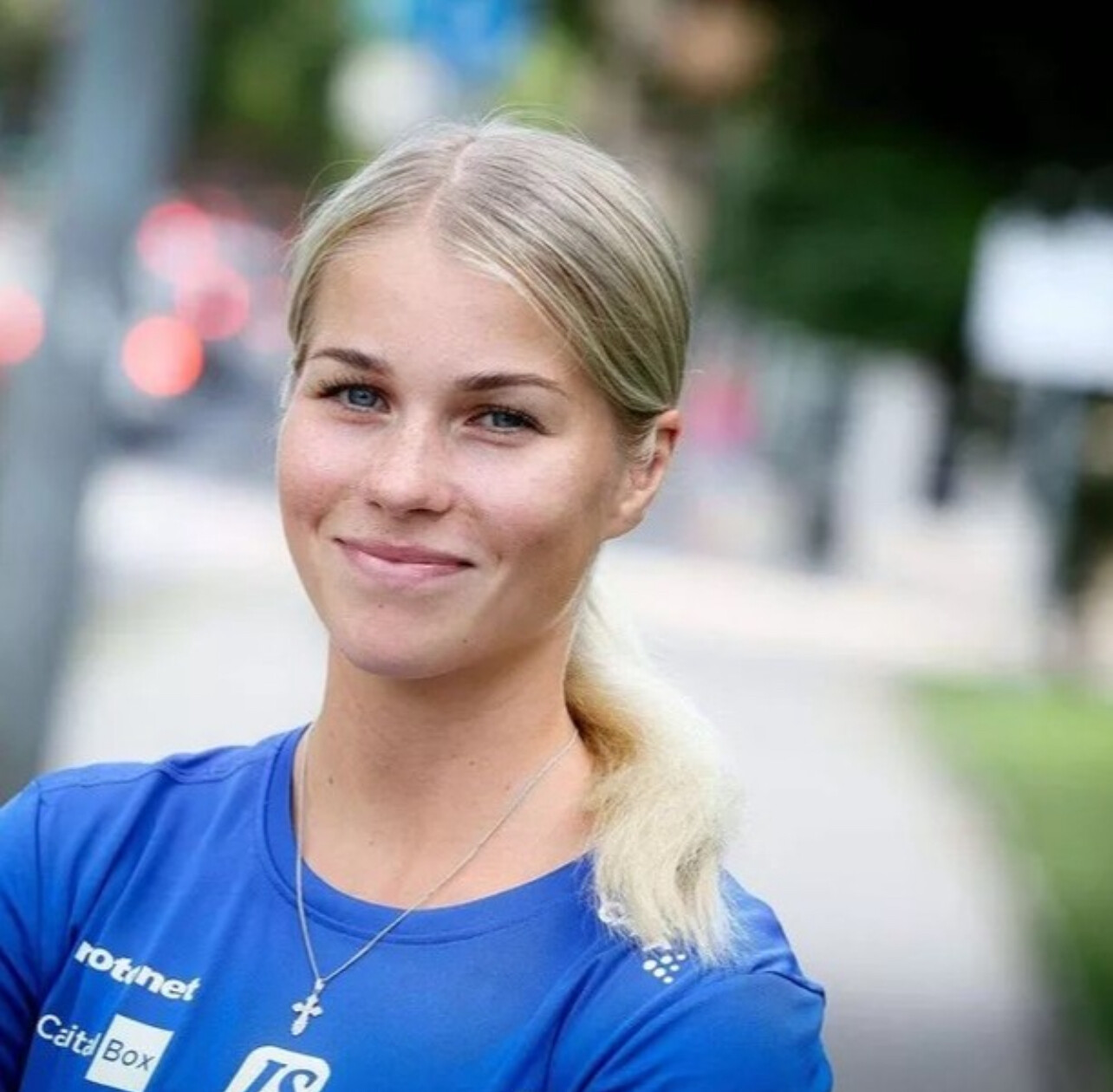
In contrast to Tokyo’s hot and humid conditions, Vantaa offered cool but blustery weather, which suited Vainio’s strong and efficient running style. She finished second overall, just 33 seconds behind men’s winner Kari Heikura, who clocked 2:22:33.
“I felt pretty good, pretty strong the whole time. The stride felt good and I was able to tighten my stride uphill and then relax downhill. Sometimes I got some help from the guys,” said Vainio.
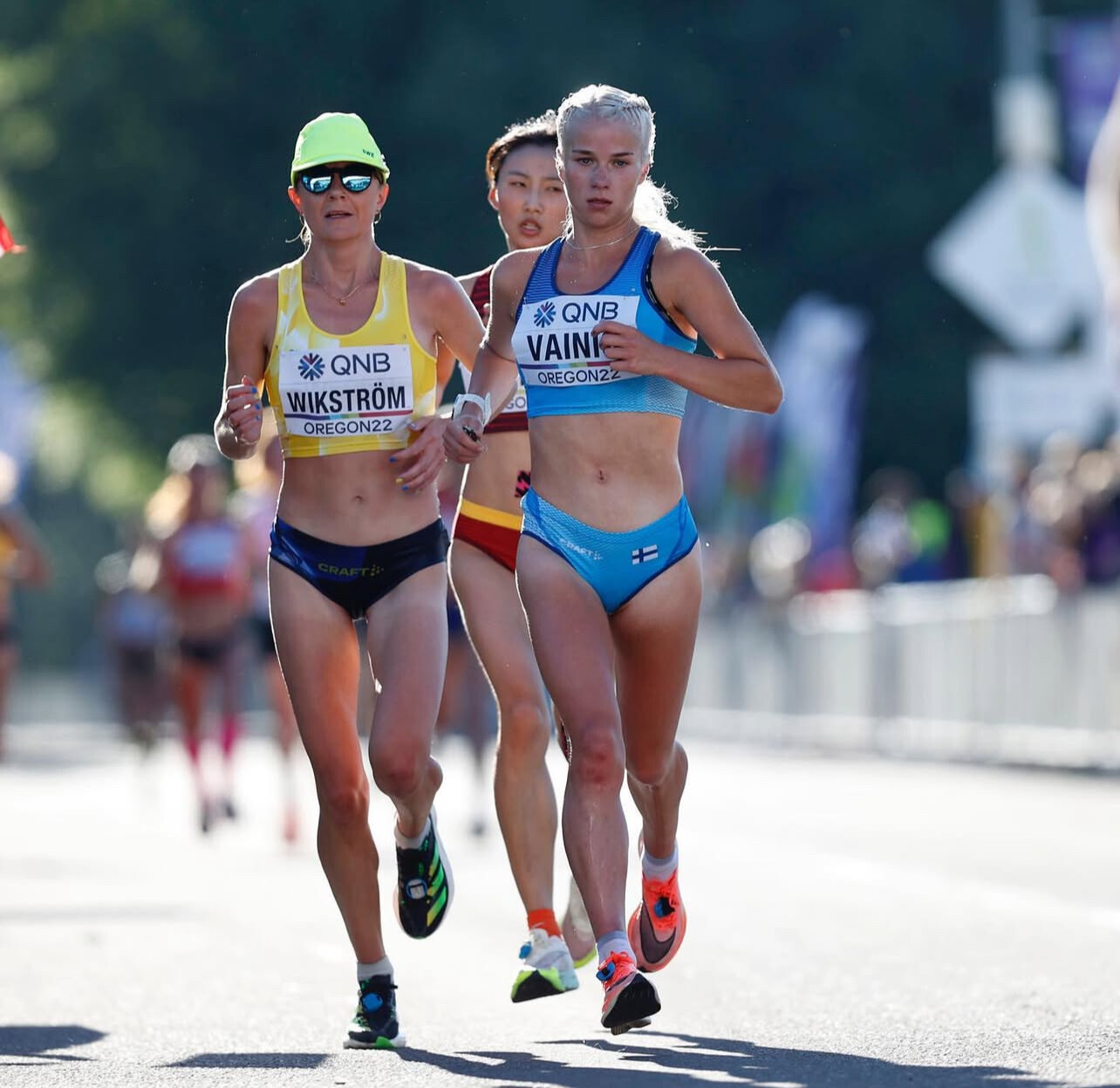
“I wanted to run hard. In Tokyo, I couldn’t run hard in the heat and that was annoying. After Tokyo, the recovery went incredibly well and I wanted to be brave today.”
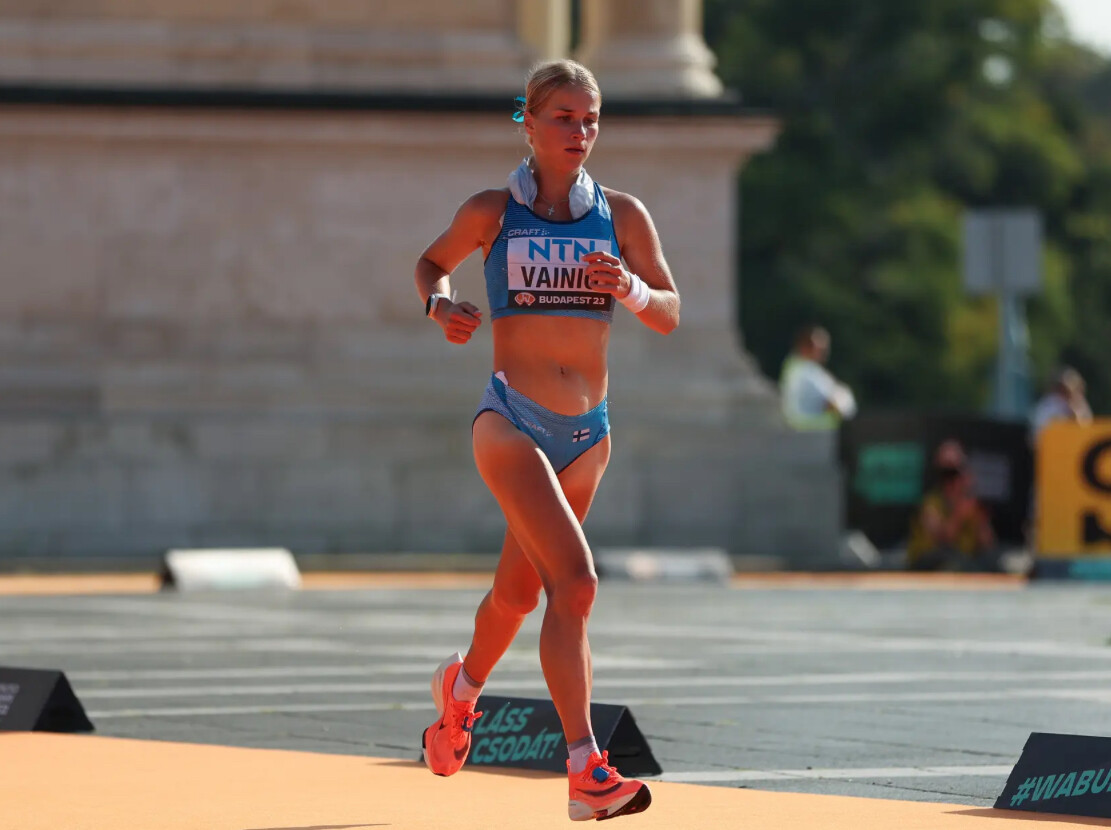
Remarkably, Vainio took just one week off following Tokyo before resuming training, showing her trademark resilience and determination. Her 2:23:06 performance now places her third on the 2025 European list, trailing only Olympic champion and European record-holder Sifan Hassan (2:19:00) and Germany’s Fabienne Königstein (2:22:17), who placed sixth at last month’s Berlin Marathon.
Despite having raced two marathons in three weeks, Vainio hasn’t ruled out another major test this year.
“I possibly have a place in Valencia. It’s not completely confirmed yet. There should be good conditions to run hard, but everything has to go well until then,” she said.
(10/06/2025) ⚡AMPby Boris Baron
Ethiopia’s Yismaw Dillu Breaks Course Record at 2025 Cardiff Half Marathon
The 2025 Cardiff Half Marathon delivered record-breaking performances and thrilling finishes as Ethiopia’s Yismaw Dillu stormed to victory, setting a new men’s course record in the Welsh capital.
The 20-year-old Ethiopian crossed the line in 59 minutes and 23 seconds, eclipsing the previous record of 59:30 set by Kenya’s Leonard Langat in 2019. Dillu’s dominant run saw him finish more than 40 seconds ahead of his closest rival, Kenya’s Ismael Kiprono (1:00:05), while fellow Ethiopian Fikadu Liche rounded out the podium in 1:00:34.
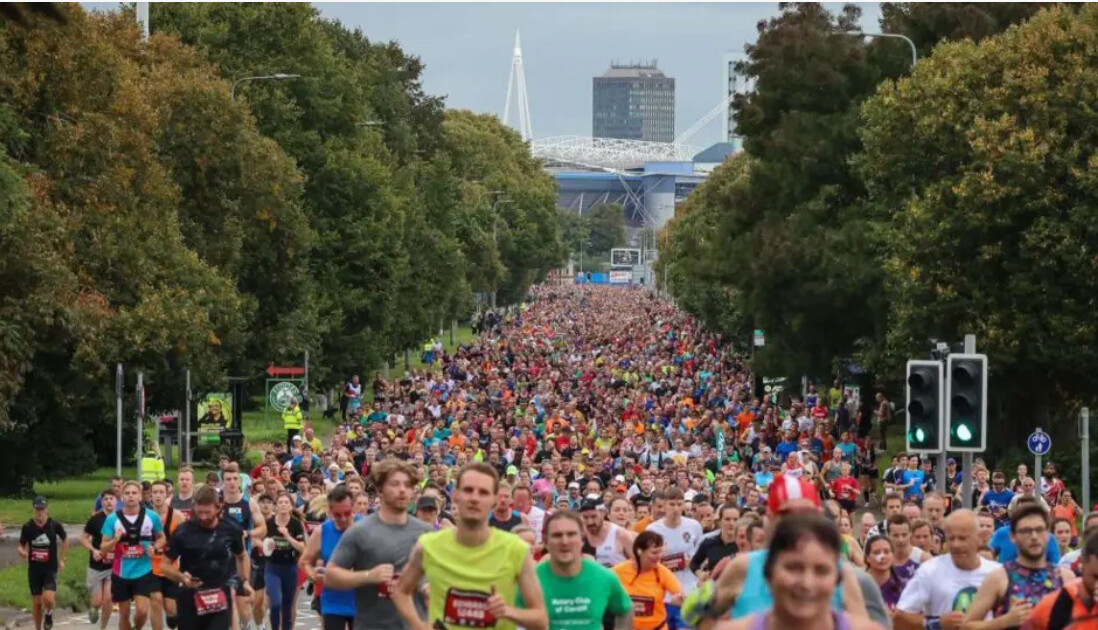
Dillu’s commanding performance highlighted the 22nd edition of the event, which saw over 29,000 participants take to the streets of Cardiff for the 13.1-mile (21 km) race. His record-breaking time further cements the Cardiff Half Marathon as one of Europe’s fastest and most competitive half marathons.
In the women’s race, Kenya’s Miriam Chebet successfully defended her title, improving on her 2024 winning time by five seconds. Chebet clocked 1:06:36, showcasing impressive consistency at the elite level. Ethiopia’s Alem Nigus finished second in 1:07:33, while debutant Wudinesh Alemu, also from Ethiopia, claimed third in 1:08:08.
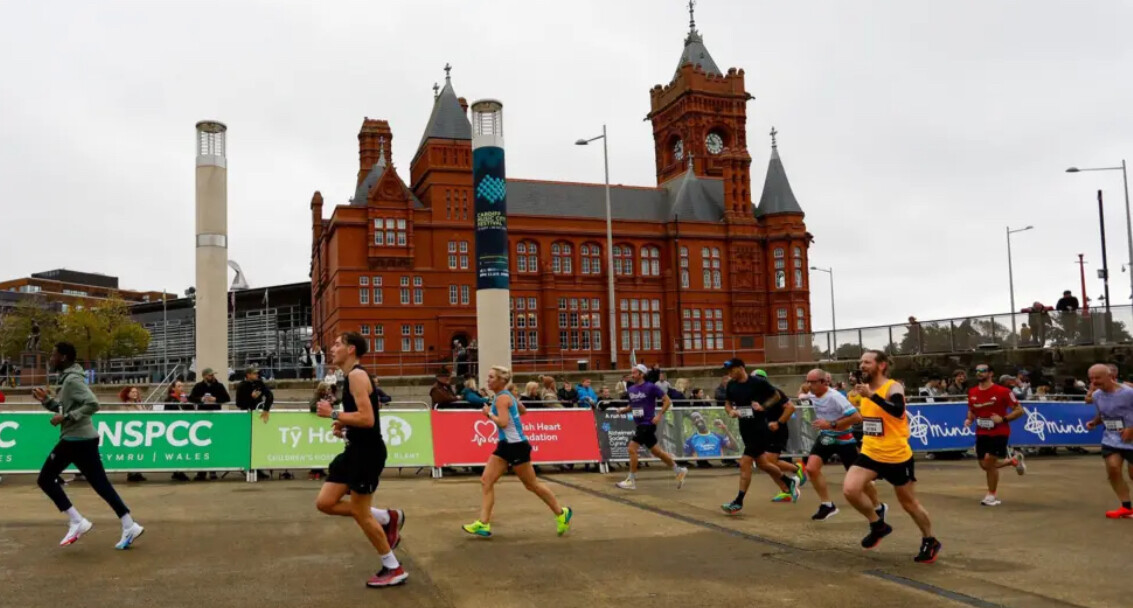
by Boris Baron
Wizz Cardiff Half Marathon
The Cardiff University/Cardiff Half Marathon has grown into one of the largest road races in the United Kingdom. The first event took place back in 2003. The event is not only the UK’s second largest half marathon, it is Wales’ largest road race and Wales’ largest multi-charity fund raising event. The race is sponsored by Cardiff University and supported by...
more...Building the Future: KATA’s Vision to Become the Powerhouse of Athletics in Kenya
KATA founder Bob Anderson has a bold vision — one that unites athletes, coaches, and farmers under a single purpose: to make KATA the powerhouse of athletics in Kenya and a model for the world.
As of today, KATA operates 31 running camps and 65 potato farms across Kenya. Of these, 31 farms are directly connected to KATA camps, while the remaining farms are independent partners within the broader KATA network. Together, they form a growing agricultural foundation that supports both athletics and community development.

KATA farms currently range in size from one acre to 8.5 acres, combining traditional farming expertise with innovative support for athlete nutrition and sustainability. By the end of 2026, KATA’s goal is to expand to 100 Running Camps and 200 Potato Farms — half directly linked to camps — spanning more than 400 acres of productive farmland.
Another key initiative is the creation of the first KATA Ranch, scheduled for development by early 2026. The ranch will raise 100 or more sheep and goats, providing food, training nutrition, and economic value to the community. A KATA Running Camp will be connected to the ranch, integrating agriculture and athletics into one sustainable ecosystem. The long-term goal is for the ranch to become self-sustaining through the sale of meat and byproducts, ensuring continuous support for KATA programs and local families. Once the first ranch is fully operational, additional ranches are planned for future expansion.
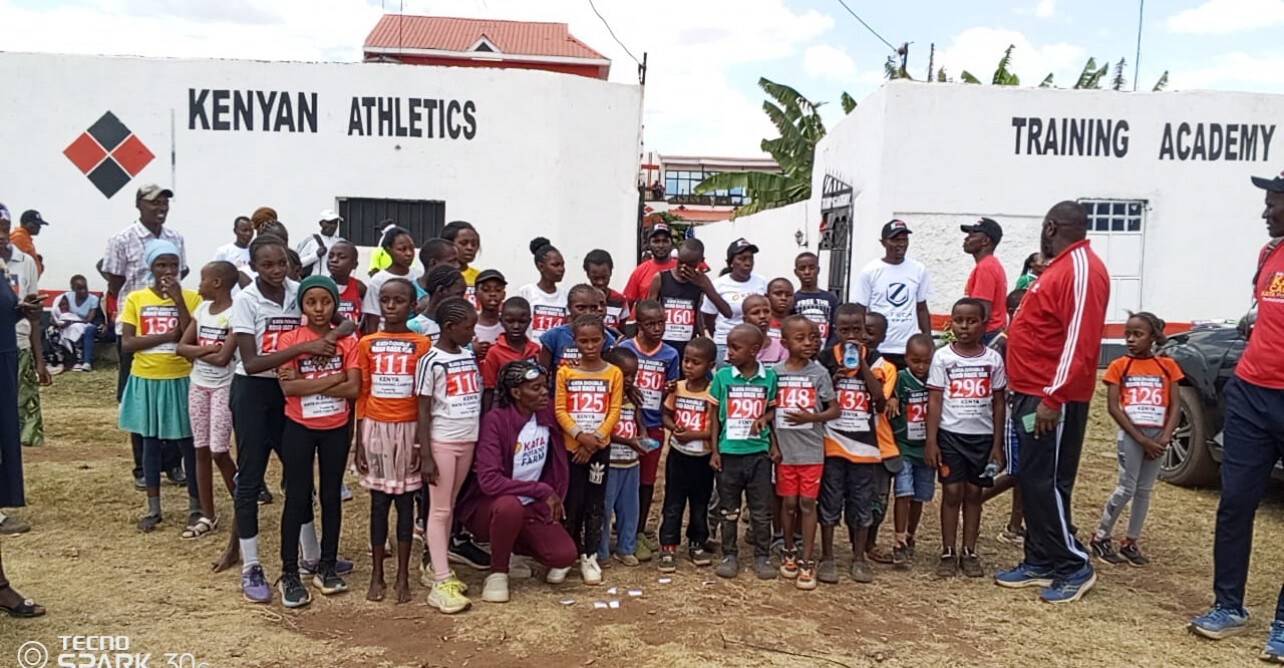
KATA is also preparing to launch a KATA Sports Shop featuring running shoes and gear, and a KATA Market offering healthy, locally sourced food and essentials.
Coming soon and at the heart of KATA’s growth is its flagship product — branded KATA Potatoes, sold at a premium price and marketed as “The Fuel of Champions.” Complementing this is KATA Potato Flakes, an innovative product that reflects KATA’s values of energy, endurance, and excellence.
The KATA Potato Flakes will be sold worldwide as the go-to carbo-loading choice for marathonerspreparing for race day. Just add water from the tap, and in moments, you’re carbo-loading on KATA Potatoes — The Fuel of Champions.
Meanwhile, KATA Thika serves as the local office for Kenya and continues to thrive as the organization’s flagship Running Retreat, offering training stays for athletes from around the world who want to experience the Kenyan way of training — whether for a few days or a few months. The retreat provides access to world-class coaching, structured training, and cultural exchange with Kenya’s elite running community.
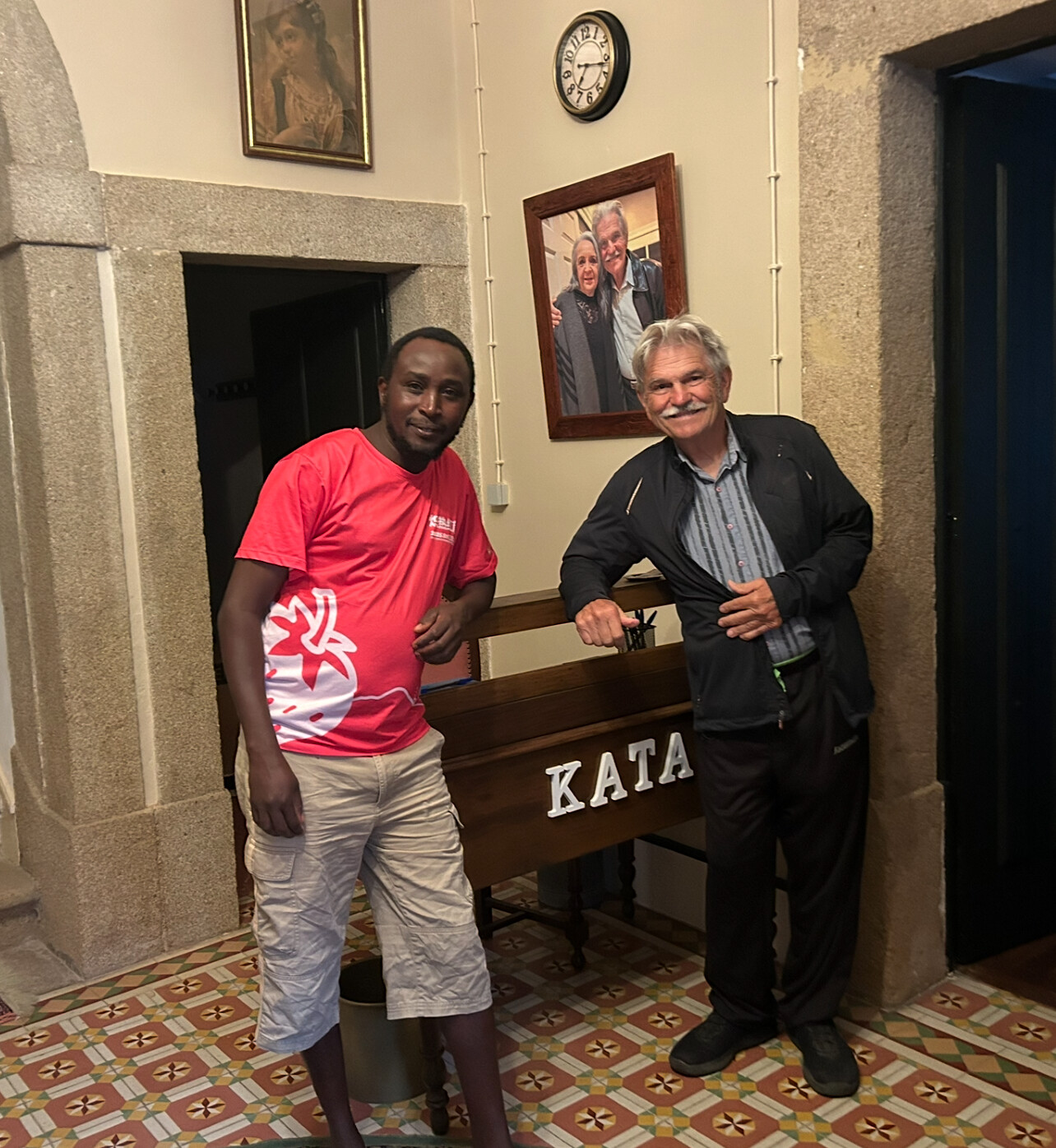
At the global level, KATA International is headquartered at the Anderson Manor in Monforte de Beira, Portugal — a 20,000-square-foot historic estate where the last King of Portugal stayed during his hunting trips in the early 1900s. The manor serves as the base for KATA’s international operations, housing both KATA Portugal and the Anderson Manor Retreat, which welcome athletes, artists, and guests from around the world.
Behind the scenes but very much involved is Bob’s wife, Catherine. (First photo with Bob). Her creative talent adds a great deal to the program. Bob and Catherine have known Coach Dennis since 2021. He has completed two three-month stays at KATA headquarters in Portugal, working alongside Bob. Coach Dennis (4th photo with Bob in Portugsl) was recently promoted to Chief Technical Officer (CTO) and will oversee operations in Kenya.
Development of KATA Portugal began in February 2024, and the project continues to progress strongly. The retreat in Portugal will serve as the European counterpart to KATA Thika, offering athletes a place to train, rest, and connect with KATA’s global mission in a peaceful, historic setting.
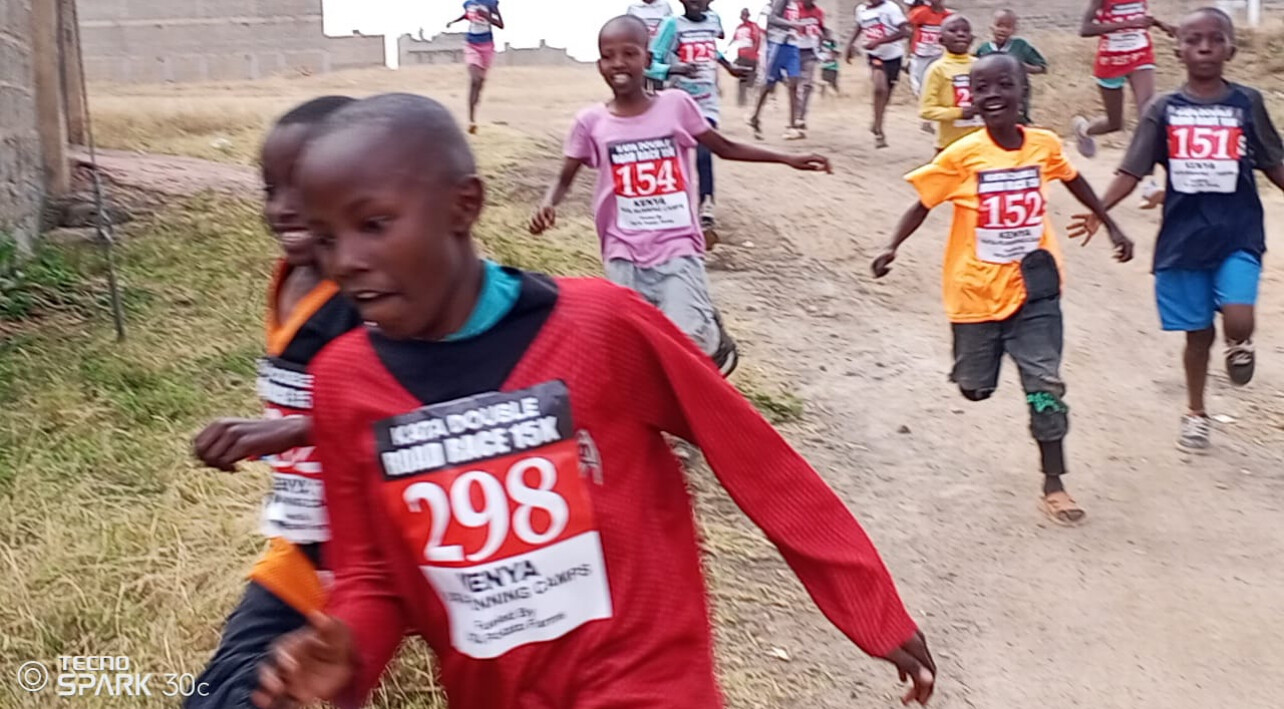
KATA’s vision goes far beyond producing great runners. The mission is to develop world-class athletes, Olympic champions, and future world record holders — combining top-tier coaching, discipline, and holistic training. Already, previous Olympic medalists such as Edwin Soi and Paul Koech are part of the KATA family, operating their own KATA Camps and helping guide the next generation of Kenyan champions.
Anderson also envisions a thriving athletic network of 650 elite runners, 150 youth athletes, and 40+ masters runners, supported by an expanding media presence through My Best Runs and KATA’s social platforms.
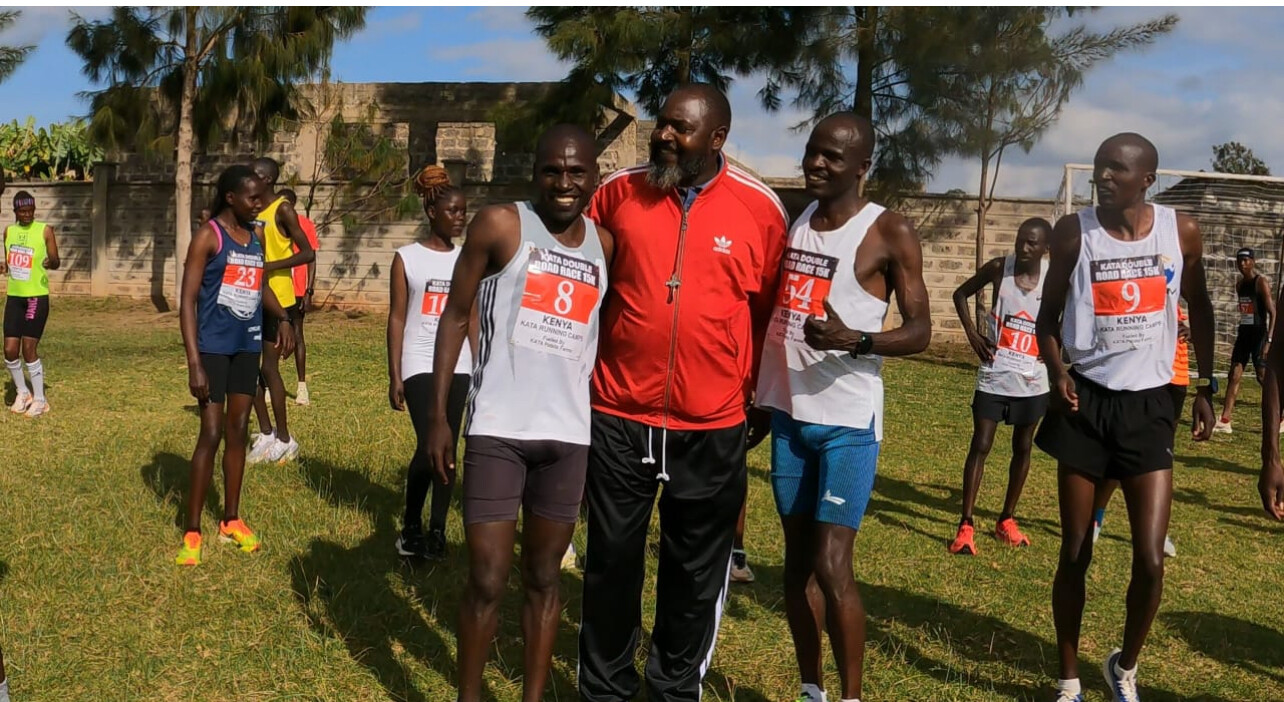
“I want to do something truly special for athletics,” Anderson says. “And it’s the passion and dedication of our athletes, coaches, and farmers that will make this dream a reality.”
“Our KATA family is as strong as its members,” Anderson adds. “As a team, we can make anything happen. In just a short amount of time, we’ve pulled off some amazing things. But our KATA family has only just gotten started. Watch us grow — and join us in helping make a difference.”
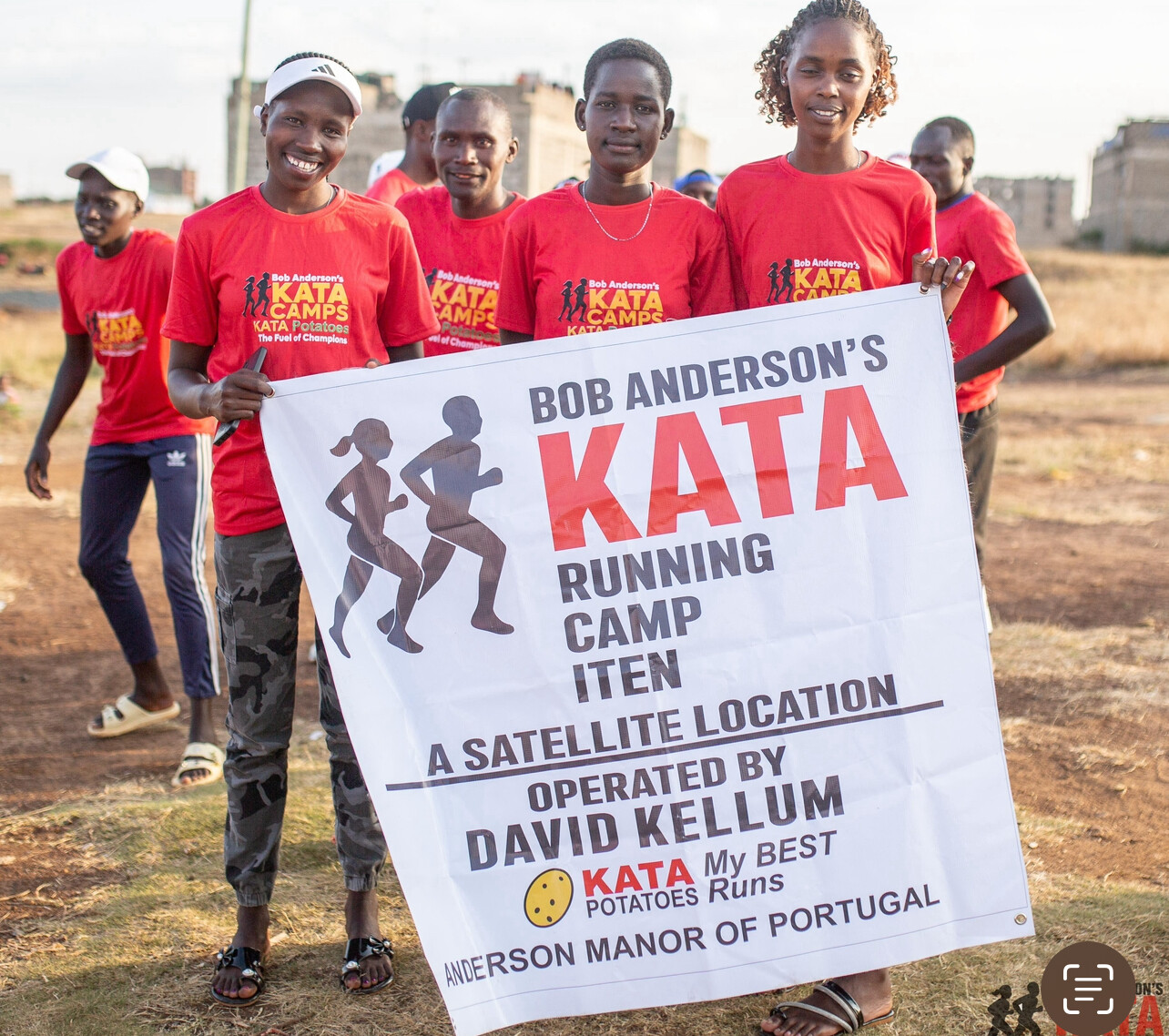
Anderson’s connection to Kenya runs deep. He first visited the country in 1987 and immediately fell in love with its people, culture, and running spirit. Just three years earlier, he had sold the magazine he founded and published for 18 years — Runner’s World, which had grown to a circulation of 2.5 million monthly readers. Runner’s World played a defining role in launching the modern running movement, inspiring millions of runners worldwide.
Although KATA Thika began in 2019, the KATA Running Camps officially launched in May 2025, building upon KATA’s strong foundation in Kenya. Both KATA Thika and KATA Portugal continue to grow as vital pillars in this global vision.
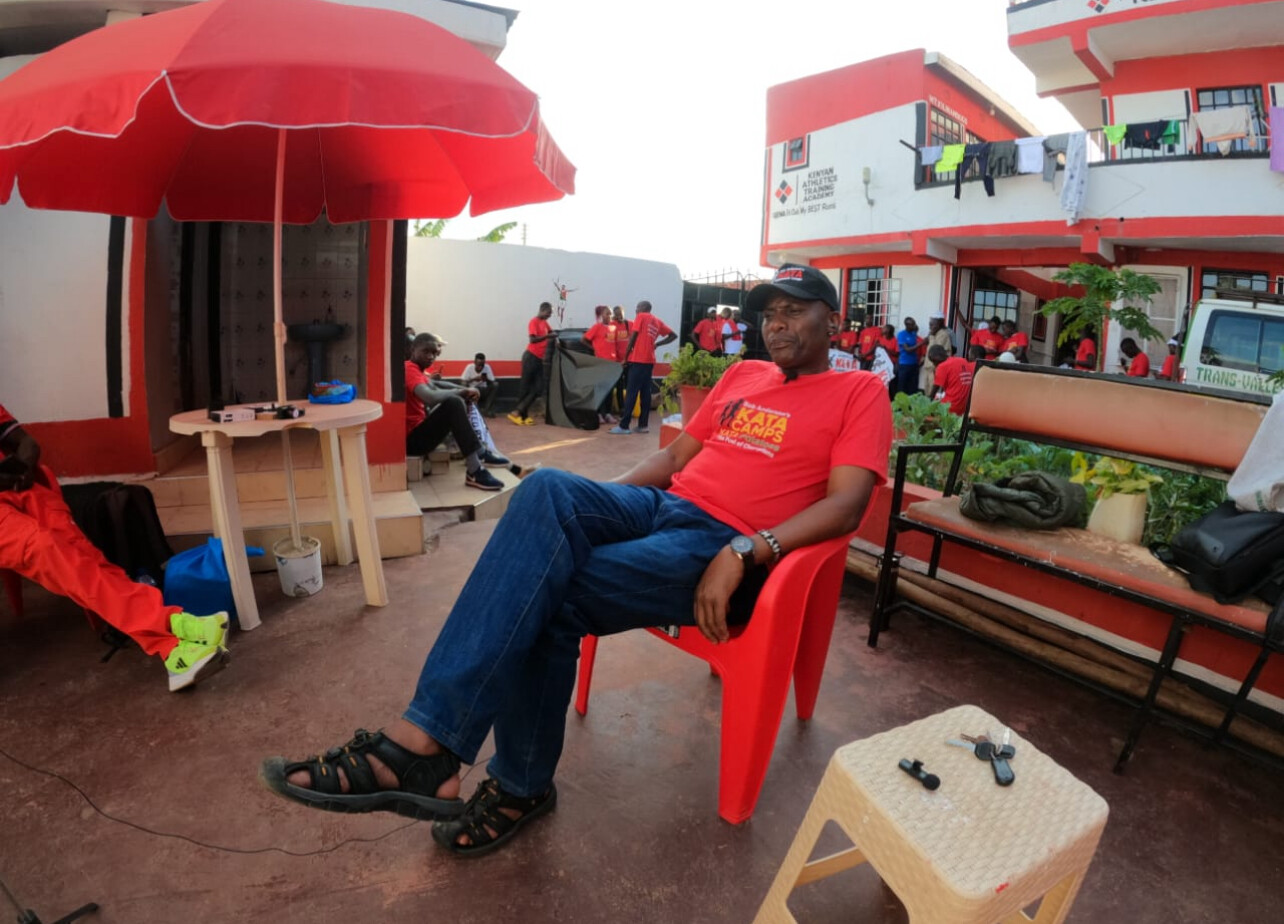
Anderson’s mission is clear: to strengthen the foundation of athletics in Kenya — and after 2026, expand to South Africa, Uganda, Ethiopia, and beyond.
Go KATA — The Fuel of Champions!
(10/04/2025) ⚡AMPby Boris Baron
Marion Irvine, the ‘Running Nun,’ Who Redefined Age and Athletics, Dies at 95
Marion Irvine, known worldwide as “The Running Nun,” passed away this week at the age of 95. She was one of the most remarkable figures in the history of women’s running — a late-blooming athlete who shattered age barriers and inspired generations.
Irvine didn’t start running until age 48, yet within a few short years, she was winning races, breaking records, and earning a sponsorship from Nike. By her early 50s, she was finishing marathons in under three hours — an achievement that placed her among the best masters runners of her era.
A Late Start, a Fast Finish

Her running journey began modestly, but once she laced up, there was no stopping her. As a Dominican nun and educator, Irvine balanced her spiritual calling with an ever-growing passion for running. “Running became my form of meditation,” she once said. “Every stride was a prayer.”
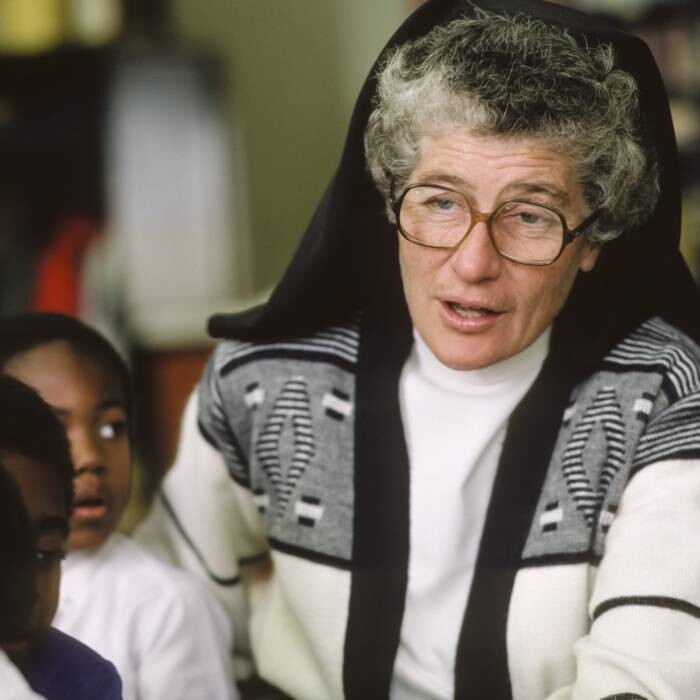
Her personal best marathon time, an astonishing 2:51, made headlines and stood as a record for her age group. At a time when women’s long-distance running was still gaining legitimacy, Irvine proved that age — and gender — were no barriers to excellence.
Breaking Barriers and Inspiring Generations
Irvine became a fixture in the running community, competing across the U.S. and often speaking about discipline, purpose, and faith. Her humility and humor drew runners to her wherever she went. She was inducted into several running halls of fame and featured in numerous articles, television interviews, and documentaries celebrating her accomplishments.
For Irvine, running was more than competition. It was connection — to her faith, her body, and the world around her. Her story encouraged thousands of older adults to begin running later in life, proving that it’s never too late to start.
A Legacy Beyond the Finish Line
Even after she stopped racing competitively, Sister Marion continued to coach and mentor runners. She remained a visible and joyful presence at road races well into her later years, often reminding others that “you don’t stop running because you get old — you get old because you stop running.”
Her passing marks the end of an era, but her story will continue to move runners everywhere.
Rest in peace, Sister Marion Irvine — the Running Nun who showed the world what it means to run with purpose.
Career Highlights: Marion Irvine, “The Running Nun”
• Born: 1930
• Started Running: Age 48
• First Marathon: 1978, in under 4 hours
• Personal Best: 2:51:01 marathon (age 54)
• Olympic Trials Qualifier: 1984 U.S. Women’s Marathon Trials — one of the oldest qualifiers
• Nike Sponsorship: First nun to receive a professional running sponsorship from Nike
• Religious Order: Dominican Sisters of San Rafael, California
• Recognition: Inducted into the USA Track & Field Masters Hall of Fame
• Quote to Remember: “Running is my form of prayer. Every mile is a conversation with God.”
(10/04/2025) ⚡AMPby Boris Baron
Nurturing Sprinters Against the Odds: Inside Kenya’s KATA Sprint Camp
KIAMBU, Kenya - On a crisp morning in Kamiti, Kiambu County, 16 miles northeast of Nairobi, the dirt track at Kamiti Maximum Prison comes alive with the rhythm of pounding feet, shrill whistles, and sharp instructions. At the center of the action stands Coach Julius Migwi, eyes locked on the group of young sprinters wearing red shirts with the Kenya Athletics Training Academy (KATA) Sprint Camp logo. Stopwatch in hand, Migwi scans every drill and explosive burst over 100 meters.
A Coach’s Mission
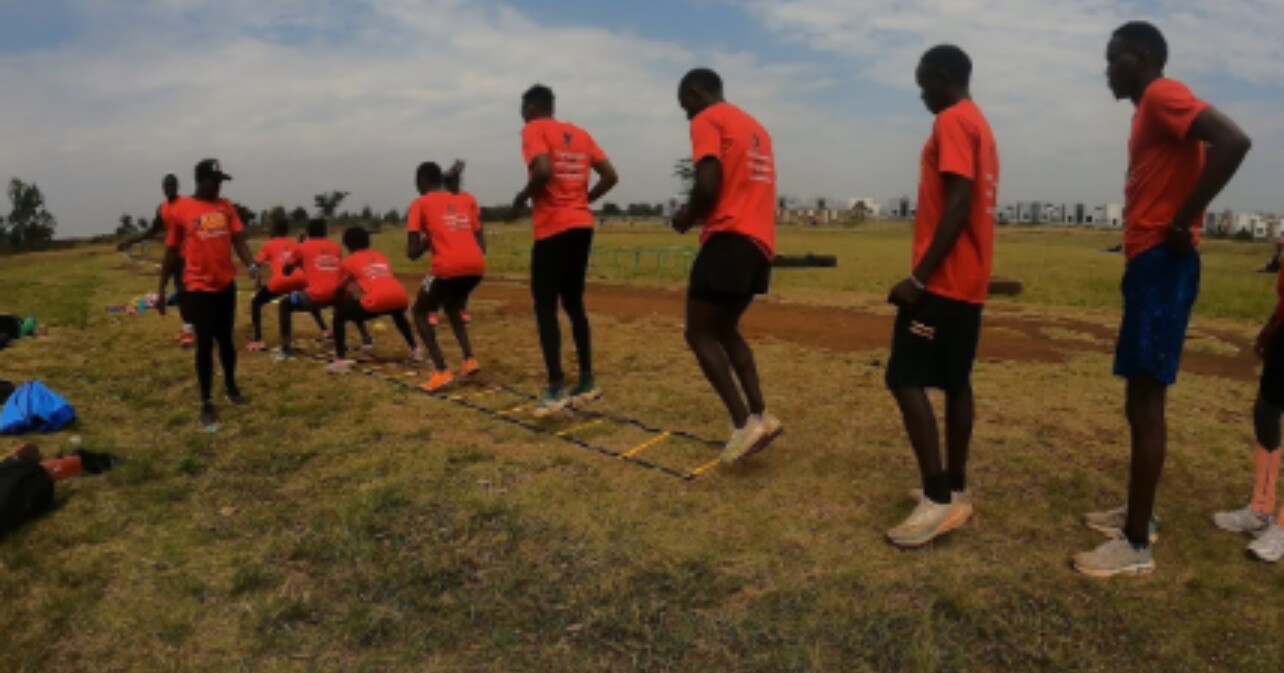
A former sprinter whose career was cut short by a tendon injury in 1998, Migwi recalls the lack of resources in his day. “We had no smart shoes, and sometimes we ran barefoot. There was no science,” he says. His personal best of 11.00 seconds in the 100m left him hungry for more—but instead of walking away, he turned that hunger into a mission: raising sprinters who could go beyond what he achieved.
“This is where we train,” Migwi says, pointing to the uneven murram track. “I focus on athletes between 16 and 20 years old because they have the greatest room to grow. My dream is for them to achieve what I could not.”
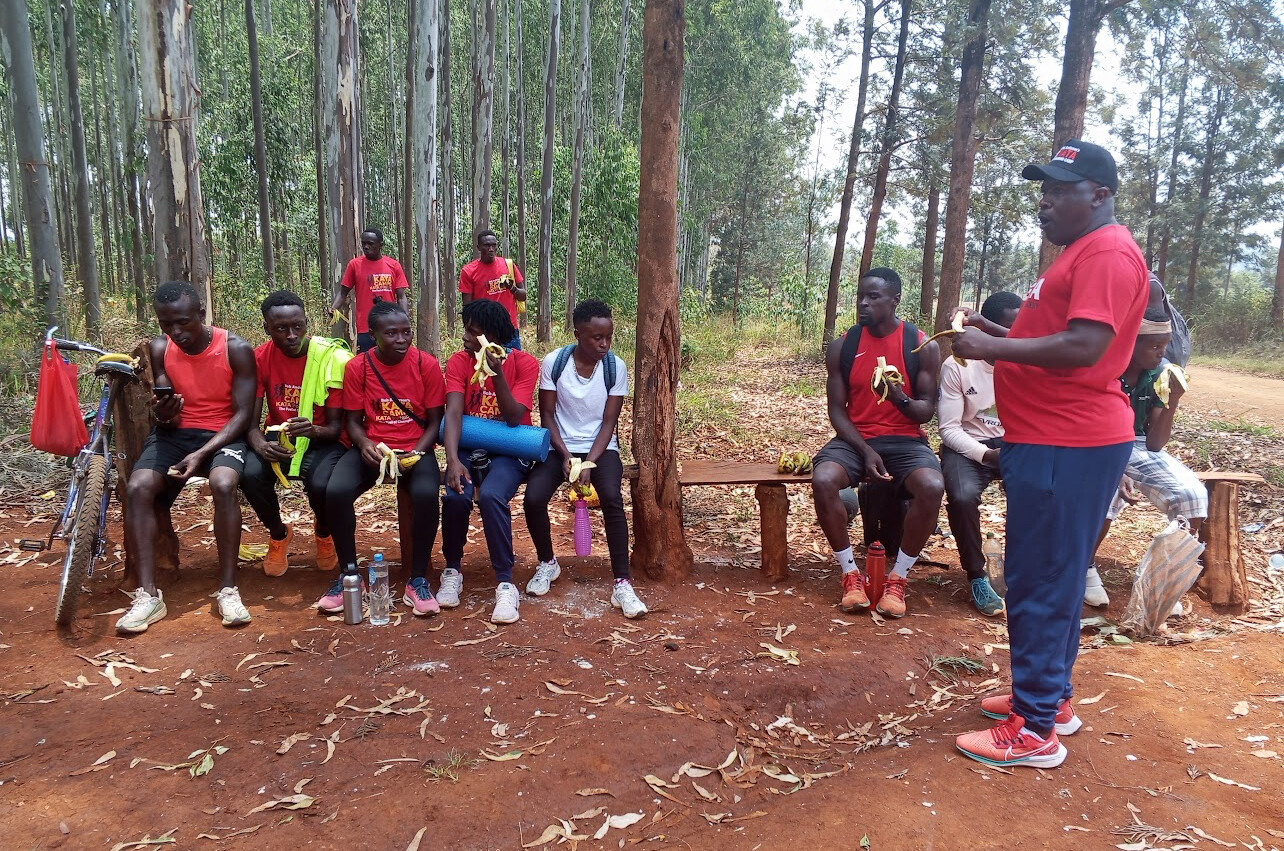
That dream has faced hurdles of its own. Their makeshift equipment includes hurdles fashioned from plastic pipes, an old tractor tire for sled work, and just one shared starting block. Inside the camp’s small kit box lie two massage guns, shared by everyone. When rain turns the dirt track unusable, the group must travel to Nyayo Stadium, Ulinzi, or Kasarani.
Yet, passion outweighs the obstacles. “If Kenya supported sprinters the way it supports distance runners, athletes like Doreen Waka, Clinton Aluvi, Omanyala, and so many youngsters would thrive,” Migwi says. “With proper facilities, Kiambu could become the home of Kenyan sprinting.”
Building Athletes from Scratch
Migwi has already unearthed promising talent. Among those he scouted are Fresha Mwangi, Peris Wairimu Chege, hurdler Gladys Ngure, and his current star pupil, Doreen Waka—Kenya’s fastest female sprinter over 100m in 2025.
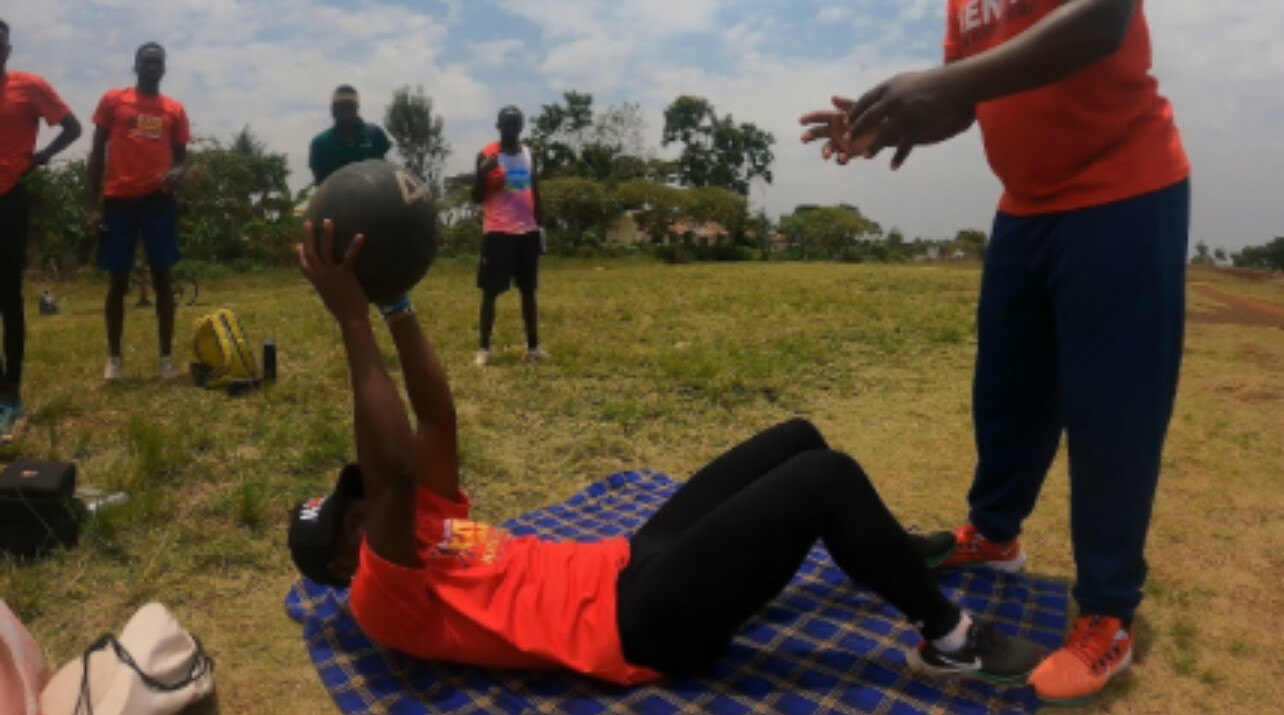
Waka’s determination is unwavering. “Missing the team for the World Championships in Tokyo was disappointing, but I keep my eyes on the Commonwealth Games,” she says. “With the right support, I know I can break 11 seconds.”
Behind the scenes, KATA founder Bob Anderson has played a critical role. Known globally as the American running visionary behind My Best Runs, Anderson covers the camp’s rent, helps provide meals, and funds side projects like potato farming to ensure sustainability. “Rent and daily meals are the biggest setbacks for sprinters,” Migwi explains. “Bob’s support allows the athletes to focus fully on training.”
The impact is clear. Moses Solonka, 20, from the pastoral Maasai community of Kajiado, says: “Without this camp, I’d probably be herding livestock, especially during droughts. Here, we don’t have to worry about food—we can concentrate on training. I see myself representing Kenya soon.”
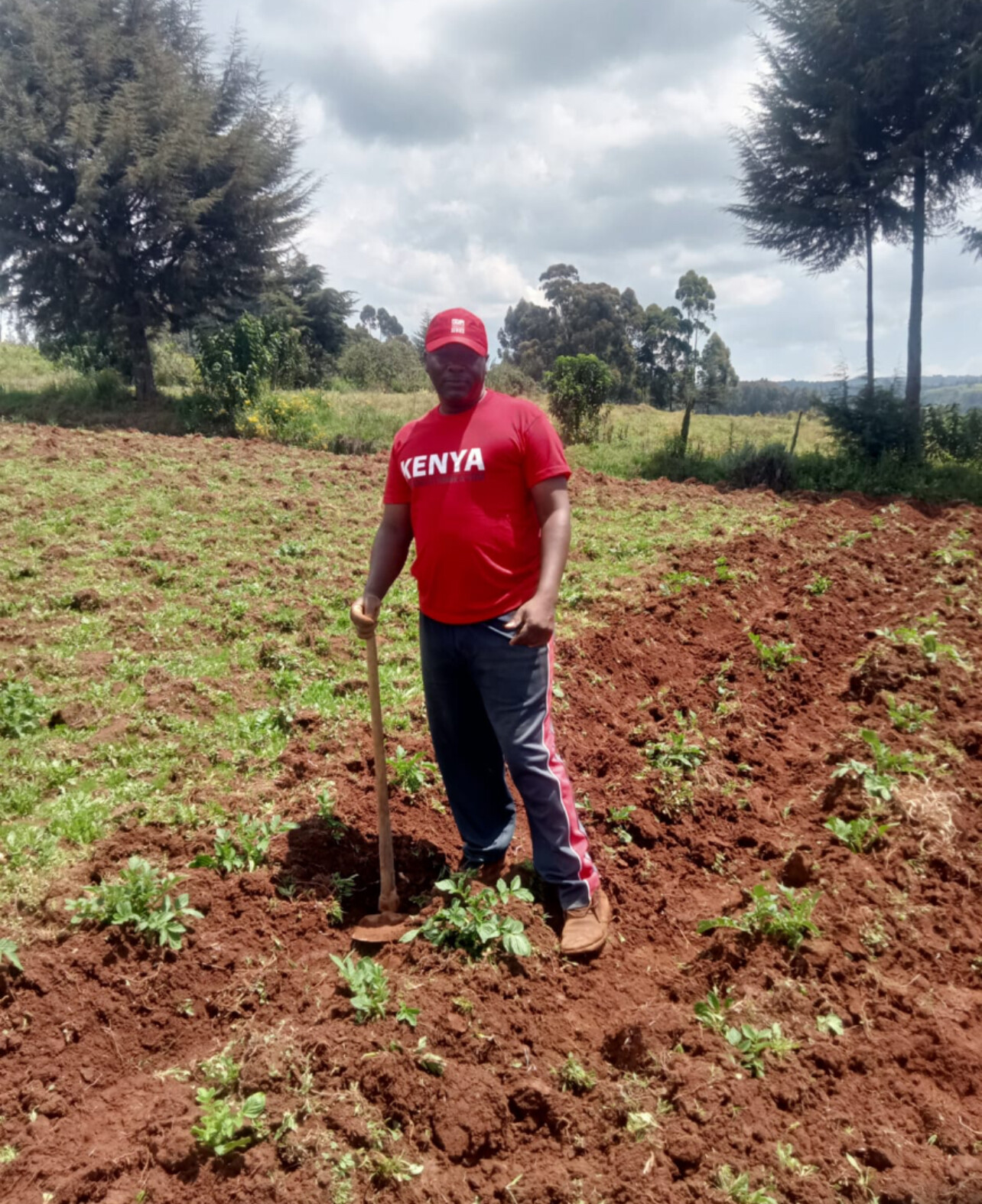
Voices of the Next Generation
The camp is filled with similar stories of transformation.
• Peterson Matu Miano, 20, once devoted to soccer, now says, “With KATA’s system, I’ve improved so much. The discipline and coordination here are amazing. I now want to dedicate myself fully to sprinting.”
• John Kinoo Munguti, 19, discovered his sprinting talent in high school after playing rugby and soccer. “I look up to Zablon Ekwam. My goal is to hit 10.30 in the 100m and make Team Kenya.”
Migwi beams with pride recalling Waka’s appearance at the Kip Keino Classic: “Seeing her on the line with international stars showed me this stage is possible for our athletes.”
A Community Effort
Among the sprinters is Antony Owino, who also serves as an assistant coach. Having endured similar struggles, Owino knows the value of mentorship. “It’s not just about speed. These youngsters need guidance in discipline and mindset,” he says. “We’re shaping athletes both on and off the track.”
The Bigger Picture
Migwi believes Kenya’s sprinting potential has long been overlooked. “We’re celebrated for distance running, but sprinting has the same promise,” he insists. The unfinished Kirigiti Stadium nearby is a constant reminder of what’s lacking. “If county governments completed facilities like this, we’d not only produce champions but also engage more youth positively.”
For now, the KATA Sprint Camp relies on resourcefulness and shared dreams—plastic hurdles, a dusty track, and two massage guns. But Migwi’s vision stretches beyond medals.
“I want to push these youngsters to achieve what I couldn’t,” he says, watching Peterson, John, Moses, and Doreen laugh between sprints. “This is more than training. It’s giving them a future.”
(10/02/2025) ⚡AMPby Robert Kibet
Debela and Jebet Set to Defend Titles at the World’s Only Intercontinental Marathon
Defending champions Dejene Debela of Ethiopia and Ruth Jebet of Bahrain are set to return for the Türkiye İş Bankası Istanbul Marathon on November 2. Both claimed victory last year in windy conditions and will be hoping for calmer weather to chase faster times this year.
Now in its 47th edition, Türkiye’s premier marathon continues to hold World Athletics Gold Labelstatus—an honor it has maintained without interruption since 2012, making it one of the longest-standing Gold Label races worldwide.
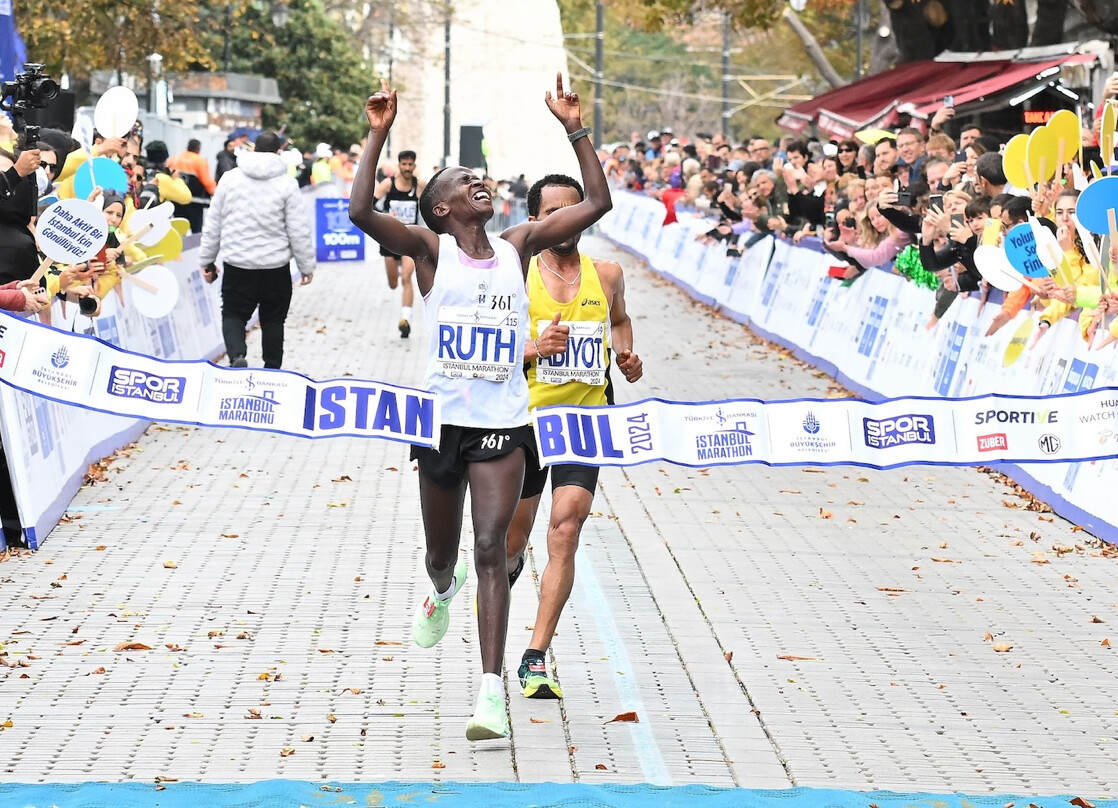
Organizers from Spor Istanbul have already registered 42,000 participants, including shorter-distance races, with around 6,000 runners tackling the full marathon. The unique course begins on the Asian side of Istanbul, crosses the July 15 Martyrs Bridge, and finishes in the historic old city near the Blue Mosque. Registration remains open until October 14 at maraton.istanbul.
“We are delighted to be organizing the Türkiye İş Bankası Istanbul Marathon, the world’s only intercontinental marathon, for the 47th time,” said Race Director Bilge Donuk. “The participation of defending champions clearly demonstrates the prestige and consistency of this race. Istanbul will, as always, offer participants a truly exceptional marathon experience on an international level.”
Men’s Race
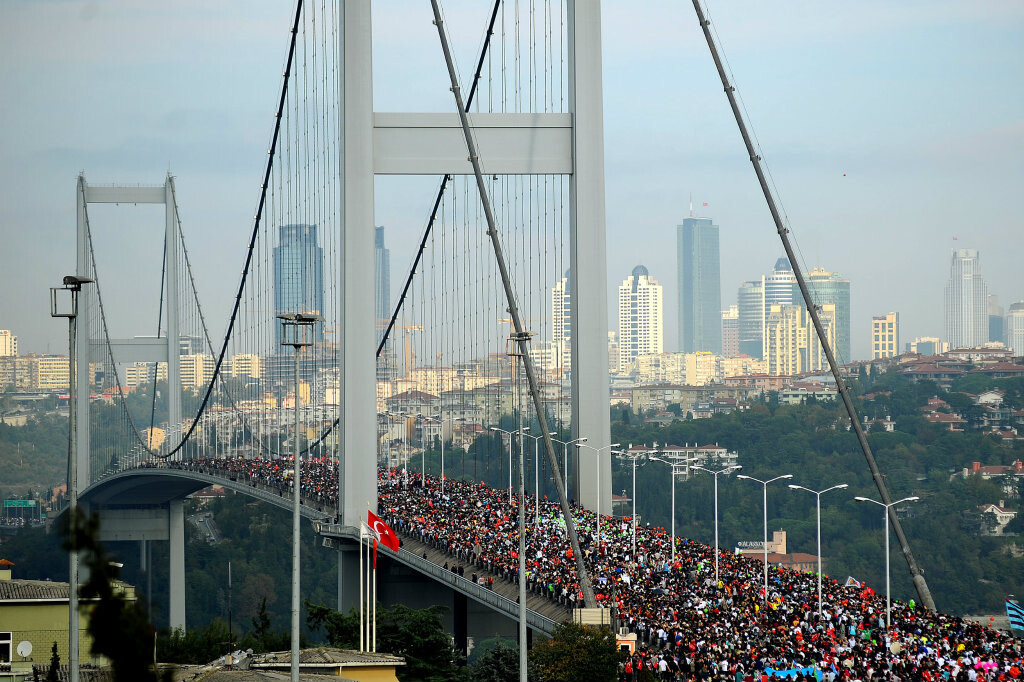
Debela, 30, bounced back from injury last year to win in 2:11:40, the biggest triumph of his career. With a personal best of 2:05:46 from Chicago 2019, he enters as the fastest man on the start list.
His main challengers include:
• Rhonzas Kilimo (Kenya) – PB 2:06:09, runner-up in Seoul 2024.
• Denis Chirchir (Kenya) – PB 2:07:17, winner in Kosice 2024, trained by renowned coach Renato Canova.
• Amanal Petros (Germany) – fresh off a silver medal at the World Championships in Tokyo, and a close training partner of Chirchir.
• Jake Robertson (New Zealand) – PB 2:08:26, returning from injuries but still a dangerous contender.
Women’s Race
Defending champion Ruth Jebet dominated last year with a 2:24:45 win—nearly nine minutes ahead of the field—despite tough winds. The 2016 Olympic steeplechase champion and former world record holder holds a marathon best of 2:23:08 and is targeting sub-2:20 in Istanbul.
Her challengers include:
• Tigst Getnet (Ethiopia) – PB 2:23:17, 5th in Dubai 2023.
• Sofia Assefa (Ethiopia) – PB 2:23:33, Olympic steeplechase silver medalist behind Jebet in 2016, now meeting her rival on the roads for the first time.
With strong returning champions and formidable challengers, Istanbul once again promises a world-class marathon staged in one of the most spectacular settings in global road running.
(10/02/2025) ⚡AMPby Race News Service
N Kolay Istanbul Marathon
At the beginning, the main intention was simply to organise a marathon event. Being a unique city in terms of history and geography, Istanbul deserved a unique marathon. Despite the financial and logistical problems, an initial project was set up for the Eurasia Marathon. In 1978, the officials were informed that a group of German tourists would visit Istanbul the...
more...Ethiopian Asimarech Naga to Race TCS Toronto Waterfront Marathon
Two years ago, Asimarech Naga was a promising Ethiopian steeplechaser. Now, at 26, she’s set to contend for the $25,000 CDN first-place prize at the 2025 TCS Toronto Waterfront Marathon on October 19.
“If it is God’s will, I want to win as I am preparing well for it,” she said. “I know the Toronto Waterfront Marathon is the biggest marathon in Canada and the course is flat. I am so excited to be there for the first time and do something great.”
From Track to the Roads
Nagging injuries from track spikes pushed Naga to pivot in 2023, joining the legendary coach Haji Adillo’s marathon training group. The move quickly paid off: she won the Dublin Marathon in 2:24:13, setting a new course record, and followed up with a 2:24:21 runner-up finish at the Wuxi Marathon in China earlier this year.
Now, she heads to Toronto—a World Athletics Elite Label race—ready to test herself again. “I have so many strong athletes [to train with], and the coaching program is great. It is really helping me,” she said.
Her inspiration dates back to elementary school, crediting a supportive sport teacher and citing Olympic legend Derartu Tulu—the first Black African woman to win Olympic gold (1992 Barcelona, 10,000m)—as her role model.
Coach Haji’s Confidence
Accompanying her to Toronto will be Haji Adillo himself. Known for guiding Olympic and World champions, Haji believes Naga is ready for a breakthrough:
“If everything goes as planned, and with a good pacer, she will run 2:22 or 2:23.”
His training group has featured icons like Tirunesh Dibaba, Kenenisa Bekele, and Lelisa Desisa, and his most cherished coaching memory remains Mare Dibaba’s 2017 World Championships win—Ethiopia’s first women’s marathon world title.
Haji’s Own Path
Before coaching, Haji was a 2:12 marathoner and a classmate of Haile Gebrselassie. Health issues ended his racing career, but his athletes have since won countless medals:
“Too many to count… maybe over a thousand,” he said with a smile.
Rising Star in the Making?
With her sharp progression, proven ability to win big races, and Haji’s belief in her potential, Asimarech Naga arrives in Toronto as one of the most exciting marathon talents to watch.
Could she be the next Ethiopian star to break through on the world stage?
(10/01/2025) ⚡AMPby Paul Gains


